test

This Week at Loughborough | 29 July
General:
Experiences of pregnancy in elite female athletes on the World Class Programme
30 July 2024, 12.30pm-1.30pm, NCSEM (Room 1.39)
This public lecture, delivered by Dr Emma Pullen, will highlight the key findings from research led by Loughborough University in collaboration with UK Sport as part of UK Sport consultation process. The findings documented the experiences of female elite athletes who were considering pregnancy and/or had experienced pregnancy whilst a member of UK Sports high performance programme. The presentation will explore the key issues raised by female athletes and reflect on the implications of the study findings in relation to wider debates around female athlete reproductive health and gender/sex inequities in performance sport culture.
LUSEP Phase 3&4 Public Consultation
31 July 2024, 6pm-9pm, Loughborough University Stadium
This is the second public consultation for the proposed long-term plan for the Loughborough University Science and Enterprise Park (LUSEP) land, a planning application for which will be submitted in autumn 2024. Anyone interested in the proposals is welcome to attend.
Next Generation Cup Final 2024
4 August 2024, 3pm-5pm, Holywell Stadium
The Next Generation Cup is returning this summer as teams from England, India and South Africa come together for an exciting tournament hosted by the Premier League. The competition allows India’s brightest young talents from the Indian Super League the chance to compete with equivalent age-group teams from Premier League Academies and the South African Premier Soccer League.
The fifth edition of the Next Generation Cup will welcome eight Academy teams, including Aston Villa, Crystal Palace, Everton and Tottenham Hotspur, who have been confirmed as the four clubs who will be representing the Premier League. They will be joined by East Bengal FC, Muthoot FC, Punjab FC and Stellenbosch FC. The Final will take place on Sunday 4 August at 3.30pm at Loughborough University Holywell Stadium
Summertime Socials:
Monday Chill Out – Crafts and Board Games
29 July 2024, 6.30pm-8.30pm, Royce Common Room
Come along to Royce Common Room for a chance to “chill out”, where you can expect crafts and board games with the opportunity to catch up with friends or make news ones! No need to book, just pop by to Royce Common Room.
Speaking Club
30 July 2024, 2pm-3pm, WAV011 (Wavy Top Building)
Every Tuesday over the summer period the International Student Experience Team will run a Speaking Club. Come along, practise your English speaking and listening skills with a chance to catch up with friends and meet new ones too. Ask any questions that you might have about life in the UK or just pop by for a general chit-chat and each week we will have a new topic to discuss – no need to book!
Active Wednesday – My Lifestyle: Turn up and play-Badminton
31 July 2024, 6.30pm-8.30pm, Sir David Wallace Sports Hall
The My Lifestyle programme is a FREE and welcoming recreational sport and physical activity offer, that is open to and welcomes everybody of any ability. Come along for a free game of Badminton, get active and make new friends.
Please select the My Lifestyle tile on the Loughborough Sport App home screen to book your place. Booking will open one week before the event. Numbers are limited so book as soon as possible to avoid disappointment.
Summertime Garden Party
2 August 2024, 6pm-8pm, EHB Pavilion
Are you ready for some summer feel good vibes? Join the International Student Experience Team on 2 August at 6pm in the EHB Pavilion (the outside area opposite the EHB building) for a Summertime Garden Party where you can expect, food, games, music and more. We cannot wait to see you there!
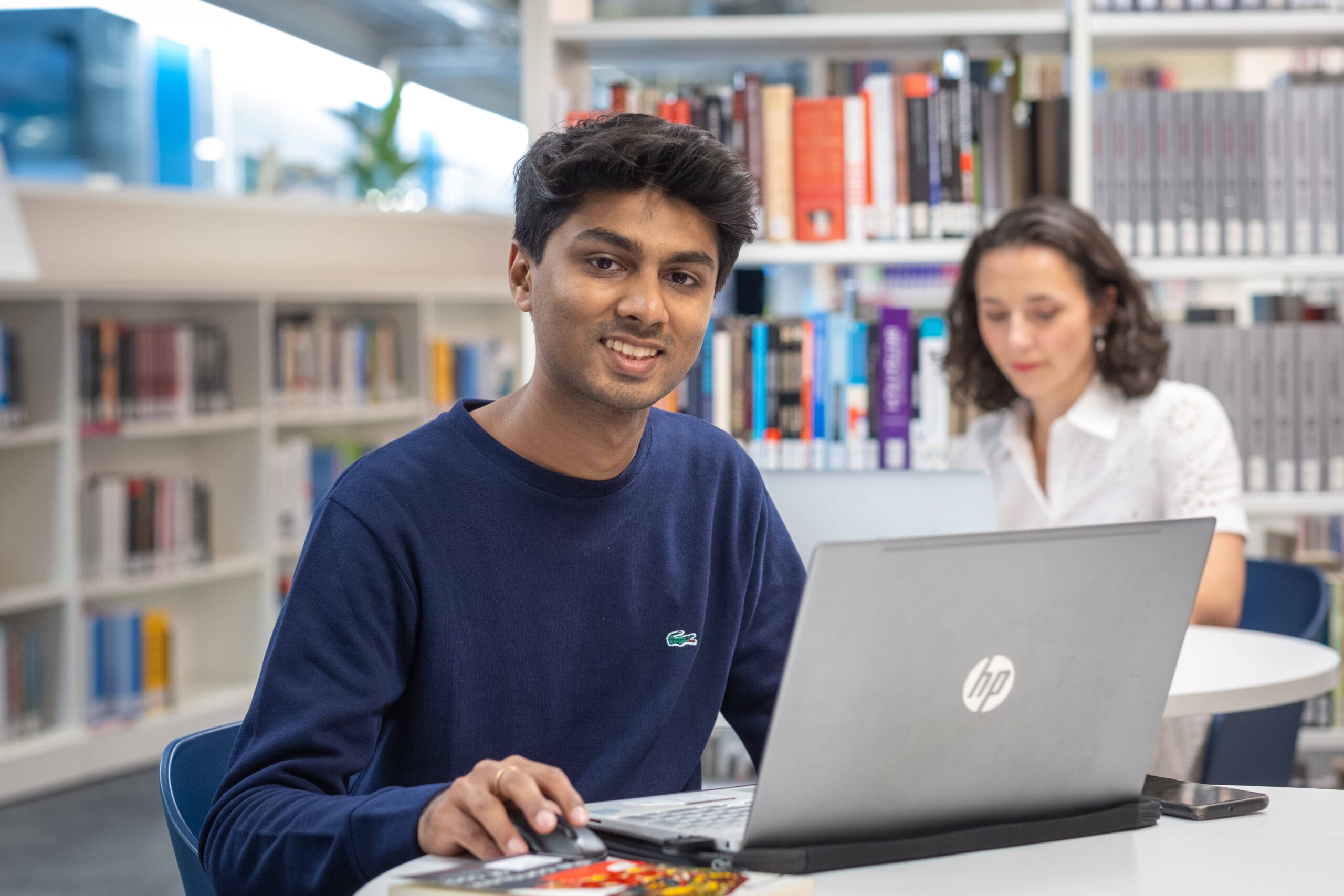
Moving to London as an International Student
Hello! I’m Rahil Shah, hailing from the bustling city of Mumbai, India. I am pursuing an MSc in Digital Creative Media at Loughborough University London, within the Institute of Digital Technologies. My choice of Loughborough was driven by its innovative curriculum, which blends theoretical learning with practical experience, and its unique block learning method. London’s rich media landscape and dynamic culture were an equally compelling factor.
Preparing for the move and first impressions
Preparing for this new chapter was a whirlwind of emotions. My days were filled with researching housing options and attending pre-departure sessions organised by Loughborough’s student ambassadors. Finding accommodation was a significant concern due to the high prices and the challenges of securing a place as an international student. However, with persistence and some luck, I found a cosy place to call home.
Stepping into London felt like walking into a grand, ever-evolving story. The city’s rhythm is fast paced, its weather unpredictable, and its architecture a mesmerising blend of history and modernity. The diversity of cultures here is astounding, making every street a new adventure. London gives you that “main character” feeling, where every moment feels significant.
Studying at Loughborough University London
The academic environment at Loughborough University London is nothing short of inspiring. The campus is always alive with students, and the faculty are approachable and supportive. The modules are crafted to maximise learning, combining coursework, assignments, guest lectures from industry experts, and essential study materials. My typical day involves taking the Here East shuttle from Stratford station, attending lectures, and exploring the vibrant Here East or the serene canal side during breaks.
A standout aspect of my Loughborough experience has been Future Space. Their events, such as Start-up London, Venture Crawl, and career insights sessions, have shaped my professional outlook. Loughborough London offers resources that support academic excellence and prepare students for their careers in practical ways.
Since joining Loughborough, I’ve had the pleasure of meeting people from around the globe. Loughborough Students’ Union (LSU) organised events like board game nights and movie nights have been fantastic for making new friends. Group projects and classes also provided opportunities to connect with fellow students. The diverse cohort at Loughborough has enriched my experience, making every interaction a learning opportunity.
Living in London
Living in London has been a thrilling adventure. Initially, I worried about missing my favourite Mumbai snacks, but I soon discovered that London offers a culinary journey across the globe. Finding accommodation can be challenging, but teaming up with fellow students to rent a flat or using apps like SpareRoom can make it easier. While student accommodations are convenient, they can be pricey and fill up quickly. Despite this, if student accommodations are your choice, I recommend booking or reserving a place early. Additionally, applying for any and all available scholarships is a great way to alleviate financial concerns.
On sunny days, I love grabbing a book from a local library and having a picnic in one of London’s beautiful parks. I highly recommend visiting Kew Gardens and experiencing the electrifying atmosphere of a live football match. Getting accustomed to the public transport system is essential; it’s the lifeblood of the city and incredibly convenient. A student Oyster and railcard can save you a lot on travel.
If you’d like to feel at home or be around a familiar environment, it would be handy to research areas and communities in and around London. Many neighbourhoods have vibrant communities from around the world, making adjusting and feeling at home easier. For instance, places like Southall, known for its South Asian community, or Chinatown, can provide comfort and familiarity. Connecting with these communities can be a great way to ease the transition to a new city.
I’ve faced challenges as an international student however, the warmth and kindness of most people here have been heartening. The career advice sessions and Wellbeing Cafe on Thursdays have been particularly beneficial, providing professional guidance and personal support.
My advice for future students
For future students, I suggest embracing every opportunity. Attend Future Space events and start working on your dissertation early; deadlines can surprise you. Use the one-on-one career advice sessions and the numerous resources available to you. Also, immerse yourself in Loughborough and London’s vibrant life – both have much to offer.
After graduating from Loughborough, I aspire to make a significant mark in the media landscape and eventually open my own production house. The experiences and lessons learned at Loughborough have taught me the importance of perseverance and resilience. Studying at Loughborough University London has been an incredible journey. From the stimulating academic environment to the diverse social life and professional opportunities, my time here has been transformative.
I look forward to the future with excitement and gratitude for the experiences and lessons that have shaped me during my time in London.

Loughborough University London: A Journey of belonging, personal and professional growth
Loughborough University London is an exciting place to be. It’s known for its excellent academics and lively campus. Located in the heart of London, it offers students a mix of
top-notch education and diverse cultural experiences. The university makes sure everyone feels like they belong, which you can see in every part of campus life.
First impressions and settling in
When I first arrived at Loughborough University London, I felt both excited and nervous. Orientation Week was fantastic, giving us a great introduction to the campus, its resources, and the city.
Meeting new people from all over the world showed me how diverse the student body is. While it was a bit challenging to get used to a new city and education system, the support from staff and fellow students helped me settle in quickly. The facilities at Loughborough University London are amazing. The libraries are quiet and well-equipped, perfect for studying. The cafeterias offer a variety of food, catering to different tastes and dietary needs, making sure everyone feels at home.
Living in London as a student is an adventure. There are various accommodation options, from on-campus housing to private rentals. The city’s public transport system is extensive and easy to use, making it simple to get around. Balancing studies and social life is important, and London offers plenty of opportunities for both fun and relaxation.
My academic journey
My academic journey here has been both challenging and rewarding. Choosing courses was easy with the wide range of programs available. The teaching methods are a mix of traditional lectures and innovative approaches, keeping us engaged. The professors are knowledgeable, supportive, and always ready to help. There are plenty of support services, like tutoring and academic advising, to guide us through our studies.
Belonging at Loughborough University London
One of the best things about Loughborough University London is the sense of belonging. The diverse student body means you meet people from all walks of life. There are numerous student societies and clubs where you can find friends with similar interests. The university also has many inclusion initiatives, like cultural festivals and diversity workshops, ensuring everyone feels welcome and valued.
Inclusion and diversity are central to the university’s values. There are many initiatives to support international students, helping them adjust and thrive. Gender equality programs and accessibility services ensure a welcoming environment for all. These efforts create a campus culture that celebrates and values diversity.
Support Systems and Resources
Loughborough University London provides excellent support systems for students. Mental health services are available and confidential, offering help when needed. Academic advisors assist with course choices and career planning. Career support services help with internships and job placements, preparing us for the future. These resources ensure we have a well-rounded and successful university experience.
Extracurricular Activities and Personal Growth
Getting involved in extracurricular activities has been a key part of my growth. There are many volunteering opportunities that allow us to give back to the community. Leadership programs help develop skills for future careers. Social events, from cultural nights to sports tournaments, offer fun and the chance to make lasting memories.
University life isn’t without its challenges. The academic workload can be intense, but the supportive environment helps manage stress. Adjusting to a new culture takes time, especially for international students. Financial management is another important aspect, requiring careful planning. Overcoming these challenges has made me more resilient and prepared for the future.
Listening to other students’ stories at Loughborough University London is inspiring. Many share experiences of personal and academic growth, attributing their success to the supportive and inclusive environment. These testimonials highlight the strong sense of community and belonging that defines the university experience.
Community Engagement and Outreach
Loughborough University London encourages students to engage with the community. There are many projects and partnerships with local organisations that students can get involved in. These activities not only help the community but also enhance our sense of belonging and responsibility. Volunteering provides practical experience and fosters a spirit of service.
Conclusion
Reflecting on my time at Loughborough University London, I am grateful for the experiences and opportunities that have shaped my journey. The university’s focus on belonging and inclusion has created a nurturing environment that supports every student. As I look ahead, I feel confident and prepared, thanks to the foundation built during my time here.
First major international event on sportswashing hosted by the Centre for Communication & Culture at Loughborough University, May 2024
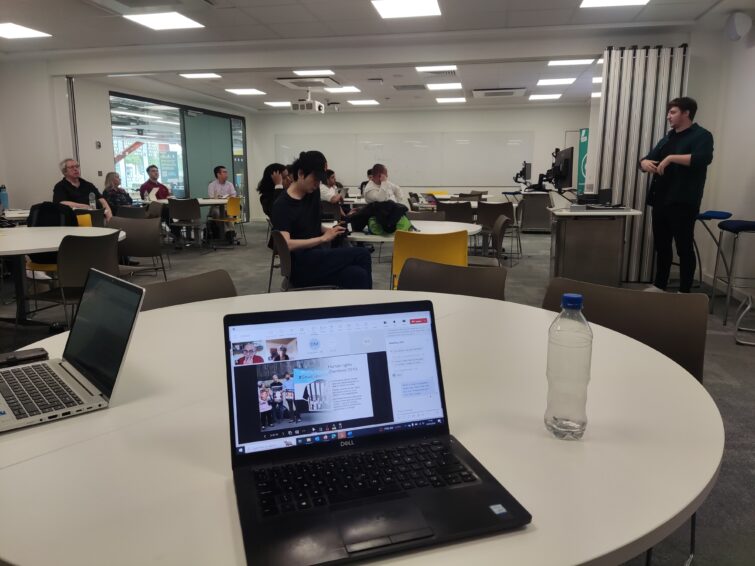
In May 2024, the CRCC hosted an international event on the topic of sportswashing at the Loughborough University London campus. It drew together scholars from a range of disciplines – including communication and media, politics, international relations, politics, marketing, sociology and area studies – and countries, alongside journalists and representatives from activist organisations.
The opening session discussed the rise of the term since 2015 and pointed to the growing significance of sport for both commercial and state organisations. Here, it was noted that sport is not only linked to well-established, and highly valued, forms of community – local, regional, national and trans-national – but is one of the few forms of media content that can still generate large, passionate audiences in an era of media fragmentation.
A series of panels were then held that addressed the following broad issues:
Views of audiences and attendees
While the term sportswashing has generated an awful lot of media and political debate over the last decade, there has been relatively little research into ordinary people’s attitudes towards the practice. In the opening panel, two papers, from Tom Taylor and Owen Evens (both University of Brighton), addressed this lacuna by presenting evidence from interviews with football fans, including those who had attended the 2022 Qatar (football) World Cup.
Interestingly, all those interviewed were aware of the term and many were critical of the practice. However, at the same time they felt relatively helpless to challenge any developments and ethical concerns were generally overridden by the excitement of following the tournament once the football got underway. Indeed, these views were supported by Beth Dann’s (University of Sheffield) paper, which noted how media reports of the same event followed a similar pattern, with initial discussions of human rights issues, largely supplanted by coverage of the matches and participants as the tournament progressed.
Another key insight came from ethnographic data collected at the tournament itself, which focused on more positive responses from some attendees. These people noted that while they had reservations about the host country’s treatment of workers, women and minorities, they enjoyed their engagements with other fans, felt safe travelling in the country and welcomed the range of facilities available to them.
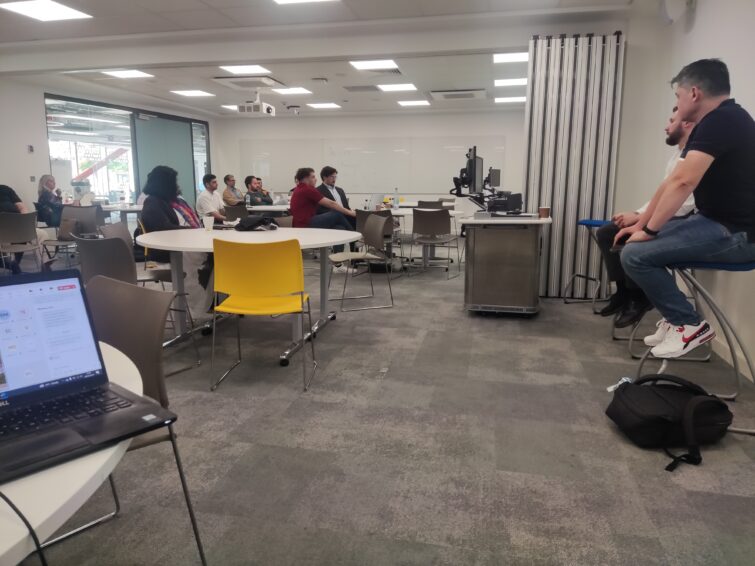
Neo-orientalism and non-Western views
A second key issue concerned the extent to which the literature on sportswashing often replicates forms of (neo)Orientalism. That is, critics of the practice almost always come from the west and target their criticisms at non-Western actors. This doesn’t mean falling into a form of moral relativism but should involve acknowledging a number of important factors. First, that Westen-based organisations, notably sporting authorities and commercial sponsors, are often involved in making decisions about who hosts sporting events. This was a point made by Adam Talbot (University of the West of Scotland) in his paper on the ethics of ‘sportswashing’.
Second, Western states often support such decisions and, just as importantly, have major relationships with these states outside of sport. In other words, it seems harsh holding sport to different ‘rules’ to other major industries. Third, we cannot assume that non-Western states hosting of sporting events is always designed to appeal to, or placate, Western publics. In relation to this final issue, two contrasting case studies were presented. The first, presented by Itamar Dubinsky (Ben-Gurion University of the Negev, Israel & Leonard Davis Institute for International Relations, The Hebrew University of Jerusalem), focused on Rwanda and demonstrated the extent to which the countries involvement in sport is designed to increase its visibility both in Africa and beyond and engage high profile actors, both within sport and politics. The second, from Vitaly Kazakov (Aarhus University), offered a very contrasting view by focusing on Russia’s hosting of the 2014 Winter Olympics and 2018 (football) world cup. In these cases, it was argued that hosting these events was primarily designed to engage audiences in Russia and the former USSR, demonstrating the country’s economic and political power and possibly acting as a precursor to the subsequent invasion of, first, Crimea and, then, Ukraine.
Longer-term perspectives
The third set of arguments called for the importance of adopting both longer-term and broader perspectives when trying to make sense of sportswashing. In the first place, the use of sports by states has a long history and should not only be seen as the preserve of men’s sport. Indeed, while attempts to ‘sportswash’ in relation to women’s sport was most noticeably highlighted in relation to the 2023 (football) world cup, Jean Williams’ paper noted that women’s football has long been used by both states and the sport’s authorities as a tool to pursue both economic and reputation management objectives.
In a similar vein, the chief football writer of the Independent newspaper, Miguel Delaney, provided an illuminating overview of the changes that have transformed football in Britain in the past four decades. In particular, he noted the failure of authorities to protect the community-based foundations of the sport and subsequently their inability to manage what the sport has become after being targeted by both commercial enterprises and subsequently states.
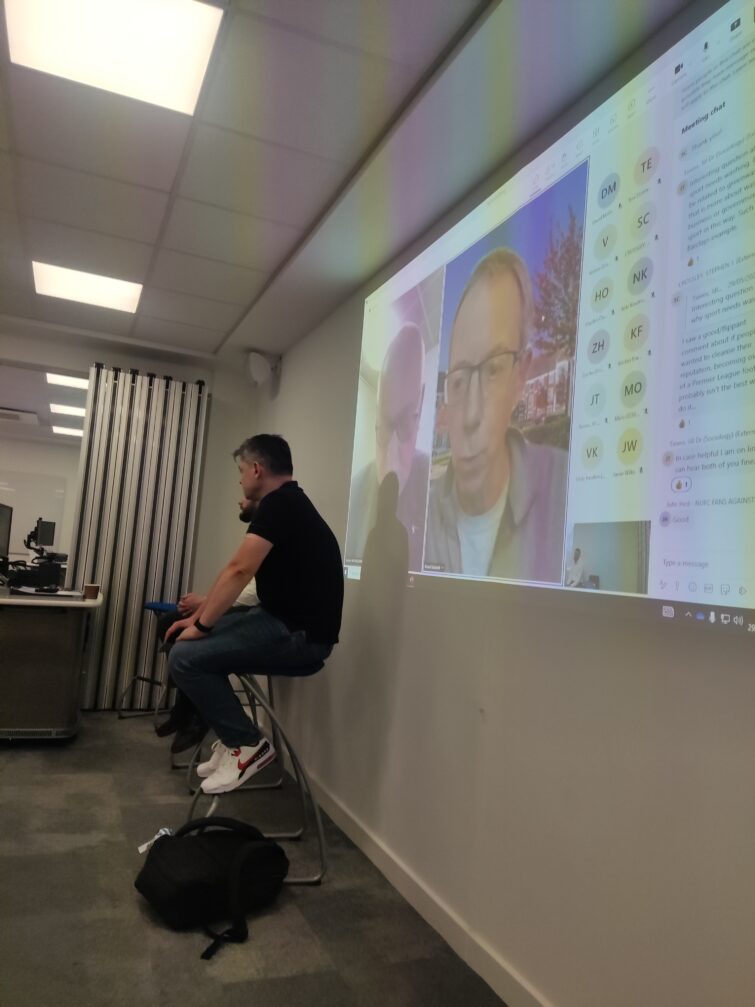
Resistance is (not) futile
Notwithstanding the attempted co-optation of many elite sports by powerful interests, two participants on the closing round-table pointed to the continuing importance of grassroots and activist organisations in challenging these shifts.
John Hird of the Newcastle United Fans Against Sportswashing collective talked passionately about the range of bottom-up activities (protests, talks, publicity stunts, discussion groups) that have taken place and how the group continues to try and hold those in the city to account. He also noted the importance of building networks both within the UK, where there is a growing dis-satisfaction with how sports are being governed, and beyond.
Finally, Alex Carlen of the activist group FairSquare provided a thoughtful and engaging overview of his organisation’s activities and ended the workshop on a more hopeful note. He argued that, for all its flaws, the debate around sportswashing has focused much more attention on the activities of states in relation to sport and, in the process, made their rights violations, and hypocrisy, more visible.
For more information about the event or plans to produce an edited collection on the topic, please contact Dr Michael Skey (m.skey@lboro.ac.uk).
This Week at Loughborough | 22 July
General:
IAS Seminar: Triboelectric Nanogenerator for Self-powered Sensing
24 July 2024, 12pm-1pm, International House/Zoom
Institute of Advanced Studies (IAS) Visiting Fellow Professor Zhen Wen will deliver a seminar on their research.
Tactile sensors have attracted much attention for their potential applications in health monitoring, wearable devices, electronic skin and smart robots, etc. A new generation of self-powered tactile sensor based on triboelectric nanogenerator has been developed in terms of its incomparable advantages in power consumption and potential performance.
In this talk, the key advancements in materials, structures and applications of self-powered triboelectric pressure sensors will be systematically introduced. Then, the theoretical basis, impact mechanism and the approaches to optimise the pressure sensing performance will be comprehensively analysed. Afterwards, Professor Zhen Wen will summarize the typical applications of triboelectric pressure sensors in different pressure ranges and working frequencies. Finally, the future perspectives of self-powered triboelectric tactile sensor and self-powered microsystem will also be discussed.
Universities under fire: How can UK HE change the narrative and demonstrate its undeniable impact?
26 July 2024, 9.30am-10.30am, Online
Join our panel of experts for this live event as we debate the perceptions of our sector, and argue that we must do a better job of fighting for it.
Our panel will discuss rapidly changing government policies, funding and value for money, and internationalisation. The prevailing narratives which have damaged the sector to a point where universities are making difficult decisions and, in some cases, fighting to survive. A new government marks an opportunity to change the narrative and push the sector further up the agenda. As a collective we have not always been good at demonstrating what we offer. This session will look at how we work together to do better and build back understanding of why universities exist, and must continue to exist.
The panel of experts includes:
– Phil Baty (Chair), Chief Global Affairs Officer for Times Higher Education
– Vivienne Stern MBE, Chief Executive of Universities UK
– Professor Nick Jennings, Vice Chancellor and President of Loughborough University
– Professor Lisa Roberts, Vice Chancellor and Chief Executive of University of Exeter
– Professor Nishan Canagarajah, President and Vice Chancellor of University of Leicester
Atmospheric Forces Artist Residency: Drop-in session
26 July 2024, 10am-12pm, Martin Hall Exhibition Space
Meet artists Sheila Ghelani and Sue Palmer during their residency at Martin Hall Gallery (23-26 July) and hear about their work in progress.
As part of Radar’s Visiting Artists 2024 series, Sheila Ghelani and Sue Palmer are working on a piece titled ‘Atmospheric Forces’. The work they are developing will be a performance unfolding around a long table with materials, objects, sound, film, and spoken text, incorporating perspectives from scientists, historians, and more. It builds on their previous piece, ‘Common Salt’, and explores themes of colonialism and human-nature relationships.
The final performance work will be presented in Loughborough this autumn.
Summertime Socials:
Monday Chill Out – Crafts and Board Games
22 July 2024, 6.30pm-8.30pm, Royce Common Room
Come along to Royce Common Room for a chance to “chill out” where you can expect crafts and board games with the opportunity to catch up with friends or make news ones!
No need to book, just pop by to Royce Common Room.
Speaking Club
23 July 2024, 2pm-3pm, LDS018 (Design School)
Every Tuesday over the summer period the International Student Experience Team will run a Speaking Club. Come along, practise your English speaking and listening skills with a chance to catch up with friends and meet new ones too. Ask any questions that you might have about life in the UK or just pop by for a general chit-chat and each week we will have a new topic to discuss – no need to book!
Active Wednesday – My Lifestyle: Turn up and Play – Netball
24 July 2024, 6.30pm-8.30pm, Netball Centre (Zone 1)
The My Lifestyle programme is a FREE and welcoming recreational sport and physical activity offer, that is open to and welcomes everybody of any ability. Come along for a free game of Netball, get active and make new friends.
Please select the My Lifestyle tile on the Loughborough Sport App home screen to book your place. Booking will open one week before the event. Numbers are limited so book as soon as possible to avoid disappointment.
Summertime Lunch
25 July 2024, 12pm-2pm, Royce Common Room
The International Student Experience Team is hosting an International Students Day-time Social at Royce Common Room where you can expect a free lunch, board games and the opportunity to catch up with friends or make new ones!
Places will be limited so we advise you to book early to avoid disappointment!
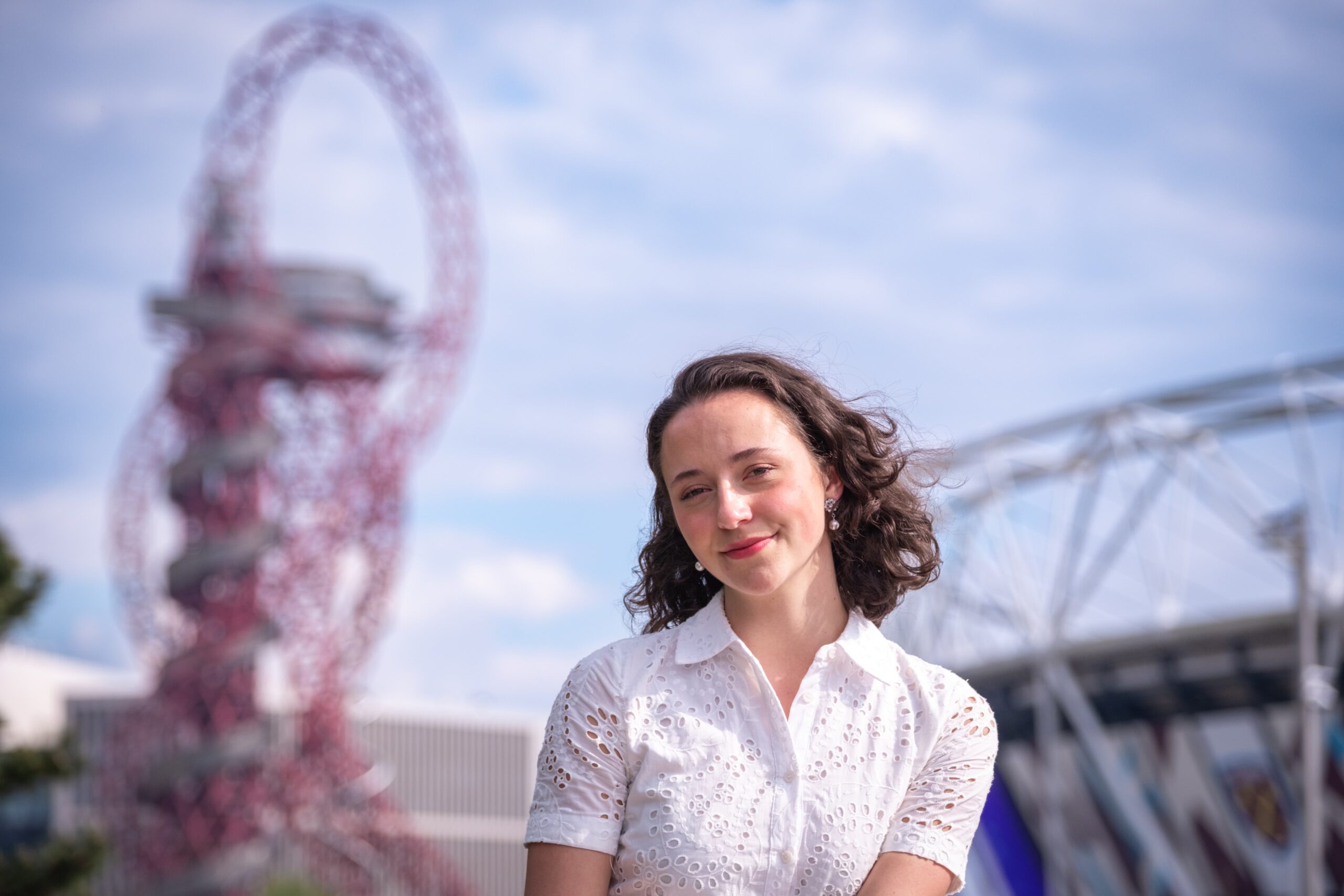
Embracing Sport at Loughborough London
With its own Institute for Sport Business-related studies, and its location in the heart of the Olympic Park, it comes as no surprise that the students of the London campus value physical activities and always ask for sports events. And that is exactly where the Sports committee and the Sports Student Ambassador come in.
As the Sports Student Ambassador at Loughborough University’s London campus, I am proud to work alongside the Sports Committee to foster a vibrant and inclusive sports culture.
Fostering active engagement
To meet this enthusiasm for sports, our mission is to understand the diverse sport preferences of our student body and organise at least one event per month, spotlighting a different sport each time. Events are open to individuals at all skill levels and aims at motivating students to engage in a sport they are not familiar with.
Events highlights
Below are some of the successful events we’ve hosted in the past few months:
- A Futsal tournament at the Copper Box Arena: This event showcased the fast-paced, exciting game of futsal, drawing significant participation and enthusiasm from our students.
- A Sports Quiz Night: A fun and interactive evening that tested students’ knowledge on various sports topics, fostering both competitive spirit and camaraderie.
- A Table Tennis Competition: A highly engaging event that saw students compete in singles and doubles matches, highlighting the popularity of this sport on campus.
- An International Sports Fair: This event celebrated the diversity of sports from around the world, offering students the chance to try new activities and learn about different sporting cultures.
- A Basketball and networking tournament in collaboration with the careers team, Future Space, at the Copper Box Arena: This special collaboration was a combination of two things: basketball & networking. It provided a unique blend of athletic competition and relationship building. The court served as a venue for making connections and fostering teamwork, with students enjoying the opportunity to engage in friendly competition while meeting new people.
Join our sports community
As you can see, there are not only events that require movement. Sport does not always mean that you need to beat your personal bests. Sometimes it is nice to just move your body and get to know new people. I highly encourage students to sign up for our events, especially if we offer a sport they are not too familiar with.
It is incredible what you can learn about yourself and others in a sport team setting, and it will help you broaden your horizons. One of the greatest aspects of campus life is openness to feedback and organising something different. We are always open to new ideas from students to ensure that our events align with their interests.
Here’s to many more games, friendships, and unforgettable moments on and off the field!
Celebrating South Asian Heritage Month (18 July - 17 August)
What is South Asian Heritage Month?
South Asian Heritage Month aims to amplify and celebrate British South Asian heritage and history across the UK through education, arts, culture and commemoration. The theme for 2024 is ‘Free to be Me’ which encourages us to embrace who we are, sharing our similarities and honouring our differences.
South Asia is made up of eight countries: Afghanistan; Bangladesh; Bhutan; India; The Maldives; Nepal; Pakistan and Sri Lanka. As you can imagine, South Asian cultures are hugely diverse and there is a wealth of histories, religions, languages, music, dance and food to explore.
We can see influences from South Asia all over the UK. In food – traditional curries adapted for a British palate gave us one of the nation’s favourite dishes, the Chicken Tikka Masala (thought to be based on a Bangladeshi/North Indian dish although the exact origin is hotly debated!). In language – numerous words in modern English have their origins in Sanskrit. Did you know the word shampoo derives from Hindi? In fashion – the paisley print originated in Kashmir, India in the 11th century and was brought to Europe during trade with European colonisers. It got its modern name in the 19th century from the Scottish town which became the leading manufacturer of fashionable paisley shawls. People of South Asian heritage make up a significant part of the British population – around 4.5 million. That’s around 1 in every 14 people! British South Asians you might have heard of include Mawaan Rizwan, writer of Channel 4’s Sex Education and Taskmaster contestant; Sculptor Sir Anish Kapoor who designed the Orbit sculpture for the London Olympic Park, just next to our London Campus; and Nadiya Hussain, Great British Bake-Off winner, author, and TV chef.
In the UK people from South Asian backgrounds still face racism and discrimination in many forms. One of these is underrepresentation in certain areas. Notably in football, only 22 out of approximately 3,700 male professional players have South Asian backgrounds. This Sky Sports report explores the underlying stereotypes at the heart of the issue. There is so much more to explore, for instance acknowledging the role and impact of British and European colonialism which brought many South Asians to the UK and the associated intergenerational trauma, biases and cultural stereotypes.
Through this year’s theme ‘Free to be Me’, South Asian Heritage Month aims to celebrate the diverse experiences of being of South Asian heritage, provide a platform to highlight voices and explore the diverse ways we honour our roots and individuality
Get involved
There are lots of ways to learn more and get involved with South Asian History Month:
- Find toolkits and resources on southasianheritage.org.uk
- Come to an on-campus event:
– How to be an Ally for People with South Asian Heritage (6 August)
– Book Club: Fasting, Feasting by Anita Desai (21 August)
- Find other events in your local area
- Check out the Library reading lists for further reading and resources
- Read and share stories with the South Asian Heritage Trust
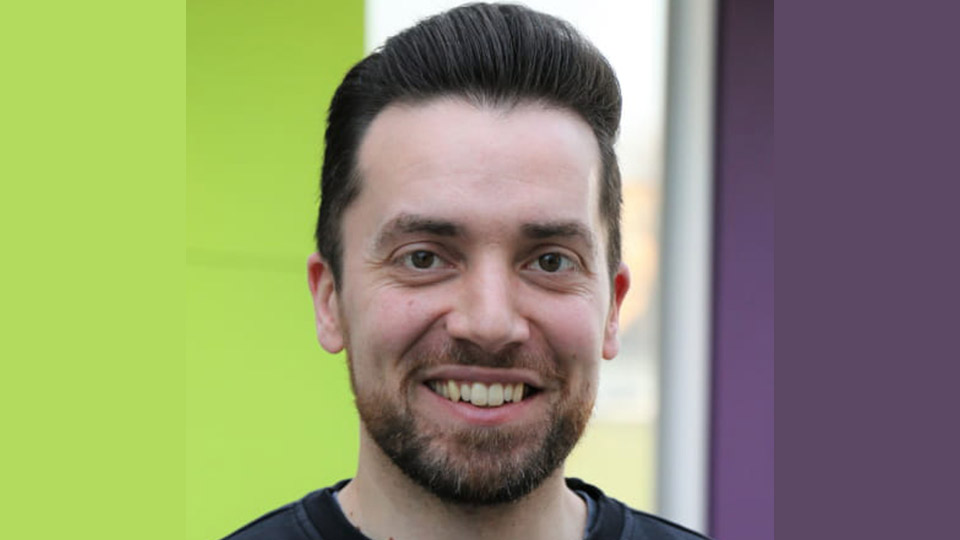
Five minutes with: David Maidment
What’s your job title and how long have you worked at Loughborough?
I’m a Senior Lecturer in Psychology and I’ve been here nearly five years I think!
Tell us what a typical day in your job looks like?
I normally try to get up early and go to the gym at 6.30am. After snoozing my alarm multiple times I get up and walk down to Powerbase as I live close to campus. When I get home I’ll have breakfast and respond to some emails before heading to my office.
My day is taken up with a mixture of in-person and online meetings about different research projects I am working on, as well as meeting with project students and Doctoral Researchers I supervise. One of my favourite aspects of my role is that I get to meet with lots of enthusiastic students. Some days I will also need to prepare and deliver lectures, which I particularly enjoy.
I try to get back home for around 5.30pm so I can have dinner with my family. I’m also the Butler Court Warden so after I’ve put my daughter to bed I might have a bit of work-related stuff to do for that. I’ll then take my dog, Twigs, on a walk to destress before bed.
What’s your favourite project you’ve worked on?
This is a hard one as most projects, especially those that are research-based, are my favourite! I am lucky that I have a good amount of autonomy to pursue my passion – to understand how we can improve the quality of life of adults living with long-term conditions and disabilities.
What is your proudest moment at Loughborough?
Supporting my first Doctoral Researcher as a primary supervisor to successful completion. When I completed my PhD, I swore I would never put anyone through such an ordeal! However, I am currently supervising several Doctoral Researchers and watching them grow and do amazing things makes me immensely proud.
Tell us something you do outside of work that we might not know about?
I have four children that range in age from 4 years to 16 years. So you might see me on a Sunday climbing into the pool (rather unenthusiastically) with my youngest for her swimming lesson, which usually involves having water poured over my head with a pink watering can.
What is your favourite quote?
Success is not final, failure is not fatal: it is the courage to continue that counts.
If you would like to feature in ‘5 Minutes With’, or you work with someone who you think would be great to include, please email Sadie Gration at S.Gration@lboro.ac.uk.
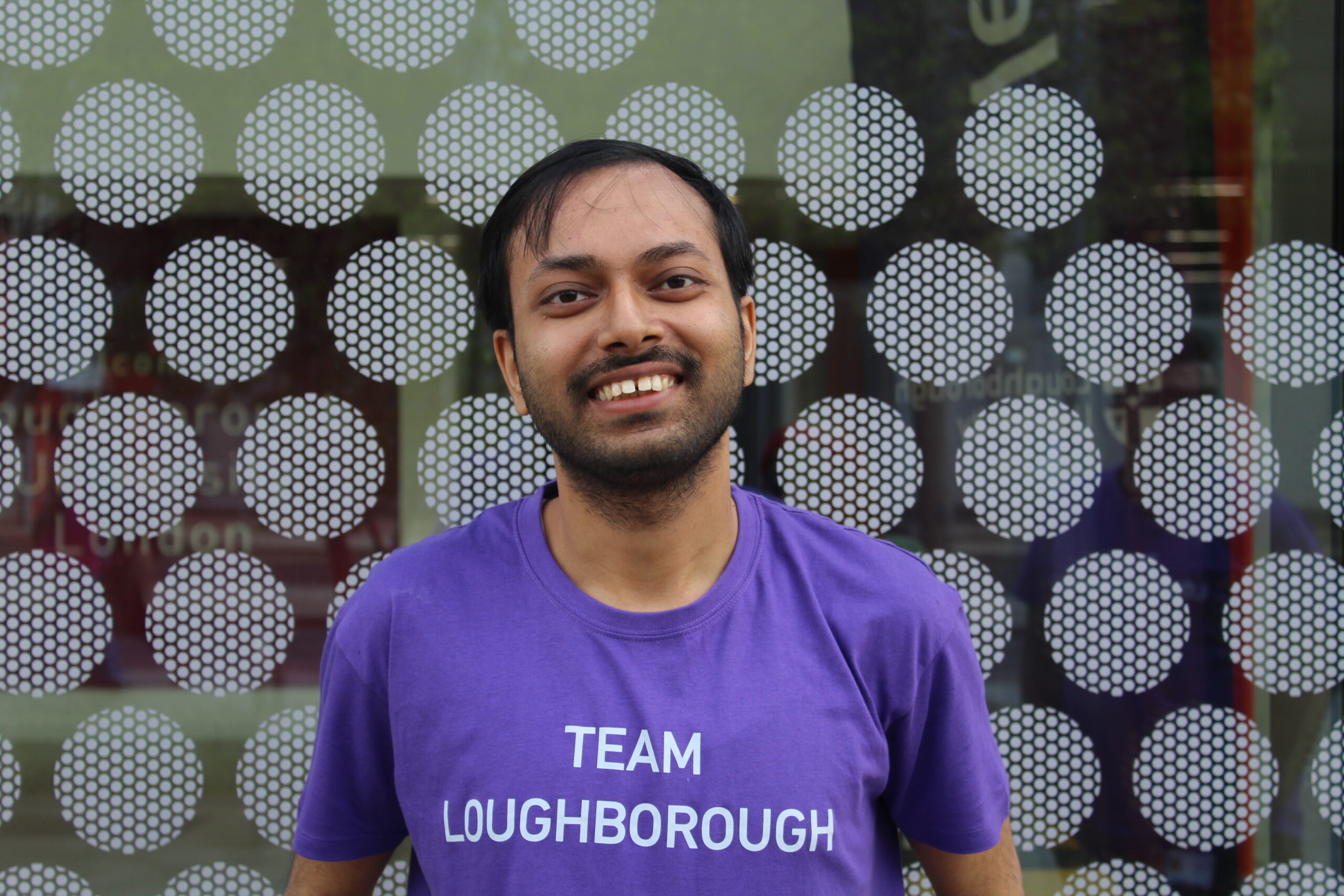
Life as a student Ambassador at Loughborough University London
As a Student Ambassador and international student at Loughborough University London, I get the opportunity to experience the vibrant and dynamic campus life in a unique way. Each day brings new challenges, opportunities and adventures, making every shift distinctly different from the last. Join me as I take you through a day in the life of a Student Ambassador, where no two shifts are ever the same.
8 AM -The morning hustle
My day starts early with a quick breakfast and a cup of tea. As a Student Ambassador, it’s essential to stay energised and ready for anything. I wear my purple student ambassador t-shirt to work for my shifts, which helps you stand out when you are on campus.
Today, my schedule includes a mix of focus group discussions, campus tours, a student panel, and some event management duties. It’s the variety that makes this role so exciting!
9 AM – Attending a focus group discussion
One of the things that stands out about Loughborough London is that it truly cares about its students and strives to provide them the best experience while they are at university. Getting feedback is crucial to improving the services available and the London campus does that by organising student focus groups. Today my focus group consists of my peers from the Student Ambassadors programme. We are quizzed on a variety of issues ranging from accommodation, communications from the university through to academic study workloads, therefore covering all aspects of student life.
Sometimes we are involved in faculty recruitment, where potential candidates provide a 25-minute lecture, and we are asked for feedback. The University actively seeks student feedback in every process because it sees its students integral to its success.
12 PM – Lunch Break
After a busy morning, it’s time for a well-deserved break. Because I like to cook, I usually bring lunch, which I had packed last night, and reheat it in the microwave ovens provided in the canteen. Speaking of the canteen, it has a good range of options, ranging from sushi, sandwiches, and wraps. One can also grab something from the Tesco nearby or Westfield Mall in case one has an extended break. This is a great time for me to relax, recharge, and catch up on any university work or social media updates.
I also take this time to respond to messages from prospective students who have questions about their application process on The Ambassador Platform (TAP), an online portal to connect with prospective students. Most messages on the platform are from prospective international students and answering them gives me immense satisfaction considering I was in their shoes not too far back.
1:30 PM to 3:30 PM – Campus Tours
Leading campus tours is one of my favourite parts of being a Student Ambassador. The tours booked through the website, free to attend and allow prospective students to get a glimpse of life at Loughborough London. I get to provide tours to various groups like undergraduate students, education counsellors from different countries and exchange students.
Each group asks a different set of questions pertaining to academics, campus life, and extracurricular activities. As we walk through the building and Here East, I share stories about my own experiences, pointing out key landmarks, nearby businesses, and popular hangout spots. The tour ends with a Q&A session, where I provide honest answers and personal insights.
5 PM – Future Space Event
As Loughborough University London is exclusively a master’s and PhD focused campus, it possesses an excellent careers team called Future Space. They organise networking events with industry, which is often accompanied by pizza at the end. As a Student Ambassador on this shift, my role is to help with various tasks related to event management, such as putting up event banners, registering attendees and ensuring sufficient seating. I also get the chance to speak to guests and experts, and being a Campus Ambassador helps to break the ice and initiate a conversation with them.
8 PM – Reflect and Recharge
As the day comes to an end, I take a moment to reflect on the day’s events. Being a Campus Ambassador is demanding yet an incredibly rewarding role. Each day is different, filled with new faces, stories, and experiences. It’s a constant reminder of why I chose this university and why I love sharing it with others.
Every shift as a Campus Ambassador is an opportunity to make a difference, one tour, one conversation, and one event at a time. If you ever see me on campus, don’t hesitate to say hi – I’m always happy to share my passion for our university with you!
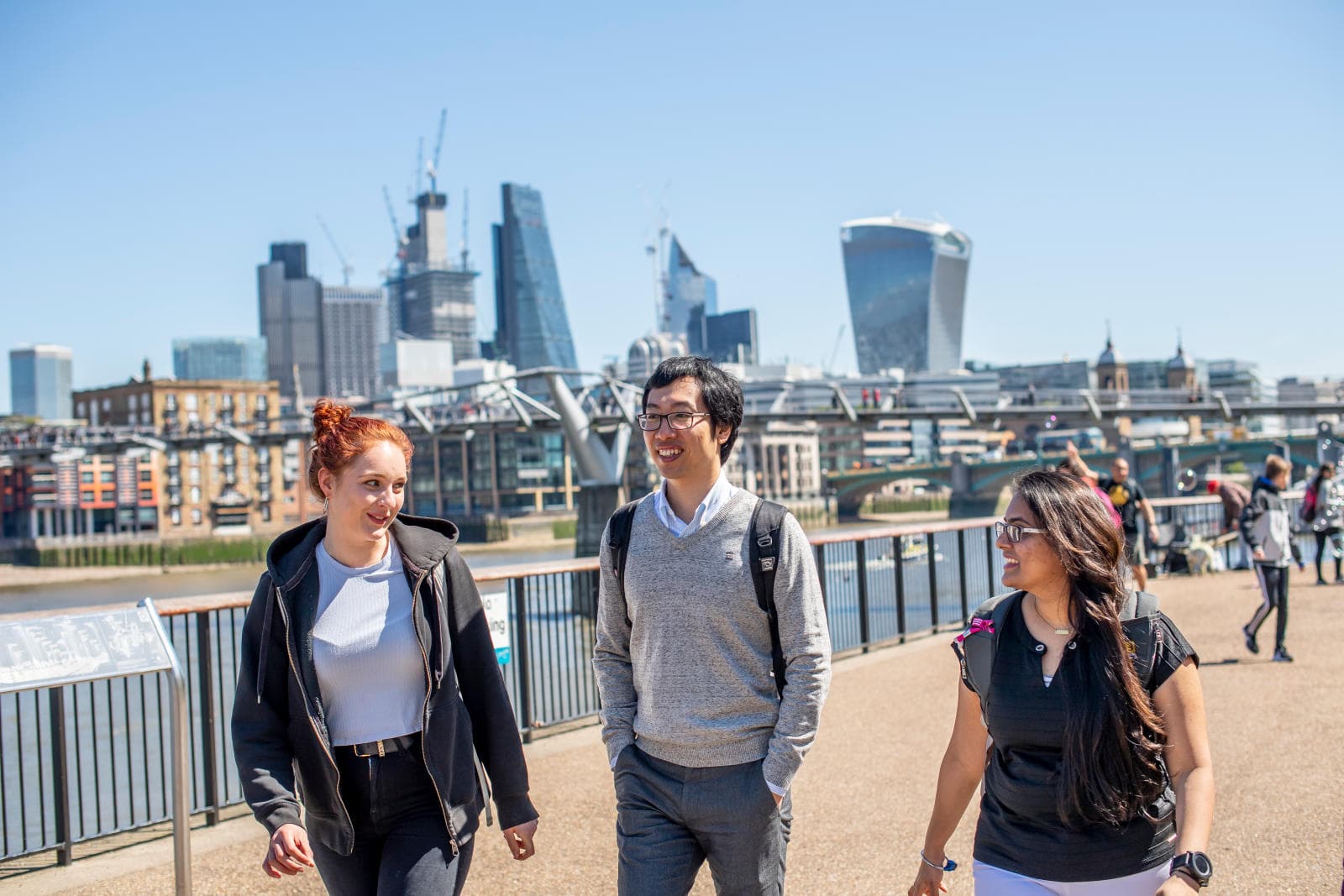
Budgeting in London as a Student!
I joined Loughborough University in October 2023 and am writing this blog to provide an overview of how you could manage your finances while studying in London. I am sharing this from my own experiences and stories from others as well. Go ahead, and give it a read, it might help you adjust to living in London.
The basics
Before we dive into the nitty-gritty of budgeting, let’s talk about the basics. When applying for a student visa, the UK government requires proof that you can support yourself financially. For studying in London, the minimum amount recommended is £1,334 per month for up to nine months, which totals £12,006 for a full academic year. This amount is intended to cover living costs, not tuition fees.
Finding accommodation
Your biggest expense will likely be accommodation. Options include student accommodation, private rental accommodation, and homestays like AirBnb. Student accommodation can be expensive, but it is certainly stress-free as the amount paid will be inclusive of your bills and you get the additional maintenance support from the property management.
Private rentals will require some amount of proactive planning and it might be harder to visit the room in the case of international students. Spareroom has great options for private rentals. Rent can vary significantly but expect to pay between £600 to £1,200 per month, depending on the location and type of housing. If you’re renting privately, you’ll need to account for utilities (electricity, water, gas) and internet. Utilities can cost approximately £50-£100 per month, while internet services are around £20-£30 per month. Again, utilities will vary depending on the type of agreement you have with the landlord and your flatmates. A tip here – save on resources as it helps to save money and the planet.
Travelling around London
London is well-connected by public transport. The Tube, buses, and trains will be your go-to modes of travel. An Oyster card or contactless payment option offers discounted fares for students, and a monthly or annual Travelcard provides unlimited travel within certain zones. Budget around £80 – £100 per month for transport, a little more if you tend go around the city a lot.
Budgeting for food, entertainment and study
Cooking at home can save you a lot of money. Budget supermarkets like Lidl, Aldi, and Tesco can become the go-to options. Weekly grocery shopping can cost around £60 – £80, while eating out should be reserved for special occasions. Overall, aim for around £240-£320 per month for food. You could also consider subscribing to meal plans that deliver ready-to-eat boxes of food to your doorstep, this can also be more expensive than cooking but certainly helps you manage your time.
For entertainment London offers countless free activities for students, but you’ll also want to enjoy the city’s vibrant social scene. Budget around £100-£150 per month for movies, pubs, and events.
Always set aside funds for unexpected expenses like medical needs or emergencies. A buffer amount of approximately £50-£100 per month is advisable.
Always carry your student ID too. Many places offer discounts, from cinemas and restaurants to travel and clothing stores. Apps like UNiDAYS and Student Beans can help you find the best deals. Eating out can quickly drain your budget, so master a few easy recipes and batch cook to save time and money.
Many libraries offer free internet access and study spaces. It’s also a great place to find course materials. Try to do some proactive research about the places you visit and the offers provided by them. Every place has a website nowadays, go check it out!
Finding part-time work to support your studies
If your visa allows, consider finding a part-time job. This can provide extra income and valuable work experience. Loughborough University has student ambassador roles which are paid that might help you cover costs to some extent. London is brimming with free attractions. Museums like the British Museum and the Natural History Museum are free. Parks, markets, and festivals also offer great entertainment without costing a penny.
Finally, budgeting in London as an international student might seem daunting, but with careful planning, you can make the most of your time in this incredible city. Remember, it’s all about balancing your expenses and taking advantage of the many student-friendly deals available. So, do some calculations, plan your budget, and get ready to enjoy everything London has to offer without breaking the bank!
Welcome to London, and happy budgeting!

This Week at Loughborough | 15 July
General:
Dual IAS Seminar: ‘Named after Nelson’ & digital creativity within archival practices
15 July 2024, 12pm-1pm, International House/Zoom
In the lead up to International Nelson Mandela Day (18 July), Institute of Advanced Studies (IAS) Visiting Fellow Dr Yolandi Burger and IAS Residential Fellow Ms Zandile Myeka will deliver a dual seminar.
Come and Sing: Vivaldi’s Gloria and Ivor Novello’s Music
21 July 2024, 9.30am-4pm, Peckleton Church (Leicester)
Bring a picnic and spend a day with the Loughborough University Choir to learn and perform Vivaldi’s ‘Gloria’ plus David Whittle’s rich arrangement of Ivor Novello’s songs, including ‘Keep the Home Fires Burning’ and ‘We’ll Gather Lilacs’. All singers are welcome, whatever your level of experience.
Summertime Socials:
Monday Chill Out – LU Arts Workshop: Embroidery – Create your own tote bag!
15 July 2024, 6.30pm-8.30pm, Royce Common Room
Join us for a delightful workshop led by our talented artworker, Gussi Philippou, as part of our Summertime Socials programme.
The workshop is beginner-friendly and suitable for everyone, regardless of skill level, so feel free to come along! Throughout the session, you’ll have the chance to make your own tote bag, using some fabric paint and embroidery techniques to decorate. There will also be a chance to try some 3D embroidery techniques using a range of materials.
Speaking Club
16 July 2024, 2pm-3pm, Design School (LDS018)
Every Tuesday over the summer period the International Student Experience Team are running a Speaking Club. Come along, practise your English speaking and listening skills with a chance to catch up with friends and meet new ones too. Ask any questions that you might have about life in the UK or just pop by for a general chit-chat and each week we will have a new topic to discuss – no need to book!
Active Wednesday – My Lifestyle: Summertime Games
17 July 2024, 6.30pm-8.30pm, Netball Centre (Zone 1)
The My Lifestyle programme is a FREE and inclusive recreational sport and physical activity offer, that is open to and welcomes everybody of any ability. Come along for our “Summertime Games” with the opportunity to catch up with friends and meet new ones!
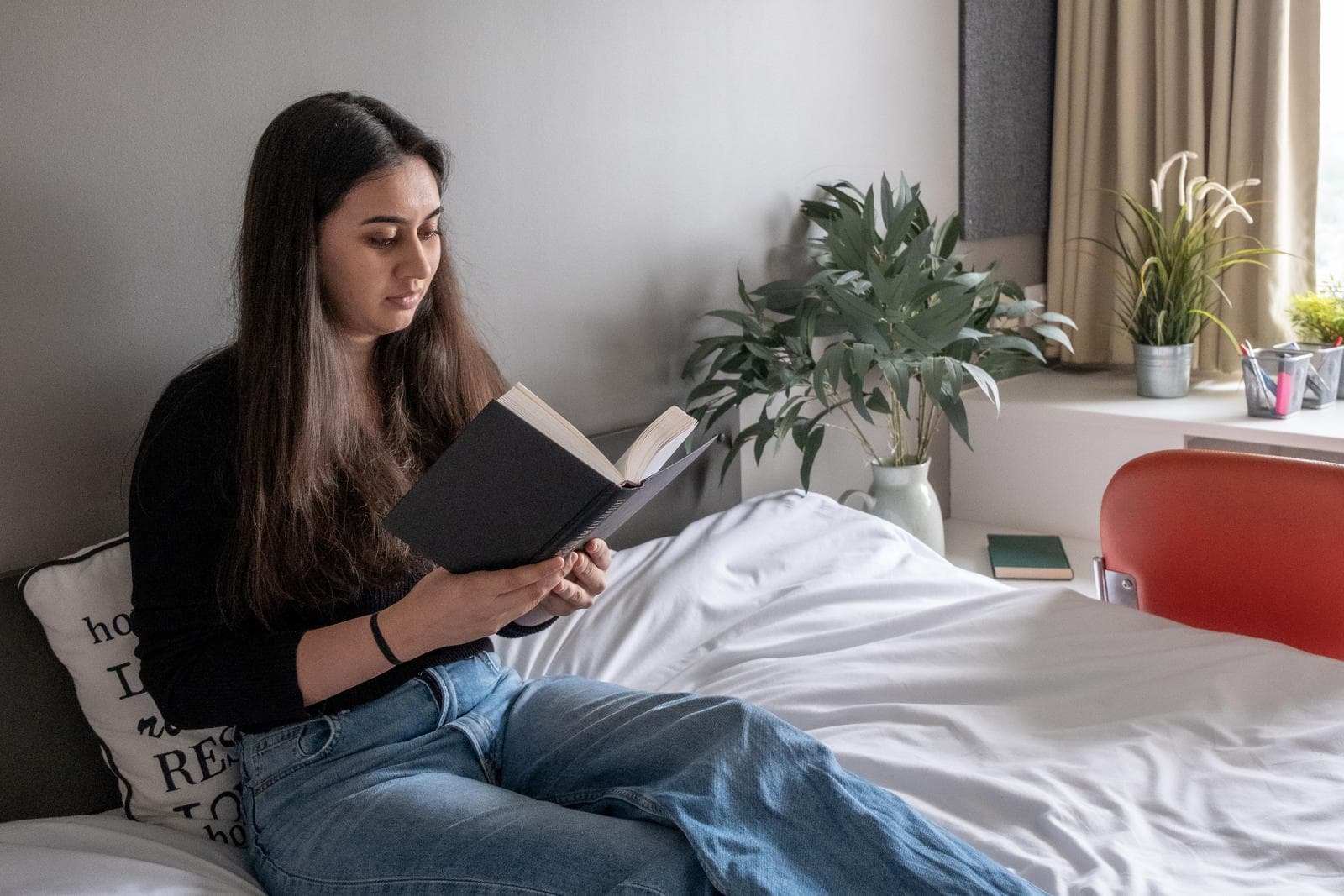
Living in London as a Student
As a student at Loughborough University London, my adventure in the heart of the UK’s bustling capital has been nothing short of life changing. Living in London as a student is an experience that blends academic challenges with the dynamic pulse of one of the world’s most vibrant cities. Here’s a glimpse into what makes this journey so special, peppered with personal anecdotes and reflections.
My experience at Loughborough University London
Loughborough University London is more than just a place to study; it’s a hub of innovation and inspiration. Nestled in the iconic Queen Elizabeth Olympic Park, the campus buzzes with energy. Pursuing a master’s degree in Sports Business and Innovation here means being part of a community that constantly pushes boundaries.
The hands-on approach is what sets this programme apart. Engaging with industry professionals, diving into cutting-edge research, and collaborating on real-world projects – it’s all part of the package. These experiences not only prepare us for the competitive sports industry but also foster a deep sense of confidence and competence.
Exploring London’s cultural diversity
Stepping outside the campus, London unfolds as a rich tapestry of experiences. The city’s cultural diversity is its heartbeat. Each neighbourhood has its own unique flavour, from the artistic vibes of Shoreditch to the historical grandeur of Westminster.
One of my favourite aspects of living here is the incredible range of cultural experiences. Museums, theatres, and galleries abound. The British Museum, Tate Modern, and the National Gallery offer free entry, making them perfect weekend haunts. Catching a play at the West End or exploring the vibrant street art scene in East London broadens your cultural horizons in ways you’d never imagine.
A vibrant and inclusive social scene
The social scene in London is just as diverse. Meeting peers from around the world becomes a daily norm, and the city’s many social venues – from cozy cafes and bustling markets to lively pubs and trendy nightclubs – provide the perfect backdrop for forging new friendships.
One standout experience for me was attending the Diwali celebrations at Trafalgar Square. Being miles away from home, it was heartwarming to feel connected to my roots, surrounded by the vibrant colors, music, and the community. It’s events like these that make London feel like a home away from home.
Travelling around London
Living in London teaches you independence. The city’s extensive public transport network – the iconic Tube, buses, and even boats – makes commuting relatively easy. Your Oyster card becomes a trusty companion, offering discounted rates for students and making every corner of the city accessible.
London’s Hidden Gems
Discovering hidden gems is part of the London experience. Whether it’s the serene beauty of Hyde Park, the eclectic charm of Camden Market, the culinary delights of Borough Market, or the historic allure of the Tower of London, each exploration leads to new and exciting discoveries.
One of the key aspects of living in London as a student is finding the right balance between studies and leisure. The city’s fast pace can be overwhelming, but it also offers numerous ways to unwind. Engaging in sports and fitness activities is a fantastic way to de-stress. The Olympic Park is a favorite spot for jogging, cycling, or simply taking a peaceful stroll by the canals.
London’s culinary scene is another highlight. From food trucks and pop-up restaurants to Michelin-starred dining, the city caters to all tastes and budgets. Exploring different cuisines becomes a delightful adventure, offering a taste of the world within the city’s boundaries.
Living and studying in London – My personal and professional growth
Living in London is not just about academic and professional achievements; it’s also a journey of personal growth. The city’s diverse and dynamic environment pushes you out of your comfort zone, encouraging you to embrace new experiences and perspectives. It’s a place where you learn to manage your time efficiently, adapt to different cultures, and develop a global outlook.
One of the most profound aspects of this journey is the development of resilience and confidence. London’s competitive environment teaches you to face challenges head-on and seize opportunities with both hands. Whether it’s presenting a project to industry experts, navigating the complexities of city life, or simply managing your finances, every experience contributes to your growth.
Living in London as a student at Loughborough University London is a transformative experience that goes beyond academics. It’s an opportunity to immerse yourself in a vibrant cultural scene, forge meaningful connections, and develop skills that will serve you well in your personal and professional life. The city’s unique blend of tradition and innovation provides a rich backdrop for learning and growth, making it an ideal place to pursue higher education and build a bright future.
For those considering this path, I can confidently say that the journey is as enriching as it is challenging. Embrace the opportunities, immerse yourself in the city’s rhythm, and let London shape your story in ways you never imagined.

How to spot fake online reviews (with a little help from AI)

Before you buy something, or visit a new restaurant, or see a new film, you may be tempted to check out the online reviews. Researching what strangers think of the things we might like has become a familiar part of the modern consumer experience.
But how can we know which reviews to trust? Which ones are written by honest customers sharing their genuine experiences, and which ones are posted with ulterior motives?
For while consumer reviews can guide us towards the best products and services, concealed within the shadows are deceptive reviews, meticulously crafted to deceive and manipulate. Fake feedback, you might call it.
A negative fake review may be submitted by a competitor for example, hoping to cast doubt on the quality of a particular product. Or a positive sounding fake review may be designed by someone with a financial interest in a service to give it a dishonest boost in the market.
All of these can have a dramatic effect on a business’s public profile.
In 2023, the popular travel website Tripadvisor experienced a staggering influx of user-generated content, with more than 30 million reviews submitted by more than 17 million members. But within this vast sea of apparent customer feedback, 1.3 million reviews were flagged as fraudulent and subsequently removed.
Additionally, 33,194 businesses faced penalties for engaging in deceptive practices. And in the UK, government research has found that between 11% to 15% of reviews in specific product categories, such as consumer electronics and home and kitchenware, were thought to be fraudulent.
Cracking the code
To combat fake reviews, companies including Amazon have started using artificial intelligence (AI) to prevent the publication of hundreds of millions of potentially fraudulent reviews, ensuring the credibility of the platform.
But research suggests that there are quite a few things consumers can do to protect themselves.
Trust your instincts: When perusing reviews, rely on your intuition. Authentic feedback tends to strike a balance, presenting both positive and negative aspects of the product or service. If a review appears excessively positive or overly critical without substantiation, exercise caution.
Read between the lines: Pay attention to the language and tone used in reviews. Genuine feedback often sounds personal, reflecting the reviewer’s unique experience. Beware of reviews that seem generic, repetitive, or excessively promotional, as they may be deceptive endorsements.
Validate the source: Scrutinise the reviewer’s credentials to ascertain their credibility. Genuine reviewers typically furnish specific details about their interaction with the product or service, such as features, delivery timelines, or customer service encounters. Approach reviews which lack specific information with scepticism.
Look for patterns: Remain vigilant for anomalous patterns in reviews, such as sudden surges of positive or negative feedback within a brief time frame. These anomalies could indicate orchestrated attempts to manipulate ratings rather than genuine consumer experiences.
Review the reviewers
So in the same way that you may protect your computer from viruses, or stay alert to attempts to get hold of your personal information, it’s important to keep yourself updated on common methods used to deceive consumers. Well-known platforms such as Amazon and Tripadvisor usually offer guidelines for spotting fake feedback, while consumer advocacy groups and online forums dedicated to consumer awareness can provide valuable insights.
Websites and platforms also have a responsibility to make sure users are receiving trustworthy information. And advances in AI technology have introduced new tools that can assist in identifying and flagging potential fake reviews.
These AI-powered solutions play a critical role in preserving consumer trust and market integrity by using machine learning to analyse patterns and identify suspicious interactions in social media platforms.
Through investment in this kind of technology, companies can more effectively combat the spread of fake reviews and maintain the credibility of their review systems. They can also bolster trust and confidence in the authenticity of the reviews provided.
In a digital world, being able to differentiate between genuine feedback and deceptive endorsements is vital for making informed decisions. And if you do encounter a review you suspect to be fake, it’s always worth flagging it to the platform or website where it was posted. By alerting authorities, you’ll strengthen the integrity of online review systems – and help your fellow consumers make better decisions.
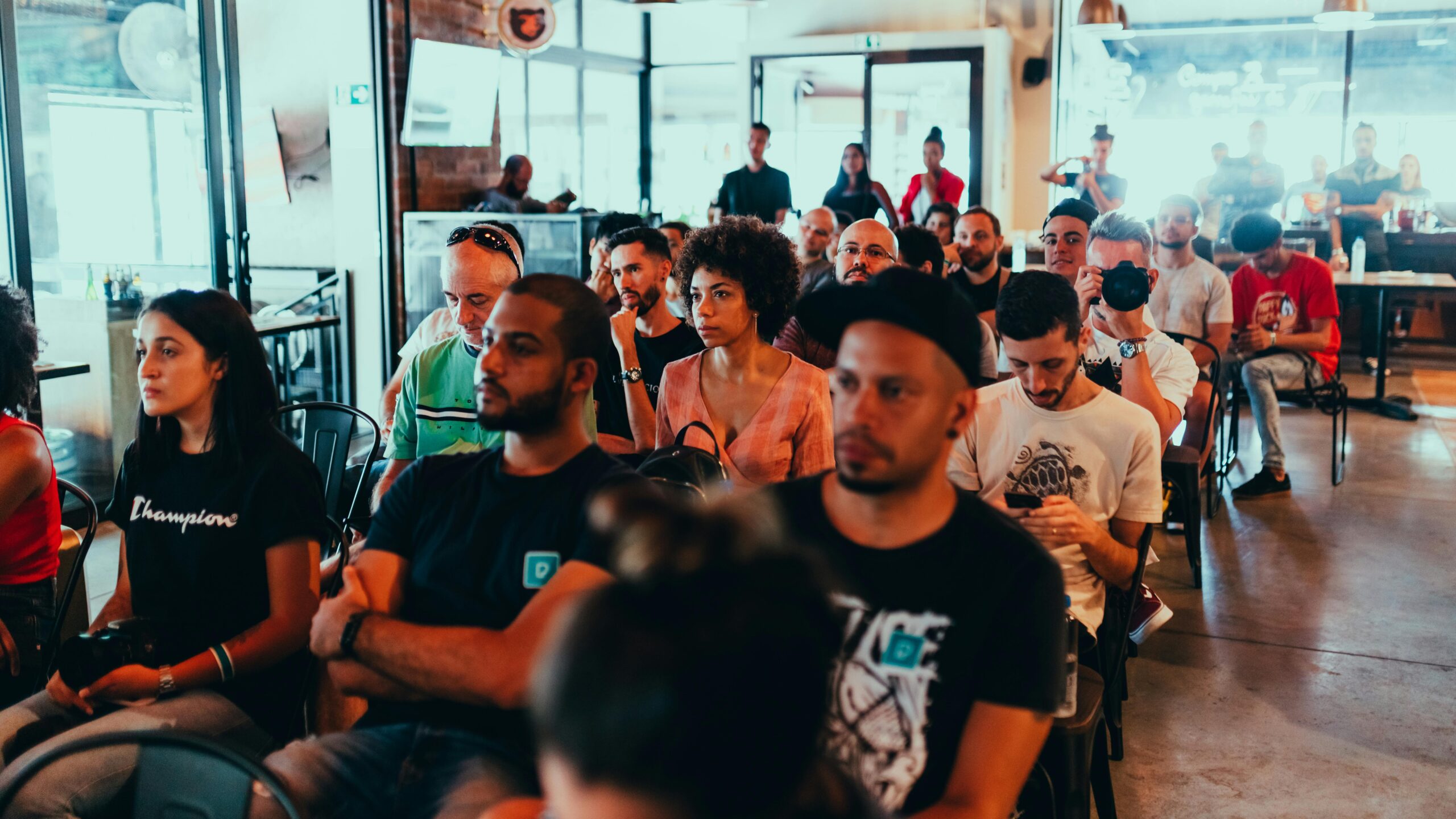
Reflections on the Complete Maths Conference
This blogpost was written by Chris Shore, a senior enterprise fellow and PhD student in the Department of Mathematics Education at Loughborough University. Click on the link at the bottom of this blogpost to read more about Chris’s work. Typeset by Dr Beth Woollacott.
In this blogpost, Chris reflects on a mathematics conference that he recently participated in and summarises his thoughts on the five sessions that he attended:
- Introducing the normal distribution.
- The problem with problem-solving.
- Celebrating the negative.
- How coherent is your curriculum (really)?
- Raise the Proof: an exploration of proof and its importance in KS5.
Introduction
The Complete Maths Conference is a conference for mathematics teachers and educators, run by Complete Maths, a company that offers various platforms to support mathematics teaching in school and the home environment (see link to their website at the end of this blogpost). In this blogpost, I reflect on the 25th iteration of the Complete Maths Conference, MathsConf25, held on Saturday 22nd June at Beauchamp College, Oadby, Leicester (a school I used to teach at). The conferences are organised 3 or 4 times a year at various locations around the country and the next conference, MathsConf26, will be in Sheffield on the 12th of October.
If you haven’t been to a MathsConf before then hopefully this blogpost will encourage you to do so. I really would urge you to go: I think it is a great opportunity for teachers and researchers alike to share their thoughts and ideas – you might even consider leading a session! The audience are very welcoming, and I’d be happy to share any tips and pointers if you wanted to. As I straddle both the research and teacher communities, it would be great to see better connections made between the two.
There were so many sessions I wanted to go at MathsConf25, but we could only choose 5 – a very tough choice! In the following, I offer my reflections on the 5 I attended (one of which I was the presenter). The Twitter / X handles for each presenter are given at the bottom of this blogpost for anyone who would like to engage further.
Session 1 – Introducing the normal distribution
Session leader: Catriona Agg
If you do not yet follow Catriona on Twitter / X, you really should. She posts the most amazing geometry puzzles, and reflections on her own secondary teaching – there is always something to think about in her posts. The session started with Catriona sharing a question she asks her A Level pupils: “Which topic is most disconnected from others?” This is an interesting question to consider as a teacher, especially if one has a ‘connectionist’ 1 view of mathematics, and teaching and learning. Catriona’s pupils highlighted the Normal distribution as such a topic and this session outlined the steps she took to build connections across the curriculum.
Catriona’s approach shows how all Normal distribution curves are transformations of each other, and how symmetry can be used to find areas under the curves. Her lessons are structured so that pupils notice these transformations and the changes of scales in the images. By using this knowledge, her pupils use the symmetry of the curves to solve problems, filling in ‘gappy’ 2 notes as they go along, and all this long before a pupil reaches for their calculator. The diagram below is an example of ‘gappy’ notes: a ‘fill in the blanks’ Normal distribution exercise.

I loved this playful approach, which sees the questions as puzzles to be solved, and I appreciated little hints such as always marking one standard deviation from the mean as the non-stationary point of inflexion. I will definitely be taking this approach next time I introduce it to learners.
Session 2 – The problem with problem solving
Session leader: Olivia Iqbal-Mclead
Axiom Maths (linked below) is an organisation which seeks to work with the highest-attaining pupils in mathematics in secondary schools, to address a drop-off in performance that some of these pupils experience. They do this by providing stimulating resources and running problem solving groups for pupils (AKA Maths Circles).
This session was a report of some work Axiom are doing centred around problem solving where they gave 1800 year 7 pupils 15 multiple choice questions and 2 open-ended problems. The answers to these were marked using comparative judgement3. In the session, we were invited to make similar judgements and discuss what features we were looking for in pupil problem solving. This was certainly a challenging task, because it is not easy to decide what problem solving is and how to get our learners better at it! Axiom distilled their findings to come up with some features they expect to see in better problem solving, such as having sound reasoning and proficiently explaining underlying arguments.
I found the discussion around how to teach problem solving really interesting. We know that having domain-specific knowledge is very important and it was good to think about the interaction between this and problem-solving strategies. I want to do a lot more thinking about this in the future! I look forward to seeing where Axiom take this as they develop their ideas.
Session 3 – Celebrating the negative
Session leader: Sharon Malley
This was a fun whistle-stop tour of all things negative (and subtraction, minus, difference, take away etc). We started off thinking around the language we use, especially when reading mathematics aloud, for example in questions such as -3 + -7 and 4(x-2) – 3(x+7). Expressions such as these are not always easy to read and it is no wonder some learners find this difficult, especially when we have multiple words for the same operation.
Next, we discussed the different models of subtraction: take away, part-whole and comparison and looked at how these might best be represented. Sharon gave an example of take-away, “I have 8 cookies and I ate 5, how many cookies do I have left?” Can you come up with an example that fits the other models? We also considered different representations which may be used, such as two-colour counters, exemplified below using a representation for positive and negative numbers.

A fun part of the presentation was when Sharon traced the history of the development of negative numbers and symbols including this doozy of a quotation from Robert Recorde (1551):
“There be other 2 signes in often use of which the first is made thus + and betokeneth more: the other is thus made – and betokeneth lesse.”
A conclusion we drew was that it is no wonder pupils find these concepts difficult given the shear variety of words and ideas contained within subtraction and negative numbers, and how, as educators, we need to carefully sequence the curriculum for learners.
Session 4 – How coherent is your curriculum (really)?
Session leader: me!
This was my first time leading a session at a MathsConf. I was grateful that the Complete Maths team allowed me to showcase some of our work from the Lumen curriculum. You can read Colin Foster’s blog post about it (linked below) which also gives access to the resources and more of our research articles and videos about the curriculum.
We looked at what curriculum coherence looks like and considered some different approaches curriculum designers take. One feature of the Lumen curriculum is that we have chosen to prioritise the number line instead of other representations, and we traced this idea through some of the units. We then spent some time looking at some of the resources and the design choices we made, exemplified in the diagram below.
We would love you to trial our curriculum with your pupils, so please do use it and let us know how you get on.

Period 5 – Raise the Proof: an exploration of proof and its importance in KS5
Session leader: Laura Allport
Laura’s session was really fun and we did lots of proof! More importantly, she helped us think through why pupils often find it a tricky area of their studies, giving reasons including that they often don’t know where to start and that teachers often don’t devote enough time to it.
Laura showed how she uses common misconceptions to unearth problems with proof, and then scaffolds problems, so that her learners grow in confidence in applying the techniques. One cool idea was that she has a ‘proof of the week’ that she uses in her classes and in a maths club – what a lovely idea! She shared some favourite proofs (see below) and ideas of where to find ones to use with pupils.

Final reflections
This was a really fun way to spend a Saturday and was extremely good value. I learned loads and it was a fantastic networking opportunity, to meet old friends and new, and to be part of an inclusive and welcoming community. Literally every session gave me something to think about, and I marvel at the depth of thought that colleagues put into thinking about mathematics education.
Session 1 leader, Catriona Agg:
Session 2 leader, Olivia Iqbal-Mclead:
Session 3 leader, Sharon Malley:
Session 4 leader, Chris Shore (me!):
Session 5 leader, Laura Allport:
References
1 Askew, M., Brown, M., Rhodes, V., Wiliam, D., & Johnson, D. (1997). The contribution of professional development to effectiveness in the teaching of numeracy. Teacher Development, 1(3), 335–356. https://doi.org/10.1080/13664539700200030
2 Alcock, Lara (2018). Tilting the classroom. Loughborough University. Journal contribution. https://hdl.handle.net/2134/28247
3 https://blog.lboro.ac.uk/cmc/2021/06/08/measuring-deep-learning-in-educational-research/

How to stay hydrated during the summer months

Water makes up to 60% of our body, therefore staying hydrated is vital for maintaining overall health, boosting energy levels, and ensuring optimal bodily functions.
When you consider that 73% of the human brain is water, it isn’t much of a surprise that hydration also impacts your cognitive performance. In fact, research has shown that even mild dehydration (a body water loss of between 1%- 2%) impairs cognitive performance. Another study uncovered that participants who drank water showed an overall boosted productivity level of around 14%.
Now that it’s summer in the UK and the weather is warmer, you may be sweating more than usual. Whilst sweating is crucial to our body’s thermoregulation, it is also our biggest source of fluid loss alongside going to the toilet.
Symptoms of dehydration can include a dry mouth, headaches, fatigue, difficulty concentrating, dizziness and bloating. A lack of thirst does not mean you’re not dehydrated. A study at the University even found that mild dehydration is equivalent to being over the drink driving limit in terms of driver errors.
Being hydrated means that you’re providing the body with adequate amounts of fluid to replace what’s being lost. Some of the benefits of being well-hydrated can include:
- Improves physical performance
- Boosts mood
- Regulates body temperature
- Protects organs and tissues
Challenge yourself to drink between 1.5-2 litres of water every day
The exact amount you need to drink will depend on factors including your health, age, size and weight as well as your activity levels, but for most adults 1.5-2 litres is sufficient. You could use a hydration calculator to find out a more exact amount you need to be drinking. Calculating your sweat rate may also be useful for informing hydration around exercise sessions.
Although other drinks such as tea, coffee, milk and soft drinks increase your fluid intake, water is the healthiest and cheapest choice to keep you hydrated.
Tips for staying hydrated
- Start your day with a large glass of water
- Carry a reusable water bottle with you
- Set reminders on your phone for every hour, you could also use an app such as Water Reminder – Daily Tracker
- If you don’t like the taste of plain water, try infusing your water with lemon, lime, berries, basil or mint leaves
- Eat water-rich foods such as cucumber, lettuce, celery, cabbage, watermelon, tomatoes, peppers, courgettes and spinach, about 20% of our daily water intake comes from food
- Alternate alcoholic drinks with water
- Check your urine against a urine colour chart to check your hydration level, pale yellow usually means you’re well-hydrated, while darker yellow can indicate dehydration
- Avoid caffeinated drinks as they make us produce urine more quickly, counteracting some of the hydration they provide
- Drink extra fluids if you’ve been sweating from physical activity
- You may need electrolyte drinks if you’re exercising or working at a high intensity or in the heat as electrolytes are lost through sweat
- Serve water with your meals throughout the day
- When you’re feeling hungry, drink water as thirst is often confused with hunger
You can find more information from the British Nutrition Foundation on hydration and pregnancy, healthy hydration for older adults, keeping children hydrated, nutrition for sports and exercise, and more.
This Week at Loughborough | 8 July
General:
Master’s Admissions Q&A Webinar
10 July 2024, 12pm-12.45pm, Online
Join this event for a webinar and Q&A session on applying for a master’s degree at Loughborough University. Our students and staff will be on hand to answer your queries about the application process, personal statements, key deadlines and more.
IAS Seminar – Learning from Media Scandal
10 July 2024, 12pm-1pm, International House/Zoom
Fulbright Scholarship Fellow, Professor Erik P. Bucy, delivers a seminar on their research, fully titled “Learning from Media Scandal: How Coverage of Press Crises Primes Accountability and Reaffirms Faith in a Socially Responsible Press”
Carbon Literacy Training
9 July 2024, 1pm-4pm, LDS018 (Design School)
With ambitions to drive sustainability forward, the University will be running carbon literacy training. The training is split into two afternoons, on the 2 and 9 July and on the 3 and 10 September.
Laughter Club
11 July 2024, 12.15pm-1pm, EHB217 (Chaplaincy Innerspace)
Try something new and join the University Chaplaincy for their monthly Laughter Club. Combining playfulness, laughter, and breathing for pleasure and health, laughter yoga provides a serotonin boost to help you feel good for the rest of the day.
Summertime Socials:
Speaking Club
9 July 2024, 2pm-3pm, WAV019 (Wavy Top Building)
Every Tuesday over the summer period the International Student Experience Team will run a Speaking Club. Come along, practise your English speaking and listening skills with a chance to catch up with friends and meet new ones too. Ask any questions that you might have about life in the UK or just pop by for a general chit-chat and each week we will have a new topic to discuss – no need to book!
Active Wednesday – My Lifestyle: Turn up and play-Badminton
10 July 2024, 6.30pm-8.30pm, Badminton Centre
The My Lifestyle programme is a FREE and welcoming recreational sport and physical activity offer, that is open to and welcomes everybody of any ability. Come along for a free game of badminton, get active and make new friends.
Sizzling Summertime Bingo!
12 July 2024, 7pm-9pm, Royce Dining Hall
Come along for a game of bingo, some light snacks and cakes, music and more. The top bingo prize will be a £20 Amazon voucher!
IMCI scholar Burçe Çelik’s book received the Runner-Up Award for Best Book of 2023 at International Communication Association, Global Communication and Social Change Division in June 2024
IMCI scholar Burçe Çelik’s book Communications in Turkey and Ottoman Empire: A Critical History received the Runner-Up Award for Best Book of 2023 at International Communication Association, Global Communication and Social Change Division in June 2024.
In the context of contemporary efforts to decolonise knowledge production, this book shifts focus from present-day analyses to a longue durée examination of modern communications in Turkey and the Ottoman Empire, spanning from the mid-1800s to the mid-2010s. By situating the locus of knowledge within the Ottoman Empire and Turkey, it poses the question: What if the history of modern communications development were not written from the vantage point of Anglo-European societies? What could we learn from other histories about the evolution of global communications and social change to inform our present-day understandings and imaginations of media and communications? Answering these questions, the book challenges Anglo- and Eurocentric assumptions that see the non-West as an ahistorical imitation of, or aberration from, the development of Western communications.
Contrary to the prevalent assumption that communications is a byproduct of Western capitalist-modernity and liberal democracy, the history of communications in the Ottoman Empire and Turkey reveals an alternative trajectory of modern communications emerging within the milieu of non-capitalist modernity and cosmopolitan political society. Integrating political economy with social history, this book explores the commodification and militarisation of communications and its impact on oppressed populations, including women, the working class, and ethnic and religious minorities. Rather than adopting a medium-specific or media-centric approach, the book conceives communications holistically as an assemblage of materiality and discursivity that encompasses (tele)communications infrastructures, means of communications, the state, the military, the market, labour force, practices, and social production of meaning. In doing so, it situates communications within social and geopolitical relations and struggles within multiple temporalities of modernities and capitalism.
Employing a chronological approach and drawing upon a wide array of resources, including Turkish, Ottoman, US, and British archival records, as well as journalistic representations and memoirs, the book reveals the intricate interplay between communications and political-economic and socio-cultural struggles. The book also provides a long history of populism from the perspective of media and communication studies from the late Ottoman era to contemporary Turkish politics.
Twitter handles that can be added here: @IllinoisPress, @ICAGCSC.
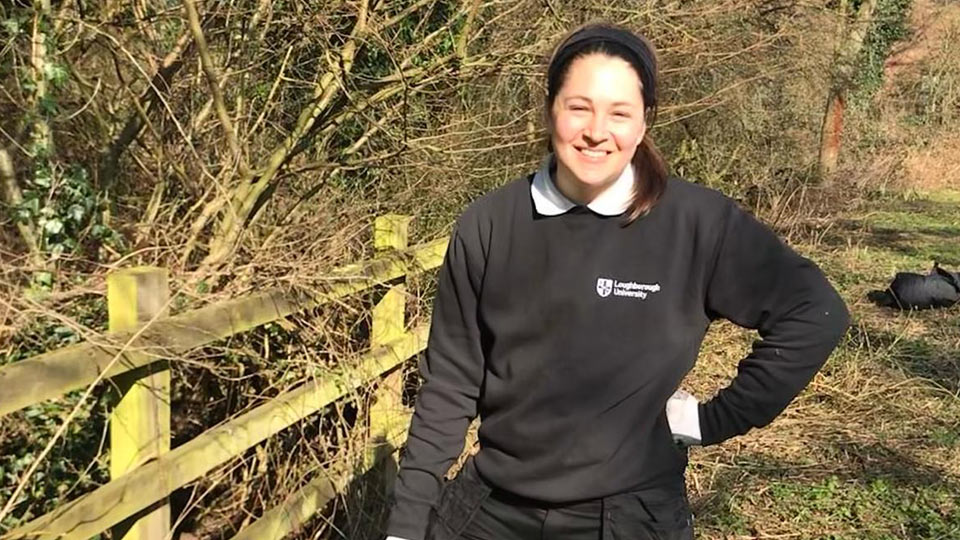
Five minutes with: Sarah Greenwood
What’s your job title and how long have you been at Loughborough?
I’m a Gardener and have been for two years.
Tell us what a typical day in your job looks like?
First, we get our tools, load up the gators and head out onto the West side of the campus to do a variety of tasks from mowing and hedge cutting to weeding and planting. The waste material is loaded onto the trailer and taken to the tip, and then we start again!
What’s your favourite project you’ve worked on?
I started working on the Walled Garden last year, so I’m enjoying learning what plants we have there and how to care for them.
What is your proudest moment at Loughborough?
Probably getting trained to use the big Fendt tractor – it’s my favourite thing to drive!
Tell us something you do outside of work that we might not know about?
I enjoy drawing and I have a design degree.
What is your favourite quote?
I have not failed. I’ve just found 10,000 ways that won’t work – Thomas Edison
If you would like to feature in ‘5 Minutes With’, or you work with someone who you think would be great to include, please email Sadie Gration at S.Gration@lboro.ac.uk.
Annual Senate and Council Dinner 2024
Each year, the Senate and Council dinner gives us the opportunity to reflect on some of the key achievements of the past year.
Throughout 2023/24 we have continued to make good progress against the aims and themes of our 2030 strategy, Creating Better Futures. Together.
In terms of education, I was delighted with the outcome of the Teaching Excellence Framework assessment. Our triple gold – gold for student experience, gold for student outcomes and gold overall – is testament to our sector leading offering. We were one of only six high tariff institutions to earn this level of distinction. Initiatives noted in the assessment included:
- The ‘Personal Best’ framework, which helps students to develop the skills and experiences, alongside their studies, that employers look for.
- The volunteering ethos that is widespread across the University, through projects such as LSU Action, the Coach and Volunteer Academy and peer support. Last year, our students cumulatively did more than 115,000 hours of volunteering.
- And the entrepreneurship opportunities we offer through the Loughborough Enterprise Network – almost 10% of our students are now involved in entrepreneurial activity.
Our triple gold rating reflects the hard work of so many people – our academics and teaching fellows, our technicians, the Professional Services and administrative staff, and the students who dedicate their time to supporting their peers. It is a team effort, and I would like to thank you all for everything you do.
But we’re not complacent. We’re always pursuing better and are continuing to push forward the frontiers of education. Our DigiLabs initiative, for example, has been described as ‘trailblazing’. It’s allowing us to use the latest digital technologies, such as holograms and AI, to enhance the way our students learn. DigiLabs will ensure our students develop the skills and knowledge to become future fit for the world of work, where digital skills, data analytics, and virtual and augmented reality will be crucial.
The technology that underpins DigiLabs will also augment our global connectivity. Our students will be able to reach out to networks worldwide, and we’ll live beam academics, thought leaders and business chiefs from the other side of the world directly into our lectures and events.
We are passionate about being a globally connected university. And that’s why international engagement is one of our key strategic aims.
Initiatives such as the OnCampus Loughborough programme, which ran for the first time this year, are a significant expansion of our global education offering. Through OnCampus, international students develop the academic skills they need to study degree programmes at Loughborough. Since opening its doors last September, OnCampus Loughborough has welcomed 230 students from 51 countries. Our first cohort completed their studies last month and will proceed onto degree programmes from this autumn.
Our overseas trips also play an important role in furthering our international reach. They enable us to reinforce our existing partnerships and to forge new ones.
During our visit to China and Hong Kong, we saw how research into restoration techniques by the School of Design and Creative Arts and Beijing’s museums is helping to improve the preservation of historical artefacts.
During our trip to West Africa, we saw how researchers from the Centre for Lifestyle Medicine and Behaviour are working in partnership with academics, clinicians and public health specialists in Ghana on interventions that will prevent, treat and manage diseases such as diabetes.
And in the US, we visited our long term-collaborators at MIT. We have now announced the establishment of the UK Supply Chain Excellence Centre within Loughborough Business School, which will be the UK hub of the MIT Global SCALE Network, an international alliance of research and education centres focused on supply chains and logistics. It’s a hugely exciting initiative and a major opportunity for us to become the UK centre of this prestigious network.
Research and innovation partnerships are also a key part of our 2030 strategy. Our 20-year partnership with global sports brand adidas was recognised this year with the prestigious Royal Academy of Engineering Bhattacharyya Award. Using their expertise in engineering, aerodynamics, ergonomics and sports science, the Loughborough teams have improved sports performance, safety and accessibility and have helped to develop the adidas talent pipeline.
And another of our long-standing partnerships, with aerospace leaders Rolls-Royce, reached new heights. The company worked with our experts in the National Centre for Combustion and Aerothermal Technology, researchers in Germany and easyJet to develop hydrogen combustion engine technology that’s capable of powering aircraft. This is an industry first and a huge step towards achieving net zero aviation.
The exploration of new forms of energy lies at the heart of our Hydrogen Works project. This is a Loughborough-led consortium with academic experts and industry partners to establish the East Midlands as a hydrogen superpower. Funding this year from the East Midlands Freeport is helping us to develop a zero-carbon innovation centre. And a new Loughborough-led Centre for Doctoral Training in Engineering Hydrogen Net Zero will expand our research and develop the skilled workforce needed to enable rapid growth in hydrogen-related technology.
This quest for greener energy solutions is also a major part of our Climate Change and Net Zero strategic theme. Our Aftrak partnership is a great example of our pioneering work in this area. This year it beat international competition to win the one-million-dollar Milken Motsepe Prize in Green Energy. The Aftrak team is working to provide rural communities across Africa with access to clean, green electricity to increase crop yields and the incomes of smallholder farmers. Following successful tests at the University and demonstrations in South Africa, Aftrak is now being deployed in Malawi. It’s a perfect illustration of how our work can bring direct and tangible benefits to the world’s communities.
And the University’s Sustainable Transitions: Energy, Environment and Resilience Centre, known as STEER, has received an additional £57 million grant from the UK Government. This is our largest ever research funding award. The grant will extend the Climate Compatible Growth programme by a further five years to accelerate the roll-out of improved, climate resilient infrastructure in sub-Saharan Africa and the Global South.
Projects such as Aftrak and STEER align closely with the United Nation’s Sustainable Development Goals, which reflect the needs of society and the challenges we face worldwide. This year, the Times Higher Education Impact Rankings placed us 1st in Europe and 7th globally for the UN’s goal number 8 – advancing Decent Work and Economic Growth, and we also ranked in the global top 100 in a further two goals – for Reduced Inequalities and Life on Land.
Driving the economy is central to so much of our work. Midlands Mindforge Limited, for instance, is currently raising £250m to support university spinouts and early-stage businesses. Midlands Mindforge was founded by the eight research-intensive universities across the region. Through it we are building the foundations of a new technology eco-system in the region and creating companies that can drive economic growth whilst delivering real-world impact. I’m delighted to have been involved with this development and to be a non-executive director on the board.
We take our local and regional responsibilities seriously. We’re proud to be part of the Civic Universities Partnership. Through the partnership we work with the other universities in the county and the local authorities in Leicestershire and Rutland on joint initiatives that benefit our region, its people and its businesses.
The grant we received through the Loughborough Town Deal supported the development of the fourth pavilion for the SportPark building – our first Passivhaus build, which this year picked up the Environmental Best Practice accolade at the international Green Apple Environment awards.
We’re also working with regional partners on initiatives that will benefit people’s health and wellbeing. Together with Leicestershire County Council, we’re working to reduce the prevalence of conditions such as asthma, obesity and heart disease, and to address health inequalities across the county.
And the development of the National Rehabilitation Centre, on our doorstep in Stanford on Soar, is now progressing at pace and should open later this year. The Centre will combine NHS patient care with research led by Loughborough and Nottingham universities to transform the lives of those who have experienced life-changing injury, trauma or illness.
Harnessing the power of physical activity to benefit people’s health and wellbeing has long been central to the University, as has performance sport.
Last summer our students won the BUCS Championship title for the 42nd consecutive year, with a record-breaking total score. I’m hopeful that next month will bring more good news for us with the 2024 BUCS title. Our athletes will no doubt have been helped on their way with some outstanding performances on BUCS Big Wednesday, which we hosted this year and will do so for the next two. On that Wednesday in March, Loughborough became the epicentre of student sport with more than 2,000 student athletes competing in 57 finals across 16 sports, in front of almost 2,500 spectators.
Of course, I must mention the upcoming Paris 2024 Olympic and Paralympic Games. Our association with the Games dates back to 1948, when Loughborough’s Jack Archer won silver in the 4x100m relay. Since then, Loughborough-linked athletes have won an amazing 126 medals.
This summer we’ll be the host venue for ParalympicsGB kitting out. This is an important milestone for both athletes and support staff, when they’re presented with all their official Games kit.
Then towards the end of July, around 100 athletes with Loughborough connections will head off to compete for their national teams in Paris. At the last Games in Tokyo our athletes won an impressive 35 medals and we’re aiming to top that this year. I’m sure you’ll join me in wishing our Loughborough contingent all the very best.
These are just a few of our achievements, successes and developments from the last 12 months. However, the last year has not all been plain sailing.
Universities today are operating in a very challenging environment, and increasingly of late, we have been under fire. Changes to government immigration policies and real-term cuts to funding have seen the media and politicians questioning almost everything we do – from the value of our degrees to the significance of our research.
If we’re to change people’s perceptions, universities need to work together more effectively. Combining our complementary strengths and harnessing our collective power. We must unite as a sector to showcase the impact that we have on individuals, regions and countries worldwide, to change the narrative that’s currently so damaging to higher education.
With this in mind, we recently launched our campaign to position ourselves as a bold, ambitious university that strives to make change for a better world. The campaign is called ‘The World Can’t Wait’ to underline the pressing need for us to address the issues that face us all, now and in the future. We want our students to become changemakers. We want our staff to work towards a cleaner, healthier, fairer world. And we want companies, charities and governments to work with us on that journey.
I hope my reflections on the past year make you feel proud of everything we’ve achieved and that they inspire you as we embark on the next phase of our journey to creating better futures together.
From the Vice-Chancellor - June 2024
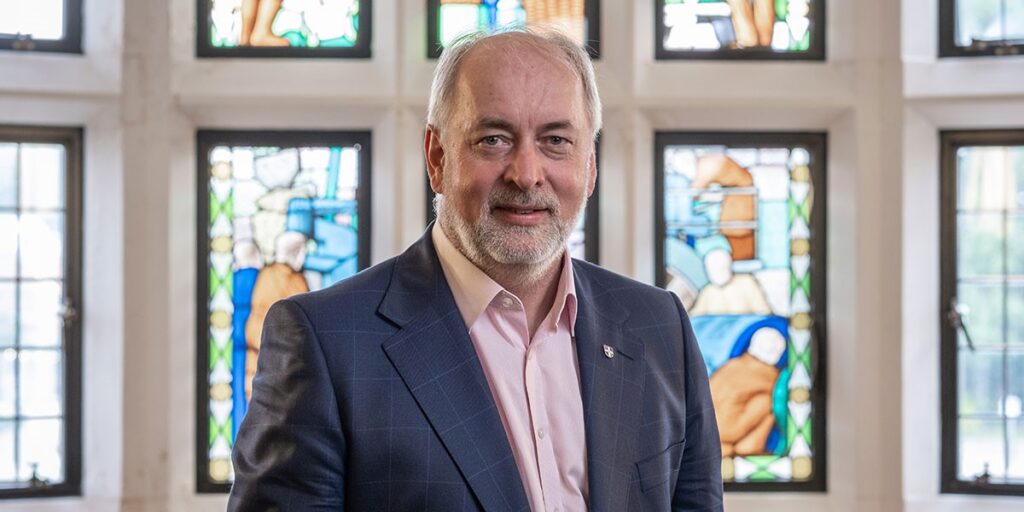
In my June newsletter: the Sport and EDI core plans, the THE Impact rankings, the new hub of the MIT Global SCALE Network, our largest-ever research grant of £57m to STEER, our delegation to West Africa, and analysis of the General Election media coverage.
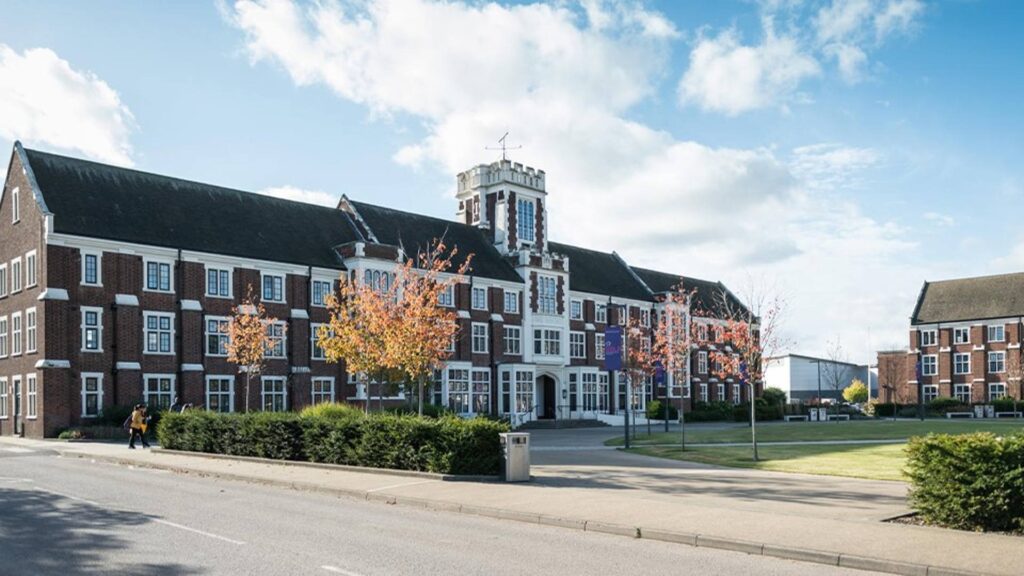
Final two core plans approved
At its meeting yesterday, University Council approved the final two strategic core plans for Sporting Excellence and Opportunity, and Equity, Diversity and Inclusion (EDI). Thank you to everyone who contributed to their development, and particularly to Professor Jo Maher, the Pro Vice-Chancellor for Sport, Richard Taylor, who is acting lead for the EDI core plan, and Veronica Moore, Director of EDI Services, who have all been instrumental in pulling the finalised plans together.
The Sporting Excellence and Opportunity core plan is centred on a vision to use our world-class research and performance to enhance the experience of athletes across sport globally, to leverage external opportunities, and to create more opportunities for our students and community to access sport and develop their talent. The plan is themed around five strategic priorities: ecosystem, sustainability, women’s sport, para sport and disability sport, and the power of AI and digital.
The EDI core plan sets out a vision, guiding principles and our heightened EDI ambitions for the University, including a commitment to anti discriminatory practice. Its four objectives are focused on: improved data to better inform our objectives and activities; tackling structural inequity that is embedded in our processes and practices; putting in place interventions that improve diversity with anti-discriminatory practice; and creating a vibrant and inclusive community.
Both the sport and EDI core plans have clear key performance indicators, which will measure our progress towards our objectives.
The EDI plan also includes the governance and management structures we will need to deliver the plan. Since we launched our University Strategy two years ago, I believe we have made good progress with our EDI priorities and it is imperative that we continue to build on the foundations we now have begun to put in place. With our EDI objectives now clearly outlined in the core plan, we have decided to take our time to carefully consider the senior leadership that we believe will be required to drive our EDI activity through this next phase. I will provide a further update in a future edition of my newsletter.
University performs well against UN Sustainable Development Goals
The Times Higher Education (THE) Impact Rankings, which are published each year, recognise universities’ commitment to addressing the world’s most pressing challenges, including environmental sustainability, social inclusion, economic growth and partnerships. They are an international assessment of universities’ performance in moving forward the United Nations’ 17 Sustainable Development Goals (SDGs) – a universal call to action to end poverty, protect the planet, and ensure shared peace and prosperity for all by 2030.
I was delighted, therefore, that Loughborough was ranked first in the UK and Europe, and 7th globally, for SDG8 – advancing Decent Work and Economic Growth. SDG 8 is focused on sustained, inclusive and sustainable economic growth, full and productive employment and decent work for all. We also ranked 54th globally for SDG 10 – Reduced Inequalities – and 57th globally for SDG 15 – Life on Land.
Loughborough’s success in the THE Impact Rankings is testament to our world-leading research and the way we manage our buildings, campuses and activities. Our performance reflects many aspects of our strategy, but particularly the Vibrant and Inclusive Communities, and the Climate Change and Net Zero themes.
The work by the Centre for Research in Social Policy (CRSP), for instance, on the Minimum Income Standard (MIS) clearly contributes to SDG8. It has been used to set the Real Living Wage in the UK, underpins the Retirement Living Standards, and is used by organisations around the UK and increasingly overseas to tackle issues around poverty, living standards and income adequacy.
And as an employer, the University is committed to fair pay and working practices and is an accredited Real Living Wage employer – the only UK wage rate based on the cost of living.
Our Aftrak project meets several SDGs, including the one related to Reduced Inequalities. Loughborough’s researchers are working to provide rural communities across Africa with access to clean, green electricity to increase crop yields and the incomes of smallholder farmers who play a critical role in the continent’s food and energy security and its economic growth. By providing them with access to reliable, sustainable energy and advanced agricultural tools, our aim is to transform lives, communities and the future of agriculture in Africa.
And the Life on Land SDG recognises the way we manage our campuses. For instance, both our sites, in Loughborough and on the Queen Elizabeth Olympic Park in London, retained their Green Flag status in the most recent round of awards. These awards acknowledge high-quality, well-managed green spaces that benefit people’s health and wellbeing.
Congratulations to all those involved in research, projects and the day-to-day management of our campuses that have contributed to our success in this important league table.
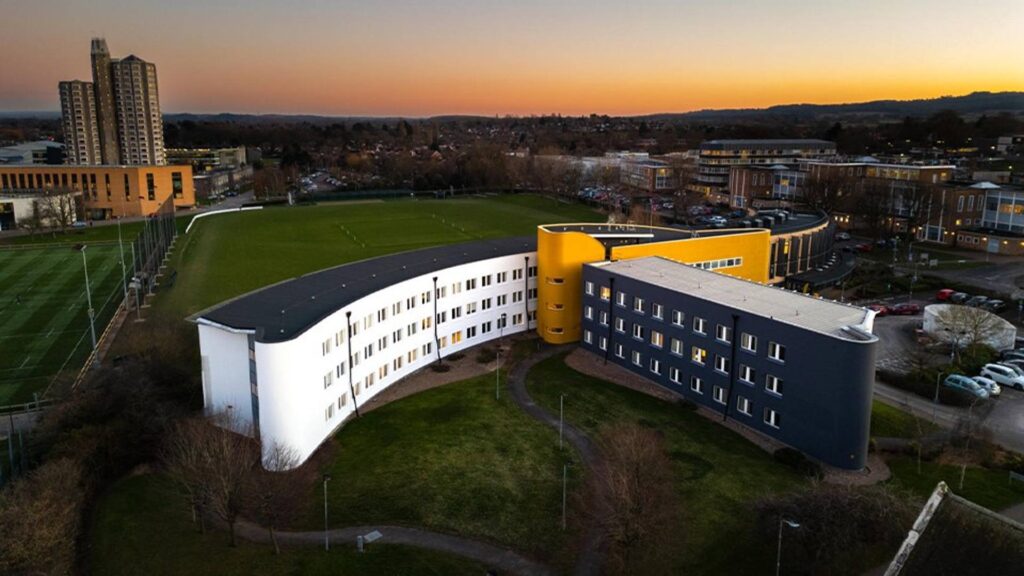
Loughborough named as UK hub of prestigious global network
Working in partnership with others has long been one of Loughborough’s core strengths. We work with companies on the development and delivery of some of our teaching programmes; our students and staff work closely with industry on projects; and we collaborate with some of the world’s leading universities on pioneering research. Strong partnerships with great organisations and institutions are central to all that we do, and intensifying and expanding our collaborations is the cornerstone of our strategic Partnerships core plan.
Massachusetts Institute of Technology (MIT) – the world’s top-rated university in the global QS rankings – is a perfect example. Loughborough has worked for many years with MIT, particularly on engineering collaborations, and this month our links with them broadened further, when we signed an agreement to establish the UK Supply Chain Excellence Centre, within Loughborough Business School.
This will be the UK hub of MIT Global Supply Chain and Logistics Excellence (SCALE) Network. The MIT Global SCALE Network was established in 2003 with the inauguration of the Zaragoza Logistics Center in Spain. Since then, it has expanded to include centres in Colombia, Luxembourg, China, and now the UK.
The centres bring together industry and academia to pool their expertise and collaborate on research projects that address real-world supply chain and logistics challenges, helping companies worldwide navigate an increasingly complex business environment. Organisations that partner with the MIT Global SCALE Network gain unparalleled access to expertise, innovative research, and a unique forum for knowledge exchange. The centres also offer postgraduate-level programmes focused on supply chain management, which enable students to benefit from engagement with global industry and collaborative opportunities.
Our inclusion in the MIT Global SCALE Network reflects our exceptional research capabilities, our commitment to supply chain innovation and the education of the next generation of supply chain leaders. It’s a hugely exciting initiative and a major opportunity for us to become the UK centre of this prestigious network.
Largest ever research grant awarded
This month, the University’s Climate Compatible Growth (CCG) programme, which is part of STEER (the Sustainable Transitions: Energy, Environment and Resilience Centre), received an additional £57 million grant from the UK Government, building on its initial £38 million award. The grant, which is our largest ever research funding award, will extend the CCG programme by a further five years to accelerate the roll-out of improved, climate resilient infrastructure in sub-Saharan Africa and the Global South.
CCG is one of the University’s flagship projects in terms of its contributions to addressing global challenges associated with climate change, aligning firmly with our Climate Change and Net Zero strategic theme. The team’s work is leading to transformative and innovative approaches that unlock finance that drives investment in, for example, electricity networks, grid decarbonisation and low carbon transport. These investments ultimately improve lives and livelihoods and are a catalyst for reducing inequalities and tackling poverty in communities.
For example, since their establishment, CCG has created Starter Data Kits for more than 70 countries, equipping partners, consultancies, national investment analysts and academics with essential data to inform national decarbonisation strategy development. The Kenyan and Ugandan governments are also now using CCG planning tools to develop their long-term national energy strategies.
The extension of the CCG programme to 2030 will enable lower- and middle-income countries in sub-Saharan Africa and the Global South to use their universities to cultivate the skilled workforce essential for accelerating sustainable economic growth. Working with national and international research partners, CCG will deliver the economic tools and decision support frameworks needed to make green transitions possible in countries in its partner countries, which will now also include Nepal and Malawi.
Overseas delegation builds relationships in West Africa
At the start of the month, colleagues and I undertook our third overseas delegation of this year, travelling to Ghana and Nigeria to enhance and expand our research, education and alumni partnerships.
At meetings with government, university and industry representatives in Ghana and with the Nigerian State Government and staff from the University of Lagos, we explored how we can harness our collective knowledge and expertise to address local and global issues that will make a real difference to people’s lives.
I was able to cite two powerful examples that are already making a tangible difference – the Aftrak project and the work of our Modern Energy Cooking Services (MECS) team, who are working with local partners across the region to accelerate access to cleaner methods of cooking. The MECS researchers have entered into a partnership with the Nigerian Council on Climate Change to assess the readiness for the mass scale up of electric cooking. They have also worked with local chefs in Ghana to develop a Ghana eCookbook to show the possibilities of cooking with electricity, which is up to four times cheaper than using LPG or charcoal.
At the University of Ghana I joined Professor Amanda Daley and Dr Hibbah Osei-Kwasi from the Centre for Lifestyle Medicine and Behaviour to see how our researchers are working in partnership with academics, clinicians and public health specialists in Ghana to identify interventions and policies that will help to prevent, treat and manage non-communicable diseases.
At the University of Lagos I gave a presentation on my personal area of research, Artificial Intelligence, which will enhance the way we teach and support our students and transform the way we undertake research.
And at reception evenings in both countries I was able to meet some of our alumni based in those countries, as well as some potential future students who hold offers to study at Loughborough. Overseas trips such as these, which enable us to reinforce and further our international partnerships and networks, allow us to advance our international reputation and profile – a key aim of our University strategy. Thank you to all those who organise and support these important visits.
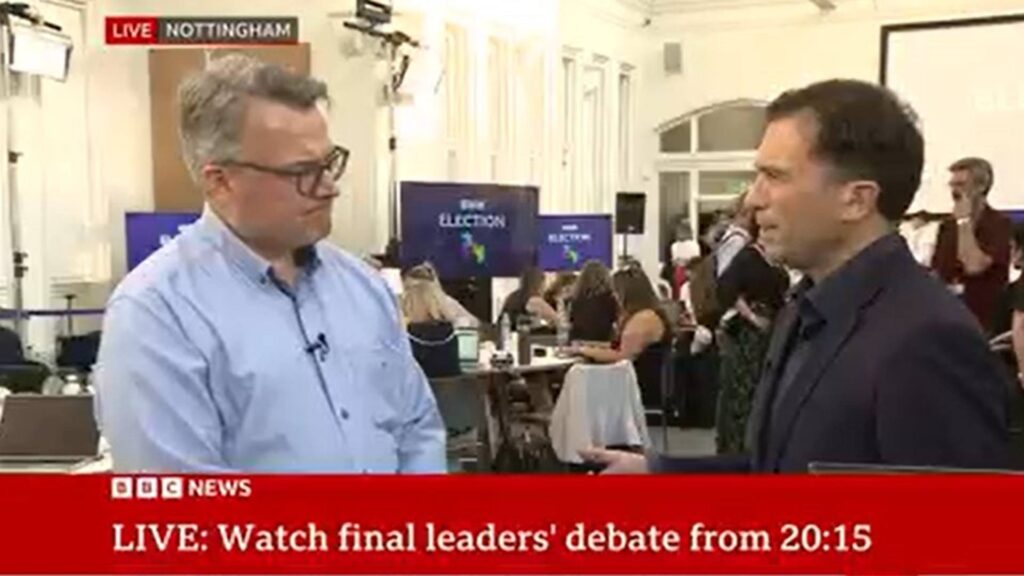
Loughborough researchers analyse General Election coverage
Coverage of the upcoming General Election has been a constant presence in the media over the past few weeks, and once again, as they have since 1992, our academics from the Centre for Research in Communication and Culture have been conducting news audits of the main media outlets.
Their reports provide week-by-week measurements of which politicians and parties are receiving the most coverage, the proportion of negative and positive sentiment, which issues are gaining greatest prominence, and the amount of overall coverage being given to the election.
According to their latest report, tax had emerged as the top policy issue being covered, securing 12% of TV and press coverage over the first three weeks of the parties’ campaigns – double the amount of coverage for the next ranked topic (economy and business). Health and the NHS has secured only 5% of coverage, with the environment and education scraping just 2%.
The researchers’ work has itself generated media interest, being referenced by the ‘Peston’ programme on ITV, the BBC Radio 4 ‘Media Show’ and in The Economist. Research such as this contributes to Project Reputation, through which we will enhance Loughborough’s national and international global reputation as a leading institution – one of our key strategic objectives.

This Week at Loughborough | 1 July
General:
Q&A with Colin Jackson CBE
1 July 2024, 1pm-2pm, SCH001 (Schofield Building)
We will be welcoming world record holding sprint and hurdle athlete, Colin Jackson CBE, to Loughborough University’s East Midlands campus. There will be a Q&A session with Colin and we will discuss Colin’s athletic career, his life post-retirement, and his current and future projects.
If you would like to suggest a question for discussion with Colin, please include it at registration or email climb@lboro.ac.uk.
Disability Pride Picnic
2 July 2024, 12pm-2pm, Hazlerigg Fountain
To celebrate Disability Pride Month on the Loughborough campus, the Disability and Inclusion Network is hosting a picnic and a crochet and knitting celebration. Bring your lunch and friends, seating will be available. If you have any spare wool and knitting needles or crochet hooks please bring them along.
On the same day, the London campus will be hosting a ‘Knit and Natter, Crochet and Chatter’ drop-in workshop from 10am-3.30pm. At the end of July, both Loughborough and London campuses hope to create their own artwork to permanently remind us how special we all are, regardless of whether we identify as disabled or not.
Carbon Literacy Training
2 July 2024, 1pm-4pm, LDS018 (Loughborough Design School)
With ambitions to drive sustainability forward, the University will be running carbon literacy training. The training is split into two afternoons, on the 2 and 9 July and on the 3 and 10 September.
Postgraduate Accommodation in London Q&A Webinar
4 July 2024, 12pm-12.45pm, Online
Join this event for a webinar and Q&A session on postgraduate accommodation at our London campus. Discover the stylish rooms and facilities at Stratford One hall of residence – the perfect place for you to live while you study with us. Our students and staff will also be on hand to answer your queries about what it’s like to live in one of the world’s most diverse and vibrant cities.
Hydrogen Researcher Festival
4 July 2024, 8.45am-5pm, James France Building
This event will be a vibrant gathering that celebrates advancements, innovations and collaborations in the field of hydrogen research and technology. Come along for a day filled with insightful presentations, interactive exhibits and engaging discussions.
The aim of the festival is to bring together the hydrogen researcher community and provide an open space for researchers to:
- Engage and share hydrogen innovation achievements
- Connect and collaborate with other researchers
- Interact with activities around hydrogen
- Debate on the challenges and opportunities of hydrogen research
- Learn about technical aspects of hydrogen research
QAA Webinar
5 July 2024, 10am-11.30am, Online
A webinar hosted by The Quality Assurance Agency for Higher Education (QAA) to disseminate findings from a funded Collaborative Enhancement Project. This session will share the approach used for the implementation and evaluation of an innovative cycle of collaborative observation, which was undertaken over two academic years across three universities, involving diverse groups of students and teaching staff from varied disciplines.
Climate Café and Empowerment Workshop
5 July 2024, 11am-1pm, Edward Herbert Pavillion
The session will include a 90-minute workshop facilitated by sustainability charity, Change Agents UK. Come along for a guided discussion and activity to explore our current state and connection to global challenges.
We will create a personal and shared vision of what the future could look like, and what role we want to play in creating it.
- 11am-11.30am: Free hot drinks and networking
- 11.30am-1pm: Guided workshop
Summertime Socials:
Speaking Club
2 July 2024, 2pm-3pm, WAV019 (Wavy Top)
Every Tuesday over the summer period the International Student Experience Team will run a Speaking Club. Come along, practise your English speaking and listening skills with a chance to catch up with friends and meet new ones too. Ask any questions that you might have about life in the UK or just pop by for a general chit-chat and each week we will have a new topic to discuss – no need to book!
Lifting Mood and Motivation Wellbeing Session
3 July 2024, 2pm-3.30pm, MS Teams
When we feel down, we can often experience low motivation. This can lead to us to do less and to get stuck in a vicious cycle of the less we do, the worse we feel. The session will look at this cycle and a technique to break out of it. The technique involves planning in and increasing activity levels to create a balance and a routine.
Trip to historic York
6 July 2024, 7.45am-7.30pm, York
York, one of the most historic cities in the England with some of the most complete medieval walls, a backdrop of cobbled lanes and winding “snickelways”. This city is packed with things to do and see including York Minster, the National Railway Museum and the Jorvik Viking Centre.
Explore the day in the York and check out the impressive 2,000-year-old Gothic halls of its cathedral, or the pretty 13th century timbered streets of The Shambles and sample the fantastic food scene. This event costs £3.
The end of the end
So just a few days shy of 24 years we bid a fond farewell to LORLS as we finally decommission the service. We intend to keep this site available for a few more years but won’t be updating it further.
I’d like to take this opportunity to thank all the people who have worked on the system, made suggestions, suffered arguments about what structural units are and generally used the system. In particular I’d like to thank my co-developers: Jon and Jason without whom LORLS wouldn’t have existed or have lasted so long.
<obligatoryHitchhikersQuote>
So long and thanks for all the fish
</obligatoryHitchhikersQuote>
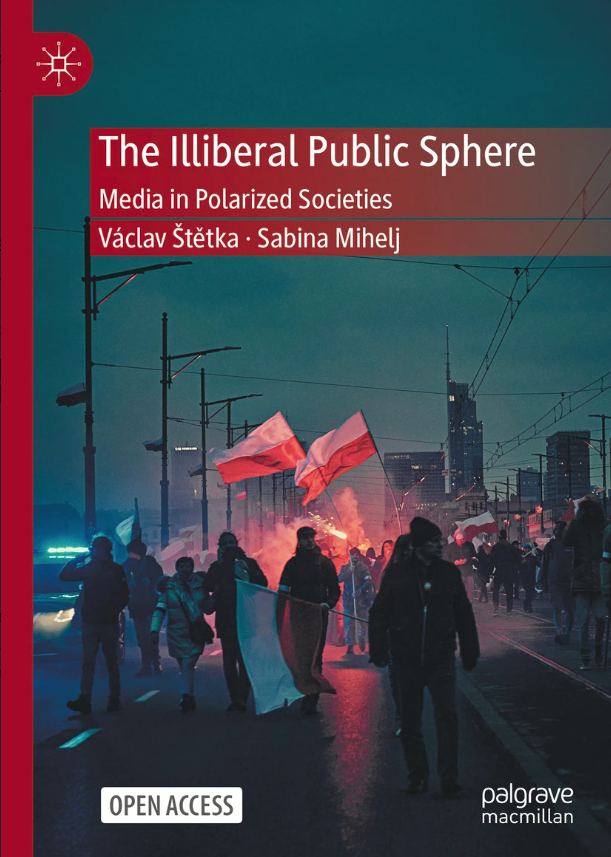
The Illiberal Public Sphere: new book by Václav Štětka and Sabina Mihelj
Liberal democracies across the world are facing a range of challenges, from the growing influence of illiberal leaders and parties to deepening polarization and declining trust in political elites and mainstream media. Although these developments attracted significant scholarly attention, the factors that contribute to the spreading of illiberalism remain poorly understood, and the communication perspective on illiberalism is particularly underdeveloped.
CRCC members Václav Štětka and Sabina Mihelj are addressing this gap in their newly published open access book titled “The Illiberal Public Sphere: Media in Polarized Societies” (Palgrave, 2024). The book provides the first systematic analysis of the role of the media in the rise of illiberalism, based on an original theoretical framework and extensive empirical research that was carried out as part of the ESRC-funded project “The Illiberal Turn: News Consumption, Polarization and Democracy in Central and Eastern Europe” (2019-2022), which collected quantitative and qualitative data in the Czech Republic, Hungary, Poland and Serbia.
Attempting to move beyond the conceptual framework of populism, which according to the authors has been too often used in an indiscriminate way that conflates disparate ideological and political trends, the book introduces the concept of the illiberal public sphere, defined as “a communicative space comprising both traditional and new media that promote and amplify illiberal actors, views, and attitudes” (Štětka and Mihelj, 2024: 3). Identifying three ideal-typical stages in its evolution – incipient, ascendant and hegemonic – the authors argue that the illiberal public sphere gradually colonizes the institutions that have previously served as a cornerstone of the liberal public sphere, including independent news organizations and public service broadcasters, contributing to the polarization and radicalization of political discourse, as well as to the proliferation of illiberal attitudes among citizens.
Drawing on findings from the empirical analysis of data from the four Eastern European countries, Štětka and Mihelj reveal how and why the changing communication environment facilitates selective exposure to ideologically and politically homogeneous sources (and thereby fastens the spiral of polarization), fosters changes in normative assumptions that guide media trust, increases vulnerability to disinformation, and goes hand in hand with growing hostility to immigration and LGBTQ+ rights. The findings furthermore challenge widespread assumptions about digital platforms as key instruments of illiberalism and suggest that their role shifts as the illiberal sphere progresses, often becoming channels of resistance against the illiberal hegemony.
In the concluding part of the book, the authors discuss the prospects for the illiberal public sphere in Eastern Europe and elsewhere in the world, based on recent political developments, and offer some suggestions for journalistic practices and media policies that can help make media systems more resilient and able to deflect and contain the challenges of illiberalism. In that respect, the arguments presented in the book have important implications not just for future research on challenges to liberal democracy, but also for journalists, media regulators and other professionals committed to rebuilding media trust and containing the forces of polarization.
A life of growth and discovery as a master’s student at Loughborough University
By Mehul Shah, MA User Experience and Service Design
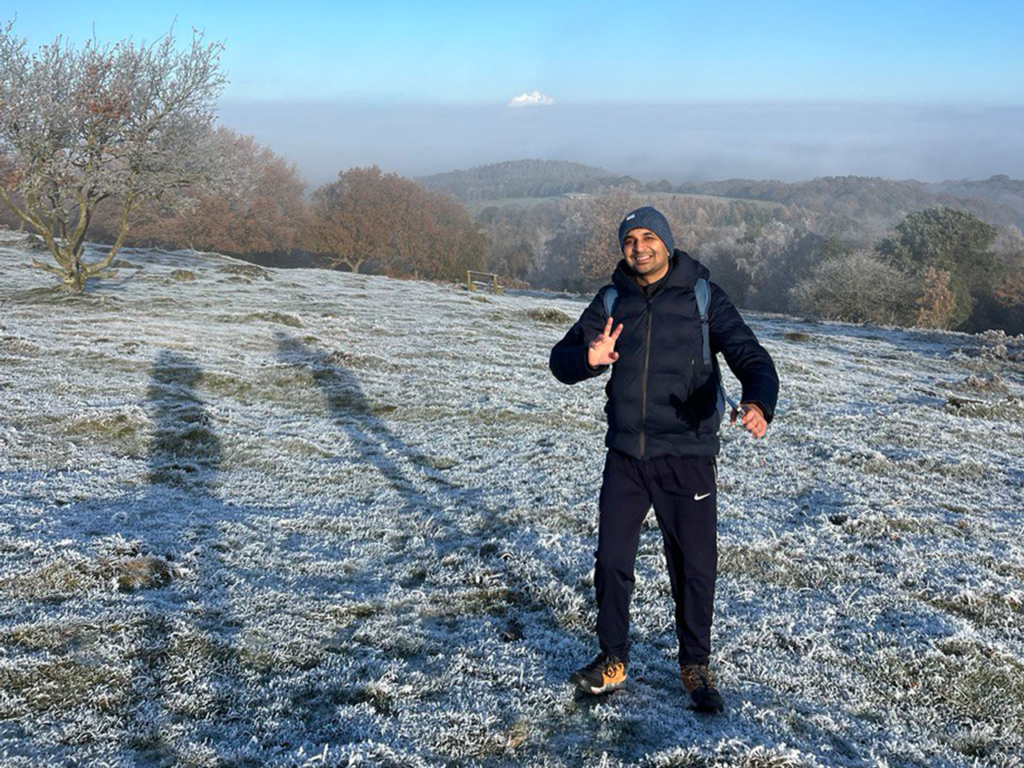
Hello! Mehul here. I am an international student from Singapore pursuing my master’s degree in User Experience and Service Design at Loughborough University. I will be sharing my experience living abroad on my own for the first time to that of my time in this quaint city and wonderful campus.
Before starting my master’s, I made a career transition from communications to marketing to UX design in the public sector. I was intrigued by how design was at the forefront of most service development these days, and felt it would be a good way to have a more direct role in improving the community experience. While I was able to learn certain aspects on my own, I felt I would benefit from formal education – ensuring a deep dive into knowledge and skillsets in a dedicated learning space – to take my abilities to the next level.
Studying at Loughborough University was an easy choice. It seemed to have the most compelling course structure from all the UK universities, and offered an module options that we could choose based on our area of interest. It is also well ranked in the UK, both overall and in terms of its design school.
In terms of campuses it has one of the largest and lushest of campuses in Europe (as far as I know!) and to me that was a bonus, if I was going to spend much of my time in University.

I was fortunate to have family and friends in the UK and that made a lot of difference in getting advice or acclimatising to how things are over here. I personally did my essential shopping in London where the variety is larger and had the good fortune of driving up to Loughborough. There are coaches available from Heathrow airport for students which would probably be the most convenient way otherwise. I would also encourage checking out the Loughborough website or reaching out to your admin contact for any advice.
Transiting back to studies
Having worked for quite a number of years, I received views on going back to studies from peers.
“It’s not easy to get back into studies.”
“What inspired you to study now?”
“You can just pick up (skills) on the go, it’s the best way.”
And while it was not the easiest decision, factoring multiple considerations, it was one that I was determined to undertake. And I was grateful for the support from bosses, family and friends alike.
Going with a positive mindset is important and I will admit it may not have been enough. After all I was away from books and notes for a really long time. It was important to be adaptable and pick up what is expected of us through experience or seeking any assistance early.
The experience has been refreshing and gratifying, sans the first assignment anxiety(!), and the back to school wheels have been smoother since.
Finding work-life balance
Whether in studying or working, it is important to have a balance lest we fizzle out. While I have not always been successful, I have attempted to pace my studies against other aspects of life such as socialising, sports, ad-hoc ambassador work in the University, or just taking the time to relax. Personally I found the use of calendars and sticky notes to be most helpful in planning my time or organising my thoughts. This helped me list upcoming tasks or activities into more attainable or manageable means, without feeling overwhelemed. I would typically make lists on a Sunday and 1-2 times on following weekdays (the satisfaction of striking out tasks is real!).
Migrating to new a country
Moving to a new country is indeed an experience. And while I was fortunate to already know some people in the UK and a cousin who studied at Loughborough University, it is something you will only truly be comfortable with through experience. I recall feeling a little homesick, particularly during winter (Imagine darkness when you go to school and darkness when you get home. Brr!), and that’s something that many of us may experience. I navigated it by meeting up with people, calling folks back home, decorating my room and workstation or listening to music.
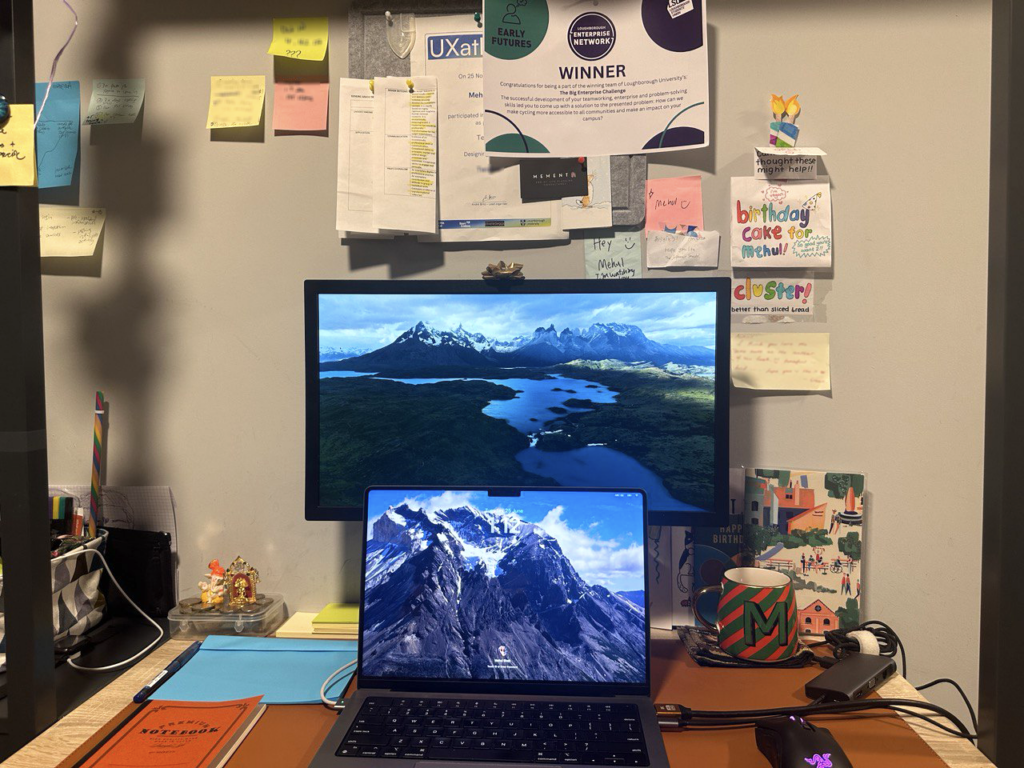
Home away from home
While living on or off campus have their merits, I opted to stay off campus in private student accommodation. The main rationale was to have that segmentation between being in university and being at home, as well as being closer to grocery outlets and other facilities. It has generally been a good experience and many of our friends gather in the area to study or to hang out.
Loughborough is not a big town – you could probably walk from your accommodation to your university building within 30 minutes. On that point it is important to choose your accommodation strategically.
Sharing my two cents
Choosing the right course, in my opinion, is slightly more important than choosing the university. You are going to spend a large chunk of the next year on lectures and tutorials and you want to ensure that you’re studying topics that you are interested in or that can give you a boost in your career.
Despite rearing its head only at the end of this article (and hopefully you made it this far!), the single most important thing is finding your people. A solid friend circle and support system is important and something that could completely change your university experience, especially as an international student. I would encourage you to proactively get to know people in your class as these are people who you will probably spend most time with it, and gradually you will find the like minded ones. It could be as simple as walking to school or to the park, having meals or tea together, and in our case the occasional game sessions.
Sports and societies, networking sessions or even common areas in student accomodations could also be great ways to get to bond with people over common interests.
Being in Loughborough has taught and affirmed several things for me, and it has been an enriching experience that I will take with me back to my career and to the “real world”. After all we are not alone, everyone is trying to grow and learn in their time here.
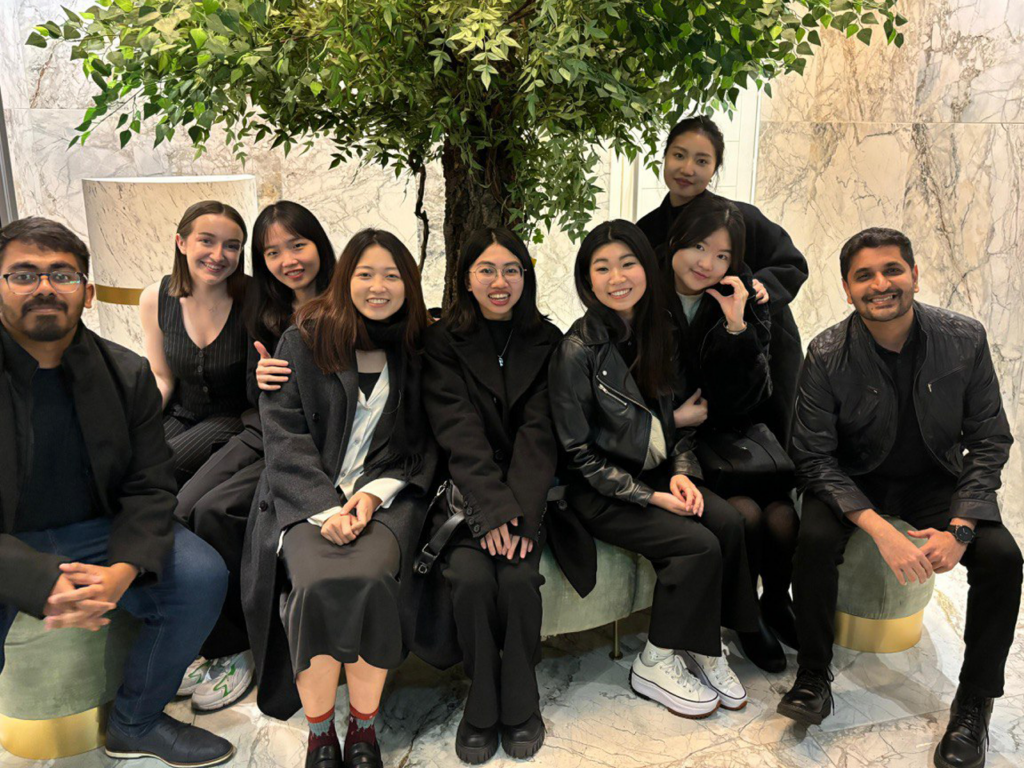
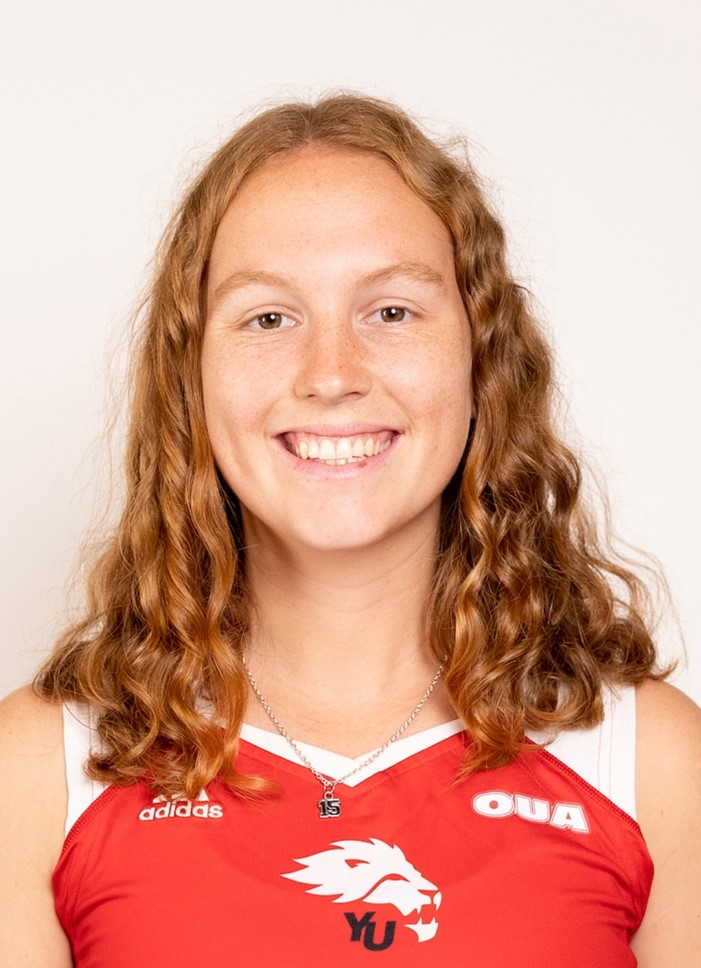
From Toronto to London – Struggles and Successes
Frankie St. Louis, MSc Sport Business & Leadership
As soon as I read online that Loughborough University was the #1 university in the world for sport-related subjects, I knew I had to apply. Coming from Canada, I had never heard of Loughborough before, but I knew I wanted the experience of studying and living abroad. It was a dream of mine to live in London, so when I found out about the Loughborough London campus it was even more perfect!
I didn’t want to get my hopes up because I knew it was #1 in the world, and I was truly shocked when I got in. I accepted the offer the same day it was offered. From that point on the planning began – as a Type A personality I love to plan in advance. However, I soon came to realize that when moving across the ocean, not everything can be done in advance.
I was able to set up my student account, select courses and apply for accommodation while I was still in Canada. And this brought ease to my mind because having a room in a hall of residence meant I one hundred percent had a place to stay for the entire year. Although when I attempted to set up a British bank account and a phone plan from oversees, I was unsuccessful.
Fast forward to my first day arriving in London, the day started smooth. I checked into my residence, I had a “starter kit” there waiting for me with towels, bed sheets, and kitchen supplies, everything was working out! Feeling good, I decided to go to the mall to set up a bank account and get a phone plan. This is where I hit a roadblock.
“You can’t set up a bank account without two documents proving your address, your lease alone does not count” – this is what the banker told me. So, I left and tried to set up a phone plan and the phone store worker told me, “You can’t set up a phone plan without a British bank account”. At this point I was feeling defeated and jet lagged, so I gave up.
I soon found out that Loughborough University can provide an official letter proving your address. This allowed me to set up a bank account, which allowed me to set up a phone plan! It all worked out in the end, I just had to be patient and take it day by day.
After that initial hiccup, life in London has been fantastic! I have joined a hockey club, a local gym with fitness classes, and I have made friends and found community at Loughborough London.
The Loughborough London block-teaching model makes it easy to balance social life, hobbies, school, and work. The block-teaching model means you only have one course at a time for four weeks. This allows you to focus on one subject and one assignment at a time. Compared to undergrad I feel that I am better able to create quality work and absorb more information. It has made the experience relatively low-stress and fun!
Overall moving to a different country is a lot of work and can be scary. But Loughborough has provided plenty of support. The community that you feel on campus is fantastic and it makes you feel at home away from home.

How does Xi Jinping make sense of the World?
By Leah Knorren Nichols
I’m a final year student at Loughborough University studying International Relations (BA). I have been at Loughborough for 4 years, which included both a study abroad at Lund University (Sweden) and a placement with a start-up in Hamburg (Germany). My course allowed me to expand my knowledge in many areas and explore topics I’m most interested in such as the Politics of the Asia-Pacific and the Middle East. I have accepted an offer for postgraduate studies at the University of Warwick.
After travelling to China when I was younger, I developed an interest in Chinese culture, history and politics and at university, I was able to take Chinese Mandarin lessons. During my second year, I took a module called ‘Foreign Policy Analysis’ that I thoroughly enjoyed and decided to write about Chinese Foreign Policy under Xi Jinping, the current Chinese President. This later became the basis for further research and laid the foundations for my dissertation.
For my dissertation, I was therefore able to combine my interest in Chinese politics and Foreign Policy Analysis. By researching contemporary Chinese foreign policies, I found four initiatives proposed by Xi Jinping from 2012 until 2022: the Belt and Road Initiative (BRI), Global Development (GDI), Global Security Initiative (GSI) and Global Civilisation Initiative (GCI). They are ambitious initiatives of international cooperation in the area of development, security and diplomatic policies that Western academics are seeking to better understand. According to Chinese academics, all four initiatives are linked in their aim to establish a new world order and Chinese media have praised the initiatives. Amongst Western academics, the initiatives are puzzling, and many are wary of China’s intentions. However, if these projects are successful, they have the potential to rewrite current norms and rules of the international system according to Beijing’s vision. For politicians and academics alike, it is therefore highly relevant to understand the reasons behind the initiatives.
I thus set out to make sense of the rationale of these initiatives. Researching the initiatives made me wonder how much the reasoning behind these initiatives can be traced back to Xi Jinping and his beliefs. Since assuming office, Xi Jinping has been able to exert a tight control on both the party and the state, not seen since Mao Zedong. I thus adopted the cognitive approach of Foreign Policy that focuses on the individual decision-maker in explaining foreign policy decision-making. By drawing on both primary data (i.e. his speeches) and secondary data (i.e. biographies), I created a robust framework of analysis to understand Xi Jinping, the person, and his current foreign policies.
I found that Xi is a deeply historical person who is often found reminiscing about China’s past glories, and he is often found using historical analogies to make sense of the present. For example, he is influenced by the narrative of the ‘Century of Humiliation’, a period where China was the victim of foreign aggression and colonial rule from the 19th century onwards. Xi blames the West and Japan for the once great Chinese Empire to have fallen behind. Based on his perception of history, Xi sees it as his historic responsibility to not let the past repeat itself and to restore China’s past glory. According to Xi’s beliefs-set, he now believes China should become a leader and not a bystander in global affairs anymore. The initiatives set out to do exactly this: rejuvenate the nation and become a leader in the area of development and security policies as well as diplomatic relations. Whether or not these projects will achieve their aim is yet to be seen and until today, they remain vague policies of international cooperation. But, especially amongst non-Western countries, the initiatives are welcomed with open arms.
Completing this work was a challenging but very rewarding task. It included many hours reading propaganda and analysing Xi’s speeches. Through my research, I hope to have shed some more light on contemporary Chinese Foreign Policy under Xi Jinping. I am grateful for the support and advice offered by my dissertation supervisor, Taku Tamaki, throughout this project.
Short Reading List:
- Breuning, M. (2007) ‘Foreign Policy Analysis: A Comparative Introduction. New York: Palgrave Macmillan.
- Brown, K. (2016) CEO, China: The Rise of Xi Jinping. London: I.B. Tauris.
- Brown, K. (2018) The World According to Xi: Everything You Need to Know About the New China. London: I.B. Tauris.
- Chang-Liao, N. (2016b) ‘The sources of China’s assertiveness: the system, domestic politics or leadership preferences?’, International Affairs, 92(4), pp. 817–833. Available at: https://doi.org/10.1111/1468-2346.12655.
- Holsti, O.R. (1976) ‘Cognitive Process Approaches to Decision-Making’, American Behavioral Scientist, 20(1), pp. 11–32. Available at: https://doi.org/10.1177/000276427602000103.
- Lin, A. et al. (2022) All the Emperor’s men, Financial Times. Available at: https://ig.ft.com/xi- jinping-emperors-men/

This Week at Loughborough | 24 June
General:
Ideas to Impact Loughborough 2024
24-25 June 2024, 9am-4.30pm, Start-Up Labs (STEMLab)
The Ideas to Impact Loughborough (i2i Loughborough) bootcamp has been launched to support PhD students and early career researchers to take their research out of the lab and into the market. PhD students and early career researchers across all disciplines interested in developing their commercial acumen are encouraged to participate.
The programme will consist of two interconnecting sessions:
- A two-day bootcamp on 24 and 25 June
- A hybrid pitch day on 2 July
The two-day bootcamp will be hosted by Loughborough’s Intellectual Property Management and Commercialisation team.
IAS Seminar: Geopolitics and Statelessness in South Asia
25 June 2024, 12pm-1pm, International House/Zoom
Institute of Advanced Studies (IAS) Residential Fellow Dr Rudabeh Shahid will deliver a seminar on their research. This keynote speech addresses the issue of statelessness in South Asia, emphasising the region’s geopolitical dynamics. It begins by defining statelessness and discussing its impact on human rights. It continues by exploring historical factors that have contributed to statelessness, including the Partition of India and the legacy of colonialism.
Exhibition: The Art Schools of the Midlands
16 May-28 June 2024, 12pm-2pm, Martin Hall Exhibition Space
Martin Hall Gallery presents ‘The Art Schools of the Midlands’, the latest iteration of John Beck and Matthew Cornford’s ambitious Art School Project exploring the history and legacies of the nation’s art schools. The project combines original photography, textual and archival materials to examine the vital role art schools have played, and continue to play, in the cultural and economic life of our towns and cities.
Careers:
Dyson INWED Global Panel Session for Malaysia, Philippines, and UK
24 June 2024, 9.30am-11.30am, Online
In this session, you will receive an introduction to Dyson, an insight into the Early Careers Opportunities at Dyson, an opportunity to get to know the speakers and a panel discussion/Q&A.
UBS | Investment banking Pride event
24 June 2024, 1pm-4.30pm, Online
Interested in investment banking? Keen to learn how you, as part of the LGBTQIA+ community, would be supported and encouraged to bring your full authentic self to work here with us? Then come along to our event!
- Hear from our inspirational colleagues as they share their journey navigating the corporate world as a member of the LGBTQIA+ community.
- Get recruitment ready with our interactive skills session.
- Network with our team and members of our Pride and Allies employee network from across the business.
AICPA & CIMA: How to tackle assessment centres
28 June 2024, 12pm-1pm, Online
The session is aimed at helping you with your career and giving you an insight into an employer’s assessment centre. As you are probably aware assessment centres are a great way for employers to evaluate how you respond to different situations, tasks and tests. Assessors can observe first-hand how you behave and work within a team, how you approach assignments and how you apply your skills and knowledge during a variety of activities.

Five minutes with: Imogen Heaton
What’s your job title and how long have you been at Loughborough?
I’ve been here three years and I’m a Technical Tutor.
Tell us what a typical day in your job looks like?
Everyday varies greatly between year groups and semesters. The day often starts with the age-old technician question; what instrument is broken today? Then onto teaching, putting out (metaphoric) fires as they arise during the sessions and making sure all students leave the lab with the data they need for assessments.
Outside of my core teaching, I am also one of the Professional Services Voices on the Maia committee. I always look forward to Maia events as they are such a great way to meet colleagues across campus. I’ve also learnt some new skills and I especially enjoyed the self-defence class at the last International Women’s Day. I also work with other technicians in a sustainability group to promote improving sustainability within labs and building a network of support and best practices.
What’s your favourite project you’ve worked on?
My favourite project to be involved with has been the introduction of Technical Apprentices across the University. I developed pathways for the science laboratory apprentices with the input of other colleagues and was lucky enough to employ Michael as an apprentice in my lab. Michael is now moving onto his next placement, but over the last six months it’s been brilliant having him in the lab, partly because he bakes the most amazing sweet treats for the tech team, partly because he’s taken total ownership of glassware prep and tests out new experiment ideas with enthusiasm.
What is your proudest moment at Loughborough?
My proudest moment happens yearly when our Chemistry students graduate. I am always so happy to have watched them develop year on year and to hear their plans post-graduation. It will be extra special this year as my first part A cohort will be graduating.
Tell us something you do outside of work that we might not know about?
I play a lot of tennis. Although if you have ever worked with me you will know this as I talk a lot about tennis and during the summer match season I often hobble into work complaining that being another year older seems to add another injury to the list!
What is your favourite quote?
“Face your fears; live your passions, be dedicated to your truth.” – Billie Jean King
If you would like to feature in ‘5 Minutes With’, or you work with someone who you think would be great to include, please email Sadie Gration at S.Gration@lboro.ac.uk.
Juneteenth – what’s it all about?
Juneteenth, which takes place on 19 June, is a celebration of the freedom, culture and empowerment of African-Americans.
You may have heard the term and noticed media coverage about Juneteenth recently; indeed there has been an increase in Juneteenth celebrations in the past few years. You may have also noticed the word ‘Juneteenth’ is a joining together of the words “June” and “nineteenth”. But what is this day actually about?
What is Juneteenth?
Juneteenth marks the day in 1865 when the last enslaved people in the United States – in Galveston, Texas – learned they were free. President Abraham Lincoln signed the Emancipation Proclamation in January 1963. But, the law could not be enforced in the state of Texas which was still under confederate control. It would be another two and a half years before the news of freedom would reach enslaved African Americans in the state of Texas. This is why Juneteenth is seen by many as the end of slavery.
Why has there been renewed interest?
Although Juneteenth was declared a state holiday in Texas in 1980, with many states soon following suit, it would take decades of campaigning for the day to be nationally recognised. As the Black Lives Matter campaign movement, spurred by the police killings of George Floyd and Breonna Taylor, gained momentum, President Biden signed legislation in 2021 that made Juneteenth a federal holiday.
Why is it still important?
Today, Juneteenth is a day to celebrate as well as to reflect. It is an opportunity to recognise the sacrifices made for civil rights and to draw attention to racial inequalities. In the late 19th and early 20th centuries, Black communities in Southern states collectively purchased lots of land on the outskirts of town to host their Juneteenth celebrations – because segregation laws meant they could not safely gather anywhere else. Today, the state of Florida education board has revised history standards which includes teaching pupils that African Americans benefitted from slavery. Juneteenth marks the emancipation of enslaved people in the US but racism, discrimination and the legacy of slavery are still to be dismantled.
The Smithsonian Museum, Washington, DC, have a Juneteenth Digital Toolkit to help you learn more about the history of the day and its significance today.
My experience volunteering as a student at Loughborough University
In the bustling streets of Mumbai, India, I had a dream, a passion for sports, and a big goal: to pursue a master’s degree in Sport and Exercise Psychology at Loughborough University. Little did I know that this dream would take me on a thrilling journey filled with incredible experiences and unexpected opportunities.
I set off from Mumbai to Loughborough, excited about what the University had to offer. Stepping onto campus at Loughborough University felt like entering a world of endless possibilities and a place where I would be able to take advantage of many opportunities.
While my studies delved deep into the psychology of sport, it was my involvement in volunteering that enhanced my experience at Loughborough. The BUCS Big Wednesday event became my first big opportunity, where I immersed myself in the exciting atmosphere of university sports. From scoring matches to orchestrating presentation ceremonies, each task was a labour of love, fuelled by my passion for sports and community.
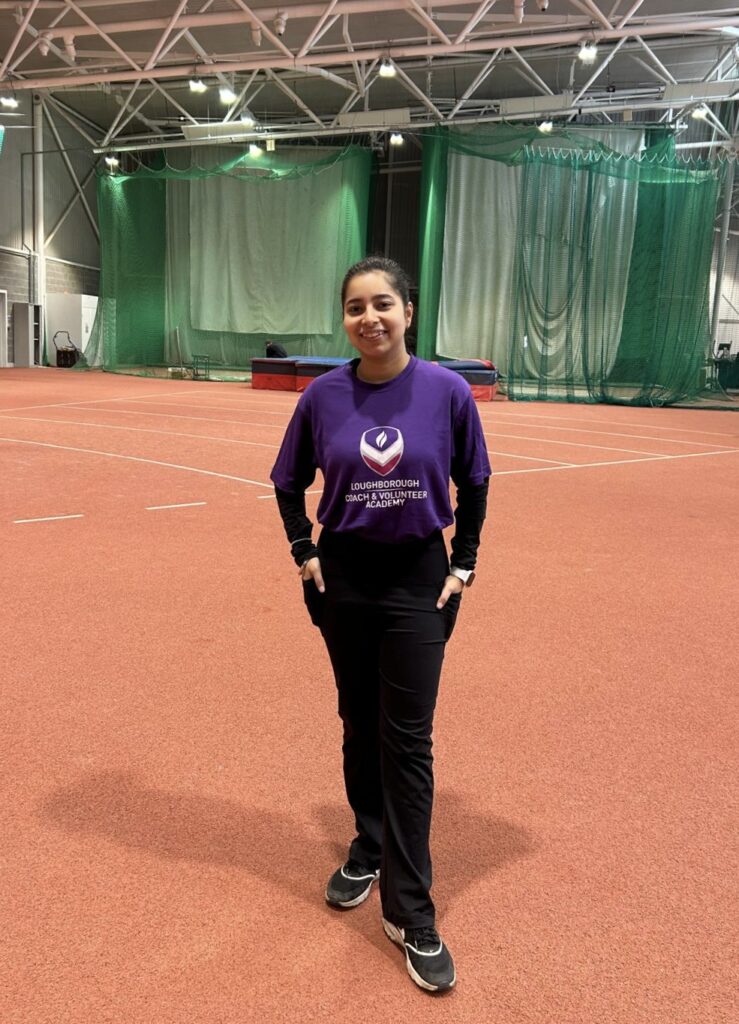
But the day’s highlight came during the nail-biting final match, where the Loughborough Women’s Football Team faced off against Durham University. Amidst the tension and excitement, I witnessed the power of sports to unite and inspire, and when Loughborough claimed victory in a penalty shootout, I couldn’t help but feel an overwhelming sense of pride and belonging. In that moment, I realised that my passion for sport was a driving force that fuelled my desire to make a difference, both on and off the field. As I stood amidst the celebrations, I knew that I was exactly where I was meant to be – as a dedicated volunteer, championing the values of the Loughborough community.
Beyond the events held on campus, I have also been involved on various opportunities outside of the University, including volunteering with Volleyball England. At Volleyball England, I captured content for their media team, witnessing, firsthand, the intensity and camaraderie of the sport. Each experience I have volunteering allows for a deeper appreciation of the transformative power of sports in bringing people together.
In the run up to my greatest volunteering achievement yet – assisting at the UEFA Champions League Final at the iconic Wembley Stadium in London – I can’t help but reflect on the lessons I’ve learned along the way. Reflecting on over 80 hours of volunteering, I have realised the importance of seizing every opportunity and embracing new challenges with enthusiasm and determination. Volunteering isn’t just about giving back; it’s about personal growth, building connections, and discovering the true extent of my capabilities.
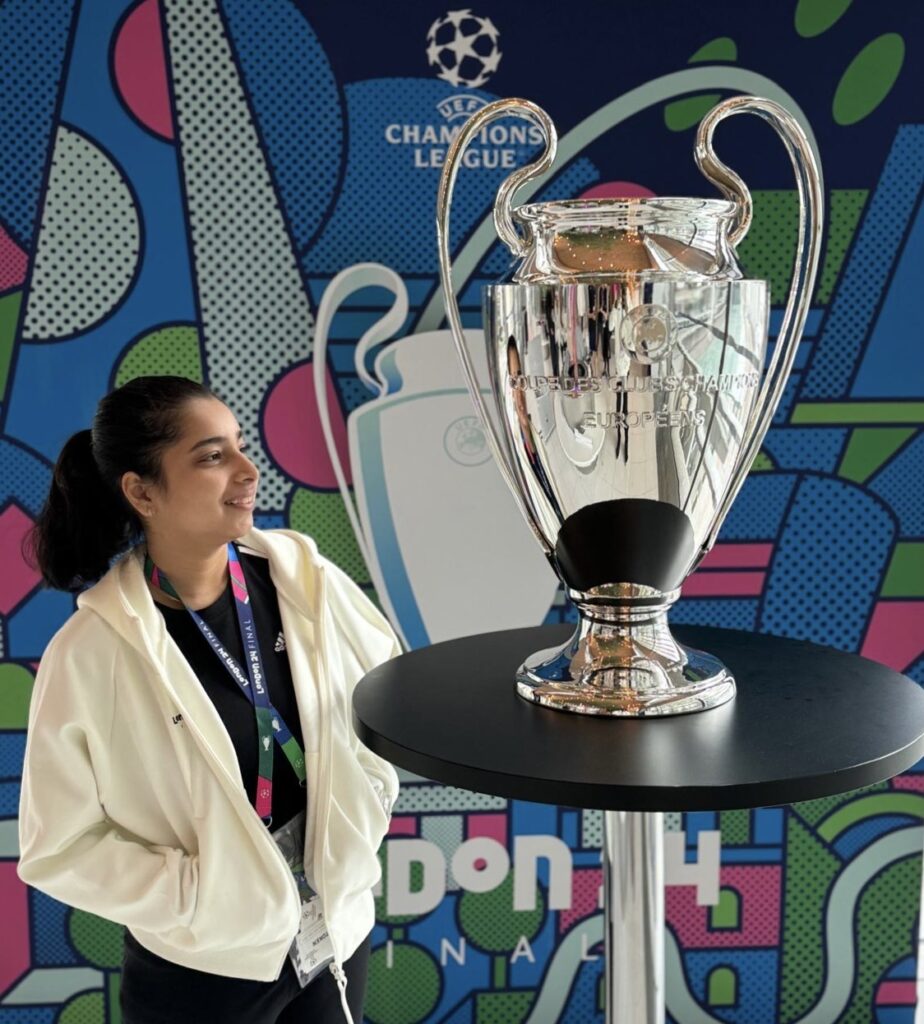
To anyone embarking on a similar journey, I advise you to enter every opportunity with an open mind. Whether you’re passionate about sports or simply seeking personal growth, volunteering is a great way to unlock a world of possibilities. Approach each task with dedication and passion, and you’ll be amazed at the doors it can open and the experiences it can bring.
Students can get involved with volunteering at Loughborough through many groups around the University, including the Coaching and Volunteering Academy and the Action group at Loughborough Students’ Union (LSU). Committee positions within Athletic Union clubs, LSU societies, and Halls of Residence are available, offering a range of role and experiences the enhance your time at Loughborough.
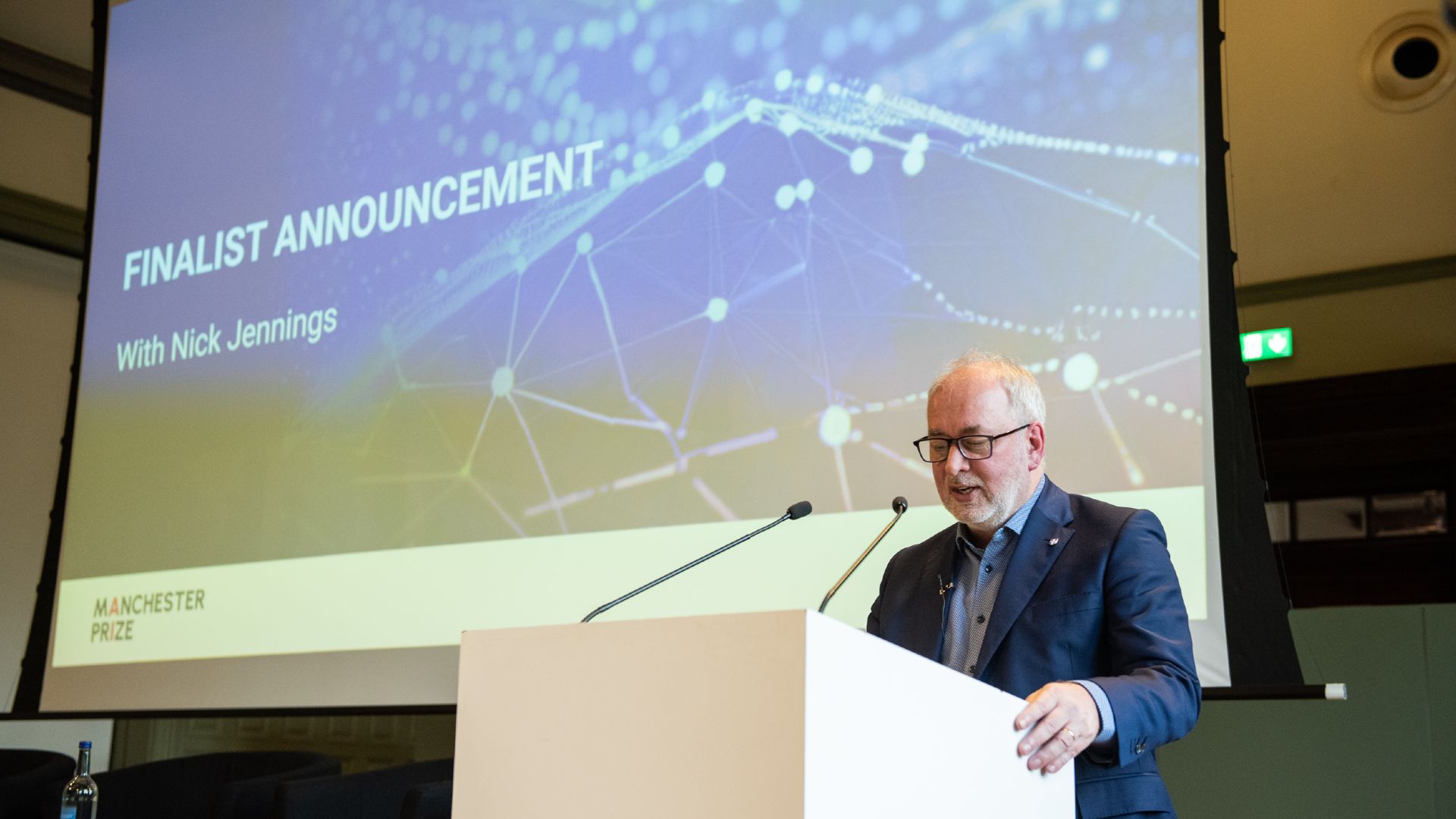
Behind the Manchester Prize: Nick Jennings on the journey of the Finalist teams
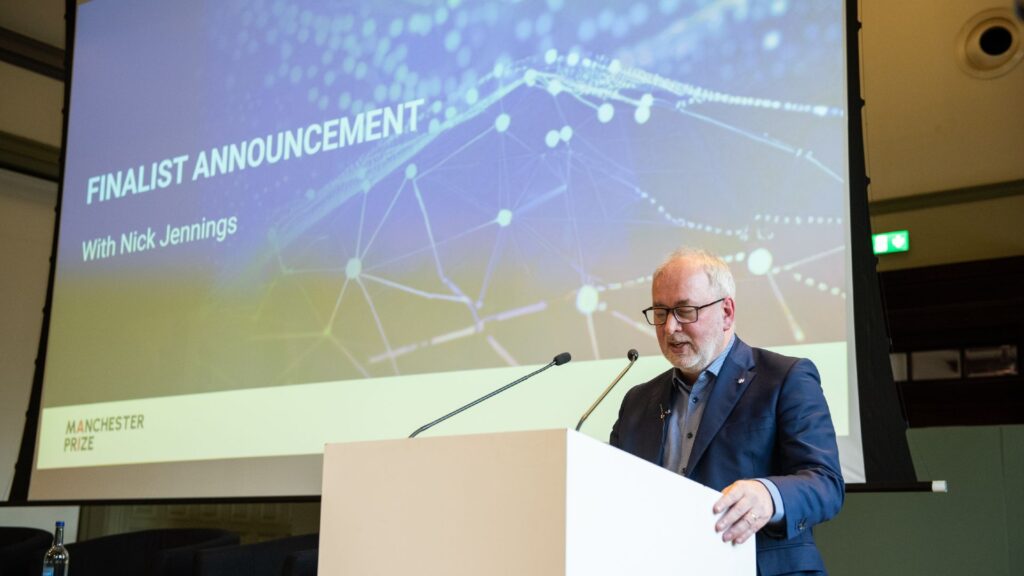
This article was originally published on the Manchester Prize website on 17 June 2024.
Chair of the Manchester Prize judging panel and Vice-Chancellor and President of Loughborough University, Professor Nick Jennings, shares his reflections on the 10 finalist teams and their trailblazing innovations.
The inaugural Manchester Prize, which launched in December 2023 and is set to conclude in March 2025, supports UK-led teams to overcome challenges in the fields of energy, environment and infrastructure through groundbreaking AI innovation. As an AI researcher with over 30 years experience, it is a topic close to my heart, and it is fantastic to see the importance of this work being recognised by the government, with a clear commitment to support those engaged in the application of AI for public good.
I am delighted and honoured to be the inaugural chair of the Prize, and relish this opportunity to shine a light on some of the nation’s brightest minds. Our goal with the Manchester Prize is to create a prestigious award that highlights the positive impact AI can have on society, and I am particularly enthusiastic about the idea of a Prize that actively contributes to the development of new solutions, rather than merely rewarding past achievements.
Through the application of pioneering new work, we can drive change and make a real difference to the world around us. While much attention has – rightly – been placed on the safety and risks of AI, we must also ensure we make the most of the significant potential that this technology holds to improve lives when used responsibly. In the coming years, we will see ever more fascinating and impactful applications of AI come to the fore. These applications will profoundly affect our lives, our society, and our planet.
Building on feedback received from a wide range of stakeholders, a tailored package of non-financial support has been created to navigate the complexities of the intellectual property of AI, prepare the teams for future investment, and support with business strategies that are both sustainable and ethical. The prize also offers computational resources, matchmaking opportunities and other essential assistance to help the finalists succeed. For example, on top of the £100,000 grant received by each of the ten finalists, the teams will be reimbursed up to £90,000 for spending on compute to develop or test their AI systems.
The benefits of a multidisciplinary approach
When the entry period ended, we had almost 300 eligible innovations for the prize, with an impressive 425 entrants represented across the various teams. Entries to the Prize came from across the UK, with nearly 20% coming from the North East and North West of England. Of the 240 entries which passed the initial eligibility screening, 65% came from solo organisations, 18% from a group of organisations, 12% from a group of individuals and 5% from sole individuals.
These ten finalists have the potential to significantly improve life in the UK by addressing critical issues in energy, environment, and infrastructure. Projects like Aiolus and Quartz Solar AI Nowcasting aim to enhance renewable energy efficiency and improve air quality for future generations, while AssetScan and TraffEase are set to revolutionise infrastructure maintenance and urban planning, which could help to make people’s day-to-day journeys more comfortable and safe. Collectively, these AI-driven solutions promise to create more sustainable, efficient, and resilient communities, and have the potential to dramatically improve the lives of millions.
It’s been exciting to see how teams have taken a multidisciplinary approach to their innovations, with organisations coming together from different fields to collaboratively produce their entries. For example, Phytoform Labs is an agricultural biotech startup which brings together 13 PhDs and professionals in genome engineering, data science and agriculture to work on their project, CRE.AI.TIVE. Similarly, Quartz Solar AI Nowcasting is led by Open Climate Fix, a non-profit product lab focused on reducing greenhouse gas emissions as rapidly as possible, in partnership with data science and AI powerhouse, The Alan Turing Institute.
A multidisciplinary approach is crucial for tackling the complex issues in energy, environment, and infrastructure, particularly when integrating AI. By combining expertise from an array of fields such as engineering, environmental science and data analytics, we can develop comprehensive solutions that address the multifaceted nature of these problems. This collaborative method ensures that AI applications are not only technologically advanced but also practical, sustainable, and socially responsible, leading to more robust and innovative solutions that can effectively address the challenges of our time.
The next steps
A pattern that emerged from the selected finalist applications was the optimism they showed for the future of UK AI development. As judges, our role was to assess how these developments might translate into tangible and viable long-term societal benefits. The AI solutions selected are forward-looking, and present novel ways to overcome the most pressing challenges facing society, whether that relates to waste systems, the energy grid, food supply chains or transportation.
Over the next seven months, the 10 teams will be working with key stakeholders including problem-holders, potential adopters and investors, to develop their solutions ahead of a prototype demonstration workshop in January 2025. I am incredibly excited to monitor their progress and see how far they develop their innovations by the start of next year.
While securing the £1 million Grand Prize is the ultimate goal, all teams should be striving to make the most of the profile and opportunities presented to them by this initiative. The experience they will gain over the next few months, from networking opportunities to tailored support sessions, will be invaluable, and is why the Manchester Prize will be a beacon for excellence in AI innovation in the UK.
The 10 finalist teams:
Energy solutions
Four of the 10 finalists are addressing the key issues in the energy sector, from managing solar resources, to revolutionising battery manufacturing.
- Quartz Solar AI Nowcasting uses generative AI to decarbonise the UK’s energy grid through better forecasting of cloud movements. By leveraging satellite imagery and live solar generation data, it can help better manage solar energy resources and balance a renewables heavy grid.
- AIOLUS uses Deep Reinforcement Learning for improving wind farm efficiency, simultaneously boosting energy capacity, lowering the average cost of electricity, and accelerating the UK towards its Net Zero target.
- Polaron uses generative AI to optimise energy material manufacturing, using algorithms to rapidly analyse potential material designs and identify the best manufacturing processes to maximise performance.
- EvoPhase Explore provides an AI-driven approach to optimising industrial equipment for economic and environmental impact. It leverages evolutionary algorithms to reduce energy consumption, minimise waste, and enhance overall efficiency in manufacturing processes.
Environmental solutions
Four of the 10 finalists aim to provide solutions to problems facing the environment, from future-proofing crops, to improving the UK’s quality of water.
- CRE.AI.TIVE learns about the genome of plants and accelerates the search for useful mutations to increase the resilience of crops, helping to reduce the threat of global food insecurity.
- Greyparrot leverages AI and image processing to improve the traceability of consumer packaged goods, supporting the value chain to improve packaging design, policy making and recycling rates.
- Sapphire reduces water pollution from storm overflows, agriculture, and urban spaces in order to improve water quality, by integrating observed data and computer model outputs into an AI platform, incorporating more sources of pollution, and producing faster results than traditional methods
- gAIn Water uses deep learning models & adaptive reinforcement learning agents to forecast water demand, provide alerts about system failures, and identify potential supply shortages.
Infrastructure solutions
Two of the 10 finalists are focussing on the issues facing UK infrastructure, and aim to improve mobility and more efficiently maintain our nation’s buildings.
This Week at Loughborough | 17 June
General:
Preparing for a world of “AI Everywhere”
17 June 2024, 3pm-4pm, EHB110A (Edward Herbert Building)
We are delighted to welcome Eric Grimson, Chancellor for Academic Advancement at MIT, Professor of Computer Science, and the Bernard M. Gordon Professor of Medical Engineering. He will talk about how MIT is embedding AI and computation throughout the Institute – within the curriculum, in new degree programs, and as a central research element in almost every department.
IAS PGR Workshop – Dr Rudabeh Shahid “Bridging Disciplines and Methods”
19 June 2024, 9.30am-11.30am, International House
IAS Residential Fellow Dr Rudabeh Shahid delivers a Postgraduate Research (PGR) workshop on their research, titled “Bridging Disciplines and Methods: Enhancing Political Science through Interdisciplinary Teaching and Dynamic Simulations”
IAS Seminar: “Break free, grow tall, reach far” – a systems approach for stunting reduction
19 June 2024, 12pm-1pm, International House/Zoom
Institute of Advanced Studies (IAS) Visiting Fellow Dr Lisanne Du Plessis will deliver a seminar on their research. The nutritional status of young children in South Africa is of great concern. Stunting in a quarter of children under five is particularly alarming since it poses significant costs to health, cognitive development, schooling, and economic performance in the future.
Policy Unit GE2024 Series: Mapping the Manifestos to Loughborough’s Expertise
19 June 2024, 12pm-12.45pm, MS Teams
A big moment in every General Election campaign is when the parties unveil their manifestos to tell us in writing what they would do if they were to enter government. In this GE24 session, Paddy Smith will be going through the manifestos and zooming in on the areas in which Loughborough University has research strengths and expertise.
Summer Showcase 2024
19 June 2024, 9am-3pm, James France Building/Online
The Doctoral College and Enhanced Academic Practice (Organisational Development) are delighted to announce this year’s Summer Showcase for Doctoral Researchers. The Summer Showcase is a fun event that brings doctoral researchers together from across the University to share their work via engaging, accessible and creative formats, and network in a vibrant and supportive environment.
Pride Month Zine Workshop
19 June 2024, 3pm-4pm, Pilkington Library (Seminar Room 1)
In honor of Pride Month, the Library is hosting an exciting workshop where you can unleash your creativity and contribute to a dynamic LGBTQ+ zine. Whether you’re an experienced writer, an aspiring artist, or simply someone with a story to share, this is your chance to make your voice heard and celebrate the diversity of our community.
Architecture End of Year Show 2024
19 June 2024, 2pm-6.30pm, Keith Green Building/Sir David Davies Building
Loughborough University’s annual Architecture End of Year Show is a free exhibition displaying a culmination of over 70 students’ academic journeys, showcasing their architectural works and accomplishments. The show offers a platform for emerging talents to showcase their skills, ideas, and architectural visions and for industry partners and sponsors to learn and explore new opportunities for effective collaboration. The work featured in the exhibition will revolve around the theme of circularity.
IAS Seminar – Graphic heritage: Politics, power & placemaking
20 June 2024, 12pm-1pm, International House/Zoom
Institute of Advanced Studies (IAS) Residential Fellow Dr Alison Barnes will deliver a seminar on their research. This seminar will primarily focus on two very different shopping areas within Walthamstow in London, one of which has, in part, been the recipient of a planned National Lottery funded Townscape Heritage Regeneration scheme.
Laughter Club
20 June 2024, 12.15pm-1pm, EHB217 (Chaplaincy Innerspace)
Try something new and join the University Chaplaincy for their monthly Laughter Club. Combining playfulness, laughter, and breathing for pleasure and health, laughter yoga provides a serotonin boost to help you feel good for the rest of the day.
Returners Coffee Club Launch
20 June 2024, 3pm-4pm, 1.01 Rutland
Have you recently returned to work after family leave? If so, come along to the first meeting of the Returners Coffee Club! This is an informal meet-up over coffee and pastries to support anyone returning from family leave in the last six months (or so). It will be a great chance for you to meet new people, share encouragement and experiences with other colleagues in the same boat, and get peer support with your transition back into work at the University.
Celebrating Physiology in Loughborough
20 June 2024, 1.30pm-5pm, Clyde Williams Building/CC011 (James France)
The School of Sport, Exercise and Health Sciences (SSEHS) is to be awarded a plaque by the Physiological Society to recognise the School as a centre of excellence for physiology in sport, exercise and health science.
The Physiological Society’s Excellence in Physiology Award honours institutions that are centres of excellence for physiology in either discovery or leadership. This award is presented by the Board of Trustees following recommendation from the Nominations Committee.
African/Caribbean Event
21 June 2024, 4pm-10pm, Village Bar Restaurant
Loughborough University’s REACH Staff Network warmly invites students, staff, family, friends, and the wider community to help celebrate the second African/Caribbean event to be held on campus. During the event, you will be treated to delicious and authentic African and Caribbean food, drink and entertainment.
Exhibition: The Art Schools of the Midlands
16 May-28 June 2024, 12pm-2pm, Martin Hall Exhibition Space
Martin Hall Gallery presents ‘The Art Schools of the Midlands’, the latest iteration of John Beck and Matthew Cornford’s ambitious Art School Project exploring the history and legacies of the nation’s art schools. The project combines original photography, textual and archival materials to examine the vital role art schools have played, and continue to play, in the cultural and economic life of our towns and cities.

Embracing kindness to combat loneliness
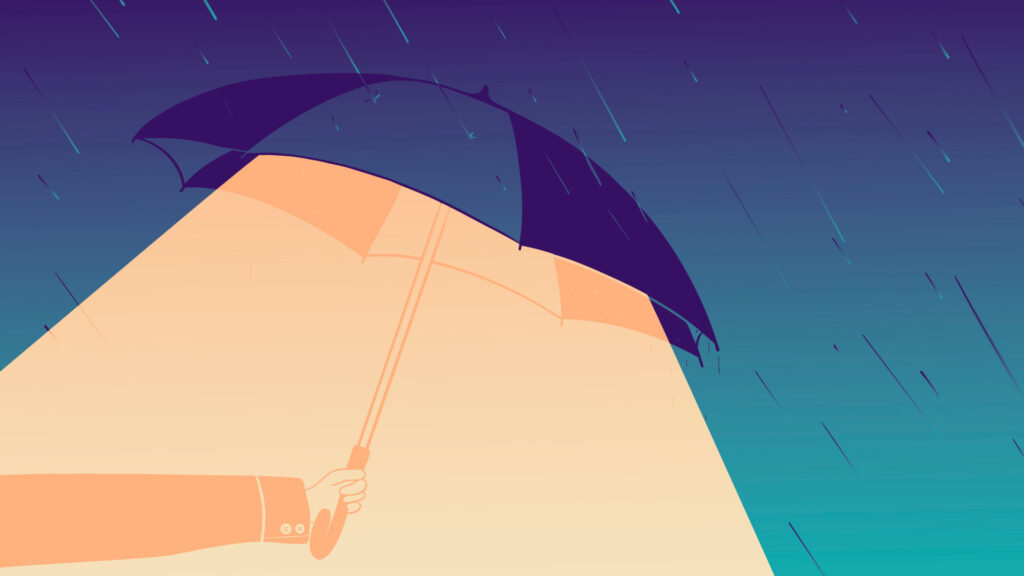
Loneliness is an invisible struggle that affects many of us. It can stem from various factors, including a lack of social connections, remote working or excessive stress.
When we feel disconnected from other people, it can lead to decreased productivity, lower morale, and health issues.
Human beings not only crave interactions, but we need them in order to thrive. Even very small interactions with others can boost a feeling of connection. In an interview from Loughborough’s Cuppa with a Scientist podcast, Professor James Goodwin, a Visiting Professor in the School of Design and Creative Arts said:
“If you’re lonely for a long period of time, that’s exceptionally damaging to your general health and to your brain health.
“Social media, emails, phone calls, letters, nice little thank you notes, talking to people – even if at a distance – helps with loneliness.
“A University of Essex researcher even found that you can alleviate loneliness just by saying hello to someone as you walk past them on the road!”
A great way to connect with others is by showing kindness. When you go about your daily activities, aim to be present in the moment, simply smiling at a stranger and a simple “How are you?” can make someone’s day and also your own.
What’s more, kindness is contagious. It has been found that witnessing an act of kindness triggers others to carry out selfless acts themselves.
This video from BBC Ideas explores the story of Bernadette Russell and what happens to your brain when you’re kind.
Challenge yourself to do an act of kindness every day
- Smile and say hello to someone you haven’t spoken to before
- Invite a colleague out for lunch
- Share positive feedback
- Send a thoughtful message
- Bring treats into the office
- Listen actively, being mindful not to use your phone during conversation
- Celebrate colleague milestones
- Organise a fun activity to do with your team
- Tidy a shared space
- Donate some of your unwanted items
- Buy from a small business
Feel-good films which may help to inspire kindness
- ‘My Neighbor Totoro’ (1988)
- ‘Little Miss Sunshine’ (2006)
- ‘Up’ (2009)
- ‘Wonder’ (2017)
- ‘Paddington’ (2014)
- ‘Dead Poets Society’ (1989)
You can also show kindness through volunteering in your local community. The University offers staff one day of paid absence per year to undertake approved volunteer work, find out more about the Supported Volunteering Policy.
If you’re thinking about volunteering in sport, there is a range of voluntary opportunities for University staff to get involved in as part of the Community Volunteer Programme. You can also find volunteering opportunities in the local area from Active Together.
You can read about different volunteering experiences from our staff members in our blog ‘5 Ways to Wellbeing: Give’.
If you want to volunteer, start small and be mindful not to overdo it. If you find yourself giving too much of your energy, this probably means it’s time to take a step back. Make sure you leave enough energy to look after yourself too.
This Week at Loughborough | 10 June
General:
IAS Friends and Fellows Coffee Morning
11 June 2024, 10.30am-12pm, International House
The Institute of Advanced Studies (IAS) is hosting an IAS Friends and Fellows Coffee Morning, joined by IAS Visiting Fellow Professor Helena Cooper-Thomas and IAS Residential Fellows for June, Dr Rudabeh Shahid and Dr Alison Barnes.
IAS Seminar: The trials and tribulations of entering a tournament workplace
11 June 2024, 12pm-1pm, International House/Zoom
Institute of Advanced Studies (IAS) Visiting Fellow Professor Helena D Cooper-Thomas will deliver a seminar on their research, fully titled ‘The trials and tribulations of entering a tournament workplace: The case of new Members of Parliament’.
RAeS: Presentation of Loughborough University MEng final year Aircraft Design projects
11 June 2024, 6.30pm, EHB110A (Edward Herbert Building)
This event is held by the Royal Aeronautical Society (RAeS) and the Loughborough University Department of Aeronautical and Automotive Engineering.
Women in Sport Research and Innovation Scoping Event
12 June 2024, 11am-12.30pm, CC029A (James France Building)
Colleagues from across the University are invited to attend an interactive research and innovation scoping event on Women in Sport led by Dr Emma Pullen (School of Sport, Exercise and Health Sciences).
The scoping event provides a forum for colleagues to feed into the development of a Women in Sport Research Hub that will be launched as part of the University Sport Core Plan and exchange ideas on hub research and innovation priorities and opportunities.
Care: critical dialogues and transdisciplinary approaches
13 June 2024, 10.30am-4.30pm, Online
The Centre for Research in Communication and Culture is hosting a one-day interdisciplinary symposium on the issue of care. It will bring together scholars from different disciplinary backgrounds who work at Loughborough University, as well as a number of invited external speakers.
Summer Ball
15 June 2024, 9pm onwards, Loughborough Students’ Union
This year’s Summer Ball theme is Mount Olympus! Celebrate the end of the year at the Summer Ball where you can expect themed rooms, live music, funfair rides, food, survivors photo, and more.
Degree Show 2024
14-16 June 2024, School of Design and Creative Arts
Captivating minds, from thought-provoking visual arts to groundbreaking design concepts, this exhibition showcases the diverse talents nurtured within our academic community. Come along to celebrate the boundless potential of the next generation shaping the future creative landscape.
Exhibition: The Art Schools of the Midlands
16 May-28 June 2024, 12pm-2pm, Martin Hall Exhibition Space
Martin Hall Gallery presents ‘The Art Schools of the Midlands’, the latest iteration of John Beck and Matthew Cornford’s ambitious Art School Project exploring the history and legacies of the nation’s art schools. The project combines original photography, textual and archival materials to examine the vital role art schools have played, and continue to play, in the cultural and economic life of our towns and cities.
Careers:
FDM – Student Summer Bootcamp
10-12 June 2024, 12pm-2pm, Zoom
Day 1 will focus on upskilling in the foundations of HTML; the building blocks of a webpage.
Day 2 will focus on enhancing your coding skills through further upskilling with an emphasis on styling a website using CSS.
Impact Teaching: Find out how you can teach abroad
11 June 2024, 6pm-7pm, Online
Join us to discover how you can explore the world whilst getting paid. Let us talk you through our programs in China, Thailand, Vietnam, Hungary and Poland. Find out how you could have the adventure of your life, meet amazing new friends, develop your workplace skills, bolster your CV and save money for whatever is next in your life.
Breakfast Study Cafes
13 June 2024, 8am-11am, SMB002 (Stewart Mason Building)
Boost your productivity on campus at the Student Success Academy’s Breakfast Study Cafes. Drop in for one, or all sessions where you can enjoy a morning study session, a free drink, and some baked goodies.
Using a study planner to set goals for the sessions, study with the Pomodoro technique in sessions one and two (8am-9am and 9am-10am), and work at your own pace in session three (10am-11am).

CRCC to host 'Care: critical dialogues & transdisciplinary approaches' symposium on June 13th
Keynote talk: Professor Jo Littler (Goldsmiths University) ‘From care to carewashing….and back again’
This one-day symposium – hosted by the Centre for Research in Communication and Culture – will showcase cutting-edge research on care from scholars at Loughborough University, as well as a number of invited external experts.
In recent years, scholarship across a wide range of disciplines has seen a ‘turn to care’ (Aust 2021), with an increasing recognition of the intrinsic interdependence and shared vulnerabilities of all human and non-human life. And yet, it is also widely acknowledged that we are living through a ‘crisis in care’, in which the material and affective capacities to reproduce and sustain life are under intensifying pressure (Fraser, 2016). Increasingly, our social needs for care are subordinated to the economic imperatives of privatisation and financialisation (Bayliss and Gideon, 2020).
As the Care Collective (2020) puts it, we live in a world in which ‘carelessness reigns’. Against this backdrop of ‘an economy of abandonment’ (Dowling, 2022), we also see an intensification of ‘self-care’ and ‘wellness’ mantras in media discourse, where hyper-individualist solutions are proffered to tackle endemic structural problems. Consumer brands increasingly coopt the language of care (Sobande 2020), contributing to a broader paradox whereby discourses of care are hyper-visible, while the public infrastructures that enable care become ever-more diminished. Meanwhile, the role of existing and new technologies presents new challenges as well as possibilities for how we value and practice care.
This event seeks to generate new insights into the urgent issue of care, by facilitating dialogue between scholars from a wide range of disciplinary traditions.
Event schedule
10.00: Welcome and introduction
10.15: Opening keynote: Professor Jo Littler (Goldsmiths University): ‘From care to carewashing….and back again’
11.15: Break
11.30: Panel 1: Care and technology
Dr Kristina Saunders (University of Glasgow)
Professor Massimiliano Zecca (Sports Technology Institute, Loughborough University)
Dr Saul Albert (Communication and Media, Loughborough University)
12.45: Lunch
13.30: Panel 2: Care and the media and cultural industries
Dr Hannah Hamad (Cardiff University)
Dr Yuval Katz (Communication and Media, Loughborough University)
Dr Jade French (English, Loughborough University)
2.45: Break
3.00: Panel 3: Health, wellbeing, and social care
Professor Alison Pilnick (Manchester Metropolitan University)
Dr Amy Cortvriend (Criminology, Sociology and Social Policy, Loughborough University)
Dr Catherine Coveny (Criminology, Sociology and Social Policy, Loughborough University)
4.15: Closing remarks
4.30: End
Attendance is free. Please click the link to reserve your place for online attendance https://www.eventbrite.co.uk/e/online-attendance-care-critical-dialogues-transdisciplinary-approaches-tickets-891841561117
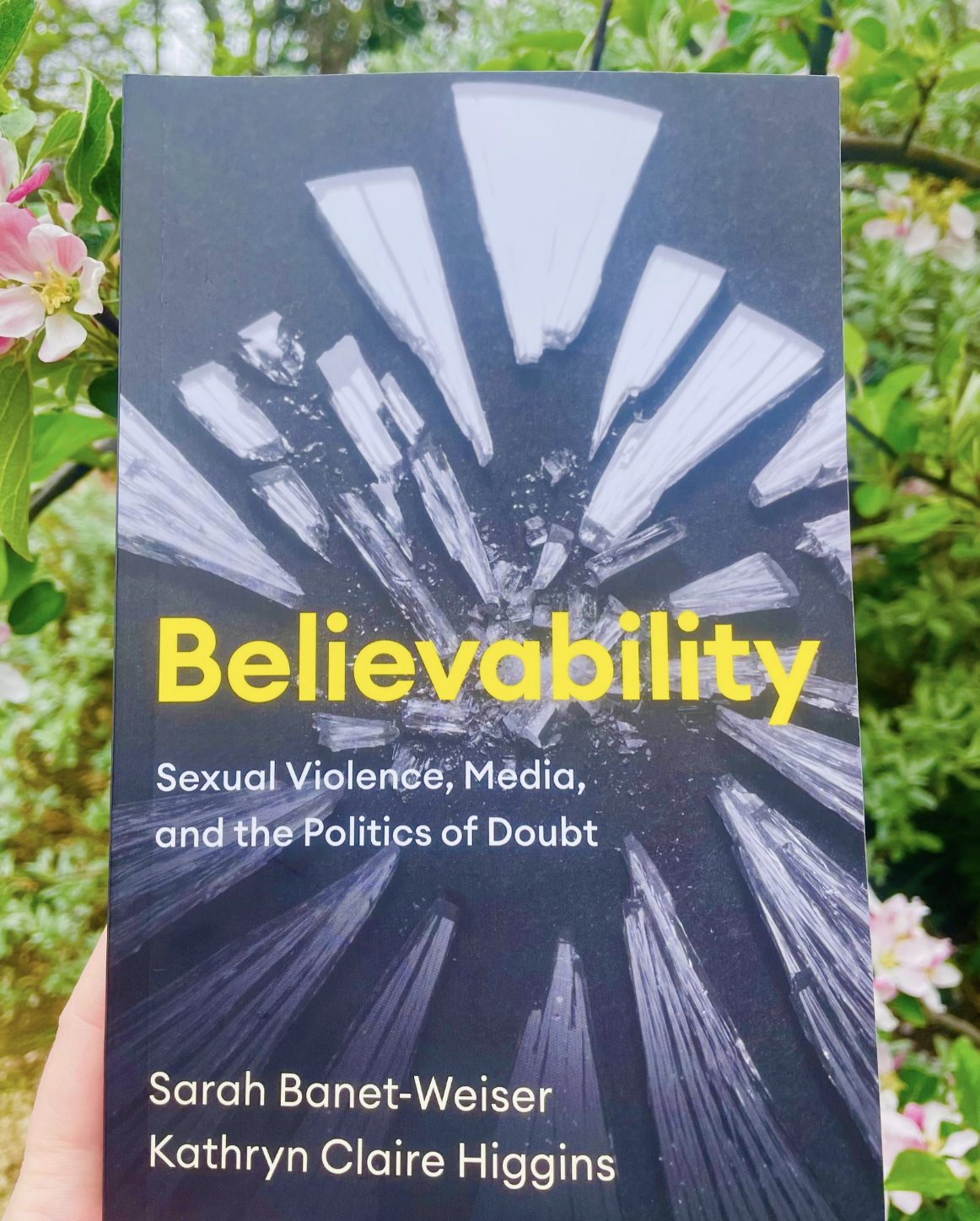
Believability: Sexual Violence, Media, and the Politics of Doubt: a roundtable discussion
A roundtable event, featuring world-leading feminist media studies scholars, will take place at Loughborough University and online on June 25.
The panel of speakers will discuss the politics of believability around sexual violence in the current conjuncture, considering how digital media is now the primary site for struggles over what (and who) is considered “believable”.
Sarah Banet-Weiser and Kathryn C. Higgins will discuss their new book Believability: Sexual Violence, Media, and the Politics of Doubt, which considers how the #MeToo movement created more opportunities for women to speak up about sexual assault. However, this moment of feminist opportunity has occurred in a time when “fake news” and “alternative facts” call into question the very nature of truth, and women and people of colour are routinely cast as “doubtable subjects”.
The authors will be in dialogue with leading feminist scholars who will reflect on the significance of this landmark book for their own work, as well as for feminist media and cultural studies more broadly.
Speakers include: Sarah Banet-Weiser (Annenberg School for Communication, University of Pennsylvania), Kathryn Claire Higgins (Goldsmiths), Hannah Hamad (Cardiff), Jilly Boyce Kay (Loughborough), Sarita Malik (Brunel), and Tanya Serisier (Birkbeck)
Chair: Eleanor Kilroy (Loughborough University)
Register for online attendance or in-person attendance
Volunteering Opportunities
Loughborough University’s buzzing campus: surveying the birds and the bees
Loughborough University showcases a green, vibrant and biodiverse campus and this has many benefits for the environment, health and wellbeing, and our social lives. Students and staff at the university are actively encouraged to enjoy the outdoor campuses in a variety of ways including taking part in our wildlife surveys. They engage – along with local volunteers and wildlife experts – in a number of surveys monitoring bumblebees, butterflies, fungi, birds, bats, moths and other insects, and these form part of our studies to document biodiversity at the Loughborough campus.
These volunteer opportunities have often featured in our sustainability blogs: here they are described together to detail the variety of surveys conducted on campus.
Our butterfly and bumblebee transects are walking routes through different environments on campus and are monitored throughout the summer, with both surveys feeding into national monitoring (Butterfly Conservation and the Bumblebee Conservation Trust).

The butterfly transect is a gentle walk of 10 sections, including an area of Holywell wood: each summer a rota is drawn up, with volunteers carrying out a weekly survey of the butterflies spotted on the route. The bumblebee survey is similar – a shorter route including our beautiful walled garden, and sometimes a little trickier to identify the different bee species!
In addition to these walking surveys, new for 2024 are FIT counts (Flower-Insect Timed Counts), in which students will be collecting data on the total number of insects that visit a particular flower over 10 minutes. The FIT counts help to monitor pollinators and can be carried out all over campus.
Alongside these, a number of experts and external partners offer students and staff the chance to join in biodiversity events on campus. In autumn the Leicestershire Fungi Group visit Holywell wood to survey the fungal species. In their recent survey of this ancient woodland, 38 different species were found in just two hours including a rare coral tooth fungus, Hieracium coralloides.

Local entomologists have surveyed on campus for several years, recording beetles, hornet moth burrows and over 180 species of moths. Bats are monitored by Leicestershire Bat Conservation Group and they have recorded eight bat species including brown long-eared bats with their stunning ears as long as their bodies.
Other wildlife surveys have included recording mistletoe on campus trees in winter and a dawn chorus spring walk to listen and record birds in Burleigh Wood.
All of these surveys offer an opportunity to observe the beauty of our wildlife up close and to learn about the various species in our locality. Our university strategy ‘Creating better futures. Together’ puts sustainability and addressing climate change and net zero at the heart of our agenda to 2030 – and these surveys are part of our Biodiversity Action Plan to support this institutional theme.
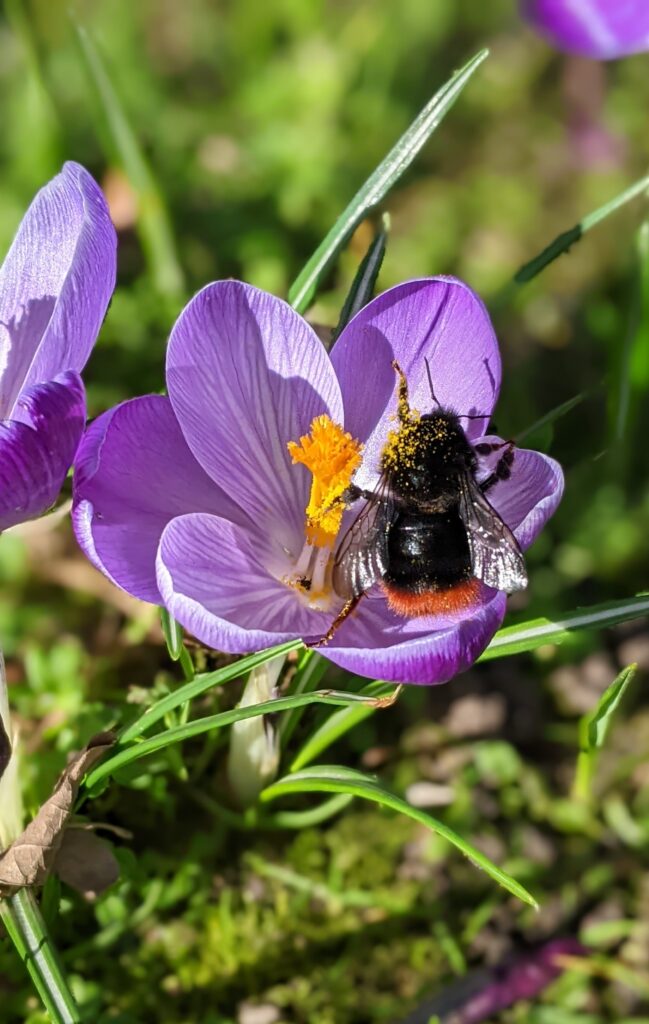
If this blog has piqued your interest and you would like to get involved in biodiversity surveys, you can see that there are lots of opportunities to volunteer. The Sustainability Team also offer roles as Sustainability Ambassadors and there are sessions to help out in our woodlands or develop wilding projects. Please contact the Sustainability Team, full training and partnerships are offered to get you up and running.
You can contact the Sustainability Team using the following email address: sustainability@mailbox.lboro.ac.uk.

This article is in support of the United Nations Sustainable Development Goal 15: Life on Land. To read more click here.
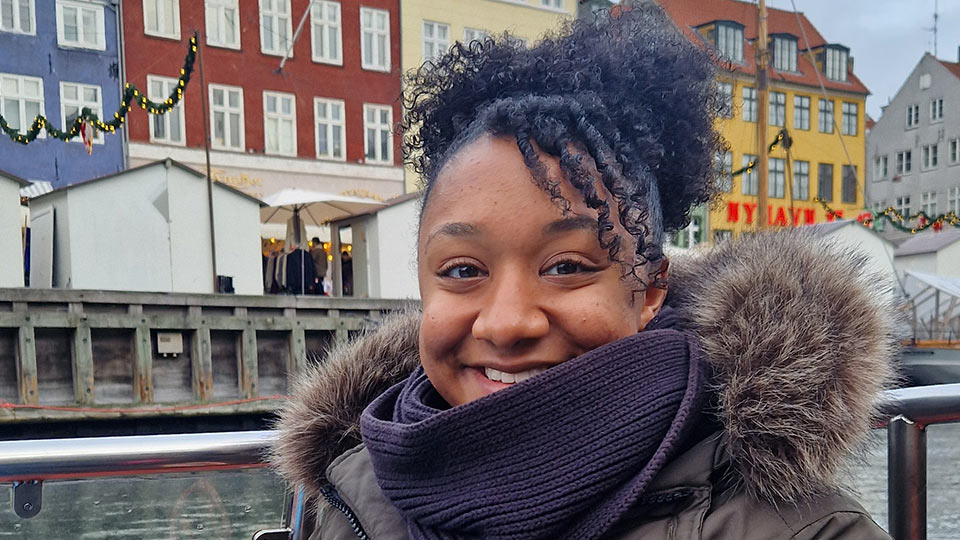
Five minutes with: Tanika Dhiri
What’s your job title and how long have you been at Loughborough?
I’m a Strategic Support Project Officer and I’ve been here three and a half years.
Tell us what a typical day in your job looks like?
I work to support the six Associate Pro Vice-Chancellors with their projects and events. The work I undertake in one day often covers elements of each of the three strategic themes (Climate Change and Net Zero/Sport, Health and Wellbeing/Vibrant and Inclusive Communities).
The first thing I do when I get into the office is have a quick morning chat with other colleagues who are in. I’ll then check my emails and see if anything high priority has come through that I may need to action. Once I’ve checked for any urgent tasks, I’ll work through my to-do list. Current projects I am progressing include supporting the University’s sustainability strategy, an AI in Sport workshop and a mapping exercise to understand the vibrant and inclusive events we host at the University.
It’s likely I’ll have a couple of meetings. Colleagues I meet frequently are either APVCs or members of the Strategic Planning Team including our Graduate Management Trainees.
At lunchtime, whether in the office or working from home, I always try to make time for a walk to get some fresh air and have a break from being at my desk.
What’s your favourite project you’ve worked on?
I feel very lucky to have worked on the Queen’s Baton Relay event, where the Baton passed through our campus ahead of the Birmingham Commonwealth Games and we hosted a celebratory sporting festival on Shirley Pearce Square. We had staff and their families, students and the local community come together to enjoy activities, entertainment and international food.
What is your proudest moment at Loughborough?
My proudest moment working at Loughborough has been leading the inaugural Vice-Chancellor’s Awards in 2022. Although it was daunting leading a project from start to finish, seeing its success was really rewarding. It was also great to have led an event that gives staff the recognition they deserve for their contributions to our University.
Tell us something you do outside of work that we might not know about?
I am quite active outside of work, I go to the gym before work every morning. My interest in keeping active goes back to when I started Taekwondo when I was six years old and I’ve been interested in sport and physical activity ever since. Now I do a lot of weight training so I have recently tried to incorporate more cardio in the form of cycling/running. Doing more cardio resulted in me running my first half marathon last year to raise money for Glaucoma UK. It would be nice to take on a different challenge this year!
What is your favourite quote?
“It’s nice to be nice” – we don’t know what others are going through so that one smile of positive interaction you have could change someone’s day for the better.
If you would like to feature in ‘5 Minutes With’, or you work with someone who you think would be great to include, please email Sadie Gration at S.Gration@lboro.ac.uk.
DRN2024 Drawing Repetition: Habitual Behaviour Recording
Recording of the third in the series of DRN2024 events exploring drawing repetition. Thank you to our speakers Lydia Halcrow, Meera Curam and Junuka Deshpande to chair Rachel Gadsden-Hayton and to everyone who attended the event.
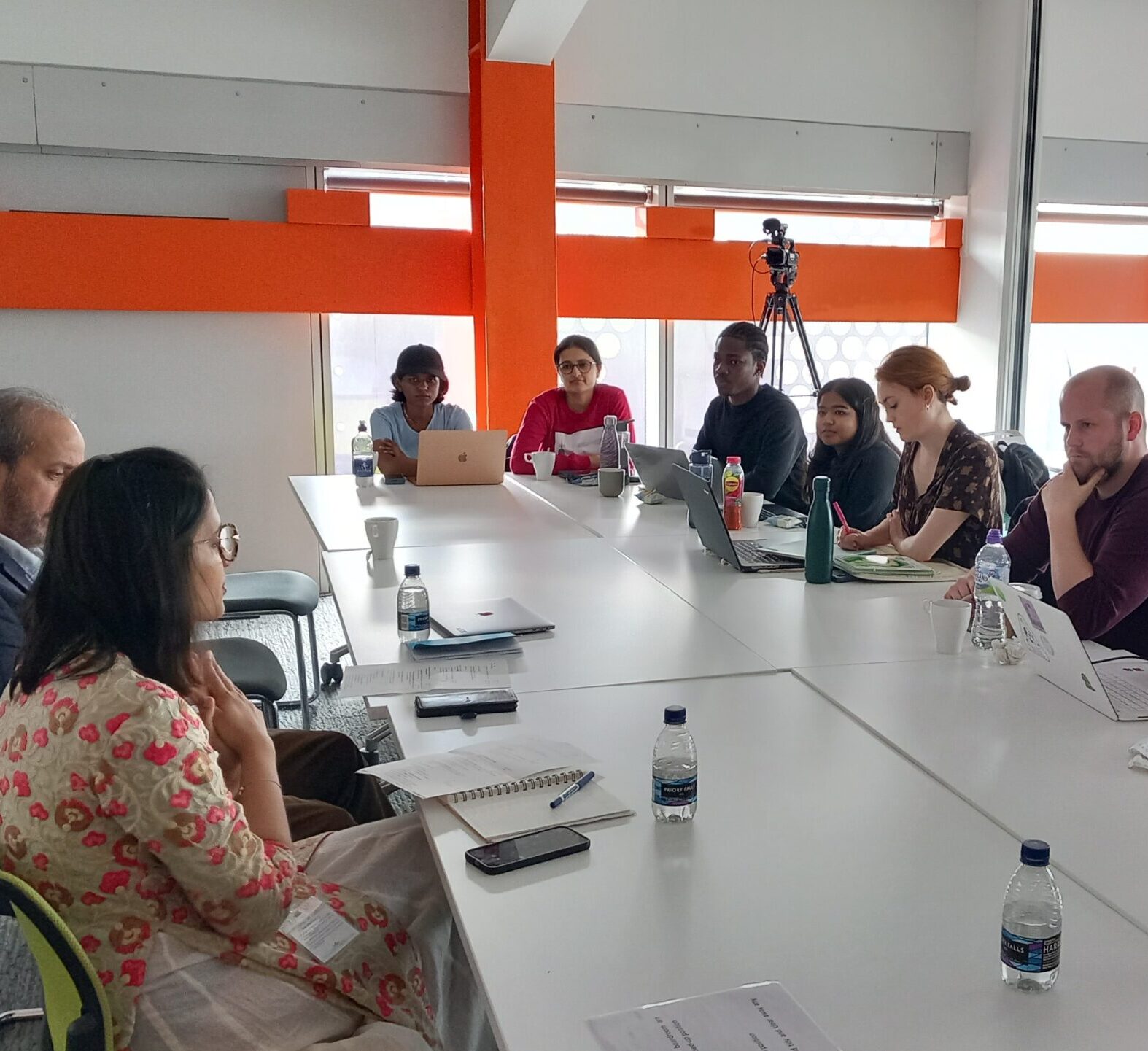
The Hope of ‘the moment’: NGO’s and the ‘Local Turn’
By Postgraduate Student Ginerva Grant
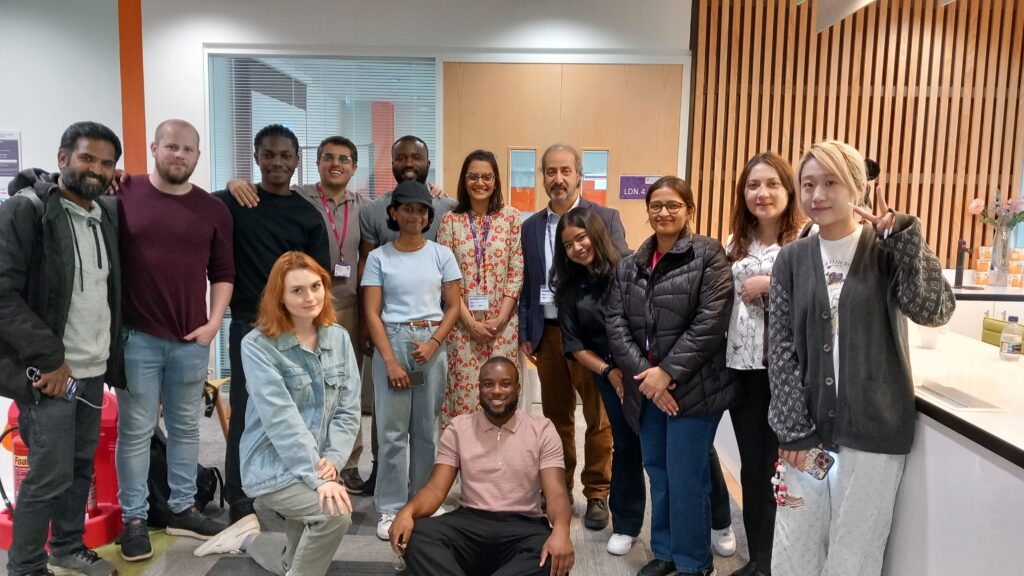
‘They make a desolation and call it peace’
(Ali, Farewell, 1997, line 2)
On Thursday the 9th of May, peace-building practitioners Tahir Aziz, Senior Advisor at the London-based international peace-building NGO Conciliation Resources, and Ameya Kilara, Senior Projects Director at the conflict resolution NGO InterMediate, entered an open discussion with a group of postgraduate students at the MSc Security, Peace-building and Diplomacy and other programmes as part of the Peace-building course, at the Institute for Diplomacy and International Governance (IDIG), Loughborough University London. The event was part of IDIG’s ‘Inside the Profession’ series, which aims to bring practitioners in the field of diplomacy and related subjects to engage with students through a thematic discussion, as well as sharing tips and reflections on professional development and career.
Drawing on their years of experience facilitating dialogue and collaboration across the contested ‘Line of Control’ in Kashmir, Tahir and Ameya, offered a roundtable reflecting on their respective NGO’s approaches and challenges and opportunities in the field. The focus was on their effort to connect with the ‘local’ on the ground: they reflected on the complex task of learning from local actors without preconceptions or assumptions, in their attempt to drive mediated outcomes in the Kashmir region.
The discussion covered broad concepts such as the timeline for implementation, the ‘emotional GDP’ of the local, and how and when results from these NGOs’ efforts can be measured.
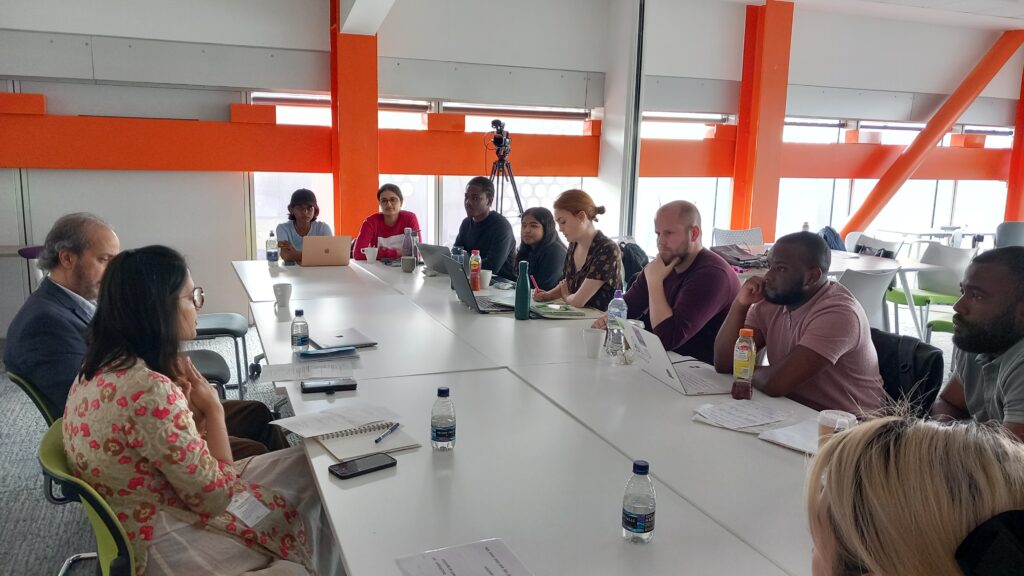
Prior to the event, during a lecture on the theme of NGOs in Peace-building, and previously in the entire course, students had been entrenched in debates around several approaches to peace-building. The Western and until recently the dominant model of Liberal Peace-building, as well as the “local turn”-driven approaches, and the hybrid approach can all be critiqued for a variety of reasons, from the method of their engagement on both personal and structural levels, down to the merit of their results or even the ability to measure them.
Interestingly, in a previous session, former EU staffer Dr An Jacobs discussed her field experience when working for this Western Institution. It was interesting to draw parallels between the challenges our guests Tamin and Ameya had experienced in the field in Kashmir and the reflections we had heard from An at a previous session. While Conciliation Resources and InterMediate had strived for positionality beyond the Western approach to achieve a ’balance of perspectives’, sustained intervention within a conflict system saw both parties facing the challenges of fatigue, disappointment, missed opportunities, a lack of communication between outside actors, and divisions on withdrawal. Are these commonalities merely inherent issues of the practice? Are they solvable?
‘I hid my pain from myself; I revealed my pain only to myself.’
(Ali, Farewell, 1997, line 43)
It would seem, peace-building is a conflict of its own between methods and intentions. What way is best? Who should be involved? How can results be measured? When can we leave? As a voyeur and participant to both the NGO and the EU discussions, I found these questions to be evocative of the themes in both. NGO practitioners Tahir and Amara recognized that the best way to address this type of sustained intervention was through an adaptive approach that prioritised the voice of locals at a variety of levels, but that when trying to measure the impact of peace-building, the first thing that gets ‘colonised’ is your mind and ability to think about the future. Principally, it is crucial to remain optimistic as systemic resilience is crafted; big shifts are possible and each ‘moment’ that changes the lives of the local makes setting a time to leave difficult. While the Liberal approach engendered by the EU is more rigid and distanced, a stark difference in An’s experience of ‘leaving’ post-conflict reconstruction has remained seared in my mind. At the time of her leaving the Congo, one man had commented: ‘do you like what you’ve done to the place?’, raising the question of the tension inherent between those approving and those disapproving of the peace-builders’ impact.
What seems clear in peace-building is that although results are difficult to measure, and approaches vary, there is a necessity in showing up.
‘If only somehow you could have been mine
What would not have been possible in the world?’
(Ali, Farewell, 1997, lines 45-46)
*Kashmiri poet Agha Shahid Ali ‘Farewell’. From Agha Shahid Ali (1997) A Country Without A Post Office, New Delhi: Ravi Dayal Publisher
Written by Postgraduate Student Ginerva Grant
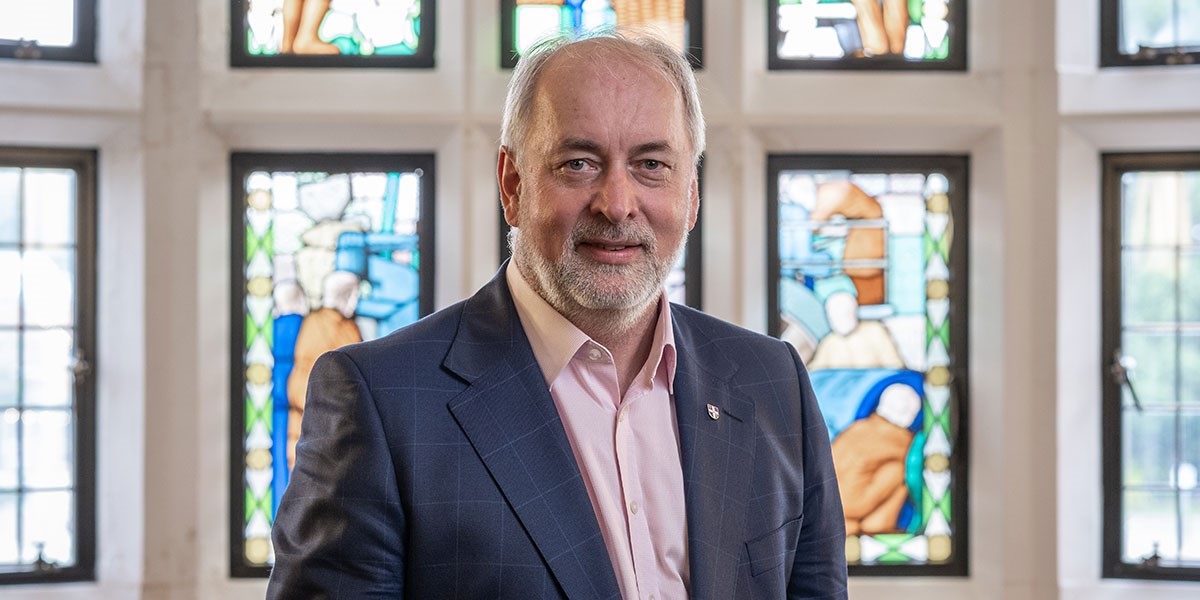
From the Vice-Chancellor – May 2024

In my May newsletter: New Provost announced, global green prize for research project, a Code of Practice for the Freedom of Speech Act, next phase of the DigiLabs project, a new Loughborough-UCL partnership, and a successful weekend of sport.
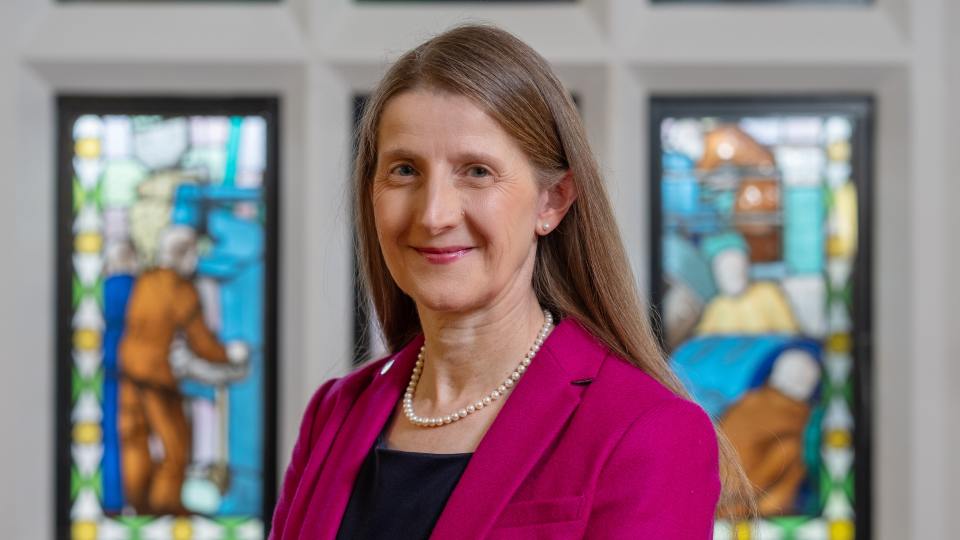
New Provost and Deputy Vice-Chancellor appointed
After a highly competitive international search, we have appointed Professor Rachel Thomson FREng, our current Pro Vice-Chancellor for Education and Student Experience, as our next Provost and Deputy Vice-Chancellor. Rachel succeeds Professor Chris Linton, who has served three successful terms as Provost and will step down from the role at the end of this academic year.
Rachel has shown outstanding leadership throughout her career at the University and during her tenure as Pro Vice-Chancellor, the University has cemented its reputation for an outstanding student experience. Loughborough was awarded Gold overall and Gold for both Student Experience and Student Outcomes in the national Teaching Excellence Framework (TEF). She was the academic lead for a £50million investment in the University estate, including the development of STEMLab – our shared science and engineering teaching laboratories – and she is currently spearheading our new DigiLabs project, which you can read more about in my newsletter today.
Rachel is also an internationally recognised researcher in Materials Engineering, who has successfully supervised almost 50 doctoral researchers and secured more than £40million of external grant funding. In 2018 she was elected as a Fellow of the Royal Academy of Engineering and is currently a member of the Strategic Advisory Board for the Henry Royce Institute, the UK’s national institute for advanced materials research and innovation.
We are entering a critical period of our strategy implementation and with Rachel as one of the driving forces behind this, I am confident that the University will continue to succeed, notwithstanding the challenging external environment in which the higher education sector is currently operating.
We have now begun the process of recruiting to the Pro Vice-Chancellor for Education and Student Experience role and I’d anticipate being able to provide a further update on this in the autumn term.
I’m sure you’ll all join me in congratulating Professor Thomson on her appointment as Provost and Deputy Vice-Chancellor and in thanking Professor Linton for his many years of successful service in the role.
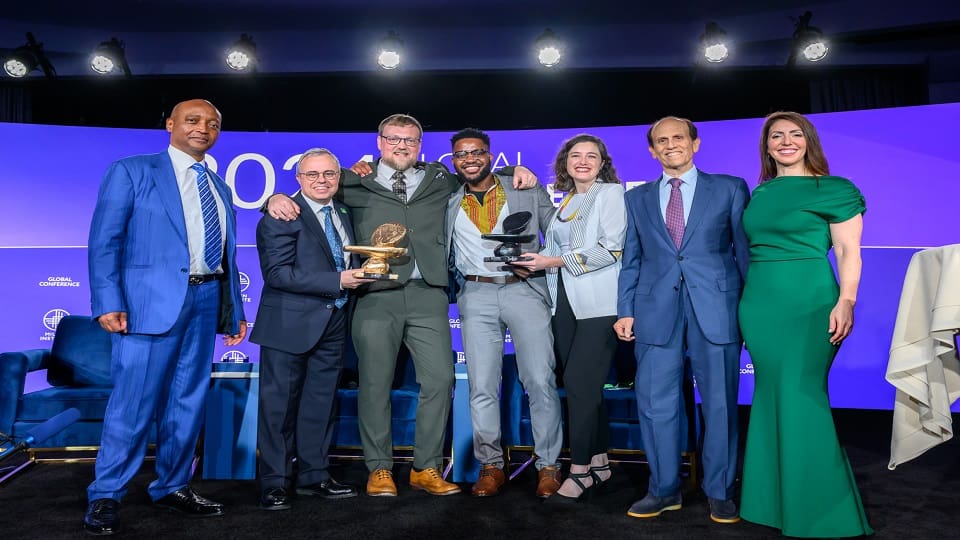
Aftrak project wins global green energy prize
I was delighted to hear this month that Aftrak – a Loughborough University led initiative that combines solar microgrids and tailored tractors to empower smallholder farmers across Africa – had overcome competition from four other international finalists to secure the prestigious $1million Milken Motsepe Prize in Green Energy prize.
The Aftrak project is a self-sustaining system made up of a solar microgrid, a micro electric tractor – both of which have been invented and manufactured at the University – and Deep Bed Farming, which more than doubles crop yield. The project involves a partnership of researchers from the University’s Centre for Renewable Energy Systems Technology, Tiyeni – a Malawian NGO (non-governmental organisation), and the Consortium for Battery Innovation. It has been supported by Innovate UK, and one of the world’s largest battery manufacturers, Varta by Clarios.
Following successful tests at Loughborough University and demonstrations at the Africa Green Economy Summit in South Africa, Aftrak is now being deployed in Malawi, where close to 90% are without access to electricity.
Projects such as this are hugely strategically important. Aftrak demonstrates how working in partnership on cutting edge research and innovation can bring tangible international engagement and impact, in line with our Climate Change and Net Zero theme.
My congratulations to all those at the University who are involved in the Aftrak project. I look forward to seeing how it develops further.
Freedom of Speech act due to be implemented
Academic freedom and freedom of speech are critical to driving forward research and innovation, and also provide students with the opportunity to think critically and engage with different perspectives. Universities’ responsibilities to protect and promote both freedom of speech and academic freedom have been strengthened by the Government’s Higher Education (Freedom of Speech) Act 2023, which became law last year and is due to come into effect from 1 August 2024.
In order to prepare, we have adopted a Freedom of Expression Code of Practice which codifies our commitment to securing and promoting freedom of expression within the law for our staff, students and external speakers. The Code of Practice is available on the Freedom of Expression webpages, where there is also a section on the right to protest. Please do make sure you take a look.
The new Code of Practice sits alongside our position on academic freedom and our commitment to driving forward Equity, Diversity and Inclusion (EDI) – both of which remain unchanged.
I know some will welcome the new Act as a critical element of a successful EDI approach through which individuals and groups are supported and able to express themselves freely. I recognise, however, that others may feel that the Act will mean some groups of society are more likely to be the subject of someone else’s controversial free expression. It is important to remember that hearing things we don’t like or agree with doesn’t necessarily make them unacceptable. However, I would reiterate that speech or expression which is a breach of the criminal or civil law – because it is harassment, discrimination or defamation, for example – is not acceptable in law or within our community.
Over the 2024/25 academic year we will be producing more guidance and support on the implementation of the Act and supporting staff and students in how we can disagree with one another without being disagreeable.
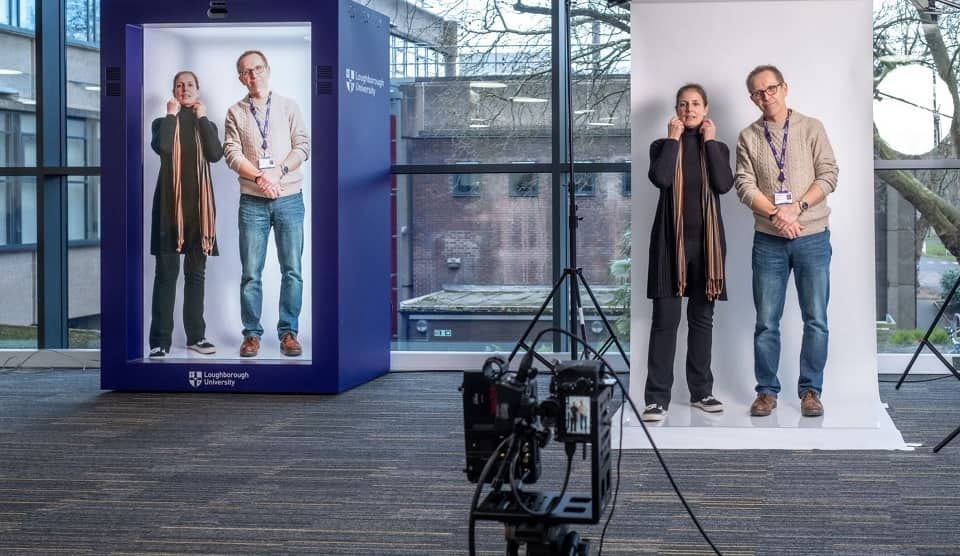
DigiLabs project enters its next exciting phase
Next month, thousands of prospective students will be welcomed to our University open days by a ‘virtual’ version of our Chancellor, Lord Sebastian Coe, who’s recorded a message for use on our new DigiLabs hologram technology.
The facilities we’re installing as part of the DigiLabs project will enable our students to develop the skills and knowledge to become future fit for the world of work where digital skills, data analytics, virtual and augmented reality play a key part, and ensure they can benefit from artificial intelligence and machine learning to support future technologies.
There will be four DigiLabs – focusing on Extended Reality Learning; 3D Data Capture and Visualisation; Robotics; and Simulation, Modelling and Artificial Intelligence – supported through three hubs. The first two hubs, in West Park Teaching Hub and the Leonard Dixon Theatre in Martin Hall, are due to be up and running early next academic year; the third hub in the Central Park area of campus, is due to be ready next year.
The cutting-edge technology will significantly enhance the learning experience for our students and I’m keen that it’s maximised by staff in Schools across the University. To begin facilitating this we have recently awarded five DigiLabs Teaching Innovation projects to staff who are pioneers in the use of the new technology for areas ranging from teaching human anatomy to the 3D visualisation of engineering and scientific structures. We’ve also employed student interns through the new TalentMatch Summer scheme to work with them on the projects.
We’re currently developing some guidance on how you can access and use the new technology in your teaching. For now, please have a look at our new website, and complete the form if you would like to join our new Special Interest Groups.
DigiLabs aligns firmly with our strategic aims to strengthen our sector-leading student experience through the use of the latest digital technologies, and could also contribute to our sustainability strategy as part of our Climate Change and Net Zero strategic theme by, for example, removing the need to fly in guest speakers and reducing the amount of materials used by students in building their prototype designs through prior 3D digital visualisation.
Loughborough and UCL join forces on new opportunities for local graduates
In 2022 University College London (UCL) opened its campus on Queen Elizabeth Olympic Park, joining Loughborough University London in one of the capital’s most dynamic districts. I was delighted, therefore, to announce this month that our two universities will be working in partnership to enable more people from East London to access our education.
The Inspiring Success initiative aims to encourage people to test drive the experience of studying at UCL or Loughborough University London, while also boosting their personal and professional development. We’ll be offering four workshops that will enable unemployed and underemployed local graduates to undertake career focused activities and gain an insight into what it’s like to study for a postgraduate degree at Loughborough University London or UCL East.
Participants will also learn about opportunities for local graduates to get involved in SHIFT – a catalyst organisation supporting innovators on and around the Park, of which Loughborough, UCL and the University of the Arts London are all founding members.
The partnership with UCL East is the latest initiative that’s enabling us to connect with the local talent pool and support communities in the region, both of which were key drivers for establishing our campus on Queen Elizabeth Olympic Park and firmly relate to our Vibrant and Inclusive Communities strategic theme.
We have also agreed, with Loughborough College, a community development partnership with London-based football club Hackney Wick to create a new football academy offering quality education and guidance to Hackney Wick’s emerging talented footballers. We are partnering with Hackney Council on research to inform the Council’s ambitions to build a fairer, greener local economy and a more environmentally sustainable borough. And we are now the official higher education partner of West Ham United Women – it’s the first partnership of its kind in the Barclays Women’s Super League (we started with the best football team!) and includes research, athlete education programmes and access to performance support expertise.

Athletics and Wheelchair Basketball mark successful sports weekend
The Loughborough International Athletics (LIA) meet has long been a key fixture in the athletics calendar and always has added significance in an Olympic and Paralympic year, often drawing high-profile names. This year Great Britain’s Katarina Johnson-Thompson made an appearance, underpinning her Paris 2024 medal hopes by recording a season’s best in the high jump at the Loughborough event.
Billed as the ‘Battle of the Nations’, the LIA sees Loughborough athletes take on competitors representing England, Wales, Scotland, GB&NI Under-20s and the National Athletics League for the annual competition. Loughborough’s points total by the end of the meet put the team second behind England, with our athletes delivering some truly standout performances, including Loughborough sports scholar and Tokyo Paralympic champion Ntando Mahlangu, who stormed to victory in the men’s para 400m with a personal best, and Poppy Malik, who won gold for Loughborough in the women’s 400m.
The night before the LIA, Loughborough Lightning’s Wheelchair Basketball side had won their third consecutive title to continue the team’s dominance in the Women’s Premier League.
The team had been unbeaten throughout the whole campaign and their 73-44 play-off final victory over East London Phoenix confirmed their place in the history books. Lightning remains the only team to take the championship crown since the league’s inception in 2021, which is a phenomenal achievement.
These are perfect illustrations of success against our Sporting Excellence and Opportunity strategic aim. I look forward to further sporting achievements over the summer, as our athletes head off to the Paris 2024 Olympic and Paralympic Games!

This Week at Loughborough | 3 June
General:
IAS Friends and Fellows Lunch
3 June 2024, 1pm-2pm, International House
The Institute of Advanced Studies (IAS) is hosting this lunch joined by all fellows for a week of activity for the IAS Festival of Failure. The event will be joined by Professor Antulio J. Echevarria II, Professor Niels Ørtenblad, Associate Professor Wyke Stommel and Professor Ruqiang Yan, and IAS Residential Fellow for June, Dr Rudabeh Shahid. Come along for an informal gathering over lunch to meet our fellows.
IAS Festival of Failure Launch
3 June 2024, 2pm-4pm, International House/Zoom
This opening session of the Festival of Failure is an opportunity for all to meet, connect, and discuss notions of failure across the University’s disciplines; to consider how its disadvantages can be minimised and some of its potential benefits exploited.
Featuring IAS Visiting Fellows:
- Professor Antulio J. Echevarria II (US Army War College)
- Professor Niels Ørtenblad (University of Southern Denmark)
- Professor Ruqiang Yan (Xi’an Jiaotong University)
- Associate Professor Wyke Stommel (Radboud University)
Dual IAS ‘Failure’ Seminar: Professor Antulio J. Echevarria II & Associate Professor Wyke Stommel
4 June 2024, 10am-1pm, International House/Zoom
As part of the Institute of Advanced Studies (IAS) Festival of Failure, IAS visiting fellows Professor Antulio J. Echevarria II and Associate Professor Wyke Stommel will deliver seminars on their area of research.
Professor Antulio J. Echevarria II – Conflict and strategic policy failure – This presentation draws from a monograph (under development) that contributes to debates concerning the West’s failure to deter Russia’s full-scale invasion of Ukraine in February 2022 and the implications for integrated deterrence.
Associate Professor Wyke Stommel – (Resolving) failure in interaction with a robot – In this presentation, Professor Stommel will argue that failure is an endogenous phenomenon, something participants establish locally and collaboratively in social interaction.
IAS ‘Failure’ Seminar – Physics-Informed Deep Learning Empowering Intelligent Fault Diagnosis
4 June 2024, 2pm-4pm, International House/Zoom
As part of the Institute of Advanced Studies (IAS) Festival of Failure, IAS Visiting Fellow Professor Ruqiang Yan will deliver a seminar.
This talk will focus on a collaborative approach that integrates data science with physics models to achieve intelligent fault diagnosis through collaborative deep learning structures known as physics-informed deep learning. This collaborative approach offers advantages in interpretability, controllability, and knowledge discovery, allowing for a more comprehensive understanding of the evolution of physical systems in the big data era.
IAS ‘Failure’ Seminar – Muscle failure: the role and mechanisms of energy in skeletal muscle fatigue
5 June 2024, 10am-1pm, International House/Zoom
As part of the Institute of Advanced Studies (IAS) Festival of Failure, IAS Visiting Fellow Professor Niels Ørtenblad will deliver a seminar. Skeletal muscles have an impressive force and power-generating capacity. However, with intense or prolonged activation, muscle function is reduced. Despite the broad interest of the scientific community, fundamental questions remain unsolved about how activation is affected by exercise or disuse and how metabolism affects muscle regulation. Professor Ørtenblad will discuss metabolic factors contributing to impaired force-generating capacity, particularly focusing on the role of muscle glucose stores (glycogen).
Book Club: The Girl Who Smiled Beads
5 June 2024, 12.30pm-1.30pm, AST Office (Level 3, Pilkington Library)/Online
Join staff from Pilkington Library for the University Book Club’s discussion of Clemantine Wamariya’s memoir about her experience as a childhood refugee from Rwanda, written alongside Elizabeth Weil.
Content note: this book contains themes of war, violence and trauma. (Please note that content notes are based on information available online.)
Arts in Motion: Mark-making in Nature workshop
5 June 2024, 3pm-4pm, The Walled Garden
Explore mindfulness through drawing, with guided mark-making using ink, acrylic, charcoal, and various tools. The workshop will help you focus on the calming effects of drawing and enjoying nature. The session will end with the creation of a small booklet containing the drawings made.
This is a great opportunity to relieve stress during a busy exam period. No previous experience is required and all materials will be provided.
IAS ‘Failure’ Performance by artist Alice Theobald
6 June 2024, 12pm-1pm, International House
This event is part of the Institute of Advanced Studies (IAS) Festival of Failure. A performative research presentation by artist Alice Theobald, exploring the ways in which we think about success and failure, our past and future aspirations and what “living your best life” really means.
We live in a time where we are directed towards self-optimisation and constantly encouraged to “work on ourselves” for the purpose of being more “ourselves”, to “live our truth” and be our “best selves”, and through doing this find a route to authenticity and success, all the while documenting and sharing our “journey” online. But what impact does this have on our collective psyche, and what does it actually mean to “just be yourself”?
Special General Assembly – Potential KSA partnership
6 June 2024, 1pm-2pm, EHB110AB/MS Teams
This event is an opportunity for you to discuss and engage in the University’s potential partnership with the Kingdom of Saudi Arabia (KSA). There will be time for attendees to ask questions during the session.
The event is open to all staff and will be available to join in-person and online.
Win from Within: A sport psychology series
6 June 2024, 6.30pm-7.30pm, Dan Maskell Seminar Room (Tennis and Squash Centre)
The ‘Win from Within’ series at Loughborough Sport is dedicated to unlocking the full potential of every athlete, regardless of their experience or sporting background. These workshops are designed to introduce you to the power of sport psychology and how it can optimise your development both within and outside of sport.
This third and final session will cover unlocking your full potential.
Pride Month:
How to be an ally for people of colour in the LGBT+ community
4 June 2024, 12pm-1pm, CC029A (James France)
As part of Loughborough University’s Voices of Diversity programme, EDI Services are pleased to announce the third event in this year’s series on the theme of allyship. Given that the event is about allyship, those who do not identify as LGBT+, or as a person of colour, are particularly encouraged to attend.
This panel event will focus on the experiences of people of colour in the LGBT+ community and will cover themes such as:
- Ethnicity, gender, sexual orientation, culture, religion and their intersections
- The nuances in challenges and discrimination faced
- The unique joy of being a person of colour in the LGBT+ community
Pride March 2024
5 June 2024, 1.15pm-2.30pm, Meet outside LSU
Starting outside the Students’ Union, we’ll hear from leaders of Loughborough LGBT+ Staff Network, and LSU LGBTQ+ Students’ Association, before setting off on a march around campus. Feel free to dress in rainbow colours, bring flags and banners. There will also be flags and face paints to share.
All LGBT+ people, friends, families and allies are welcome to march together across the Loughborough campus to highlight issues facing LGBT+ people around the world, and in our community, as well as to celebrate the progress that has been made since the first Pride March in 1970.
Careers:
eCareersGrad: Achieve ‘Interview Success’
4 June 2024, 11am-12pm, Online
Explore examples of ‘what good looks like’ when it comes to answering questions in interviews and more.
University of Law Careers Series:
Careers in Psychology
5 June 2024, 5.30pm-6.30pm, Online
This session will be delivered by Dr Mark Jellicoe, a senior tutor in Psychology at the University of Law and will give an overview of psychology career options and provide an opportunity to ask any questions you may have.
Start-Up Programme
5 June 2024, 6pm-7.30pm, Start-Up Lab (STEMLab)
This dynamic five-week journey will equip you with the essential skills and knowledge needed to elevate your Start-Up venture. Delve into crucial topics such as goal setting, mindset development, market research, networking strategies, business registration, intellectual property, finance options, and more!
Participants will also gain access to exclusive mentoring sessions and hear from esteemed industry experts, including Loughborough Enterprise Network (LEN) Legends, who have navigated the entrepreneurial landscape with great success.
Creative Access masterclass with
BBC Radio & Radiocentre
6 June 2024, 6pm-8pm, Manchester
A panel discussion at Salford Quays, providing insights into careers and opportunities. BBC Radio 1’s Dean McCullough will be joined by some of the industry’s leading voices, whose experience spans producing, presenting, social media, and more.

CRCC member Anna Zsubori publishes book 'Disney Princesses and Tween Identity'
Since the creation of the franchise in 2000, Disney Princesses have become a ‘phenomenon’ receiving international attention, admiration as well as criticism from both consumers and scholars. Although audience research has seen growing recognition recently, the investigation of audiences in Central and Eastern Europe and those of Disney animated features is greatly neglected by academics. Within the framework of audience research and by employing Disney Princess animations as the object of study, Anna Zsubori’s book examines the verbal and visual identity constructions of tweens in illiberal Hungary.
Through Hungarian tweens’ ambivalent and sometimes even contradictory ideas of identity, this research reveals the heterogeneity of both the ‘Princess Phenomenon’, by highlighting that its local negotiation is profoundly impacted by cultural and societal characteristics, and of the diverse audiences, who are multifarious in their understandings that often incorporate antithetical and dynamic discourses. Combining textual, thematic and semiotic, analyses of the conversations, tweens’ drawings and building blocks, and broader contextual examinations of the sessions with Hungarian children, this book offers original contributions on both theoretical and methodological levels.
The book has already been well-received by notable academics in the field.
“In this absorbing and thought-provoking text, Zsubori deftly explores the complex position that Disney Princesses inhabit within the lives of Central and Eastern European tweens. Exploring the in-betweenness of age, geography, and culture, this book offers a nuanced reading of Hungarian tweens as intelligent and critical viewers of Disney media, drawing on rich empirical data to give voice to this under-researched group. Through its interdisciplinary approach, Zsubori contributes to our understanding of the limits of Western theories in non-Western contexts, and what it means to do gender-specific fieldwork in an anti-gender environment.”
— Victoria Cann, University of East Anglia
“What unfolds when a Princess from the West claims her throne in Eastern and Central Europe? Is she a colonial ruler or a feminist icon? Anna Zsubori’s insightful book explores the interpretation of Disney Princesses by Hungarian tweens, examining reception of their gender roles and racial identities within the context of Hungary’s increasingly patriarchal, racially intolerant, and illiberal society. This exploration delves into the “in-betweenness” of Hungarian tweens, a concept that captures not just their transitional age but also Hungary’s delicate balance between East and West.”
— Irena Reifová, Charles University
“The Walt Disney Company is one of the oldest and most complex global entertainment empires today, engaging with and influencing our lives in various ways regardless of age, race, gender, or geographical location. This book provides a powerful lens inviting the reader to look at Disney not only at the global, macro level but also at the micro-level: in our daily lives, around the family dinner table, in the classroom setting and elsewhere. While the focus is on the Disney Princess phenomenon, and tweens negotiating self-representation and identity in the small Central European nation of Hungary, the insights and conclusions are, in many ways, rather universal, often surprising and paradoxical. The reader will see not only the Disney Princess franchise but also the Disney Company from a more nuanced and informed perspective after reading this influential and well-researched book.”
— Katalin Lustyik, Ithaca College
The book is now available to purchase from Lexington Books.

This Week at Loughborough | 27 May
General:
Loughborough Cycling Festival 2024
27 May 2024, 8.30am, Loughborough campus
Prepare to be wowed by elite cycling races showcasing some of the nation’s top talents while enjoying a day packed full of fun for every member of the family.
From food stalls and refreshments to bouncy castles, interactive cycling activities, and visits from the fire and police services, there’s nonstop excitement for everyone to enjoy.
IAS Research Summit Sandpit (in-person)
29 May 2024, 9.30am-11am, International House
Do you have an idea for an Institute of Advanced Studies (IAS) Research Summit, or would you just like to learn more about how to become involved with their programmes and brainstorm potential topics with colleagues? Then bring your ideas, thoughts, and colleagues to this Sandpit Event.
IAS Seminar: Identity Investments
29 May 2024, 12pm-1pm, International House/Zoom
Institute of Advanced Studies (IAS) Visiting Fellow Professor Joel Stillerman will deliver a seminar on their research.
This presentation provides an overview of conceptual and empirical arguments from the book ‘Identity Investments’. It uses the concepts of identity investments and precarious privilege to understand Chile’s middle classes in contrast to other studies that emphasise opportunity hoarding and social mobility. Identity investments are deeply held values that motivate middle-class market behaviour.
The Art Schools Project – In Conversation with John Beck and Matthew Cornford
29 May 2024, 1pm-2pm, Loughborough campus
Artists John Beck and Matthew Cornford will discuss their long-term initiative, The Art School Project, and will be joined by Jill Vincent and Jonathan Hale who have been instrumental in the development of The Generator, a new arts space within Loughborough’s original art school building on Frederick Street.
”The world in your book does not have to be realistic – just plausible”: Creative Writing Workshop
30 May 2024, 3pm-4pm, MAR105 (Matthew Arnold)
Join bestselling author Jasper Fforde for a creative writing workshop on absurdist fiction. Jasper Fforde is the author of 17 books. His work blends a range of genres including fantasy, crime and sci-fi. He is most well-known for his Thursday Next series, beginning with his debut novel, ’The Eyre Affair’ in 2001.
His most recent novel, ’Red Side Story’, was published in February 2024 and is the second book in his Shades of Grey series. Fforde’s bestselling series explores a world whose hierarchies are based on the colour spectrum.
Red Side Story: A talk by Jasper Fforde
30 May 2024, 5pm-6pm, LDS017 (Design School)
Jasper Fforde, author of 17 published books, will discuss his latest book, ‘Red Side Story’. With references to his earlier novels, Fforde will explore how he has used satire in allegory-fantasy to counterpoint political and social issues in the world today.
MA Creative Writing Student Readings
31 May 2024, 11am-1pm, Stanley Evernden Theatre
Come along for readings from this year’s Creative Writing master’s cohort. Stanley Evernden Theatre has step-free access.
Charly Cox: Poetry Reading and Conversation
1 June 2024, 2pm-4pm, Stanley Evernden Theatre
Charly Cox is a poet, artist and activist. Her work centres around gender equality and destigmatizing and advocating for better care and rights for those with mental illness. Charly has published three poetry collections with Harper Collins. Her debut, ‘She Must Be Mad’, was a bestseller of 2018, awarded her a place on the covered Forbes 30 under 30 list and ELLE Magazines Power Players.
Emily Hauser at Loughborough University Literary Festival
2 June 2024, 2pm-3pm, Stanley Evernden Theatre
Emily Hauser writes historical fiction, focusing on the untold stories of the women of ancient Greece and Rome. She has published four novels, the most recent of these being ‘Ancient Love Stories’. This illustrated collection retells love stories from history.
Exhibition: The Art Schools of the Midlands
16 May-28 June 2024, 12pm-2pm, Martin Hall Exhibition Space
Martin Hall Gallery presents ‘The Art Schools of the Midlands’, the latest iteration of John Beck and Matthew Cornford’s ambitious Art School Project exploring the history and legacies of the nation’s art schools. The project combines original photography, textual and archival materials to examine the vital role art schools have played, and continue to play, in the cultural and economic life of our towns and cities.
Careers:
Start-Up Programme
29 May 2024, 6pm-7.30pm, Start-Up Lab (STEMLab)
This dynamic five-week journey will equip you with the essential skills and knowledge needed to elevate your Start-Up venture. Delve into crucial topics such as goal setting, mindset development, market research, networking strategies, business registration, intellectual property, finance options, and more!
Participants will also gain access to exclusive mentoring sessions and hear from esteemed industry experts, including Loughborough Enterprise Network (LEN) Legends, who have navigated the entrepreneurial landscape with great success.
Breakfast Study Cafes
30 May 2024, 8am-11am, CC110 (James France)
Boost your productivity on campus at the Student Success Academy’s Breakfast Study Cafes. Drop in for one, or all sessions where you can enjoy a morning study session, a free drink, and some baked goodies.
Using a study planner to set goals for the sessions, study with the Pomodoro technique in sessions one and two (8am-9am and 9am-10am), and work at your own pace in session three (10am-11am).

Five minutes with: Graeme Fowler
What’s your job title and how long have you been at Loughborough?
I’m a Senior IT Specialist. I’ve been here forever! I was an undergraduate in Chemical Engineering 1990-93, and then returned 18 years ago to work here. As the old slogan goes ‘Loughborough is for life.’
Tell us what a typical day in your job looks like?
Each day starts with checking the overnight system notifications to make sure everything’s running smoothly and dealing with those things that need attention. I’ll then move on to a mix of project work – decommissioning old systems, upgrading current ones, and adding new developments never stops – and escalations of service requests from our Service Desk team. Add in a sprinkling of team meetings (I work across two separate teams), project meetings, requests for help from colleagues and keeping up with developments in technology and security makes some days a bit of an adventure.
What’s your favourite project you’ve worked on?
There have been many, but a couple stand out. Moving student email from Google to Microsoft 365 was a particularly good one, as we scheduled two weeks to migrate the mailbox data and were able to optimise the process so well it took just under three days! Also, the replacement of our storage platform in 2016 was a major challenge for ourselves, the supplier and the equipment manufacturer. We started out with a platform that couldn’t meet the tender requirements and pushed through the problems to end with one that vastly exceeded them.
What is your proudest moment at Loughborough?
I’d love to say something like “completing such-and-such-a-project” but… settling here, meeting my wife, getting married, raising two kids. When I came for an interview way back in 1988 I loved the campus and the bits of town I saw, and with a brief break living in Leicester I’ve been here ever since.
Tell us something you do outside of work that we might not know about?
I’m a motorsport volunteer. I started out as a trainee marshal in 2009 at Donington Park and it’s become a major part of my life. I’m now what’s termed a Grade 3 Marshal – a Post Chief – which means at most meetings I’ll be leading a team of other marshals from complete novices to those with similar or more experience than me, with responsibility for track, car and driver safety, signalling (flags and lights), observation and reporting back to race control. Marshalling has taken me all over the world, from Silverstone to Australia. I’ve been trackside at the Le Mans 24 Hour race three times, I’ve marshalled Supercars in Adelaide, been the Safety Car Observer for a variety of clubs and the British GT Championship, and I’ve been at nine British Formula 1 Grand Prix. The last time I was at the GP in 2022 I was the Post Chief on the first corner, where George Russell and Zhou Guanyu came together with the latter ending up trapped in his car between the barrier and debris fence. As a team, we simply knuckled down and got on with solving the problems in front of us – is he OK (yes), how do we get him out (carefully), and how on Earth do we lift a car out from the gap with no roll hoop (creatively!). In the 15 years I’ve been marshalling that was probably the incident I’m most proud of having been involved in; getting to lead that team of like-minded volunteers was an honour and a privilege. As a bonus, it wasn’t raining!
What is your favourite quote?
Russell: “Can we keep him, please?” – Carl: “No.” – Russell: “But it’s a TALKING DOG!”
If you would like to feature in ‘5 Minutes With’, or you work with someone who you think would be great to include, please email Sadie Gration at S.Gration@lboro.ac.uk.
DRN2024 Drawing Repetition: Bodies in Motion
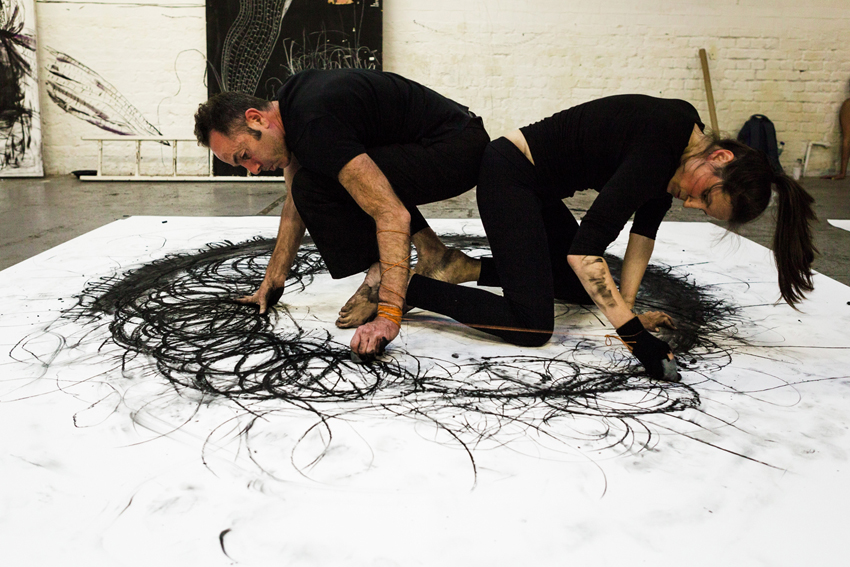
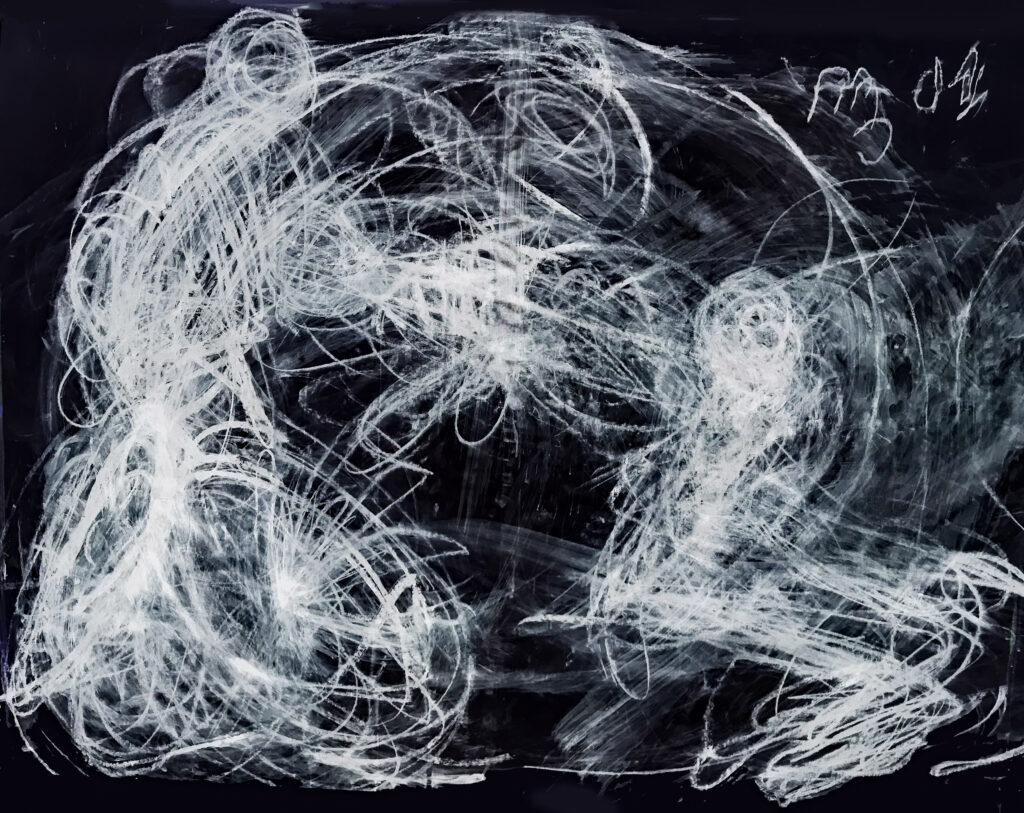
11.00-13.00 (BST) 5 June 2024 [online]
Hosted by the Drawing Research Group at Loughborough University
Tickets: https://buytickets.at/drawingresearchgroup/1269224
Chair: James Bowen
This panel brings together researchers investigating drawing through the movement of bodies, in relation to choreography, disability embodiment, and live drawing performance.
Ella Emanuele’s research investigates the interplay between dance, drawing, and time-based media. The work has evolved to include collaborative & participatory approaches, where the resulting installations, films, drawing, bookwork, and performances are brought into being as a result of the context they are in. Her presentation will discuss the use of repetition as a methodological strategy to emphasise a choreographic view of drawing abstracted from the materiality of the drawn line. Driven by action-based approaches the movements of the body in motion are interpreted as drawing. Task-based instructions and other systematic methods of working generate a choreographic view of drawing through a seriality of dance movements.
Rachel Gadsden–Hayton’s research investigates how the lived experience of disability serves as a catalyst to consider how the physical and phenomenological activity of repetitive action may influence the process and aesthetics of drawing. The research itself is determined by the specifics of disabilities, and by the embodied, expressive, and dialogic character of collaborative practice. Through a series of performative drawing exemplars, she will analyse her practice and that of two other disabled artists: Jeremy Hawkes, Aus, Siu Fong Yeung, HK. Collaborating since 2019, they are affected, individually and collectively, by concepts of ‘repetition’. The objective is to provide insights into disability embodiment and to reveal phenomenological intuitions of disability through the repetition of drawing in its potentiality.
Ram Samocha’s research focuses on the issues of personal and global transformation and combines drawing with video, installation, and live performance. Ram often mixes modern and traditional drawing techniques while searching for new ways to combine between two and three dimensions. Ram’s presentation will explore the fundamental role of repetition in live drawing performances, showing how it affects the connection between the artist’s body, its movements, and the marks they make. Through analysis of a series of drawing performances the presentation will seek an articulation of repetition and live drawing as symbiotic.
The session will be chaired by James Bowen.
Biographies
Ella Emanuele is an artist, researcher, and the course leader of the BA (Hons) Drawing at Falmouth University. Her practice-based research explores dance and choreography as generative modalities for contemporary drawing. https://www.falmouth.ac.uk/staff/rossella-emanuele
Rachel Gadsden–Hayton is an artist, researcher and disability culture activist who exhibits her work internationally, with the aim to develop cross-cultural dialogues considering notions of humanity. She was the guest artist for the ‘Big Draw Netherlands Festival’ 2023 and presented TransHuman at the Museum Arnhem, and Extrapol, Nijmegen. Rachel was awarded an Honorary Doctorate from South Bank University, 2016. www.rachelgadsden.com
Ram Samocha is a multidisciplinary artist, curator, and educator whose work combines drawing with video, installation, sound, and live performance.
Ram is the founder and artistic director of Draw to Perform, an international community for drawing performance practice. https://drawtoperform.com
James Bowen’s research investigates the intersection of drawing and sound. James teaches Fine Art at Loughborough University and completed his PhD ‘Voice as a Tool for Drawing’ at Loughborough in 2023.

Embodied Math: How Physical Experience Shapes Learning
Written by Dr Venera Gashaj, Prof Korbinian Moeller and Dr Dragan Trninic. Venera is a postdoctoral researcher in the Centre for Early Mathematics Learning at Loughborough University. Venera has a Ph.D. in Developmental Psychology and investigates how physical movements contribute to understanding mathematical concepts. Korbinian is a Professor of Mathematical Cognition exploring mathematics skill development through hands-on experiences. Dragan has a Ph.D. in Science and Mathematics Education and examines how physical and social environments influence STEM learning. Edited by Dr Beth Woollacott.
Introduction
Have you ever wondered how humans think? It’s intriguing that while our capacity for thought appears boundless, some scientists argue that it’s deeply rooted in our physical bodily experiences. This is the essence of embodied cognition which aims to describe the close relationship between our minds and bodies. In this blog post, we delve into what embodied cognition means and explore how understanding it may significantly transform our approach to learning.
Does our body influence how we think and learn?
Consider how often we use physical metaphors to describe our (emotional) states or concepts. We say we feel “down”, or that we need to “lend a hand”. This reflects our natural inclination to associate abstract ideas with tangible bodily experiences like temperature, spatial orientation, or specific body parts. But why do we have the tendency to use such physical metaphors?
The idea of embodied cognition emphasizes how bodily experiences shape our thinking and our mind. Unlike viewing the mind as software working on abstract codes for reasoning, embodied cognition suggests that interactions with the physical world shape our thinking and learning. Essentially, our thoughts are influenced by our physical interactions and experiences in our environment, not solely confined to abstract mental processes.
“…embodied cognition suggests that interactions with the physical world shape our thinking and learning“
Consider encountering something new, like learning a sport or board game. Your mind records more than just the rules, it captures all sensations: sights, sounds, smells, movements, and body involvement. Later, when faced with a similar situation, your brain will unconsciously replay parts of this recording to better deal with the new scenario. Psychologist Lawrence Barsalou1 calls this the simulation view of cognition, where we simulate or replay specific bodily experiences mostly without realizing it. For example, thinking about using a hammer was found to activate brain regions which were also active when physically using one.
This illustrates how we use perceptual, motor, and internal sensations to interact with and make sense of the outside world. This association is clear with tangible objects like a hammer but more complex with abstract ideas like mathematics, which lack direct sensory experiences.
How do we grasp abstract notions?
Embodied cognition addresses a key challenge in cognitive sciences (how to associate abstract ideas with concrete examples) by emphasizing the importance of associating abstract ideas with past experiences2. For an example from education, consider the abstract concepts within mathematics. In mathematics, it has repeatedly been observed that children typically use their fingers when counting and performing initial calculations; something which seems to establish an intuitive association that enhances mathematical understanding. This embodied approach associates mathematical ideas with bodily experiences, making mathematics more accessible and easy to grasp than mere memorization approaches. Interestingly, this is in line with evidence from neuroscience indicating that the same brain regions are active when moving our fingers as when just thinking about numbers3. As such, there seems to be a direct link between our bodies and basic mathematical concepts such as numbers.
The pictures below illustrate how the body contributes to learning mathematics, specifically foundational skills including counting, understanding magnitude (or size), and performing basic arithmetic.
In Panel A, the use of fingers is highlighted as a valuable tool for counting, with each extended finger representing one counted item, and the consistent order in which fingers are extended reflecting the fixed sequence of number words for counting. This systematic use of fingers creates specific patterns that correspond to particular numbers (e.g., index and middle fingers represent two objects counted).

Consequently, these finger patterns also signify the quantity of the counted set, providing a unique association between specific finger configurations and numerical magnitudes, as shown in Panel B.
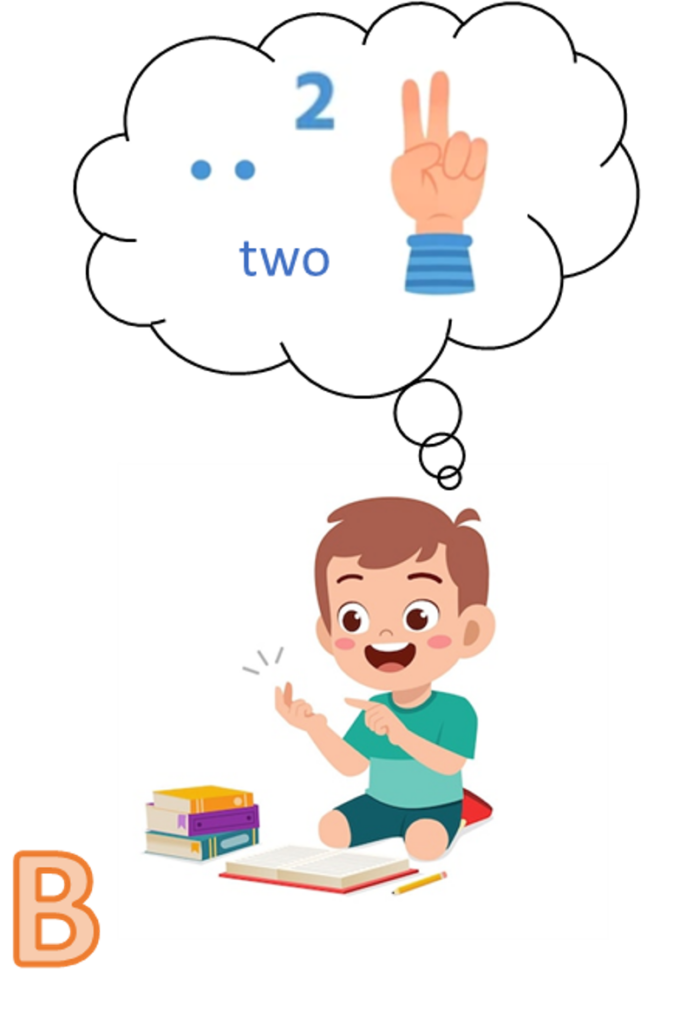
Panel C exemplifies how fingers play a crucial role in learning basic arithmetic by facilitating the composition and decomposition of numbers. For example, extending five fingers to three already extended fingers gives eight extended fingers, and therefore, the number eight is represented through the composition of five and three (fingers). Through consistent finger use in counting, magnitude montring (showing numbers with fingers), and basic calculations, the brain establishes systematic associations between numbers and fingers/finger patterns4.
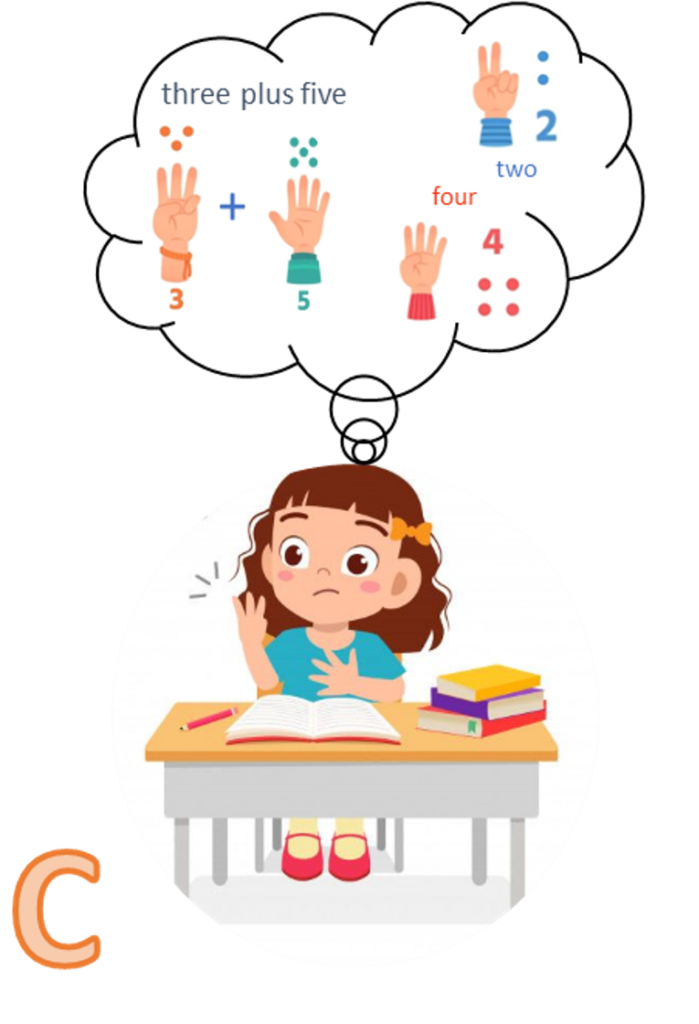
Over time, this process facilitates the development of a specialized mental representation of numbers by finger-based codes, similar to dot patterns, numerical digits, and verbal number words5. Ultimately, we become proficient in utilizing these finger-based representations, enabling the mental manipulation of finger-based numerical concepts without actual physical finger movement. The diagram illustrates the progression from physically counting on fingers (in Panels A-C) to mentally simulating finger-counting whenever numbers are contemplated (Panel D).

Can such embodied representations also facilitate advanced mathematics?
Traditional math classes typically involve students sitting quietly, but Dr. Tao, a Fields Medal recipient (comparable to the Noble Prize) and mathematician at UCLA, described how he approached a complex problem by lying on the floor and rolling around. He was trying to conceptualize a mathematical description involving waves rotating on top of each other. By physically embodying the concept and simulating the motion of waves, he found that this helped him develop a clearer intuition. Moving his body in a way that mirrored the mathematical problem enabled him to “see” the problem from a new perspective. Of course, this does not mean every student should start rolling on the floor to understand mathematics. However, while this approach may not suit every student, it highlights how bodily actions can aid in understanding mathematics problems – even complex ones.
“Moving his body in a way that mirrored the mathematical problem enabled him to “see” the problem from a new perspective“
Moreover, this example challenges the conventional notion that effective learning in mathematics requires strict adherence to quiet, seated classroom behavior. Mathematicians often engage in dynamic behaviours such as walking around, changing positions, and gesturing while grappling with mathematical ideas. This embodied perspective underscores the effectiveness of hands-on activities and experiential learning in education. Students can deepen their understanding and develop a more intuitive grasp of mathematical principles by physically engaging with them.
References
- L. W. Barsalou, “Grounded cognition.,” Annual Review of Psychology, vol. 59, pp. 617-645, 2008.
- M. H. Fischer, A. M. Glenberg, K. Moeller and S. Shaki, “Grounding (fairly) complex numerical knowledge: an educational example.,” Psychological Research, pp. 1-9, 2021.
- M. Penner-Wilger and M. L. Anderson, “An alternative view of the relation between finger gnosis and math ability: Redeployment of finger representations for the representation of number.,” 2008.
- R. Barrocas, S. Roesch, C. Gawrilow and K. Moeller, “Putting a finger on numerical development–reviewing the contributions of kindergarten finger gnosis and fine motor skills to numerical abilities.,” Frontiers in Psychology, no. 11, p. 1012, 2020.
- Moeller, K., Fischer, U., Link, T., Wasner, M., Huber, S., Cress, U., & Nuerk, H. C. (2012). Learning and development of embodied numerosity. Cognitive processing, 13, 271-274.
CRCC members co-publish book with the European Election Monitoring Center on Party Campaigning in European Parliamentary Elections 1979-2019
The Political Communication theme is delighted to announce the publication of a timely new book by members Dominic Wring and Nathan Ritchie(eds.) Europe Votes: Party Campaigning in European Parliamentary Elections 1979-2019, a joint venture involving the European Election Monitoring Center and ourselves which is now free to download from its own dedicated website https://www.europevotesbook.com
This book offers a comprehensive look back at how political campaigning has evolved in the second largest democracy (after India) of 400 million citizens – and does so as member states go to polls next month for the tenth European elections. Europe Votes features twenty experts analysing developments in their own countries from, where applicable, the inaugural elections of 1979 to the most recent ones in 2019. The Foreword to the collection has been kindly provided by Joyce Quin, a former Member of the Brussels and Westminster Parliaments, who was the UK Minister for Europe and currently sits in the House of Lords. In her contribution, Baroness Quin reflects on her formative experiences as a successful candidate in the first European elections and her subsequent career as a politician in the only member state to have left the European Union.
Every chapter of Europe Votes features content from the European Elections Monitoring Center archive which holds more than 15000 campaign items. This unique collection of material, compiled by the EEMC with support from the EU, is now available to consult online. The archive includes items from each of the previous European elections, every member state that has participated, and from the political parties that have secured most parliamentary representation. Europe Votes focuses on nine selected countries: the so-called ‘big four’ of France, Germany, Italy and the UK, and five members- Greece, Spain, Sweden, the Czech Republic and Hungary- that joined (in that stated order) during one of the subsequent waves of European enlargement. An additional chapter revisits the Brexit controversy through an examination of the final European elections held in the UK on the eve of the country’s departure from the EU.
Europe Votes considers specific developments in the member states with chapters offering insights into successive European election campaigns in the featured countries. There are, however, some common themes that emerge. For instance, the three mainstream EU party groupings – conservative, social democrat and liberal – have been quite electorally resilient despite growing challenges from the Greens and more recently the various Eurosceptic forces. The latter may have been increasingly effective in promoting their case to the electorate but rivalries involving the United Kingdom Independence Party, Alternative for Germany, French National Front, and Lega in Italy – plus an assortment of likeminded politicians in other countries – has so far tempered these parties’ ability to exert more concerted influence within the European Parliament. The 2024 elections may of course change this situation.
Growing criticism of the EU has been a marked feature of successive European elections. Several contributions touch on this, with the Italian chapter making telling reference to what is termed ‘strategic Euroscepticism’. This phenomenon can be observed when politicians adopt anti-EU messaging during campaigns but subsequently moderate their positions once elected. Two striking examples of this documented by Europe Votes are the France and Sweden cases where some of the most strident campaigners have muted their previously expressed support for ‘Frexit’ and ‘Swexit’ respectively.
Europe Votes incorporates material from the EEMC archives to illustrate some of the most important issues, parties, and personalities that have defined the various campaigns held over forty years. Examples of this in the book include:
- cultural icons- in the form of flags and mythological figures such as France’s Marianne (1992), a figure in traditional Greek dress (2009) and the parties wanting to secede from Spain (and other states) while remaining within the EU (2019)

- sovereign nations- the Swedish Greens use their country’s physical shape to make a sceptical point (1999) while UKIP draw on the iconic southern English cliffs of Dover to promote their ‘Take Back’ slogan (2014), a message that would gain notoriety two years later in the country’s EU Referendum
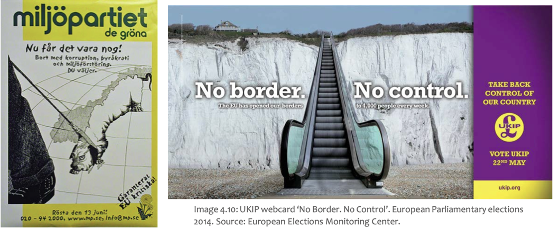
- European (dis)integration- while the Italian Lega warns that EU immigration policy could subjugate native populations (2009), the Czech SPD features prominent allies from other countries to help amplify its sceptical message (2019)

- The Euro- or more precisely its critics who, literally from left to right, include the Greek Communists (2004) and Alternative for Deutschland (2014)

- Environmental concerns- the UK Greens’ surge (1989) has contemporary resonance while the Swedish Left Party promotes climate activists and simultaneously denounces oil lobbyists (2019).
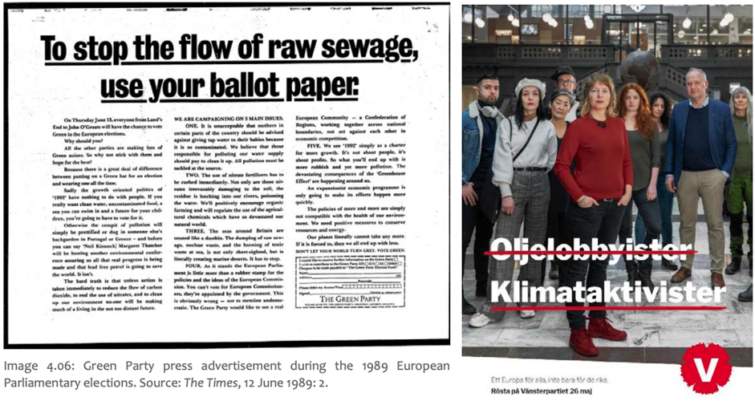
- Yes to EU- even the most Eurosceptic countries have politicians who are prepared to champion the European Union such as the Hungarian (2014) and UK (2019) oppositions, that latter of which makes a popular cultural reference to the 1970s era in which Britain originally joined the then European Economic Community


This Week at Loughborough | 20 May
General:
IAS Research Summit Sandpit (online)
22 May 2024, 12pm-1.30pm, Zoom
Do you have an idea for an Institute of Advanced Studies (IAS) Research Summit, or would you just like to learn more about how to become involved with their programmes and brainstorm potential topics with colleagues? Then bring your ideas, thoughts, and colleagues to this Sandpit Event.
UCU: Drop-in session for staff on non permanent or casual contracts
22 May 2024, 12pm-1pm, MS Teams
A drop-in meeting for members of staff who are on non-permanent or casual contracts. This meeting is hosted by Loughborough UCU and is open to both UCU members and other members of staff at Loughborough University.
General Assembly: An open forum for all staff
22 May 2024, 2pm-3pm, EHB110AB/MS Teams
General Assembly is a forum open to all staff at the University.
For the 23/24 academic year, a new approach to General Assembly has been established. Termly sessions will now take place instead of annually, this will be the third assembly this academic year.
Music for Moving Images: A workshop with Jon Dix
22 May 2024, 2pm, D003 (James France)
Join composer, producer and sound designer Jon Dix for a free workshop on making music for film, TV, games and apps. Jon is a composer, producer and sound designer who’s produced music and sound design for TV programmes (Queer Eye, Selling Sunset) movie trailers (Blue is the Warmest Colour, The Pass), adverts (Cadburys, Nike, BBC) and games (Giant Boulder of Death, Robot Unicorn Attack 2).
Poverty Measurement: New trends and challenges
22 May 2024, 4.30pm-5.30pm, MS Teams
Join this seminar titled ‘Poverty measurement: New trends and challenges’ with David Antonio Rojas Rosey, Executive Director of Poverty Measurement, Coneval and Mariana Galindo Orozco, Director of Poverty Measurement, Coneval.
Maia 4th Anniversary Event
23 May 2024, 4pm-6pm, Burleigh Court
Maia, Loughborough University’s Women’s Network, has hit their four-year anniversary and the committee invites members to join their annual celebration.
Win from Within: A sport psychology series
23 May 2024, 6.30pm-7.30pm, Dan Maskell Seminar Room (Tennis & Squash Centre)
The ‘Win from Within’ series at Loughborough Sport is dedicated to unlocking the full potential of every athlete, regardless of their experience or sporting background. These workshops are designed to introduce you to the power of sport psychology and how it can optimise your development both within and outside of sport.
This week’s session will focus on thriving under the pressures of competition.
LSU Stage: Little Women
25-26 May 2024, Cope Auditorium
Come and enjoy a stage adaptation of Louisa May Alcott’s classic novel ‘Little Women’. Allow yourself to become immersed in the lives of the March family and their neighbors, brought to life by some of the University’s finest acting talents from the LSU Stage Society.
- Saturday 25 May: 7pm-9pm
- Sunday 26 May: 2pm-4pm
Exhibition: The Art Schools of the Midlands
16 May-28 June 2024, 12pm-2pm, Martin Hall Exhibition Space
Martin Hall Gallery presents ‘The Art Schools of the Midlands’, the latest iteration of John Beck and Matthew Cornford’s ambitious Art School Project exploring the history and legacies of the nation’s art schools. The project combines original photography, textual and archival materials to examine the vital role art schools have played, and continue to play, in the cultural and economic life of our towns and cities.
Careers:
Master’s Futures: Building Your Network to Develop Your Postgraduate Career
20 May 2024, 12pm-1pm, MS Teams
For many postgraduate students networking can seem intimidating, but this session will help you develop your confidence and knowledge of networking skills.
Online Study Session
21 May 2024, 5.30pm-7.30pm, MS Teams
The Academic Success Team is inviting you to an Online Study Session – commit the time to study, set goals, and stay accountable and focused with a like-minded community.
International students: Finding work in your home country or globally
24 May 2024, 12pm-1pm, MS Teams
Student Circus are delivering this session and will provide invaluable information including how to access numerous vacancies and what to consider when looking for a job.
Prioritising self-care over the exam period
Taking time away from studying during exam season is vital to avoid burnout and is important in maintaining good mental health. Loughborough provides a range of opportunities to relax and enjoy time away from revising and coursework during this period.
Hall days are a great opportunity to engage with the people you live with and enjoy games and food. Hall committees work hard to organise these days for residents and often communicate activities over social media, make sure to keep in the loop via your Hall’s social media pages to get involved with these activities!
Loughborough is well-situated with connections to many cities around the UK including short journey times to Leicester and Nottingham. This can be a nice opportunity to explore these areas and take a break from studying on the weekends. Loughborough town has many cafés and shops, which are great for a short break from studying.
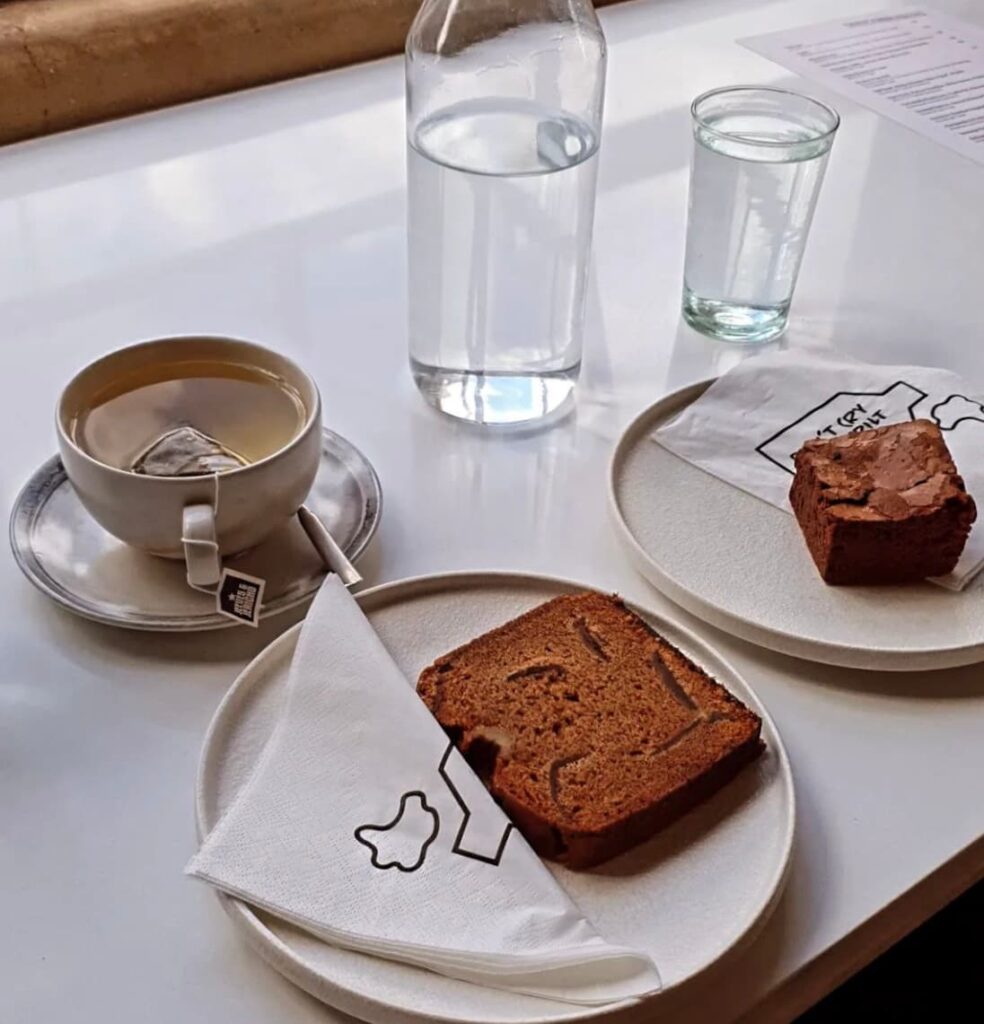
There are also many balls held within communities under the University and the Students’ Union, including the Athletic Union ball, Hall balls, and Society balls. If you are involved in any student communities, it can be fun to celebrate the achievements of your club or society and a unique opportunity to socialise with other members.
Exercise can also be a great way to unwind in your downtime and provide great mental health benefits. Powerbase and Holywell gyms on campus offer great facilities and are close to study spaces for ease. There is also plenty of choice if you’d like to get involved with sports at the Uni, this can be through the Athletic Union, My Lifestyle, Intra-Mural Sport (IMS), or through Loughborough Students’ Union.
Loughborough campus provides many outdoor spaces to take time away from studying. The Paddock is a great area during the summer, with lots of students spending summer evenings playing games and enjoying the area. Burleigh Wood is also a nice place to take a relaxing wander (especially when the bluebells are in season), as well as the rest of campus!

The Sustainability Team often run events as part of Fruit Routes, which can offer students a great way to relax during and spend some time volunteering on campus. Many events are run throughout the year, but this is a nice opportunity to switch your mind off during exam season.
If you have any concerns during exam season, Student Wellbeing Drop-in Sessions are running every week at the Bridgeman Building and can offer students a range of help around mental health, financial issues, and more. Students can also refer to the LU Wellbeing app and Togetherall for further support.

The importance of taking regular breaks at work

It’s easy to get stuck working for hours on end without giving yourself a break, especially when you feel you are too busy, and this can lead to burnout. Integrating regular breaks into your working day is crucial to allow your mind time to rest.
Research shows that taking regular breaks improves productivity, reduces stress levels, enhances creativity, and improves our physical health. A short break allows you to pause and rest so you can resume tasks with new energy.
Harvard Business Review noted: “A longer break does not necessarily equate to a better break. Disengaging from work only for a few minutes but on a regular basis (micro-breaks) can be sufficient for preventing exhaustion and boosting performance.
“Further, timing of the break matters — shorter breaks are more effective in the morning, while longer breaks are more beneficial in the late afternoon. This is because fatigue worsens over the workday, and we need more break time in the afternoon to recharge.”
Challenge yourself to take micro-breaks during the day
- Schedule breaks – Add short breaks to your calendar at the start of the day to ensure you take time to rest between tasks and meetings.
- Monitor your energy levels – When you notice yourself feeling tired or losing concentration, it’s likely time for a quick break to recharge.
- Plan break times with colleagues – If you’re working on campus, plan a rest break with another colleague so you can help each other to stick to this.
- Set an alarm on your phone – Alarms can prompt you during the day if you struggle to stick to break times.
- Pay attention to the benefits you experience after taking a break – This will motivate you to take breaks in the future.
Try the Pomodoro Technique
The Pomodoro Technique is useful if you get distracted while working and want to use breaks to be more productive. The technique ensures that periods of working are productive and short breaks offer moments of relaxation, promoting a healthier balance between work and rest.
- Identify a task that you need to complete
- Set a timer for 25 minutes
- Work on the task until the alarm sounds
- Take a five-minute break
- Repeat the process and then every four Pomodoros, take a longer break
Ideas for a quick but effective break
- Take a brisk walk – A brisk daily walk can give your body a boost and lift your mood.
- Get outdoors – Being outside in natural light and enjoying the quiet calm of nature can help you feel more relaxed.
- Focus on your breathing – Try a short breathing exercise to relieve stress and relax your body.
- Do something creative – If you have a creative hobby that you enjoy, this is a great way to relax your mind.
- Stretch – BBC noted: “Microbreaks are thought to help us to cope with long periods at our desks by taking the strain off certain body structures – such as the neck – that we’re using all day.”
- Make yourself a drink or snack – BBC Good Food has compiled a list of delicious energy-boosting snack recipes.
- Interact with a pet – Interacting with animals can help to relieve symptoms of stress and anxiety and bring us joy.
The best way to integrate regular breaking into your working day is to find a schedule that suits you. Experiment with taking breaks of varying lengths at different times of day until you learn what works best for you.
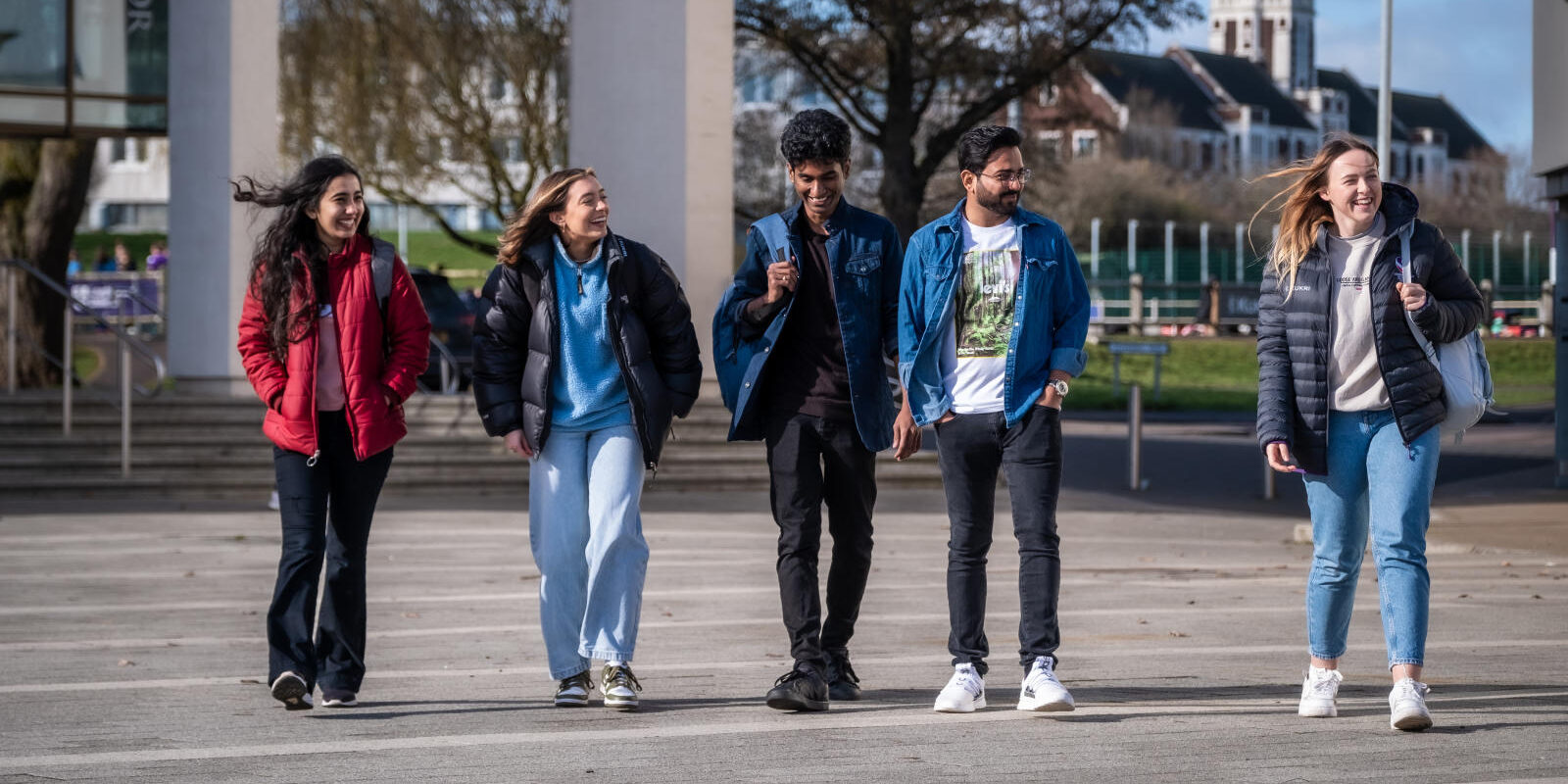
Response to the Migration Advisory Committee review
Vice-Chancellor and President Professor Nick Jennings says universities welcome the Migration Advisory Committee (MAC) review findings, but more still needs to be done to ensure international students feel welcome and supported in the UK.
It is a great relief that the MAC review has found what we in the sector already knew, that there is no evidence of widespread abuse of the UK’s graduate visa route.
At Loughborough we are justifiably proud of our international community. Students and staff from across the world enhance the cultural diversity of our campuses and local regions, bringing different perspectives that inform our teaching, research and innovation activity. The skills, knowledge and experiences international students acquire during their studies enable them to a have a significant economic and social impact – both here in the UK and in their home nations.
A recent report looking at the economic gain to the UK of hosting international students found the net benefit associated with just one annual cohort to be around £37.4 billion. And data from UUK shows universities make a £130 billion contribution per year to the UK economy and support more than 750,000 jobs.
Working with our partners in Government, we need to celebrate the contribution international students and universities make. The sector needs to unite in challenging the often-toxic narrative that surrounds this debate by sharing stories that truly reflect the transformative impact of our international communities.
And I would echo the call from UUK for the Government to provide much needed reassurance, both to universities and international students, that the Graduate route is here to stay. It is crucial the sector has stability.
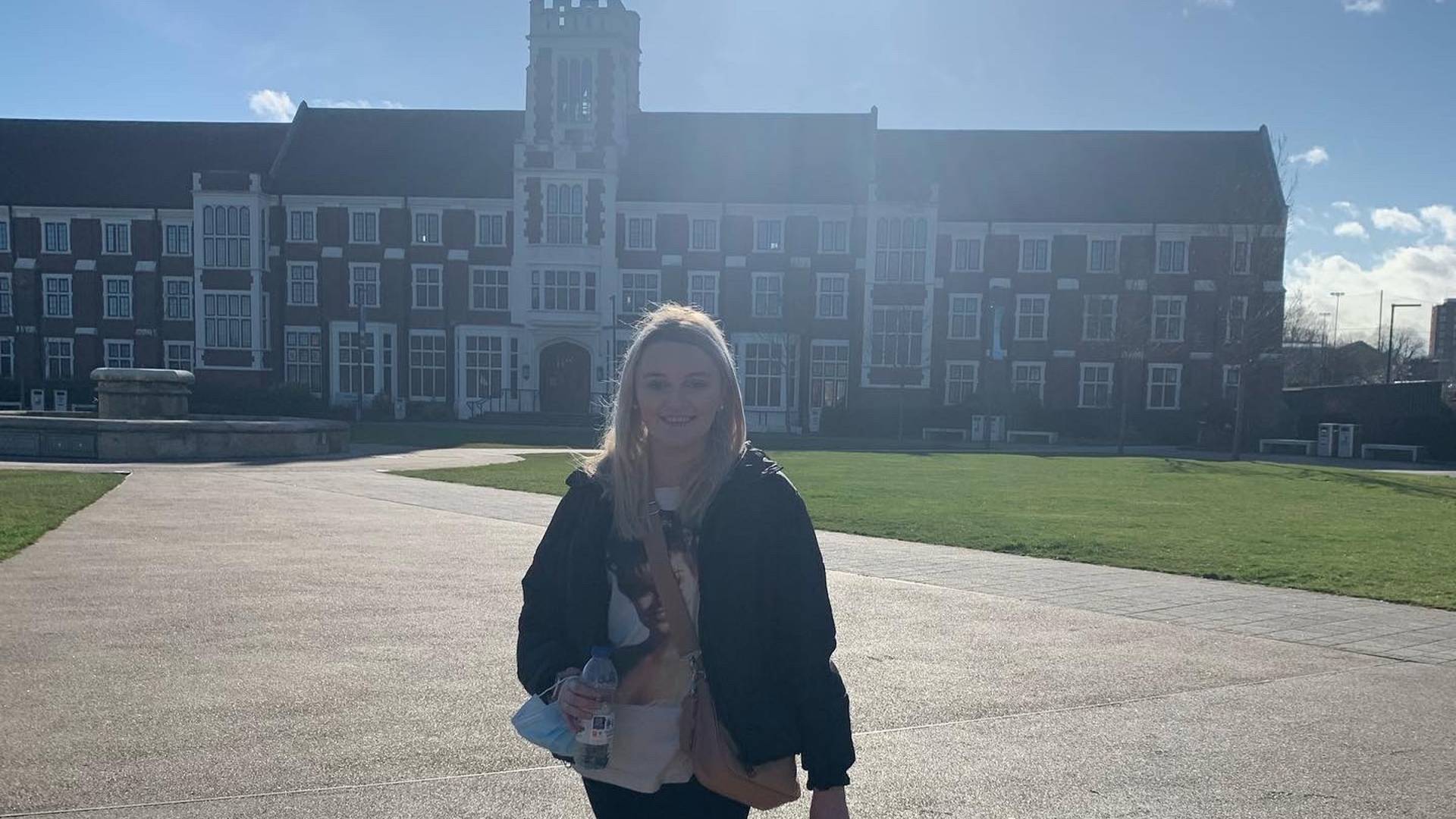
My road to recovery: Finding belonging at 24 years old
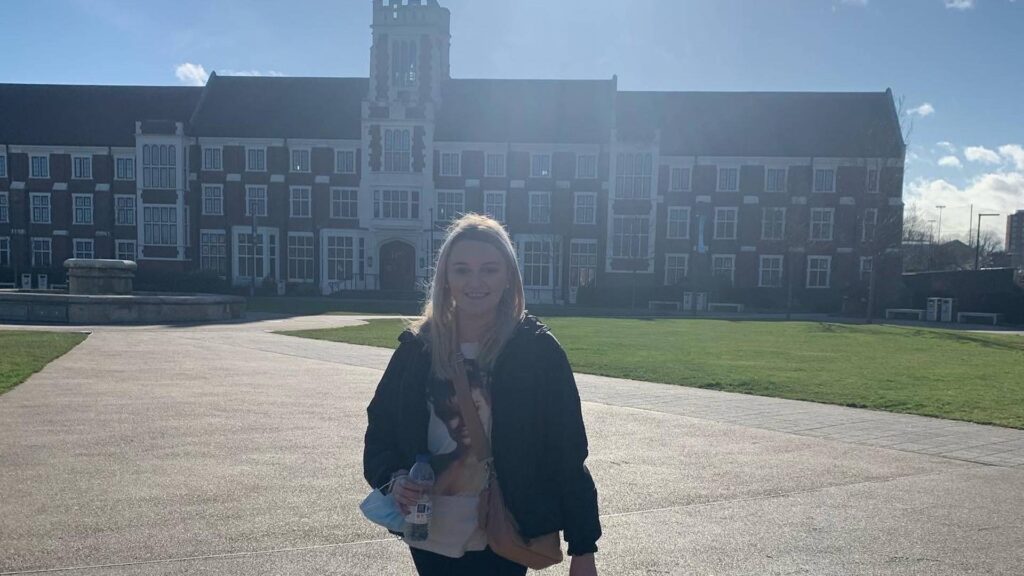
Final-year Psychology student, India Blakemore, reflects on her experience of mental health challenges, her road to recovery, and the support she received whilst studying for her degree.
Why it was always going to be Loughborough
I was inspired to study at Loughborough when my dad graduated there with a diploma in 2012. I attended his graduation at 14 years old, and since then, I have always wanted to graduate at Loughborough. I had a photo taken in his gown and wanted to recreate this at my own graduation.
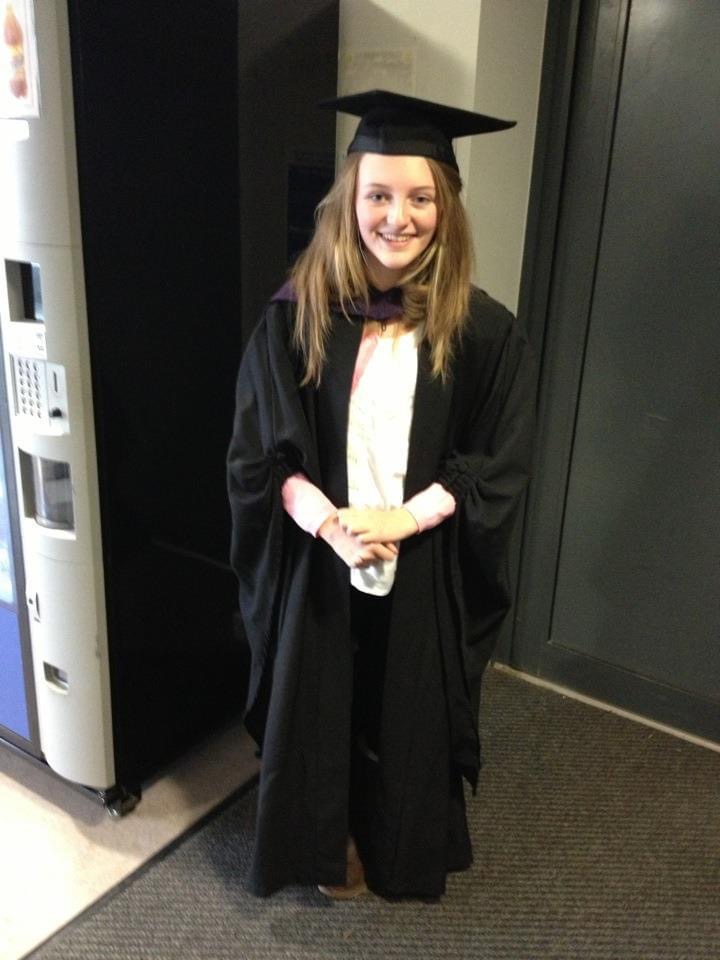
However, having suffered from mental ill health since I was a child, I’ve been in numerous services with various diagnoses. I rarely attended lessons at sixth form due to my extreme anxiety and a few symptoms of post-traumatic stress disorder (PTSD). After re-sitting my first year of sixth form at a different school, with incredible support I managed to achieve grades that allowed me to study for my chosen degree at my dream university. I began university in 2018 with these pre-existing mental health problems which I had been receiving treatment for under secondary care services back at home. I didn’t anticipate how difficult the transition to university would be mentally; I thought this would be the fresh start I needed.
My anorexia nervosa, mood, and anxiety rapidly declined, which led to almost daily GP visits, crisis team visits, welfare checks, ambulances and hospital trips. My difficulties led to me being placed under the Fitness to Study Procedure which I found incredibly hard to deal with, but looking back, it was the best thing that could have happened. This procedure involved meetings that explored what was the best support for me, including being sent home periodically; however, I was ultimately admitted to a specialist eating disorder unit at the end of my first semester. Due to the struggle of being in a ward environment and going through refeeding, I took my first leave of absence for the rest of my first year.
Putting University life on hold to focus on recovery
The summer before I was due to begin university in 2020, I was admitted to an acute mental health unit under section. I was discharged with community support after 28 days of assessment and then began my second year of studies. I returned as a Fresher Helper, surrounded by friends, but unprepared for university life again; I wasn’t managing despite probably ‘looking’ happy on the outside. I was receiving treatment at an urgent care centre daily as I struggled to regulate my emotions and internal distress; I became in denial there was anything wrong.
An emergency Fitness to Study meeting was held just a few days after Freshers’ Week, where I was sent home as it was clear I could not manage my mental health safely at university. I was heartbroken and felt like a failure as I was already so many years behind in my education.
A few days after returning home, I was sectioned again. I was discharged and re-admitted continuously. During this leave of absence in 2020, I received an autism diagnosis, which explained a lot of my difficulties in trying to fit into a neurotypical world as an undiagnosed neurodivergent. I finally felt like I had an explanation as to why I felt so different and found it difficult to regulate my emotions.
The final time I was sectioned was under section three for treatment; I went to two different acute wards and then moved to Milton Keynes (two and a half hours from my home) to commence inpatient dialectical behavioural therapy. This ended up being a 14-month admission in total. Whilst in hospital, I had regular contact with the University, and I also visited Loughborough with hospital staff. Not long after I was discharged, I had my last Fitness to Study meeting to discuss my return and I was taken off this procedure with a support plan in place.
Showing courage in the face of adversity
I returned to study in 2022 after a two-year leave of absence; this was not an easy transition, going from the four walls of a hospital to being completely independent again. I had a short period of instability but used the support around me (such as the University’s Mental Health and Wellbeing Team, NHS Community Mental Health Team, NHS Crisis Team, and my School) to remain at Loughborough. A few months in, I finally found my feet and found belonging at 24 years old. I received an attention deficit hyperactivity disorder (ADHD) diagnosis in early 2023 and started medication. This changed my life, and I finally understood so much; I no longer found myself experiencing extreme emotions and therefore could focus on my studies.
I secured a job in the NHS as a Lived Experience Co-trainer, and a short time later, I began delivering personality disorder training to staff within the trust. For this training, we were shortlisted for a Health Service Journal Digital Award which I attended in June.
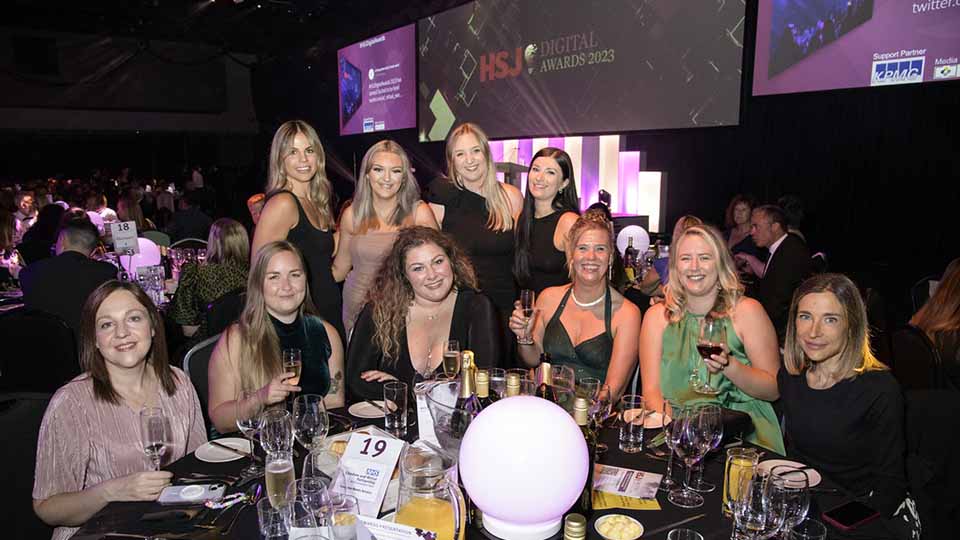
I then secured another job in July with the same trust as a Clinical Support Worker. I have worked a few shifts on an acute mental health ward; however, I now work regularly within the Complex Needs Service in the community (working with those with personality disorders/difficulties). Within this role, I have assisted in developing psychoeducation for clients entering the service; working on the personality disorder strategy for the trust; attending the outcome measures and research meetings; and working with others in the team on our Plan-Do-Study-Act (PDSAs).
As part of my Lived Experience Co-trainer role, I sat on a panel at the Royal College of Psychiatrists in London to explain to other services doing the same quality improvement (QI) project how important it is to involve a lived experience voice and what I have gained from it as well as what I added to the project.
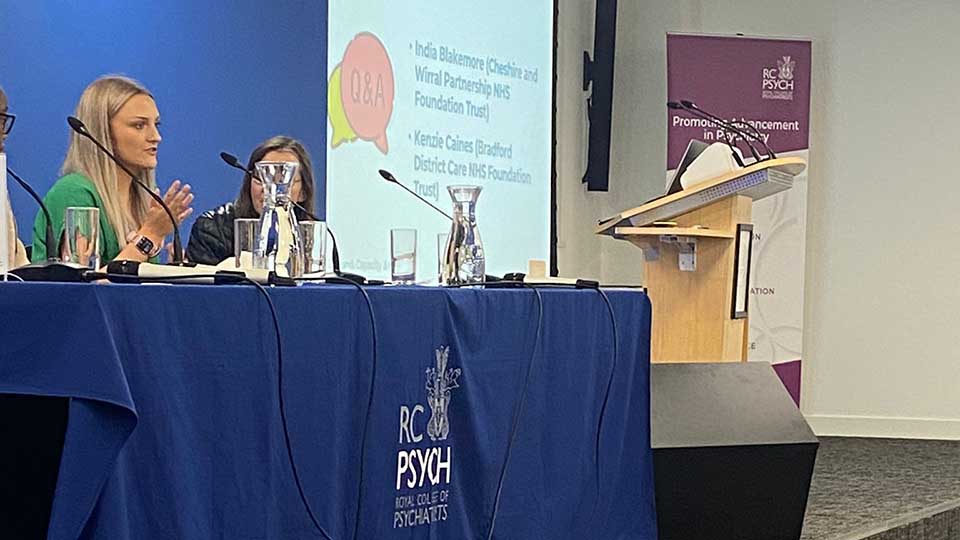
Alongside paid work within the trust, I volunteer in different areas; I am a Governor, I sit on interview panels, and I am an Expert by Experience for the lead provider collaborative EmpowerED.
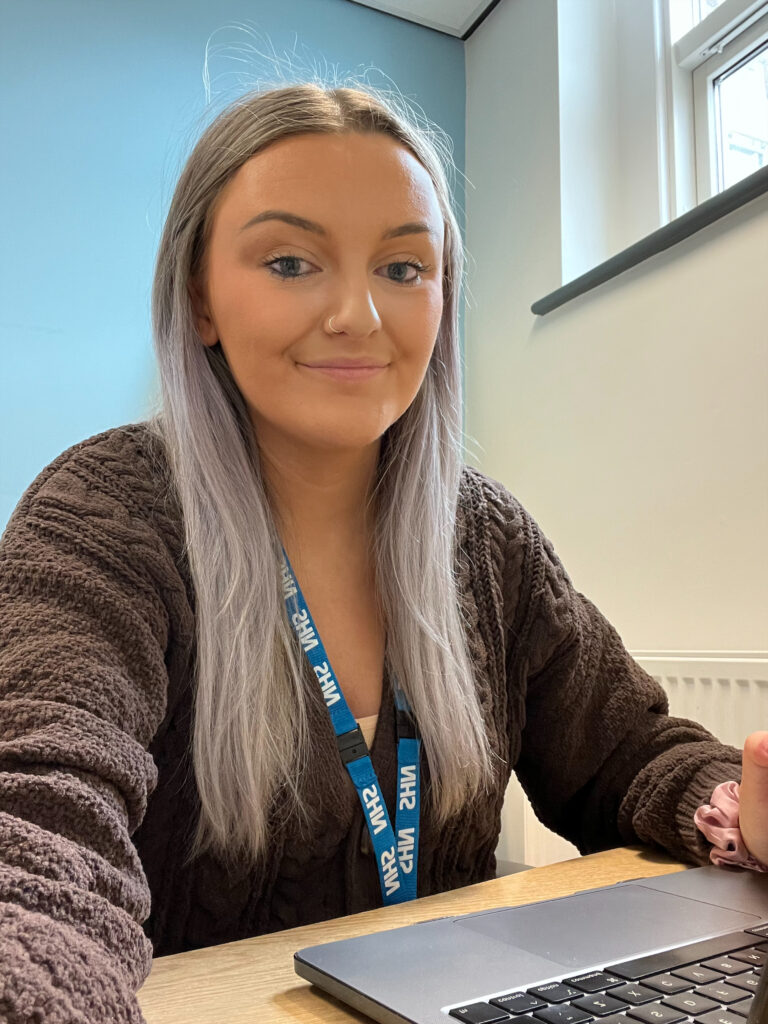
EmpowerED is the eating disorder lead provider collaborative, which covers the trusts and independent providers in the North West. As an Expert by Experience, I have delivered a talk at a government event and training to over 70 clinicians. I currently host the EmpowerED Podcast alongside another Expert by Experience where we speak with guests from across the collaborative about eating disorders in order to spread awareness. For World Mental Health Day 2023, I featured on The Full of Beans Podcast, an eating disorder awareness podcast by Hannah Hickinbotham.
Outside of my work with the trust, I am a member of the Emotion Dysregulation in Autism Youth Lived Experience Advisory Group, where I get involved in many opportunities to share my experience within learning environments, workshops, and more.
Through volunteering for Shout, I was nominated as 1 of 100 young people to attend last year’s Royal Foundation World Mental Health Day event, where I networked and heard from The Prince and Princess of Wales, Dr Alex George, and others. Being invited to such a prestigious event was an honour.
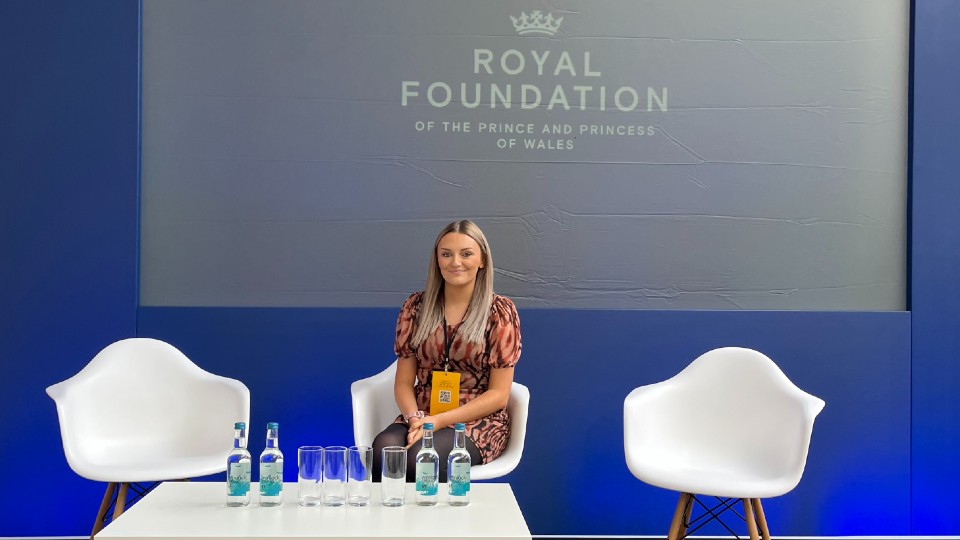
These are just a few of my achievements since I discharged myself from hospital in April 2022, there are many more exciting opportunities that I am going to be involved with in the near future.
I like to be busy and keep my mind occupied. In order to juggle working alongside studying I plan my weeks as far in advance as possible, so I always know what I have on each week. I prioritise my university work and try to fit everything else around this. However, all the extra things I participate in will hopefully aid my degree and future career.
Reflecting on my Loughborough journey
Loughborough has made me a very determined and resilient person, and I am extremely grateful for the support I received despite all of my absences. No matter how poorly I became, support from the University has always been there, waiting for me when I became well enough to study again. I am so grateful to everyone who has been involved with me at the University for never giving up on me and seeing my true determination to attain my degree.
The Mental Health and Wellbeing Team at Loughborough have gone above and beyond, they have always done all they can to enable me to continue studying whilst also acting in my best interest when I deteriorated to the point I could no longer study. They have been my biggest advocate and supported me through everything I have been through in the past six years.
The School of Sport, Exercise and Health Sciences (SSEHS) have also been a great support; my Personal Academic Tutor has been consistent since my first year, which has enabled me to talk to her about any academic concerns whilst also understanding my circumstances. The Student Support Team within the School has also done everything they can to enable me to get through my degree whilst facing difficulties.
My Hall Warden has also been a massive support, despite my presentation, which may have been difficult to witness, she has supported me and acted in my best interest to ensure my welfare.
Looking to the future
Nearing the end of my degree I have faced further obstacles, including a hospital admission over Easter for a relapse in my eating disorder. My degree has been my main source of motivation, and the University has been incredibly accommodating, as they can see my determination despite the many hurdles.
My proudest achievement is that despite all the setbacks over the past six years, I have bounced back each time more determined to graduate. I haven’t let my mental health stop me from completing my degree; although it is taking more time than I expected, I am still going to graduate. I have an offer for a master’s degree and hope to apply for a Clinical Psychology Doctorate in the near future to work within secondary mental health services.
My advice to incoming Loughborough students would be no matter how difficult it will be to move away from home and into university to study, it will be worth it, and there is plenty of support around to guide you. Don’t be afraid to ask for support, everyone needs guidance occasionally, even those who you wouldn’t think of. It is a strength to ask for help when you feel that you need it.
Mental health support available to Loughborough students
If you are a student and need support with your mental wellbeing, there are a number of teams at the University who are here to help you through practical and pastoral support. The Mental Health and Wellbeing Team at the University work with you to find strategies to support your wellbeing and to overcome any barriers which mental health difficulties present to your studies.
Each of Loughborough’s Halls of Residence has a dedicated Warden team who are responsible for providing any pastoral or welfare support that you may need. You can find contact details for your Warden team by clicking through to your Hall and then looking under the ‘Hall contacts’ tab. Additionally, the Community Warden team is available to provide pastoral support to students living off-campus in the Loughborough area. Read more about how they can help you and get to know the team on their dedicated webpage.
Further services available for students can be found below:
- The LU Wellbeing app – a digital toolkit using a holistic approach to positively influence your wellbeing, incorporating mindfulness and cognitive behavioural therapy (CBT) amongst many other techniques.
- Togetherall – designed to help people get support to take control of their wellbeing and feel better. It provides 24/7 peer-to-peer and professional support (from experienced clinicians who are always online), plus a range of courses and tools to help people self-manage their wellbeing.
- The Yellow Book – an online resource with various tools and techniques to help combat stress in written and audio format. The e-book features poems, songs, readings and artwork to help with your mental wellbeing (please note that sign-in is required).
- The University Chaplaincy – (Email: chaplaincy@lboro.ac.uk, Tel: 01509 223741) offer a confidential listening service and can also signpost to other services if you need additional support. University Chaplains are here to listen, care and help all staff and students. No appointment is necessary.
- Nightline – a confidential, non-advisory listening and information service run for students by trained student volunteers from the University.

This Week at Loughborough | 13 May
Mental Health Awareness Week:
Student Wellbeing drop-in sessions
13-17 May 2024, 11am-2pm, Pilkington Library
These drop-in sessions offer quick advice or guidance on mental health and wellbeing. Your concerns may be related to life events, wellbeing, financial difficulties, physical health, or injury. Students are welcome to drop in with any queries they may have and to find out about the support available at the University.
Please don’t feel your concerns need to be managed alone, there are lots of options for support at Loughborough University. The Wellbeing Team is here to support you with problems that may impact you on your academic journey. The team may also help to connect you with another team or service that is better able to do so.
Managing Anxiety
14 May 2024, 12pm-1.30pm, BRI 2.12 (Bridgeman Building)
In this workshop, we will explore ideas of how to recognise what is happening when you experience anxiety, and strategies to begin managing different reactions.
Dealing with Loneliness
14 May 2024, 3pm-4pm, MS Teams
This online workshop will cover the following topics:
- What is loneliness?
- Loneliness in relation to university life
- How loneliness impacts our behaviour
- Signs of loneliness
- Discover who you are and your values
- How to approach loneliness
- Social connection ideas
- Continuing your journey and seeking support
More Talk and Action: Men’s Wellbeing Workshop
14 May 2024, 3pm-5pm, Rutland Building
This workshop offers a safe space in which men can talk about the challenges they face and learn practical tools to improve their health, wellbeing and coping strategies.
The session will include discussion, team activities and some self-reflection. Attendees can expect to cover where we go wrong with men’s health, the link between money and mental health, boosting good behaviours, managing worry, problem solving and thinking well.
Mental Health Awareness Week Stalls
15 May 2024, 10am-1.30pm, The Atrium (Edward Herbert Building)
A variety of stalls are being held in the Atrium to mark Mental Health Awareness Week:
Come along and have a chat, cookies and other freebies will be on hand.
Student Wellbeing Drop-in Session to mark Mental Health Awareness Week
15 May 2024, 11am-1pm, Innerspace (Edward Herbert Building)
This drop-in session offers quick advice or guidance on mental health and wellbeing. Your concerns may be related to life events, wellbeing, financial difficulties, physical health, or injury. Students are welcome to drop in with any queries they may have and to find out about the support available at the University.
Sensory Stitch
15 May 2024, 11.30am-1.30pm, EHB209/10 (Edward Herbert Building)
Join LU Arts during Mental Health Awareness Week for a chance to unwind and explore the sensory potential of stitch and its benefits to wellbeing.
The session will begin with guided mark-making on paper, using tools to produce small, neat marks, spillages, and textured marks. You will then translate the expressive marks into stitches, with demonstrations of a range of embroidery techniques, from smaller stitches to 3D techniques.
Beach Fest
15 May 2024, 12pm-5pm, Beach Park (Holywell)
Beach Fest brings together My Lifestyle, Social Sport Programme and the Coach and Volunteer Academy (CVA) to deliver a festival of activity including beach volleyball, spikeball and rounders. There will also be a surf simulator, mocktails, hotdogs, t-shirts and ice cream, all free of charge. This event provides an opportunity to meet new people, relax from exam stress and have fun.
LSU Classical String Quartet
15 May 2024, 1pm-1.30pm, The Atrium (Edward Herbert Building)
LboroStrings, LSU Classical’s student string quartet, was formed in 2022 and has since performed at a variety of events and concerts. Their repertoire ranges from traditional classical pieces to contemporary pop covers, and they love bringing a touch of pizzazz to the events at which they play. The Quartet will be playing in the Atrium to mark Mental Health Awareness Week.
Laughter Club (staff)
16 May 2024, 12.15pm-1pm, Chaplaincy Innerspace, EHB217 (Edward Herbert Building)
Try something new and join the University Chaplaincy for their monthly Laughter Club. Combining playfulness, laughter, and breathing for pleasure and health, laughter yoga provides a serotonin boost to help you feel good for the rest of the day.
General:
Pint of Science
13-15 May 2024, 6.30pm-8.30pm, Loughborough
The international science outreach festival Pint of Science returns to Loughborough as the University’s research community make their way from labs and offices to local cafés, restaurants and pubs to share their research stories. Over 55 scientists and researchers will deliver 21 talks, demonstrations and live experiments in relaxed and informal environments across Loughborough town centre.
Esquires Coffee, Public and Plants Cafe, Albert House, PETER Pizzeria, The Swan in the Rushes, Champs Bar and Grill and Revolution will host a full programme of events.
REACH Network Meeting
14 May 2024, 12pm-2pm, D002 (James France Building)
This will be the first Race, Ethnicity, and Cultural Heritage (REACH) Network meeting with new co-chairs Nik and Dora and a visit from Richard Taylor. The Network aims to set a strong foundation of community, trust, and respect as this meeting opens a new chapter of REACH.
Reflect and Rejoice (University Choir)
15 May 2024, 7.30pm, Cope Auditorium
‘Reflect and Rejoice’ is the University Choir’s annual spring concert. In the first half, the Choir will be in a reflective mood as they perform ‘Requiem’ written by Matthew Coleridge in 2014-15 shortly after he became a father. In the second half, rejoice with the Choir as they sing some familiar favourites by Handel, Phipps, Lloyd Webber and Barlow, and Graham and Lovland.
Once again, the Choir is delighted to be joined by members of LSU Classical who will be accompanying part of the programme. Tickets available on the door (subject to availability), cash sales only. Please note that tickets are non-refundable unless the event is postponed or cancelled.
BBC Radio 4 quiz ‘The Third Degree’ recording
16 May 2024, 5.30pm, James France
Support the Loughborough staff and students taking part in the BBC Radio 4 ‘The 3rd Degree’ quiz by attending the campus recording. ‘The 3rd Degree’ is a show that pits three undergraduate students against three members of staff in a general knowledge and specialist subject quiz.
Each of the three students are studying one of the three subjects taught by the three members of the staff team, with rounds including team and individual questions, and quickfire bell-and-buzzer rounds.
Flix Cinema Screening: Bottoms
16 May 2024, 6.30pm-9pm, Cope Auditorium
‘Bottoms’ is directed by Emma Seligman and starring Rachel Sennott, Ayo Edebiri, Havana Rose Liu and Nicholas Galitzine. Unpopular best friends PJ and Josie start a high school fight club to meet girls and lose their virginity. They soon find themselves in over their heads when the most popular students start beating each other up in the name of self-defense.
Stump the Odds
17 May 2024, 9.30am, National Centre for Sport and Exercise Medicine (NCSEM Building)
Stump the Odds is a one-day event on the gambling harms in cricket. The event is part of a seedcorn grant from the University of Bristol Gambling Harms Research Hub. It will involve a conference-style networking event, as well as a research element aimed at understanding the key areas for future research within this area.
This event aims to engage national & international academic, sporting, charitable, and clinical partners, providing the opportunity to present research and reflections in the area.
Women in Enterprise Conference
18 May 2024, 10am-4pm, Loughborough University Stadium
This conference is a celebration of innovation, resilience, and the transformative power of female leadership.
Dive into thought-provoking discussions on:
• Empowering Women Entrepreneurs: Challenges and Triumphs
• Innovation: Nurturing Entrepreneurial Mindsets – Confidence vs. Imposter Syndrome
• Sustainability and Social Impact: Women Driving Change
• Applying for Funding: Unlocking Financial Opportunities
• Creating Networks and Getting Support: Top Tips Panel
Connect with like-minded individuals, exchange ideas, and gain insights from successful women who have conquered challenges in the entrepreneurial world. Network throughout the day and explore the incredible talent within the Loughborough Enterprise Network.
Loughborough International Athletics
19 May 2024, 11am-6.30pm, Paula Radcliffe Stadium
Loughborough International Athletics (LIA) is widely recognised as the curtain raiser to the outdoor season with an action-packed day of first-class athletics. Once again, Loughborough athletes will compete against teams representing England, Wales, Scotland, GB&NI Under-20s and the National Athletics League. The event will offer a great day out, where friends, families and athletics fans alike can enjoy an event full of action-packed fun and excitement.
Careers:
Exam Success Workshop
14 May 2024, 6pm-7pm, WAV041 (Wavy Top Building)
Come along to the Student Success Academy’s ‘Exam Success’ workshop to discover new techniques to help you prepare for, and succeed in your exams.
Finalist Futures: Moving On
14 May 2024, 6pm-8pm, James France Exhibition Area
Join us at this informal event to find out how we can support your career planning before and after you graduate. You have a lot going on right now so come along for some top tips to help build your confidence and take action when the time is right for you. Don’t miss out on some free food, a freebie and a chance to win a prize!
Breakfast Study Cafes
16 May 2024, 8am-11am, WPL201 (STEMLab)
Boost your productivity on campus at the Student Success Academy’s Breakfast Study Cafes. Drop in for one, or all sessions where you can enjoy a morning study session, a free drink, and some baked goods. Using a study planner to set goals for the sessions, study with the Pomodoro technique in sessions one and two (8am-9am and 9am-10am), and work at your own pace in session three (10am-11am).
Start-Up Programme
17 May 2024, 6pm-7.30pm, Start-Up Lab 2.01 (STEMLab)
This dynamic five-week journey will equip you with the essential skills and knowledge needed to elevate your Start-Up venture. Delve into crucial topics such as goal setting, mindset development, market research, networking strategies, business registration, intellectual property, finance options, and more!
Participants will also gain access to exclusive mentoring sessions and hear from esteemed industry experts, including Loughborough Enterprise Network (LEN) Legends, who have navigated the entrepreneurial landscape with great success.
Loughborough London:
IAS Friends and Fellows Lunch
13 May 2024, 12pm-1pm, Outside LDN.1.04 (London campus)
The Institute of Advanced Studies (IAS) will be hosting this informal gathering over lunch where we will be joined by all fellows here for a week of activity under the IAS Annual Theme for 2023-24 ‘Gestation: Bodies, Technologies, Ecologies, Justice’ – Dr Lindsay Jane Barnes, Ms Nompumelelo Gumede, Dr Åsa Virdi Kroik, Dr Sophie Lewis, Dr Luiza Prado and current IAS Open Programme Fellow Dr Marina Cino Pagliarello.
IAS Seminar: Roundtable Enemy Feminisms: Sophie Lewis in conversation with Victoria Browne and Jilly Boyce Kay
13 May 2024, 1pm-2.30pm, LDN.1.04 (London campus)
This event is part of the Institute of Advanced Studies (IAS) Annual Theme for 2023-24, ‘Gestation: Bodies, Technologies, Ecologies, Justice’. Sophie Lewis, author of the forthcoming book ‘Enemy Feminisms: TERFs, Policewomen, and Girlbosses Against Liberation’, is in conversation with Victoria Browne and Jilly Boyce Kay.
Screening: Rubus I: Workers by Rehana Zaman with an introduction by the artist
13 May 2024, 3pm-4pm, LDN.1.04 (London campus)
This event is part of the Institute of Advanced Studies (IAS) annual theme for 2023-24, ‘Gestation: Bodies, Technologies, Ecologies, Justice’. As part of the Radar programme for Gestation, there will be a screening of ‘Rubus I: Workers’ by Rehana Zaman, with an introduction from the artist. Rubus is an ongoing body of work that encompasses moving image, sound works, scripts and performances, in collaboration with artists, poets, writers, farm workers and plant microbiologists.
Meet the IAS team
14 May 2024, 10am-12pm, LDN.1.04 (London campus)
The Institute of Advanced Studies (IAS) is running this informal drop-in session for any colleagues to come and meet the IAS team. They can discuss what they do and how you can interact with them to bring outstanding international scholars, academics, policy-makers, artists, activists and/or public intellectuals to both the Loughborough and London campuses to initiate new or develop existing collaborations.
IAS Seminar: Gestation – Justice
15 May 2024, 1pm-3pm, LDN.1.04 (London campus)
This event is part of the Institute of Advanced Studies (IAS) annual theme for 2023-24, ‘Gestation: Bodies, Technologies, Ecologies, Justice’. This roundtable brings together diverse scholars working across medicine, political philosophy, communications and behavioural science to consider existing inequities and their intersections, and how expanded concepts of gestation may lead to greater justice.
Performance by Nat Raha
15 May 2024, 3.30pm-4.30pm, LDN.1.04 (London campus)
Radar has invited poet Nat Raha to perform as part of the Gestation programme. Nat’s performance will connect to themes of queer and transfeminist world-making, and collective living as a resistant practice, in a lineage of queer and trans feminist of colour thought. This continues a dialogue between Nat and Institute of Advanced Studies (IAS) visiting fellow Dr Sophie Lewis, who will be speaking as part of the wider roundtable events. This is the first part of Nat’s work with Radar, which will unfold later in the year.
IAS Seminar: Gestation – Ecologies
15 May 2024, 10am-12pm, LDN.1.04
This event is part of the Institute of Advanced Studies (IAS) annual theme for 2023-24, ‘Gestation: Bodies, Technologies, Ecologies, Justice’. This roundtable will propose a reflection about gestation from the perspective of carrying and caring, accentuating the idea of a lasting process that is not limited or circumscribed to pregnancy and birth, and that encompasses a collective engagement with the generation and protection of life.
IAS Seminar: Gestation – Justice
15 May 2024, 1pm-3pm, LDN.1.04 (London campus)
This event is part of the Institute of Advanced Studies (IAS) annual theme for 2023-24, ‘Gestation: Bodies, Technologies, Ecologies, Justice’. This roundtable brings together diverse scholars working across medicine, political philosophy, communications and behavioural science to consider existing inequities and their intersections, and how expanded concepts of gestation may lead to greater justice.
IMCI Speaker Series on Gestation and Storytelling
16 May 2024, 10am-12pm, LDN.3.23/Online
The Institute for Media and Creative Industries (IMCI) and the Institute of Advanced Studies (IAS) invite you to this ‘Speaker Series on Gestation and Storytelling’.
During this round of conversations, three women share their experience of how stories about gestation, reproduction, birth, and parenting are transmitted through generations and communities, framing the way people deal with carrying and caring for life. They will also discuss how mainstream channels proliferate stories about gestation that help (or not) the situation at the community level.
Living comfortably during exam season
Exam season can be an incredibly stressful time for students at university. If you are living in shared accommodation, it’s important to be mindful of others around this period and minimising stress in your living environment.
Going into the summer exam period, you should consider whether your schedule is functional and maintainable to avoid conflict and upset for yourself, as well as others around you.
Ensure that you have a clean and tidy workspace for revising to keep you on track and include frequent breaks into your schedule. If you work at a desk, organise it accordingly so that you don’t have to waste time searching for material that you may need. Try and stand up or go for a walk every hour or so for a break, so you can come back to your work later and feel refreshed. It can also be helpful to do some physical activity in the evening to wind down from a day of studying, such as playing sport, going to the gym, or as simple as going for a walk.

Living in halls of accommodation can be challenging when there are lots of other students sharing the living spaces. You can create a better area to study and relax at home if you share your exam schedule with flatmates, so they know when to keep noise to a minimum and reduce stress for you. Hall wardens typically send out emails during this time to notify residents to keep the volume down past 11pm, but be considerate of the actions you take if you are heading out a bit later than usual with friends.
Your nutrition is integral to getting you through exam season sustainability. There are many accessible resources for students to find recipes for during exam season, some can be found on the Student Life blog. It’s important to incorporate proper meals into your revision schedule and make the time for mindful eating when you can.
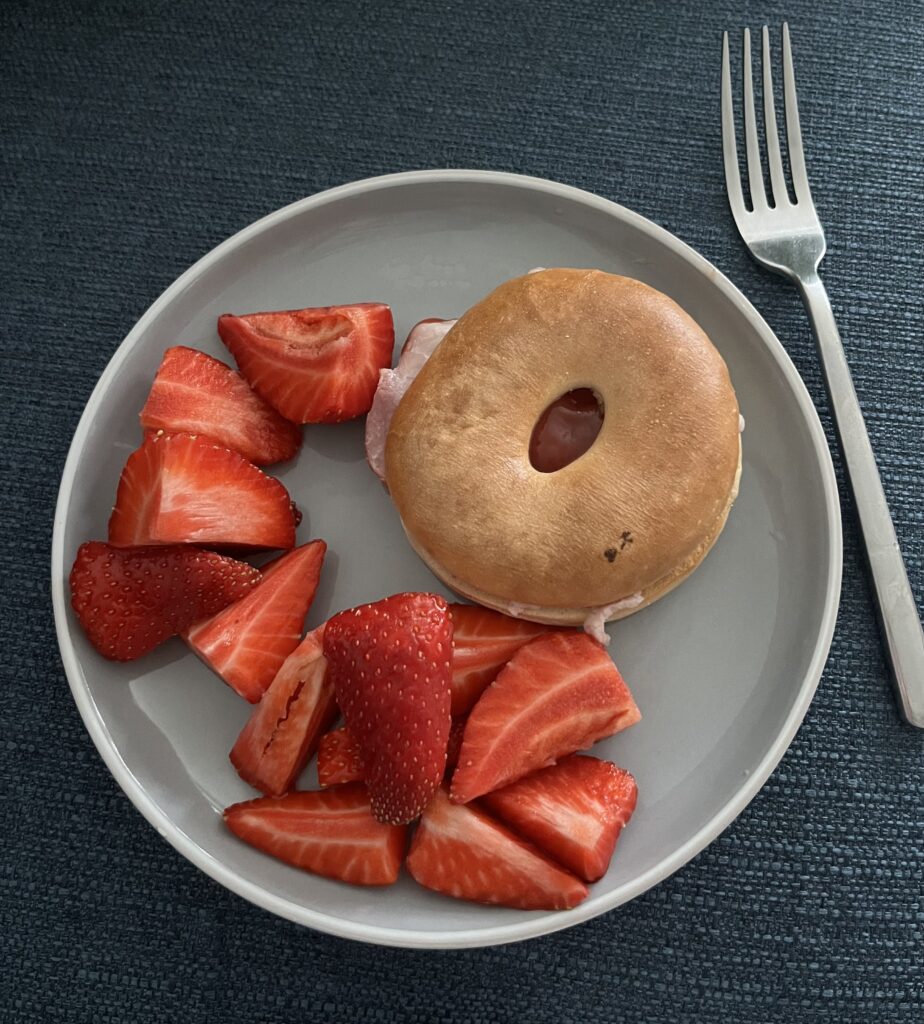
For students living at home, have a conversation with whoever you live with so they can be more mindful around the exam period. Discuss if you’d like to use shared areas, such as a lounge, dining room, or kitchen to study, so you can minimise interruptions and stay out of the way of daily activities at home. Getting your family and friends onboard with your schedule before your exams start can be helpful to enter exam season in a relaxed way and so you can hopefully maintain a good balance between revision and home life. Utilising University facilities during this time may also be helpful, so seek out appropriate study spaces such as the Library, EHB Atrium, Wavy Top study spaces, and other areas around campus.
Regardless of your living situation, try to make the best of your current conditions to ensure that you get through the exam season comfortably and healthily with minimal stress.
Good luck!

Five minutes with: Dr Laura Jenkins
What’s your job title and how long have you been at Loughborough?
I’m a University Teacher in Psychology and I’ve been here since September 2018.
Tell us what a typical day in your job looks like?
During semester time, I teach quite a lot so I’m either in a lecture theatre or in my office preparing for that week’s teaching. As I’m a Module Leader for multiple modules, some of the work is more admin based such as updating Learn documents and planning assessments and marking.
On teaching days, I can be doing a number of things such as meeting with personal tutees or dissertation students about their work. I also have times where I am purely marking (with limited meetings). As I teach cohorts of up to 350 students, there is often a lot of work to mark, although this is not done by me only.
What’s your favourite project you’ve worked on?
I have recently completed a project on Vevox to show how much our students enjoy using it during teaching sessions. I presented this work at the International Conference on Psychology, Counselling and Education and have recently had an article accepted for publication within Psychology Teaching Review.
What is your proudest moment at Loughborough?
Being awarded a STAR Award from the School of Sport Exercise and Health Sciences for ‘Outstanding Contribution to Education and Student Experience’ in 2023.
Tell us something you do outside of work that we might not know about?
I’m just learning how to play darts. My partner has played darts for many years and he is now teaching me how to play. I even have my own set of darts now.
What is your favourite quote?
“Do one thing every day that scares you.” -Eleanor Roosevelt
If you would like to feature in ‘5 Minutes With’, or you work with someone who you think would be great to include, please email Sadie Gration at S.Gration@lboro.ac.uk.
Reflections on Race Equality Week: Two months on
The Legal Services team participated in the Race Equality Matters 5-Day Challenge for Race Equality Week 2024 at the beginning of February.
The theme for the 5-Day Challenge was #ListenActChange. Race Equality Matters explained this theme was selected after feedback from their community found that there is still much work to be done for the focus to shift from just words to meaningful action and change. All of us in the Legal Services team wanted to participate in the week’s activities, recognising that we all have a part to play in bringing about the changes needed and that there is always more for us to learn.
It was easy to find time each day to do the brief daily challenge. I had downloaded the materials in advance, so I had them to hand and simply shared the relevant ones with the rest of the team via our MS Teams chat each day. Everyone did the challenges themselves, at a time convenient to them. Each one took around five minutes and was designed to prompt self-reflection and consideration as to what action we could each take to help drive change.
The final challenge of the week was to make a Big Promise. This built on all the challenges of the previous days, each of which raised awareness of the issues faced in achieving race equality and the impact of not taking action. They were thought-provoking and covered a whole range of important themes, including the impact of microaggressions, understanding different cultures, the impact of public praise, and the importance of creating a culture of belonging.
I have made a deliberate effort to educate myself on racial inequality over the last few years. I am a white British woman, who grew up and went to school in a predominantly white, British area. I recognise that for much of my life, issues of race inequality were not at the forefront of my mind and have not directly impacted my life.
I have had to make a conscious effort to learn about racial inequality and consider the ways that I can contribute to the effort to make a difference. I felt challenged by the call to action by this year’s Race Equality Week as I recognised that there is more that I could (and should) be doing in order to become a much more effective ally.
The Big Promise covers many of the different roles we may find ourselves in on the journey to race equality – be that as a leader in an organisation, as an ally, or as an ethnically diverse colleague. I see myself as an ally on this journey, and my Big Promise is in that capacity – to learn and proactively act anti-racist.

Some members of the team have made a similar promise. Others have made different promises. While we did the week’s challenges as a team, it was very much an individual activity for people to engage with and take forward in a way that was appropriate for them. It wasn’t something I wanted to direct or facilitate beyond simply making the challenges available and accessible. Each member of the team has decided on the Big Promise they feel is appropriate for them.
I found doing the challenges really worthwhile. They have provoked me to look at the ways that I can step up in my allyship and be more proactive about looking for opportunities to act on what I have learned. I feel much better informed about the impact of certain beliefs, thoughts, or actions and as a result more confident about being actively anti-racist. I am sure I will revisit the challenges again in the future.
The challenges are still all available on the Race Equality Matters website, so if you have not yet done them, I would highly recommend taking a look and participating. They were engaging, thought-provoking and accessible with many practical suggestions on things people can do right away to start to bring about positive change wherever they are.
Helen Taller
Senior Solicitor (Property and Estates)
Hedgehog Awareness Week
The 5th to the 11th of May 2024 marks Hedgehog Awareness Week, which is a campaign organised every year by the British Hedgehog Preservation Society. This year, the charity has selected the theme: ‘Welcome Wildlife!’ which is about creating safe green spaces, gardens & environments for hedgehogs and other animals to live.
It turns out that hedgehogs are a great ‘indicator species’. This means that they don’t require much to survive, so if they are struggling, it indicates that the environment is in some way insufficient. This can be a cause of concern for the survival of other species, including humans, so we really should be paying attention… (North East Post – Hedgehog Awareness Week; Cornwall Wildlife Trust, 2024).

What can you do?
Hedgehogs are under threat, after undergoing significant population declines in recent decades. We need to reverse this by removing threats and installing practical conservation measures (The British Hedgehog Preservation Society, 2024). To gain an improved understanding of why hedgehogs are struggling, the British Hedgehog Preservation Society have partnered up with some other organisations to launch a new National Hedgehog Monitoring Programme (NHMP). You can read more about this programme and how you can get involved following this link National Hedgehog Monitoring Programme.
In addition to this, there are a few small things we can all do to ensure our gardens and local area are safe for hedgehogs. A few examples would be:
- Avoid using pesticides and poisons which could harm hedgehogs or disrupt their food chain.
- Cover up drains so that hedgehogs don’t fall into them.
- Do not litter; encourage others to do the same, as litter can cause harm to wildlife.
- Make sure you put away any sports nets from your garden and ensure that any other netting is high up enough that hedgehogs can pass under it so do not get stuck.
- Check for hedgehogs before you mow or strim the lawn, and before you light a bonfire as they sometimes make nests in log piles!
- You could also add some hedgehog-friendly features to your garden such as ‘hedgehog highways’, feeding stations, log piles, pools or ponds, and hedgehog homes.
To find out more about the BHPS and what you can do, visit North East Post – Hedgehog Awareness Week.

What’s been happening in the world of hedgehogs?
Its important to highlight the good news, so I wanted to bring your attention to this inspiring story of a student who has been campaigning for hedgehogs.
Lyndon Howson, a student studying for a Zoology degree at the University of Chester, has won the ‘Mammal Champions Award’. This is in recognition of his efforts in coordinating the Hedgehog Friendly Campus campaign at his university. His passion for wildlife, ‘outstanding dedication’ and leadership when volunteering for this role have been impressive, and as such he has been given this national award. Not only this, but he has also now been selected by Universities UK to feature in the ‘100 Faces’ campaign which aims to celebrate the positive impact of ‘first-in-the-family’ students and graduates in the UK.
The initiative led by Lyndon, alongside another student project coordinator, has experienced an impressive transformation over the past 18 months, with the team growing from seven to 170 individuals. With the support of volunteers and staff, Lyndon has organised many activities such as:
- Camera trapping surveys.
- Hedgehog tunnels.
- Habitat management.
- Meadow planting.
All these efforts have been part of the Hedgehog Friendly Campus scheme adopted at the University of Chester, which is a national accreditation programme funded in part by the British Hedgehog Preservation Society (BHPS) and delivered by Students Organising for Sustainability UK (SOS-UK). Loughborough University has also been involved in this programme – more on this later.
Not only have the volunteer numbers increased due to Lyndon’s efforts, but the hedgehog numbers have increased! There are now eight on campus (when before there were none) and three hoglets were born last year. Amazing!
To read more about Lyndon’s story and the Hedgehog Friendly Campus scheme, please visit this webpage: FE News | National award for student wildlife champion
What are we doing?
Here at Loughborough University, we strive to protect hedgehogs by:
- Taking practical measures.
- Educating others & raising awareness.
Last academic year (2022-23), we gained the bronze level of the Hedgehog Friendly Campus award. This involved a group of staff and students working together to organise initiatives such as:
- Promoting the campaign.
- Undertaking workshops.
- Holding fundraisers.
- Distributing flyers.
- Brainstorming creative ideas to raise awareness of hedgehog protection.
Another key activity which helped the team achieve their goals was running staff and student litter picks, with over 23kg collected within only 30 minutes! We have undertaken some litter picks this academic year too, to protect the hedgehogs and other wildlife, and ensure campus remains clean and tidy!
Another success story is that of a hedgehog rescue on campus…In September 2022, Kaz Setchell, the Gardens Manager, and Rachel Senior, former Assistant Gardens Manager, found an underweight and unwell hedgehog on campus. After taking the hedgehog Kazzie to Barrow Hedgehog Rescue, she was able to be passed onto the vet so medicine could be administered. The problem had been Kazzie was far too small to hibernate that winter, so she was given a home with Rachel Senior until she was healthy again, which took around a month (after receiving lots of food donations!). Kazzie was re-introduced to the wild that spring and released into a garden near where she was found.

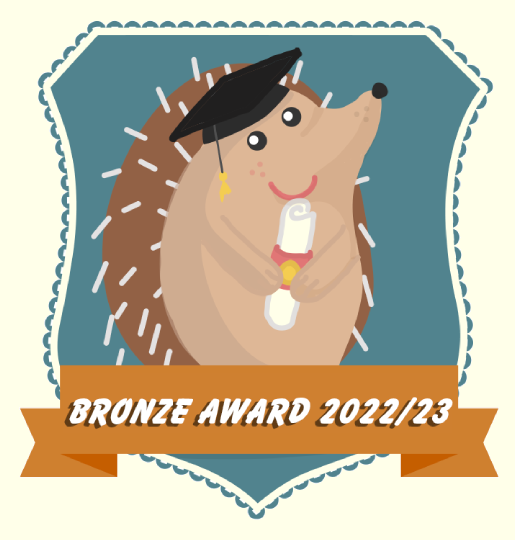
To read more, visit our webpages:
Wildlife | Estates and Facilities Management | Loughborough University (lboro.ac.uk)
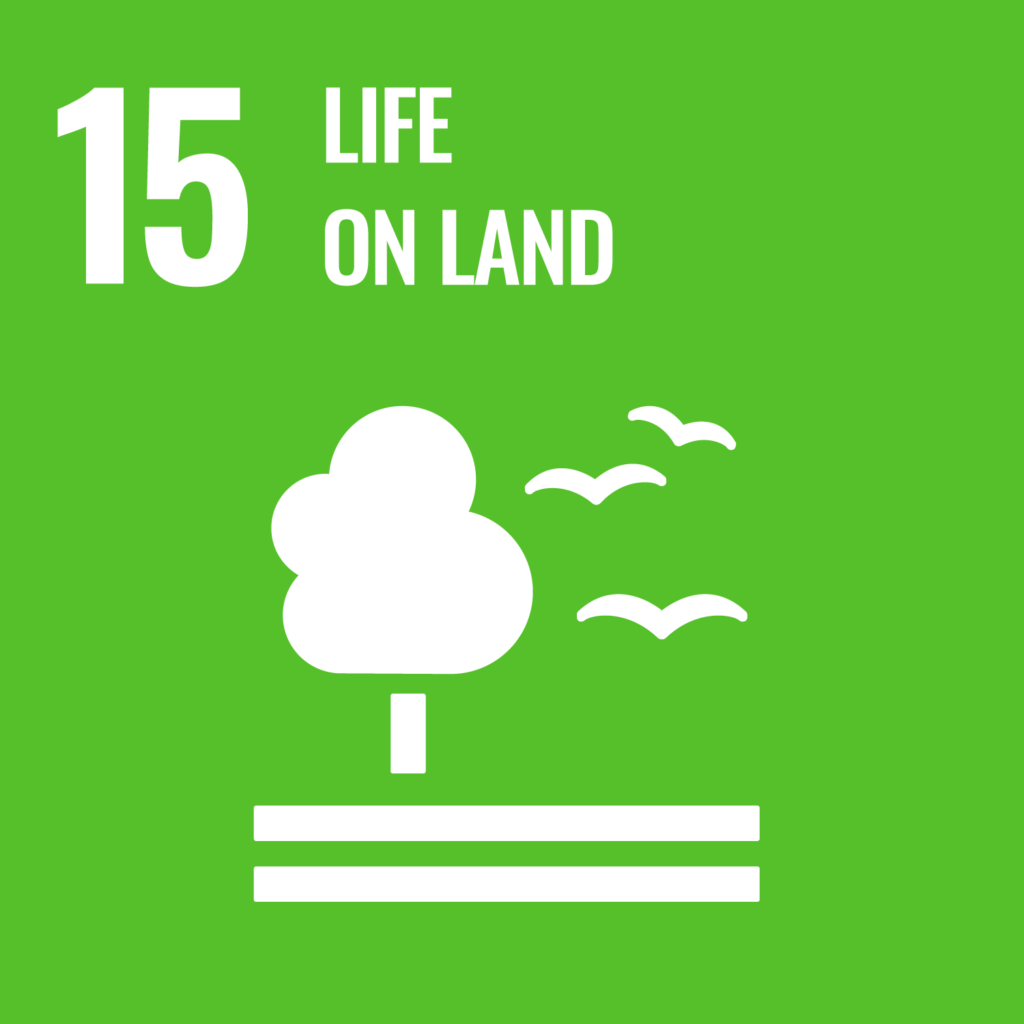
This article is in support of the United Nations Sustainable Development Goal 15: Life on Land. To read more click here.
Another success story: Biodiversity Week
From 29th April- 3rd May, we hosted another themed week: Biodiversity Week.
Why?
We thought it would be a nice idea to host a Biodiversity Week to draw attention to the importance of protecting species and appreciating the world around us. This will become increasingly important as the climate continues to change, affecting species and their habitats on a global scale. Being outside in nature can also have such a positive impact on our mental health:
- According to the Mental Health Foundation, people who are more connected with nature are usually happier as nature can generate many positive emotions such as calmness, joy and creativity. Nature connectedness is also associated with lower levels of depression and anxiety.
- According to Mind, spending time in nature can help you feel more relaxed and improve confidence and self- esteem, as well as giving you the opportunity to meet new people and connect with your local community.
What happened?
The schedule of events was as follows:
Monday 29th April: Evening Blubell Walk, Burleigh Wood.
Its that time of year again when the Burleigh Wood showcases a stunning display of bluebells! The ‘best I have ever seen’ is often what our Assistant Gardens Manager, Rich, claims. If you haven’t already, make sure to go and check this out! It is important we take time out of our busy schedules to appreciate the nature around us; this can have such a positive impact on our mental health, and I promise you, the Burleigh bluebells will not disappoint. If you have the time to venture a bit further from campus, the Outwoods also has a wonderful landscape of bluebells!
This walk was led by Assistant Gardens Manager, Rich Fenn-Griffin, who has a wealth of knowledge about trees and the woodland areas on campus, as he supports the maintenance and protection of them all year round. The event was open to staff, students, and the community, and had an impressive turnout.
Tuesday 30th April: Dawn Chorus Walk, Burleigh Wood
On the following day, we returned to the on-campus woodland to spot some birds!
This walk was led by student Curtis Burbridge, who has a fountain of knowledge when it comes to birds. There were over 10 people on the walk, which is impressive considering it took place at 6:30 in the morning! There was good engagement from all the participants, who seemed to enjoy the experience and find out a lot from it.
Curtis commented that:
“Species wise we heard at least 12 different, with highlights of Song Thrush and Great Spotted Woodpecker. Although my favourite moment, which I’m sure Rich will agree with, is when we had a treecreeper climb the tree in front of the group just after we had been describing them!”
“It was also beautiful to be surrounded by the bluebells whilst participating on the walk and the weather was perfect!”
Rich agreed with this:
“I can confirm that the tree creeper appearing on cue was quite something. I joked that it was on a string as it shot up the tree and then flew off across the wood. The song thrush was also delightful.”
It certainly sounds like a lovely morning.
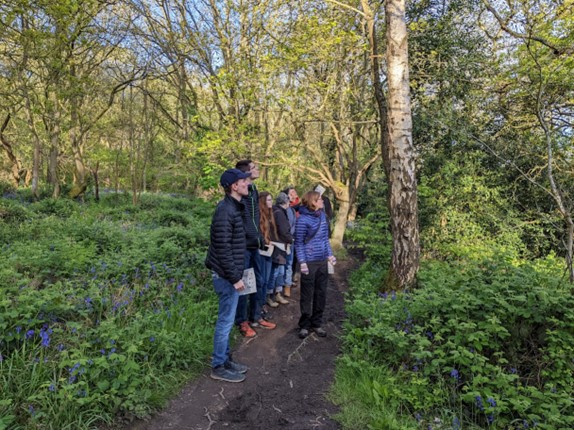
Tuesday 30th April: Welfare Walk and Litter Pick
As part of Geography’s Welfare Week, co-ordinated by Grace, their department SIO for Equity, Diversity & Inclusion, we collaborated for a ‘Welfare Walk and Litter Pick’. The weather was beautiful, and we had a lovely stroll around the campus, uplifting our moods, and picking up a few bits of litter along the way. This helps improve the look of the campus and protect the local wildlife form harm.
Grace reflected that:
“The weather was lovely and we collected 2 large bags of rubbish before treating ourselves to an ice cream for our hard work! We would like to say a massive thank you to Lottie and her colleagues for giving up their time and letting us use their equipment for this event. I highly recommend getting involved in future sustainability activities!”
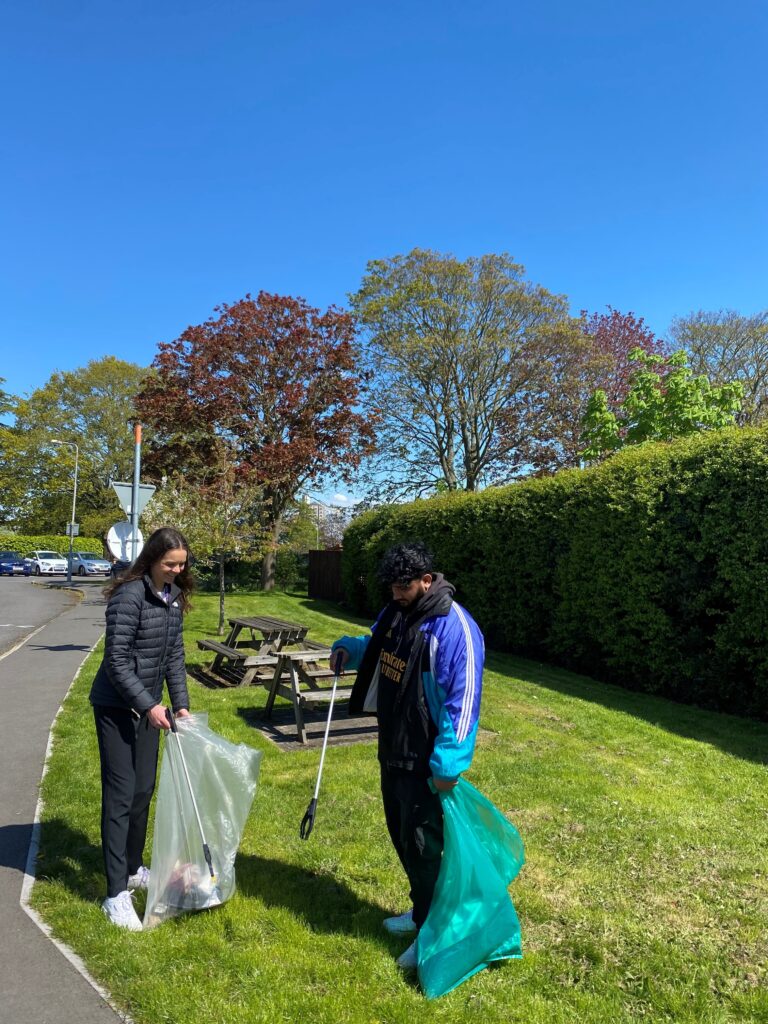
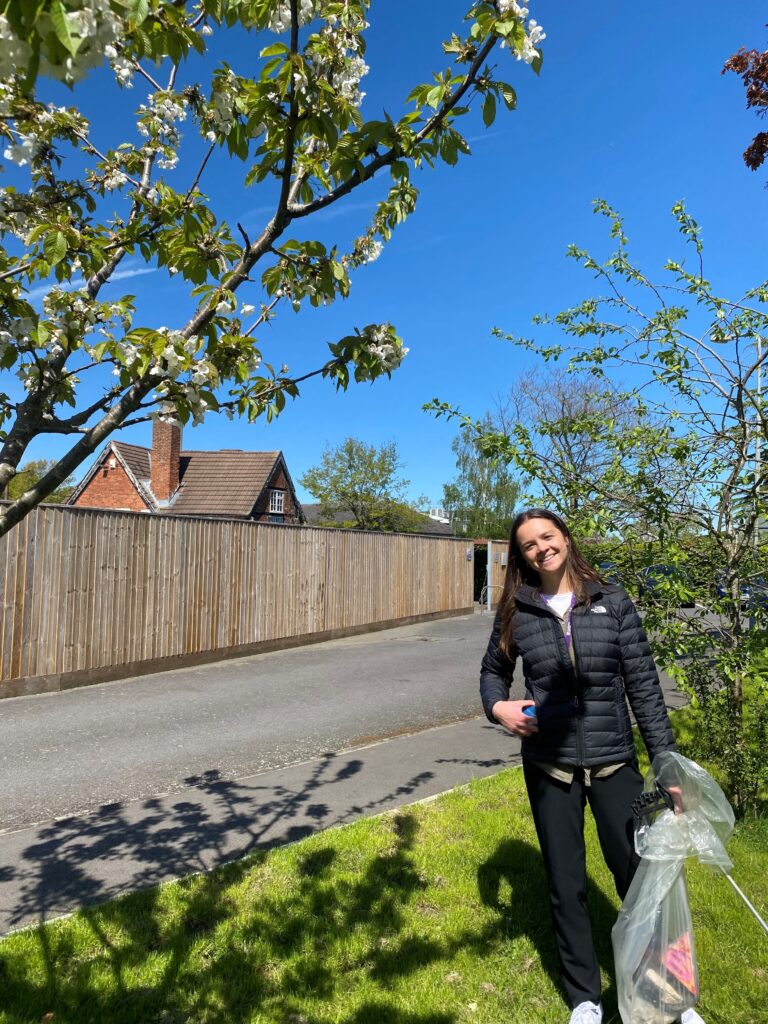
Thank you to everyone involved and we look forward to supporting future events. If you have any ideas for these, do not hesitate to get in touch with our Sustainability Team sustainability@mailbox.lboro.ac.uk or our Sustainability Assistant enviroassist@lboro.ac.uk .

This article is in support of the United Nations Sustainable Development Goal 15: Life on Land. To read more click here.
Sewage… what’s the problem?
Credit for this blog content: ‘Barbour Consolidated legislative update services’
Not the most fun topic but an important one…this article is about the impact sewage is having on waterways in the UK.
According to the Environment Agency, there were 3.6 million hours of sewage spills in 2023 compared to 1.75 million hours in 2022. On average, in 2023 there were 1,271 spills a day across England, compared to 825 a day in 2022… this is difficult to put into context, but the fact that the spills have more than doubled in just one year is enough to cause concern. But what caused this and what has this got to do with climate change?
These record levels are due to heavy rain – this is one of the extreme weather impacts caused by climate change. You can read more about the predicted rainfall patterns on the Met Office website .
The industry body for sewage companies, Water UK, have described the levels of sewage spills as ‘unacceptable’. Environmentalists say that, although these spills are not ‘illegal’ as such, they should only happen in ‘exceptional weather’. The Environment Agency commented: “It is important to note that heavy rainfall does not affect water companies’ responsibility to manage storm overflows in line with legal requirements”.

Why is this happening?
- The way the UK sewage system works is that rain and sewage share the same pipes.
- If there is too much rain, sewage treatment works can become overwhelmed.
- Sewage is spilled into waterways to prevent the system backing up.
Why is the sewage a problem?
- The spills include human waste, wet wipes, and sanitary products.
- These can pose a serious risk to local wildlife, as well as swimmers and others who use the UK waterways.
- This can also cause blockages of the sewage system, which can lead to further spills.
- Although rain can help to dilute the sewage, academics warn that there is still a risk to the local environment and anyone swimming in these bodies of water.
Dr Dania Albini, Research Fellow in Biosciences at University of Exeter, said: “Sewage pollution in the UK severely impacts waterways, with not a single river in England rated as healthy according to the latest Rivers Trust Rivers report”.
How is sewage affecting living organisms?
Albini went on to explain that sewage being present in rivers can reduce the oxygen levels in the water, which harms aquatic life. This also “causes sickness [in humans] due to the presence of harmful microorganisms and parasites”.
The data…
- Recent data revealed by the Environment Agency was taken from monitoring stations installed at combined sewer overflows (CSOs).
- CSOs were developed as overflow valves – these reduce the risk of sewage backing up into people’s homes during heavy rainfall when sewer pipes become overloaded.
The dilemma…
- Due to higher rainfall in 2023 (20% above average), the overall number of spills was expected to be higher.
- In 2023, all 14,580 CSOs were fitted with monitors, compared to 2019 when only 57% were fitted with monitors, meaning only half of spills were recorded.
James Wallace, CEO of charity River Action, told BBC News: “Water companies are not being made to invest in fixing their leaky pipes – as long as we have an Environment Agency and Ofwat that are incapable of doing their jobs then we are not in a position to expect water companies to behave”.Ofwat and the Environment Agency are conducting separate investigations into England’s nine sewerage companies; the outcome of these is expected this year (2024). However, these two agencies are also under investigation by the independent Office for Environmental Protection who are concerned they have interpreted the law incorrectly on sewage discharging, by allowing spills whenever it rains rather than only when there is “exceptional” rainfall.
So, we will see what happens over the upcoming year. The best thing you can do is stay informed, and take action to reduce your impact on the environment.
If you would like to read more about this subject, please visit the below link: Event Duration Monitoring, Storm Overflows: Annual Returns.

This article is in support of United Nations Sustainable Development Goal 14: Life Below Water. To read more click here.
Good news: Freedom for the fish
We hear so much about climate change and biodiversity, but it often feels far away, for example the countless images of polar bears balancing on the edge of a melting iceberg… But there is plenty happening near us in Loughborough too, and not all bad! Read below about the fish pass which has just been created on the River Trent, which is going to help fish move more freely and access habitats. Something to feel positive about.
Credit for this blog content: ‘Barbour Consolidated legislative update services’
The country’s largest fish pass has just been completed… but what does this mean?
Due to a recent development on the River Trent, it will now be easier for fish to reach their spawning and feeding grounds. The Colwick (Holme Sluices) fish pass has taken two years to construct and will now open up the River Trent and its tributaries for migratory fish to allow them more access to habitats. The fish affected include salmon, trout, and eels. This development is part of work completed by the Environment Agency to improve fish passage across the country; this marks a significant step in the right direction towards restoring the River Trent catchment to its original state.
It will now be easier for fish to navigate past the Holme Sluices, which is a major flood risk management structure built in the 1950s to help protect Nottingham from flooding.
“The fish pass will open up the River Trent for all fish species and is the first scheme of the ambitious Trent Gateway Partnership which aims to remove all barriers to fish migration along the River Trent – the third longest river in the country”.
“There are a number of barriers to fish migration within the River Trent catchment, including Holme Sluices, which is the largest barrier to the natural migration of fish in the Midlands. By installing fish passage, it will become easier for salmon and other fish to reach their spawning and feeding grounds”.
“We are working with partners to improve the situation and hope that the Colwick fish pass will serve as a catalyst for other Trent Gateway projects, which will in turn enhance the river and boost the local economy”.
The fish pass:
- Includes a two-metre high fully automated radial gate which constantly monitors the water levels and flow rates in the River Trent. This means it will open and close based on the differing water levels throughout the year.
- Is 200m long, 6m deep and 6.5m wide.
- Is divided into 20 ascending chambers into which water flows through narrow slots. Fish will be able to pass through these slots and rest in the chamber above before continuing to swim upstream. They can then lay their eggs upstream in the gravel riverbeds of the River Dove and the River Derwent, which are tributaries of the River Trent.
- Includes an eel pass which will help support the European eel, a ‘critically endangered’ species.
- Includes a public viewing platform above the water with interpretation boards informing and advising visitors about the local wildlife both in the river and on the surrounding land. This includes the fish expected to use the pass.

If you would like to read more about this subject, please visit the below link:
Colwick (Holme Sluices) Fish Pass Briefing.

This article is in support of United Nations Sustainable Development Goal 14: Life Below Water. To read more click here.
DRN2024 Drawing Repetition: Tracing Technology Recording
Tracing Technology was the second in series of DRN2024 events exploring the theme of drawing repetition. Thank you to our speakers Claire Anscombe, Dave Hawey & Hilary Judd, to chair Lucy Brennan-Shiel and to everyone who attended.
This Week at Loughborough | 6 May
General:
Arts Scholars’ Showcase
7 May 2024, 5pm-7pm, Martin Hall
Join LU Arts for this year’s Arts Scholars’ Showcase, which features the nine scholarship winners for 2023/24. This year’s winners come from a variety of subject areas and backgrounds with a mix of undergraduate and postgraduate students. Their art forms include creative writing, music, dance and drama.
Eras Tour Prep 101
7 May 2024, 6pm-8pm, LSU Council Chamber
Swift Soc will host a night of preparation before the Eras Tour with friendship bracelet and poster making!
Drag Night
7 May 2024, 7pm-9pm, The Lounge (LSU)
Come and see the most outstanding drag performers in town! Stick around after the performances for the Q&A and get there early, as the first 50 people to arrive will win amazing prizes.
IAS Seminar: When autofiction becomes impossible
8 May 2024, 12pm-1pm, International House/Zoom
Institute of Advanced Studies (IAS) Visiting Fellow Associate Professor Endre Lund Eriksen will deliver a seminar on their research. In this lecture, Endre Lund Eriksen tells of an impossible artistic research project, that through detours ended up in an award winning animated short film for kids.
Hear from Standing Together: The largest Jewish-Arab grassroots movement for peace in Israel
8 May 2024, 1pm-2pm, MS Teams
The Loughborough UCU branch will be hosting a meeting with two speakers from Standing Together, a social movement of Jewish and Palestinian citizens of Israel pursuing peace, equality, and social and climate justice.
Distinguished Speaker Series: Sir Peter Bonfield
9 May 2024, 5.30pm, CC012 (James France)
Sir Peter Bonfield is a leading international business executive with extensive experience in the fields of electronics, computers and communications. Sir Peter has been involved with a diverse portfolio of companies operating at main board level in the USA, Europe and the Far East. Change management in international technology companies has characterised his work.
Win from Within: A sport psychology series
9 May 2024, 6.30pm-7.30pm, Dan Maskell Seminar Room (Tennis and Squash Centre)
The ‘Win from Within’ series at Loughborough Sport is dedicated to unlocking the full potential of every athlete, regardless of their experience or sporting background. This week’s session will focus on perfecting pre-performance preparation.
Flix Cinema Screening: Mean Girls (2024)
9 May 2024, 6.30pm-9pm, Cope Auditorium (Edward Barnsley)
Mean Girls (2024), directed by Samantha Jayne and Arturo Perez Jr, starring Reneé Rapp, Angourie Rice, Christopher Briney and Tina Fey.
Student Leadership Conference
11 May 2024, 10am-5pm, LSU
The annual Student Leadership Conference by Loughborough Students’ Union empowers the student community through a day of seminars, panel discussions, networking sessions, interactive workshops, and resource hubs at a student-friendly price.
During the conference, you will have the opportunity to gain valuable insights from experts on topics such as emotional intelligence, public speaking, inclusivity, boundary-setting, delegation, and much more.
Exhibition: Tearing up Vogue and Mining the Detritus
2-10 May 2024, 12pm-4pm, Martin Hall Exhibition Space
This exhibition will display a body of practice-based doctoral research in montage by Ehryn Torrell (IRPH, SSH). Montage is not a singular artistic medium like painting or drawing, but rather it is intermedium (Higgins, 1965). It often includes the act of cutting up and reassembling photographic images to say something about representation and ways of seeing.
Careers:
Start-Up Programme
8 May 2024, 6pm-7.30pm, Start-Up Lab (2.01) STEMLab
This dynamic five-week journey will equip you with the essential skills and knowledge needed to elevate your Start-Up venture. Delve into crucial topics such as goal setting, mindset development, market research, networking strategies, business registration, intellectual property, finance options, and more!
Stay Connected – Navigating the Workplace Workshop
9 May 2024, 12pm-1pm, EHB 1.04 (Edward Herbert)
Workshop on Navigating the Workplace ahead of you starting your placement year. Open to students who are going on placement for the 2024/25 academic year. Topics covered include workplace behaviour, bullying and harassment, health and safety and managing conflict.
Fellowship Application for PhDs
9 May 2024, 6pm-8pm, West Park Teaching Hub
Join us at this informal event to find out how we can support your career planning before and after you graduate. Don’t miss out on some free food, a freebie and a chance to win a prize!
DRN2024 Drawing Repetition: Habitual Behaviour
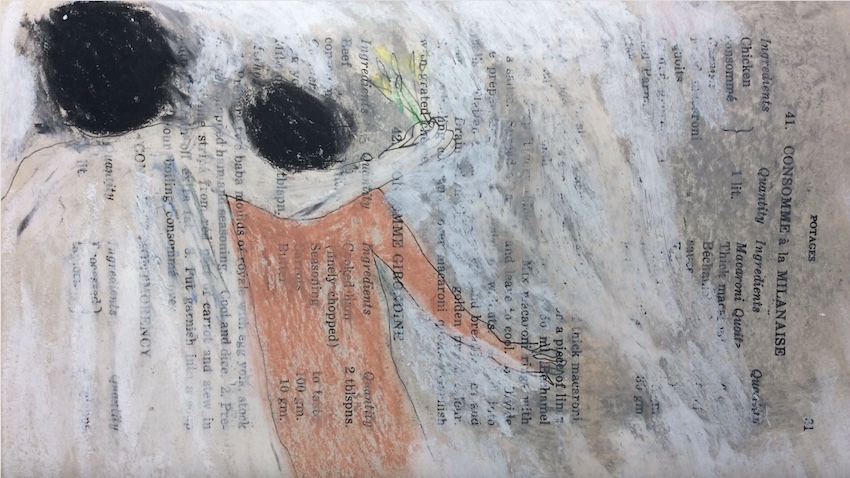
Hosted by the Drawing Research Group at Loughborough University
Tickets: https://buytickets.at/drawingresearchgroup/1248618
Chair: Rachel Gadsden-Hayton
Habitual Behaviour is the third in the series of DRN online events exploring drawing repetition. The panel brings together researchers investigating aspects of habitual behaviour in relation to repetition within contemporary drawing practice.
Lydia Halcrow‘s presentation will explore artists working through repetition and daily practices of
durational drawings to explore the emotional traces exposed through this ongoing action.
It will include reference to my own drawing practice that formed a practice-based PhD completed in 2022 as a mode of embodied and experimental mark-making made through the repetitive act of walking and scoring as a form of experimental drawing. The central premise of the presentation is that the act of repetition and time can only reveal a knowledge after it has unfolded and the repetitive marks made over a duration form a whole. The patterns revealed can tell alternative stories about body and place and about human emotions held in everyday encounters. The repetition thus becomes a ‘blind’ drawing process that documents daily encounters and emotions, with a deeper understanding of the entanglements of body and place emerging over the duration of the drawings.
Meera Curam’s presentation explores the intricate complexity of rhythm present in the cultural tradition of drawing Rangoli or Kolam. Rangoli is an everyday early morning practice, drawing patterns using rice flour or paste, stone powder, sand and red earth is known by many names in south India, such as Rangoli, Kolam, Muggulu and Alpana. While these patterns hold cultural prominence with deeper meanings and complex mathematical sequences, there is scope to understand the intricacies of sequences, intuition, and embodied knowledge.
The presentation expands on the practitioner’s intuitive embodied knowledge and innate ability to construct continuous, repetitive patterns through seemingly simple loop drawings. The fundamental rhythm of lines over dots evolves into intricate designs, prompting inquiry into the interconnectedness between mind and body movements. Drawing from Bourdieu’s theory of Social practice (Bourdieu, 1990) and applying the situated practice and habitus in connection with the everyday practice of Rangoli. Despite the cultural prominence of Rangoli patterns, their hidden complexity of rhythm, encompassing symmetry, asymmetry, and the organic flow of dots and lines, often remains unnoticed.
This paper aims to bridge the gap of acknowledging the intuitive knowledge system by offering insights into the often-overlooked complexity of rhythm within the seemingly mundane act of drawing Rangoli. By unravelling the sophistication inherent in this everyday cultural practice, the abstract contributes to a deeper understanding of the artistic and cultural dimensions embedded within the rhythmic intricacies of creating Rangoli.
References
Bourdieu, P. (1990). The logic of practice. Stanford University Press.
Nagarajan, V. (2018). Feeding a Thousand Souls: Women, Ritual, and Ecology
in India- An Exploration of the Kolam. Oxford University Press.
Author’s Bio : Meera Curam is a Visual Artist and Textile Designer, presently
engaged in doctoral research at De Montfort University, Leicester, United
Kingdom. Her research delves into the Rangoli/Kolam tradition in South India
for her PhD. Her focus is on its embodied knowledge, underlining the
significance of Tangible and Intangible Heritage, and addressing the oversight
regarding the intuitive complex mathematical sequences employed by women
practitioners.
Junuka Deshpande‘s presentation will share examples of an autoethnographic exploration presenting a series of drawn responses to domestic encounters. These responses are aimed at making meaning of the experience of struggle /friction in an everyday repetitive routine of domestic space as a woman, mother, and an artist. Each encounter, like a terrain in a site, consists of an experience. Through drawings Junuka respond to expand the moment of feeling into a narrative, understanding it in parts through multiple drawn frames that create an illusion of movement.
Each drawing starts with a feeling that completes itself through subsequent drawings, building on the previous one. The surfaces over which Junuka draws are pages of a cookery book with recipes printed on them. The names of the recipes, the ingredients, quantities, and instructions provide a recurring background to the drawings creating an experience of friction, conversation and repetition through mark-making process that involves repeated imagery and technique.
The project explores the idea of drawing through embodied responses to an embodied experience as lived. Junuka plays with the idea of temporality embedded in a lived experience and temporal expansion of the same in the response through drawings. Each drawing is like the previous one and yet unique as it is created without the conventional device such as a light box or a tracing paper. The repetition is driven by friction and dialogue with normative societal constructs of gender, its relation to materiality, comforts in assigned roles and certain routines. These routines in turn start to define oneself and the breathing body that senses the hierarchical structures of power. Hence each frame has a part of that feeling, aiding the process of transformation, and creating an experience of meaning-making. The small and big differences in each individual drawing make them worth both- a pause and a play of movement.
Biographies
Lydia Halcrow is a Post-Doctoral Researcher at Bath Spa University, her practice-based PhD
was situated at the intersections between drawing, print, painting & installation investigating body and place through repetition. Her chapter ‘Tuning in: walking, slowing, sensing’ explores the interconnections between mark-making, place and repetition, in Art and Creativity in an Era of Ecocide (Bloomsbury). Her work is shown nationally & internationally.
www.lydiahalcrow.com
Instagram @lydiahalcrow
Meera Curam is a Visual Artist and Textile Designer, presently engaged in doctoral research at De Montfort University, Leicester, United Kingdom. Her research delves into the Rangoli/Kolam tradition in South India for her PhD. Her focus is on its embodied knowledge, underlining the significance of Tangible and Intangible Heritage, and addressing the oversight regarding the intuitive complex mathematical sequences employed by women practitioners.
Junuka Deshpande’s primary interest is in the practice of observation. The practice inspires her to engage in the process of image making through drawing and mixed media images. She explores image making and image construction as sensemaking processes in her practice as an artist and an educator. Her professional journey as a film maker across forests, islands, cities and villages has led her to question implicit notions of self and hierarchy embedded in creative-perceptive processes. She is engaged in exploring methods of drawing and image making to understand outer and inner world. Junuka teaches at Srishti Manipal Institute of Art, Design and technology in Bangalore and works on projects that engage with place- based pedagogy.
Rachel Gadsden-Hayton is an artist, researcher and disability culture activist who exhibits her work internationally, with the object being to develop cross-cultural dialogues considering notions of humanity. She was the guest artist for the ‘Big Draw Netherlands Festival’ 2023 and presented TransHuman at the Museum Arnhem, and Extrapol, Nijmegen.
Rachel was awarded an Honorary Doctorate from South Bank University, 2016.
www.rachelgadsden.com

Forensic Conversations in Criminal Justice Settings: One-day Symposium
The criminal justice system encompasses a wide range of interactions, from police officers engaging with the public on the street to police interviews with witnesses and suspects, emergency calls, discussions between suspects and solicitors, cross-examinations in court, interventions with children embroiled in the law, jury deliberations, and managing behaviour in prisons. These conversations are the site in which the fundamental activities of the criminal justice system are accomplished, and where professional parties and people caught up in the system negotiate institutional constraints, interpersonal tensions, and opposing agendas, with life-changing consequences for the people involved.
Researchers who study real interactions in systematic detail using conversation analysis and ethnomethodology bring radical insights into the nature of such interactions. The innovative, empirical findings they generate contribute to professional training and policy development. CRCC members Dr Emma Richardson and Dr Laura Jenkins, along with Dr Alexandra Kent (Keele University) are organising an inaugural, one-day international symposium to bring together such researchers using these methods in a warm and collegial event to facilitate networking, share novel findings, and collaborate in joint analysis of emerging projects. This free event will take place at Loughborough University and online.
About the organisers
Dr Emma Richardson (Communication and Media) is a Lecturer in Language and Social Interaction. Her research focusses on improving access to criminal justice for victim-survivors of gender-based violence by using conversation analysis, applied to legal and forensic settings. Emma works closely with police partners, examining audio recorded emergency and non-emergency police calls and video recorded investigative interviews of the public reporting domestic violence and abuse and rape and serious sexual offence. Her work informs training and guidance.
Dr Laura Jenkins (Criminology, Sociology and Social Policy) was awarded the competitive Vice Chancellor Independent Research Fellow to deliver new insights into interactions between youth justice workers and children in conflict with the law. She records children’s encounters with the youth justice service, using conversation analysis to investigate how higher-level youth justice policy and guidance, particularly the “Child First” approach with an emphasis on children’s active collaboration and engagement, gets implemented at the coal-face of service delivery. This priority work has led to Dr Jenkins’ sharing her expertise with the Youth Justice Board, the police’s Vulnerability Knowledge and Practice Programme, and the Ministry of Justice.
Dr Alexandra Kent (Keele University) is a Senior Lecturer in Psychology. Her research focuses on how individuals seek help from public institutions during times of personal difficulty or crisis. She uses conversation analysis and discursive psychology to explore how the conversations operate. She works with emergency and non-emergency police calls and non-emergency instant message conversations between the police and members of the public to explore how these types of interactions can be managed effectively and efficiently. From this work she has developed and delivered training input and guidance for police staff.
The organisers are delighted to welcome Dr Emma Tennent, as an invited speaker from the University of Wellington, who will share her findings on help-seeking in calls to the police classified as ‘family harm’.
Call for Abstracts
The organisers are currently inviting abstract submissions from researchers at all career stages and from across the globe wishing to deliver oral presentations to share recent findings or ongoing investigations arising from analysis of authentic (recorded) interactions in criminal justice settings, or data sessions in which presenters share a short audio/video clip and facilitate analytic discussion with participants. Organisers request that presenters provide a transcript adhering to the detailed Jefferson system adopted by conversation analysts. Clips can be in any language but please provide an English translation.
Presentations and data sessions can be delivered either in person or online. Please use this link to submit your abstract by Friday 31st May.
Conference registration will open in July. The organisers look forward to welcoming you in September!

From the Vice-Chancellor – April 2024

In my April newsletter: the 2024 QS World University Rankings by Subject, this year’s Vice-Chancellor’s Awards, Loughborough’s visit to the US, the student enterprise start-up fund and the Whatuni Student Choice Awards.
Loughborough ranked best in the world for sports-related subjects
The QS World University Rankings by Subject are one of the most well-respected international league tables and I was delighted to see Loughborough in the global top 100 in eight subject areas.
We retained our ranking as the best university in the world for sports-related subjects for the eighth consecutive year – an outstanding achievement.
Sports-related education and research have been central to Loughborough from the institution’s very earliest days and they remain a key part of our University strategy today. The School of Sport, Exercise and Health Sciences (SSEHS), the Sports Technology Institute and the London-based Institute for Sport Business are all renowned for the fundamental and applied research they undertake and the quality of the education they offer to our students.
The QS rankings are based on the opinions of academic staff who have a speciality in the subject area, and employers who recruit graduates from those disciplines. They also take into account research output and impact, with both citations and paper output measured over a five-year period. Our performance in the rankings shows that our work in this field is recognised and valued by the international academic community.
Loughborough placed in the top 50 in two other areas. We were ranked 22nd in the Library and Information Management subject category, which reflects work undertaken in the School of Social Sciences and Humanities and Loughborough Business School, and we were 32nd in Art and Design.
The University secured top 100 rankings in five further subjects: Mechanical, Aeronautical and Manufacturing Engineering; Architecture and the Built Environment; Communication and Media Studies; Anatomy and Physiology, which reflects the work undertaken in SSEHS and the School of Science; and Petroleum Engineering, which is undertaken in the Schools of Aeronautical and Automotive Engineering and Mechanical, Electrical and Manufacturing Engineering.
Enhancing our standing in the QS rankings is a key objective in our strategy, and a significant driver for Project Reputation – one of the enabling projects that is addressing the organisational changes we need to make to progress our strategic aims. To have consolidated our international standing in all of these areas is an important step forward in our reputational ambitions.
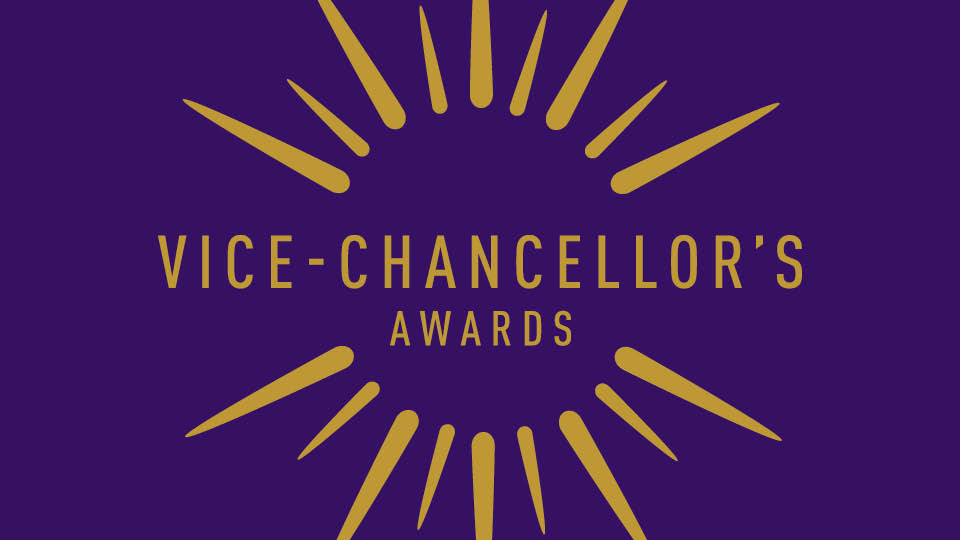
Launch of the Vice-Chancellor’s Awards 2024
From tomorrow you’ll be able to nominate your colleagues for this year’s Vice-Chancellor’s Awards, which recognise and celebrate the ways that staff from all areas of the University have demonstrated their commitment to our strategic aims and values.
There are eighteen awards available across six categories, details of which are available on the dedicated webpage, alongside guidance on writing and submitting a nomination.
The University could not achieve what it does without the hard work, dedication and creativity of individuals and teams from across our campuses and these awards enable us to celebrate that. You can see a short video of our 2023 winners on the Vice-Chancellor’s Awards webpages, who reflect on how their work is contributing to the delivery of the University strategy. I would encourage you all to reflect on the past year and to nominate those who you think have made a real difference.
I look forward to meeting all the shortlisted nominees at the awards ceremony in September.
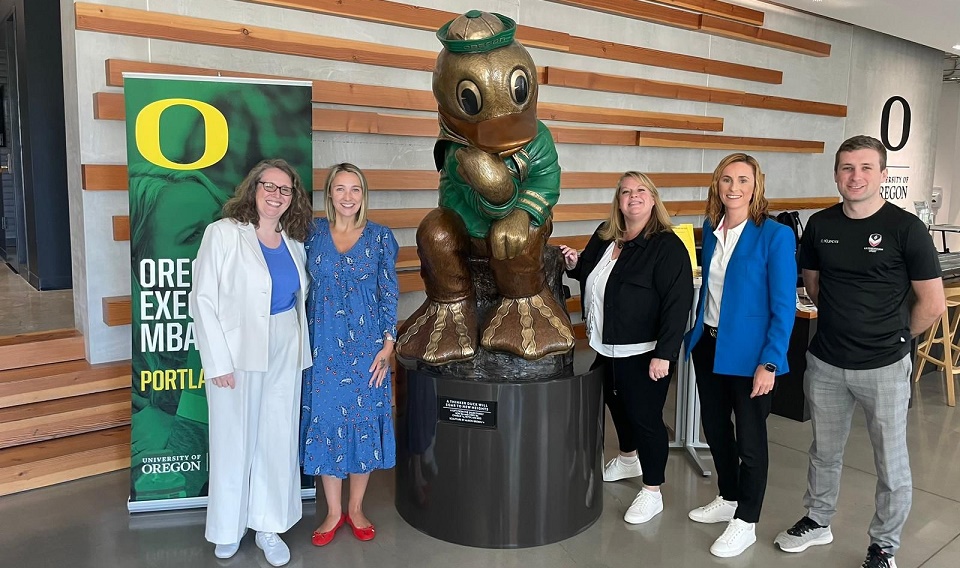
Building partnerships in the US
This month I led a University delegation to the US to discuss research, innovation and sports partnerships, and to meet with some of our US-based alumni. Visits such as these are an important part of our strategic aims and also support the work we are doing under Project Reputation to raise the University’s global profile.
The visit was split into two tracks, with the first focusing on our Climate Change and Net Zero theme and the second on the Sport, Health and Wellbeing theme.
Professor Kurt Barth (our Special Envoy for North America), Lily Rumsey (the University’s Director of Global Engagement) and I visited Texas A&M University and the University of Texas at Austin to explore potential research collaborations in energy, the environment and engineering.
As part of the Sport, Health and Wellbeing track, Professor Jo Maher, Pro Vice-Chancellor for Sport, met with the NFL to explore how our relationship with them could be further enhanced and visited the Chicago Bears franchise to discuss potential collaboration opportunities.
We met with the University of Oregon to plan the inaugural summit of the Global Sport University Network (GSUN), which will take place in September. The GSUN partners harness their combined knowledge of sport to address globally important topics, such as health and sustainability, that no one university could fully address on its own.
We visited the Austin Technology Incubator, affiliated with the University of Texas at Austin, that supports staff and students in their exploration of deep technology solutions. In Chicago we met with student innovators at DePaul University’s Coleman Entrepreneurship Centre and at the city’s British Consulate General we were able to showcase the University’s expertise in climate change and net zero and the world-leading sports ecosystem we have.
The visit was a great opportunity for us to strengthen existing partnerships and explore potential new ones, and to be able to update some of our alumni on the exciting developments happening at the University.
Student enterprise goes from strength to strength
Providing our students with opportunities to develop their entrepreneurial spirit is one of the core aims of the Education and Student Experience core plan, and the Loughborough Enterprise Network (LEN) enables us to support our students to create the businesses, solutions and technologies of the future. Almost 10% of our students are now involved in entrepreneurial activity.
Within our LEN ecosystem we have three key stages – Skill-up, Start-up and Scale-up. Skill-up allows students to engage in activities and enhance the skills they’ll need if they run their own business. Start-up provides funding and support for the initial stages of students’ and graduates’ ventures. Scale-up enables students to gain funding for proof of concept and mentoring support to make their businesses ‘investment ready’.
The latest round of Start-up funding closed last month, with 90 applications received in total. A longlist will shortly be asked to submit further information on their ideas, and then a shortlist of 16 students and graduates will be invited to pitch to a panel of experts for their chance to receive up to £25,000 of funding for their businesses.
Since LEN’s launch in 2019, we’ve seen a 20% increase year on year in applications for funding, with a 50% increase in female students applying – so far this year, 46% of funding applications have been from our female entrepreneurs.
Graduate Kate Allan was an early recipient of Start-up funding from the University. In the final year of her MEng in Product Design Engineering, Kate set up Exphand Prosthetics from LUinc, the University’s incubator on the Science and Enterprise Park (LUSEP). Her company develops 3D printed, lightweight, adjustable and affordable prosthetic upper body limbs for children. Last year Kate won an Innovate UK Women in Innovation Award, which were set up in 2016 to boost the number of women entrepreneurs, innovators and business leaders in the UK.
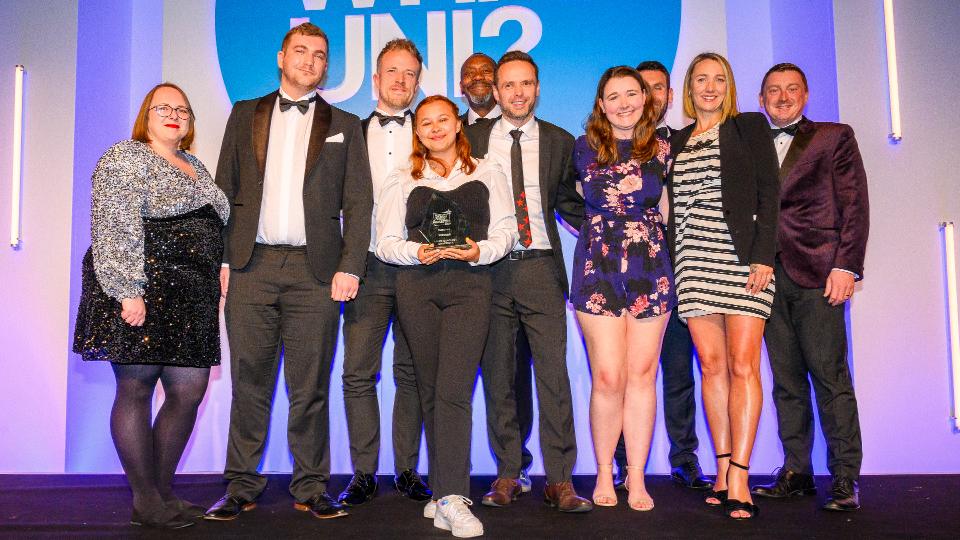
Top for facilities at the Whatuni Student Choice Awards
Last week Loughborough was named the Best University in the UK for Facilities at the 2024 Whatuni Student Choice Awards (WUSCAs). This is the fourth time Loughborough has taken the top spot in this category.
The Whatuni Student Choice Awards (WUSCAs) are one of the highlights in the higher education calendar, as they are based on the views of students across the UK and give us crucial feedback on the areas where our students think we’re doing well. The students’ reviews also give prospective students genuine insight when they’re making decisions about what and where they would like to study.
Our outstanding sports facilities and pitches, the state-of-the-art labs and the modern, well-equipped teaching spaces all drew particular praise from our students. It is clear that our buildings and outdoor spaces, and increasingly the sustainable way in which we develop and manage them, are important to both our current and future students, as well as to our staff.
Congratulations to all those who are involved in the development and maintenance of our outstanding campuses.
CRCC member Vaclav Stetka leads the presentation of the 2024 Media Freedom Poll
Dr Vaclav Stetka – CRCC’s Political Communication theme lead and Reader in Comparative Political Communication – has presented the key findings of the 2024 Media Freedom Poll on 25 April in Budapest, during a high-profile event featuring representatives of regional news organizations as well as the Vice-President of the European Commission Vera Jourova.
The data from the representative survey, which was collected in March 2024 in four Central European countries – the Czech Republic, Hungary, Poland and Slovakia – by a Czech research company Median, show growing concerns over media freedom in Slovakia and Hungary, but a significant decline in Poland, where the share of people concerned over media freedom has dropped from 71% in 2023 to 53% in 2024, reflecting the outcomes of the October 2023 elections that resulted in the departure of the right-wing populist government. Among other findings, the poll has also revealed people’s fears of Russia’s influence on the information environment and public opinion in their respective countries, with 67% of citizens across the four nations saying they are concerned about it.
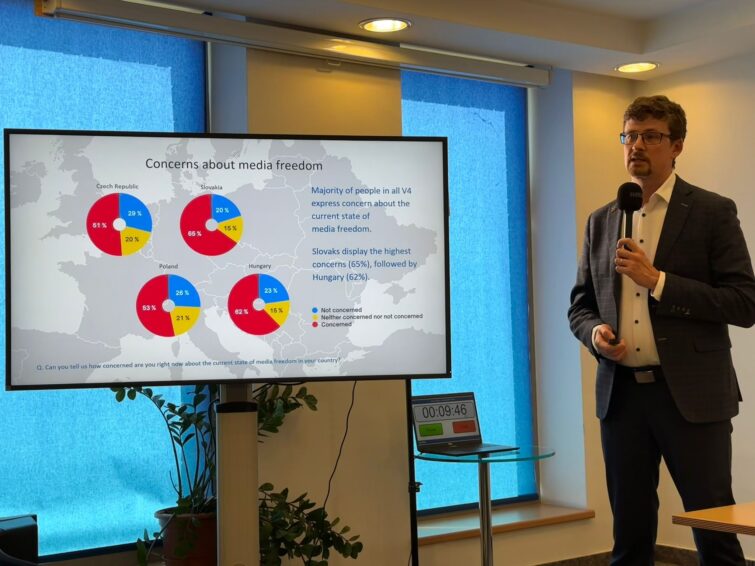
Commissioned by the Committee for Editorial Independence, of which Vaclav Stetka is a member, and supported by Reporters without Borders, the Media Freedom Poll is an annual survey mapping people’s attitudes to media freedom and independence in Central Europe. The survey also regularly includes questions about people’s opinions about media plurality and ownership transparency, perceived importance of journalistic values such as impartiality, balance or truthfulness, as well as about their support for measures that aim to safeguard media freedom.
The public launch of the 2024 findings took place at the headquarters of HVG, one of Hungary’s last independent publishers. Chaired by Tessa Szyszkowitz, the Chair of the Committee for Editorial Independence, the press conference included Márton Gergely (HVG) and Veronika Munk (Telex/Dennik N), Beáta Balogová (editor-in-chief of the largest Slovak quality daily SME), Bartosz Wieliński (Gazeta Wyborcza), as well as a representative for Reporters without Borders Austria, Alexander Dworzak. The Vice-President of the European Commission for Values and Transparency, Vera Jourova, commented on the poll via a pre-recorded message, citing the poll’s findings showing people’s continuing expectations for the EU to take concrete steps to protect media freedom as an inspiration for the European Media Freedom Act, which has been adopted by the European Parliament earlier this year.
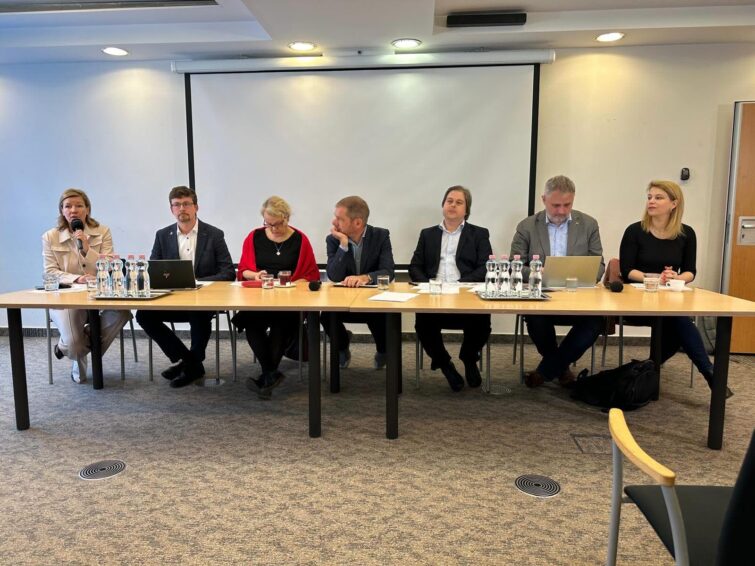
Just like last year, the launch of the 2024 Media Freedom Poll has been covered by regional as well as international media, including The Guardian, Balkan Insight, Neue Zürcher Zeitung, Gazeta Wyborcza, TVP.info, Visegrad Insight and many others.
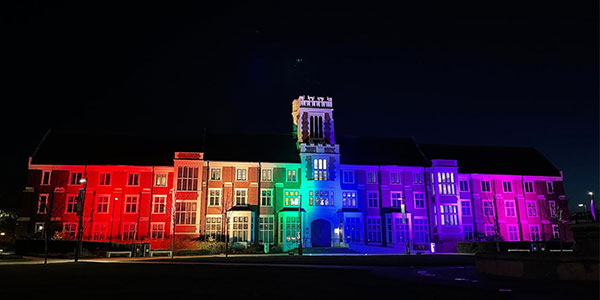
Sport inclusivity
Loughborough is synonymous with sport. It is part of the University’s DNA and recognised across the campus for the positive impact it can have, improving health and wellbeing.
However, the ongoing debate around trans athlete participation in performance sport has been used by some to promote hate, resulting in members of the trans community being excluded.
Loughborough’s Chancellor and President of World Athletics, Lord Sebastian Coe, and the University’s Vice-Chancellor, Professor Nick Jennings met with representatives from the Student and Staff LGBT+ networks to discuss the issues facing the trans community. This included decisions made by World Athletics, and other sport governing bodies, around the female category.
Sharing his thoughts, Lord Coe said:
“The decision made by World Athletics was to preserve the female category at the elite level of athletics until more research and information regarding the impact of male puberty on transgender athletes is available. We are not suggesting this decision is appropriate for every level of sports participation. I am acutely aware that decisions like this, are often used to promote hate and exclusion to a group in need of our support more than ever. I am personally committed to ensuring World Athletics continues to work with coaches through education, learning from the research undertaken and calling out the transphobia that can exist in sport. World Athletics’ Council has also created a Working Group on Gender Diverse Athletes, an expert advisory body charged with keeping abreast of developments in law, science, sports, and society concerning gender diverse athletes. The Working Group will present its final report to World Athletics’ Council before December 2024.
“Our history in athletics has often been pushing the boundaries of social issues – Jessie Owens black representation being one of our proudest moments in the sport’s long history – and I am proud that we continue to be at the centre of societal discussion.”
Vice-Chancellor Professor Nick Jennings commented:
“I was incredibly proud of our LGBT+ student and staff networks in how they presented and discussed these issues with our Chancellor. This is a contentious topic in which strongly diverging views are held. As a University we want to use our resources and research to ensure fairness, dignity and respect in all sports. We need to engage in dialogue and work together to support all our students and staff, and ensure they feel a sense of belonging to the Loughborough community.
“Therefore I, and other staff who attended, will look to meet with the LGBT+ Student and Staff networks again to look at how we can continue to work together to raise awareness and support all members of the Loughborough community.”
Representatives from the Staff and Student LGBT+ Networks said:
“We were pleased to be able to highlight the barriers to sports participation experienced by many trans people, and felt that these were listened to and understood. Sport has so much to offer individuals and society in terms of social contact, the joy of learning and teaching new skills, camaraderie and belonging, and of course the huge role that physical activity needs to have in tackling crises in mental and physical health. More people participate in sport for these benefits than for any hope of Olympic medals. To this end, it is helpful for Lord Coe to emphasise that the decisions around the female category at the elite level are not intended to create exclusion in grass-roots sport or to support transphobia.
“Ultimately sports need to find ways to produce meaningful competition between individuals of all natural abilities, where competition is the primary aim, whatever their gender. In the meantime, we mustn’t allow the specific concerns of elite sport to make us lose sight of the much broader benefits to society of promoting participation for all.”
Both Loughborough University and World Athletics strongly support the trans community in participating in sport, and in society more widely.

How AI Is Reshaping Our Universities

This article was originally published on The Chronical of Higher Education website.
In 2024, The Chronicle of Higher Education carried out a survey on how generative artificial intelligence (AI) is perceived in U.S. colleges and universities. The administrators surveyed viewed the emerging technology as both a threat and an opportunity to their institutions.
Professor Nick Jennings, vice-chancellor and president of Loughborough University in the United Kingdom, has dedicated all of his professional career to researching AI — with a focus on exploring AI autonomous systems, multi-agent computing, and cybersecurity. Jennings is in a unique position to see the different ways in which AI is influencing the higher education landscape, not just at Loughborough but across universities.
The highest peak of AI interest in 30 years
Artificial intelligence dates back to World War II. In Jennings’s 30-year history with AI research, he has seen different peaks and troughs of interest in the technology.
He recalls periods of time where it was difficult to obtain funding because AI research was deemed a “failed technology.” “We’re clearly now on the upside of AI research,” according to Jennings. “This is probably the biggest peak that I’ve seen in my career. And it’s likely to be the biggest peak of any AI researcher’s career.”
The opportunities AI presents for higher-education institutions
AI’s widespread use thanks to readily-available tools like Chat GPT and Bard means that the technology has affected every field or industry. From marketing to environmental conservation, people are looking for ways to use artificial intelligence to boost their outputs and make their working lives easier. Higher education is no exception.
Improving the way we teach
Perhaps the most obvious area in which AI can reshape higher education is in the ways we teach and the experiences we create for students. Without AI, the best we could hope for would be to tailor teaching and assessment methods to specific classes or even subsets of students within those classes. AI gives us the potential for a personalized learning experience for every student.
Bringing AI into the classroom isn’t about replacing the educator, but about empowering efficiency and effectiveness. “I believe that there’s always going to be a position and a role for excellent educators to excite and enthuse and to bring that human experience into the classroom,” according to Jennings.
A big way AI can help achieve that is by giving educators the opportunity to obtain feedback in real-time. Traditionally, feedback is limited to post-lecture evaluations, often excluding input from the silent majority who may not actively participate in class discussions. AI technology can be used in the classroom to infer how each student is progressing.
Turning higher-education institutions into modern, digital organizations
Higher ed can increasingly turn to AI to impact things outside of the classroom, including administrative processes and student life.
Across departments and roles, AI is being used to carry out the time-consuming, administrative tasks — freeing up time for student interaction. For example, we’re seeing HR departments use AI in payroll systems, and marketing departments using AI to boost their recruitment campaigns.
Many universities are experimenting with AI-powered chatbots as a first line of support for students. But a chatbot can help up to a certain point and with certain issues. If queries progress past the abilities of the chatbot, a human must be available to step in.
This same technology can be used to provide students with personal digital assistants. The more a student interacts with their assistant, the more it learns about that student’s needs and preferences. It can point out seminars or sporting activities that might be interesting based on that student’s previous activity.
Institutions are also experimenting with using AI-powered apps for mental health. With student consent, these apps can note changes in behavior and moods and can prompt students to seek help or rest.
Boosting research efforts
Of all the areas in which AI is changing higher education, Jennings believes that research has progressed further than any other.
We’ve seen entirely new research fields emerge because of AI, including the rights or ethics of sentient machines, as well as computational creativity. And there are fields where AI has improved the quality of research, such as in helping to identify concrete defects in buildings.
AI can also help and assist researchers in a variety of ways. By using computational-driven AI methods, researchers are able to find new molecules to help create vaccines and medication significantly faster. A popular example is Google DeepMind’s AlphaFold — an AI-powered system that has been successful in predicting protein structures with remarkable accuracy.
At Loughborough University, researchers are looking to use AI for data analytics and sport performance to understand what makes a team better. “There is no shortage of statistics around individual performance,” according to Jennings. “The next wave is figuring out how teams or groups get better.”
Experimentation and innovation: The key to fair AI usage in higher education
Of course, not every institution or educator has welcomed AI with open arms. It has been interesting to see the different reactions to AI. Some universities outright banned the use of tools like Chat GPT but Nick doesn’t believe that this is a wise approach.
“It’s a tool. Banning it is a bit like banning students from using Google Search[…] If using Chat GPT puts your students at an unfair advantage of passing a test or an assignment, perhaps that is more of a reflection on the exam and the questions you’re asking.”
Instead, Loughborough University is trying to develop a “fair use of AI” as one of its guidelines. Since it’s a fast-moving area, it’s not overly prescriptive. It’s more about developing guidelines and expectations around the technology based on trust on both sides. Together with the students, the university is creating an environment of experimentation and innovation where both students and staff can play with the technology and figure out what works for everyone.
“AI is going to impact our universities and I think the thing to do is to be on the front foot. Think of the positive things that we can use AI for in our education, in our research, in the way that we run our universities, and see how it complements and works in partnership with our staff and our students.”
This Week at Loughborough | 29 April
Evening Bluebell Walk
29 April | 7pm -8pm | Burleigh Wood
Meeting at the gates to Burleigh Wood (What3Words – faces.rock.edge) following a short introduction, we will take a gentle stroll around the wood, stopping to learn about the plants and ecology of the wood (including the locally famous bluebell display). The walk will be led by Assistant Gardens Manager Rich Fenn Griffin.
The Mark Drama
29 April | 7:30pm – 9:30pm | The Basement, Loughborough Students’ Union
The Mark Drama is the remarkable story of Jesus Christ as told by Mark’s gospel performed by the Loughborough Christian Union.
Dawn Chorus in Burleigh Wood
30 April | 6:30am – 7:30am | Burleigh Wood
Listen to the dawn chorus and identify the birds we can hear around the wood on a gentle walk. The walk will be led by Curtis Burbidge accompanied by Assistant Gardens Manager Rich Fenn Griffin.
Motivation for your studies workshop
30 April | 6pm – 7pm | WPL201, STEMlab
Come along to the Student Success Academy’s ‘Motivation for your Studies’ workshop to find out what motivates you and learn new techniques to help you stay focused on your studies.
IAS Seminar: From diatoms to DNA : lakes as sentinels of global change
1 May | 12pm – 1pm | International House and Zoom Webinar
Institute of Advanced Studies (IAS) visiting fellow Dr Adam Heathcote will deliver a seminar on their research. Dr Adam Heathcote will share a few examples of classical (e.g geochemistry, diatoms, algal pigments) and new (sediment DNA) techniques of using lake sediment archives to reconstruct environmental history and predict how these ecosystems may respond in the future.
Flux Inauguration
1 May | 2pm – 3pm | Claudia Parsons Hall Courtyard
Join LU Arts to officially welcome the newest sculpture to the Loughborough University sculpture collection.Flux is a brand new sculpture for campus, produced by Chiara Brown, Fred Hendry-Briars and Andrea Pocock, all of whom were Loughborough University students when commissioned.
Hidden Gems Sculpture Tour
1 May | 3pm – 4pm | Claudia Parsons Hall Courtyard
Discover some of the lesser known sculptural gems on the Loughborough University campus. Loughborough University’s campus is home to over 40 sculptures, many of which are prominently located. Some, however, are a little more off the beaten track. Led by the University’s Curator David Bell, this tour will take in some of the campus’ lesser-known sculptural gems.
Art Unlocked: Loughborough University Sculpture Collection
1 May | 5:30pm – 6pm | Online
To coincide with sculpture week, David Bell ( our Art Collection Curator ) has been invited to deliver a talk. Learn how Loughborough University’s sculpture collection tells a story about changing trends in British public art. We bring the collection to life for those who visit, live, study or work on our campus.
IMS Football Cup & Plate Finals
1 May | 4pm & 9pm | Loughborough University Stadium
Get down to the Loughborough University Stadium as our halls battle it out to win the IMS Football Plate Cup Finals. The afternoon’s first game will see Royce take on Harry French in what will undoubtedly be an almighty clash for the IMS B Plate title. Kick off 4pm. Later in the evening, tension is set to rise as Robert Bakewell and Telford battle for the IMS Football Cup. This match will determine the 2023/2024 IMS Football champions. Kick off 7pm.
Tearing up Vogue and Mining the Detritus
2 May – 10 May | 12pm – 4 pm | Martin hall Exhibition Space
This exhibition will display a body of practice-based doctoral research in montage by Ehryn Torrell (IRPH, SSH)
In her practice-based research, Torrell has asked the following questions: How can montage allow an artist to deconstruct and challenge fashion media, particularly the racialised and gendered bodies in Vogue magazines? What methods of montage might be used? Does using a fashion magazine as source material risk giving voice to already dominant or normative images of women?
Chrome Sliced by Silver : Publication Launch and creative workshop
3 May | 6pm – 7pm | MHL0.07, Martin Hall
Try out some creative writing prompts and pick up a free copy of “Cleaved Into” and “Chrome Sliced into Silver”. ‘Cleaved Into’ is a pack full of activities prompting creative engagement with the University’s sculpture collection. As part of Sculpture Week 2023, we ran a workshop where participants used some of its prompts to produce their own pieces of creative writing. These have been collated into a new ‘zine, ‘Chrome Sliced by Silver’.
To celebrate the publication of this ‘zine, you’re invited to this informal workshop where you’ll be able to try out some of the exercises yourself. This is a fun way to engage creatively with sculpture, on campus and beyond.
Lightning Netball vs Manchester Thunder
4 May | 6pm | Sir David Wallace
Lightning Netball are taking on Manchester Thunder in a bid to retain their 2023 Netball Super League title, and need your support!
With unrivalled match day experience and fun for all the family, why not witness our team in action whilst watching some of the best sporting talent in the country?
Watch the action unfold whilst enjoying light refreshments, entertainment and fun for all the family.
Lightning Wheelchair Basketball vs Cardiff Met Archers
5 May | 4pm | Netball Centre
Head down to the netball centre to support Loughborough Lightning as they take on Cardiff Met Archers, 4pm tip off.
Our two-time title winning Lightning team are back on campus for another fixture of the 2024 British Wheelchair Basketball Women’s Premier League season. With unrivalled match day experience and fun for all the family, why not witness our new look team in action for the first time this season whilst watching some of the best international sporting talent.
Canal Strategy and Future Governance Launch Event Summary
Loughborough University London’s Dr Anna Grosman and Dr Sharon Prendeville, hosted the Canal Strategy and Future Governance launch event earlier this year (Wednesday 7 February 2024), in collaboration with Your Canal Boat CIC’s Erik Ellman and Dr Luke Muscutt.
Situated along the banks of the Hackney Cut canal, the event took place at Loughborough University London’s Here East campus, drawing an audience of representatives from local governance, Greater London Authority, Industry vanguards, canal community luminaries and an array of other key actors to address the capacity of canals to serve as dynamic public realms for community transformation.
The event began with a presentation by Dr Anna Grosman and Dr Sharon Prendeville, showcasing their community-driven research titled “Navigating Canalside Commons: Collaborative Strategies for Urban Waterways.” Delving into the rich tapestry of UK canal systems, they described the intricate interplay between civic growth and natural ecosystems, advocating for the need for balanced approaches in urban planning and regeneration. Central to their discourse was an exploration of the complex network of stakeholders engaged in canal-side spaces. An interactive mapping exercise unfolded, inviting audience members to map out these stakeholders, facilitating a deeper understanding of the presentation’s themes.

The crux of the report underscores the transformative potential inherent within canals as vibrant public spheres. The complexities around land ownership and ambiguity around local policy emerged as key challenges, impeding the management and development of canal-side spaces. Proposals stemming from the research emphasised the imperative need for innovative governance frameworks, robust community engagement, and a steadfast commitment to ecological practices, with a proposed community tool envisioned to empower collective land stewardship.
The presentation was complemented with the premiere screening of “Harnessing the Potential of London’s Canals”, a short film made by Tom Walker of www.tomwalkerfilm.com, as part of the wider project, Canal Strategy and Governance. This documentary offered a compelling portrayal of the current state of underutilised spaces along canals within the boroughs of Westminster, Kensington & Chelsea, and Hackney. Through insightful narratives, it traced the endeavours of key actors engaged in policymaking, community building, urban design and educational initiatives aimed at revitalising these areas.
Offering alternative insights, Loughborough University esteemed expert ecohydrologist Professor Paul Wood, followed with a presentation of selected research on “The Hidden Biodiversity of the Canal Linking our Rivers, Towns and Cities.” He screened an excerpt from a mesmerising film by Artist, Sonia Levy, named “Creatures of the Lines” that captured the ethereal visuals and sounds of our canal’s subaquatic realm, exhibiting the mystique of canal ecology.
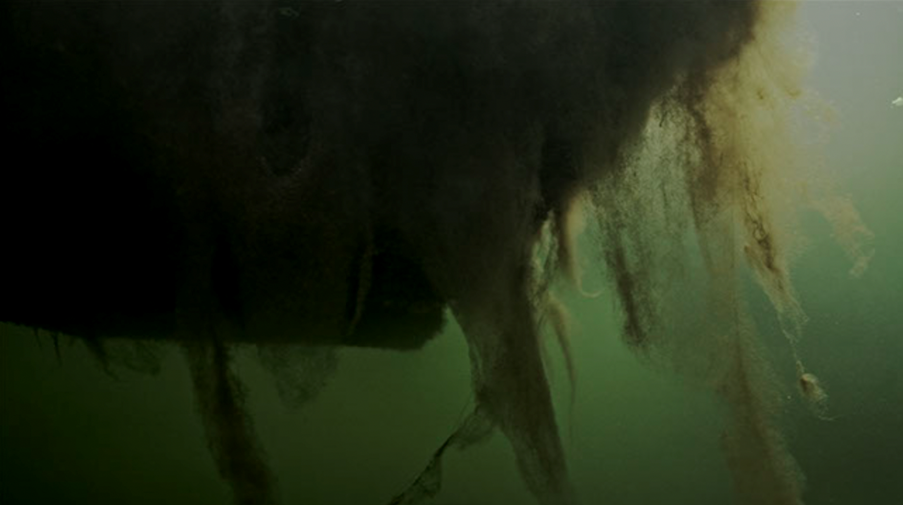
Professor Wood elaborated upon the scarcity of ecological quality assessments pertaining to canal systems, attributing this gap in part to their artificial genesis as predominantly anthropogenically engineered ecosystems. Diving into the concept of reconciliation ecology within the agricultural and urban milieu, Professor Wood advocated for the cultivation of natural biodiversity within human-made landscapes. By fostering symbiotic relationships between ecological diversity and human utilisation, he posited the potential for establishing a more sustainable socio-ecological paradigm that obviates the need for a trade-off between biodiversity conservation and human activities.
After a short tea break, the first of two round table conversations commenced. Participants discussed the challenges in shared governance of canals and strategies for effective stakeholder communication and collaboration. Panellists included Sasha Galitzine from Gerry’s Pompeii, Canal and River Trust’s Sîan Palmer-Ferry, Asia Grzybowska from Smallwood Architects, Calvin Po from Dark Matter Labs, Loughborough University’s Professor of Communication John Downey and lastly Rachel Chapman of Westminster City Council.
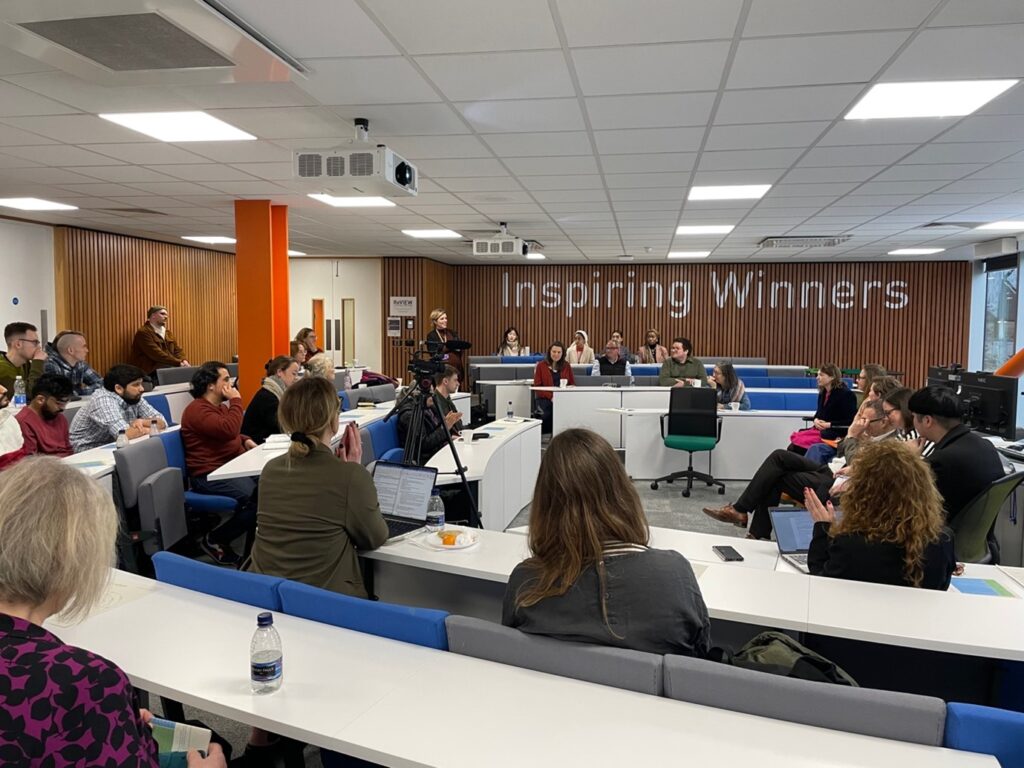
The second round table discussion, chaired by Dr Pandora Syperek, touched on various subjects including the Integration of ecological sustainability in canal-side development, balancing commercial, recreational, and residential uses of canals, and inclusive design principles for Canalside spaces. Panellists included Professor Wood, Francis Castro from Greater London Authority’s London Nature Recovery Programme, Hannah Reid from Thames 21, Matt Hopkins from Group 19 Architects, Katherine Spence from Westminster City Council’s Place Shaping team and project leader of Meanwhile Gardens, Chandrika Dalpat.
Highlights of the panel discussions included Sîan Palmer Ferry’s delineation of the Canal and River Trust’s commitment to supporting canal communities. She outlined the organisation’s long-term strategy, emphasising a concerted effort towards collaborative partnerships considering the substantial £300 million funding reduction recently imposed by the Department for Environment, Food, and Rural Affairs.
Calvin Po from Dark Matter Labs also brought forth compelling insights regarding the intricate and interconnected social dynamics within canal spaces, which are often overlooked by conventional property-centric governance structures. He emphasised the importance of integrating the concept of relationality into canal management practices, suggesting that design approaches should strive to foster alternative systems that promote a culture of stewardship and care, rather than perpetuating extractive and possessive attitudes towards the value associated with canal environments.
The event underscored a prevailing sentiment among attendees—a shared conviction regarding the profound symbolism inherent in canal spaces. These waterways embody a collective resilience, their very essence reflecting the adaptability of societies amidst the intricate web of urban challenges. In preserving the sanctity of public spaces, canals emerge as conduits of urban vitality and social cohesion, nurturing a sense of interconnectedness that transcends the noise of urban life.
An overarching insight gleaned from the event, emphasised by Francis Castro of the Greater London Authority, pertains to the crucial role these gatherings play in convening diverse stakeholders. They serve as vital platforms for building dialogue, aligning interests, and fostering collaborative efforts to address the multifaceted challenges confronting canal spaces and their associated communities.
Embracing Castro’s perspective, attendees concluded the event by discussing the feasibility of subsequent meetings aimed at sustaining momentum, nurturing ongoing dialogue, and amplifying avenues for engagement with local governance. A collaborative effort positioned to initiate lasting and transformative impact.
Special thanks to all attendees for their invaluable input, Loughborough University London for hosting the event and both Dr Anna Grosman and Dr Sharon Prendeville for organising such a successful occasion.
Written by Finn Livingstone, MSc Service Design Innovation student at the Institute for Design Innovation, Loughborough University London.
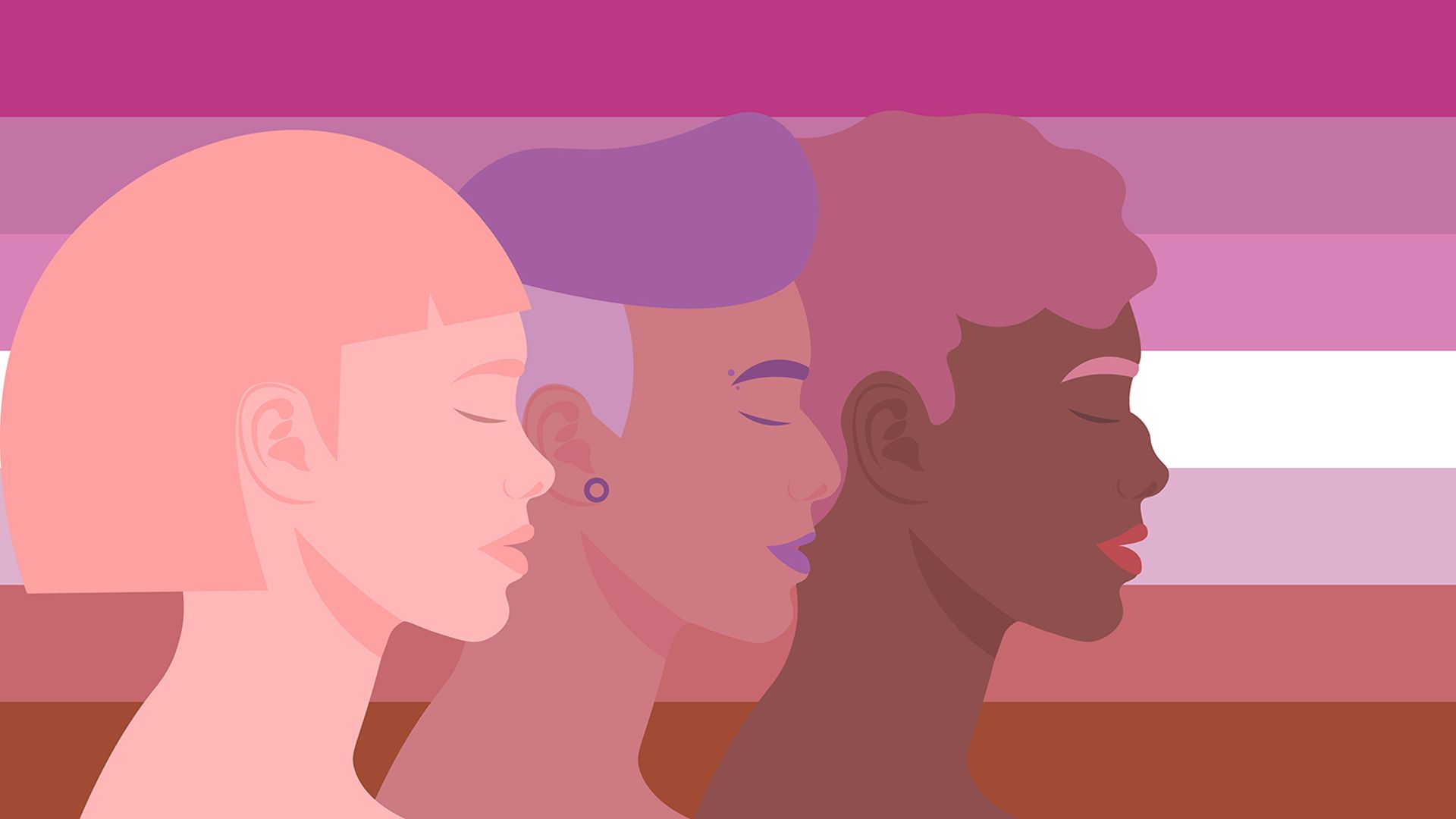
Lesbian Visibility Day

Am I allowed to use the word clitoris in a work environment?
If I can say kidney, I can say clitoris. Compared to the kidney, which is five inches long, the major female organ, called the clitoris, is 9-11 inches long – and continues to grow through life. Did you know it could be two and a half times bigger in your 90s than in your teens? I bet you didn’t! Most of us know hardly anything about this organ at all. It was even removed from the “Dr’s Bible”, Gray’s Anatomy, in 1947! Yes, an organ was erased from a medical textbook!
Why? And what does that have to do with Lesbian Visibility Day?
If you are asking that question, then you are definitely not a Lesbian. So here, I’m making this visible by talking about it, and how women and their organs were, and still are considered to “threaten the Patriarchy”. And how Lesbians are understood to have defied this and consequently become an even bigger threat. Thus experienced, and still experience, further marginalisation.
I would like to note here that not everyone who identifies as a woman and/or a Lesbian has a clitoris, and not everyone who has a clitoris identifies as a woman. What has been made so plainly clear to me in researching for this post is that our research studies and historical texts are significantly biased towards cisgender identities. I write this blog with this inequity firmly in mind and with a passion for us to do better at including minorities within minorities in future research.
With this in mind, I’m going to start with a very brief history…
The clitoris throughout history has had various names. It was referred to in medical or scientific text as ‘Devil’s treat’ (1486). ‘Shameful member’ (1545). ‘Seat of Venus’ (1559).
Lesbianism was never illegal. The UK partially decriminalised same-sex relations between men in 1967, but that didn’t apply to women, as same-sex relations between women were not illegal. In fact, whilst there were cases in the 1800s where women were prosecuted for having sex with other women, they were kept very quiet. The reason for that is that men didn’t want “respectable” women – their wives or daughters – to find out such “indecency” existed (which would have upset the Patriarchy!).
In the early 1900s, Freud described the clitoris as infantile, and a mature, feminine woman ultimately has to switch to only having orgasms through vaginal intercourse or “risk psychological disorder” (Freud considered Lesbianism as one of these psychological disorders, despite his own daughter identifying as a Lesbian.) If a woman is unable to have an orgasm like that, they are “frigid”.
Throughout the 1900s, Feminism was often associated with Lesbianism. Lesbians, as well as Feminists, were called “man-haters”, and other derogatory terms. Straight women risked being perceived as Lesbians if they wanted to join the Feminist movement. Homosexuality was classified by the World Health Organisation as a mental disorder until 1990.
Are you starting to see the connection now?
You might say, “But all of this stuff is in the past…”. Is it?
In 2005, a study described that “in light of gender inequality and a social construction of sexuality, endorsed by both men and women, that privileges men’s sexual pleasure over women’s, such that orgasm for women is pleasing, but ultimately incidental”.
It was also in 2005 when the anatomy of the clitoris was finally mapped by Helen O’Connell. We have known the shape of the clitoris for less than 20 years. By contrast, the optic nerve and its relationship to the eye were described by anatomists in the 12th century.
In 2016, the term “the orgasm gap” was used in a study, which observed that 95% of heterosexual men have an orgasm “usually or always” vs 65% of heterosexual women. This number goes up to 86% for Lesbian women.
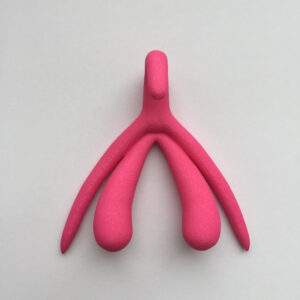
It was in a study in 2017 that researchers confirmed the absence of an anatomic “G-spot”, as previously believed. “G-spot” is now known to be part of the clitoris network.
In a study in 2022 at the University of Manchester, less than 10% of participants labelled all female external genitalia on a diagram correctly. Interestingly for this study, the participants were asked to identify their age, race, education, etc, but not their sexual orientation.
Interesting history, isn’t it?
But for me, the most shocking fact of all that stood out throughout history is that women have an organ that is for pleasure only. So, what is stopping us from making the most of that? The hundreds of years of dominance and privilege held by men, The Patriarchy.
Can you see, how throughout history, Patriarchy has been keeping female pleasure at bay? And how Lesbians have interrupted that and therefore caused a threat? Therefore, they need to further marginalise them as a group?
Another interesting part of this narrative is that when Lesbians started to be socially more accepted, the narrative quickly changed to please the “male gaze”. From the 1990s, media representation of woman-woman relationships and representation was designed to please men. In many TV programmes or films, two women kissing were actually portraying heterosexual characters kissing to try to be more attractive for men in the show, or men in the audience. Gilmore Girls and Friends are just a couple of examples of this.
But it’s not just men. The Patriarchy has influenced the way heterosexual women think of Lesbians, just like the 2005 study quoted above found.
I don’t have a study to prove this, but I have however the lived experience, as well as the lived experience of peers to showcase this: Straight women have used Lesbians to try to attract men. Many of us have seen this, especially on a drunken night out. Straight women “use” or “lead on” Lesbian women to make themselves feel better. Straight women think Lesbians flirt with them when looking at their new haircut or outfit. Or even if looked at for an extra second too long…
Lesbians have to be very careful. Lesbians are constantly profiled. Lesbians are stereotyped.
Well, surprise! Lesbians are not all butch. Lesbians don’t fancy all women. Lesbians don’t hate men. And not all Lesbians have clitorises.
Anyhow, based on research, on stats and on lived experience, this is where we are now. But Lesbians do know a bit about the clitoris. And now you do too.
Bonnie Erdelyi-Betts
HR Project Manager and Projects Lead for the LGBT+ Staff Network
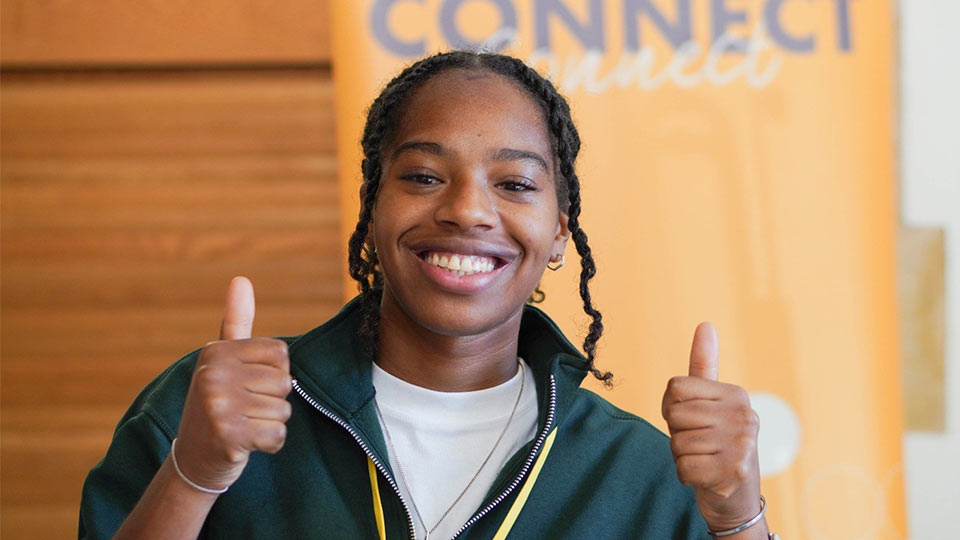
Five minutes with: Renae Huggan-Broughton
What’s your job title and how long have you been at Loughborough?
I am currently working in Human Resources as a Project Manager. I have worked at Loughborough for just over three years, starting as a Graduate Management Trainee before starting my current role.
Tell us what a typical day in your job looks like?
Oh wow, a typical day is really hard to describe but I’ll give it a go.
Picture this, it’s a Monday morning and my day starts with diving into emails and responding to any questions or updates from colleagues on my projects. Within HR, I manage three programmes of work: HR Digital, Reward & Benefits and Employee Experience with several projects in these. Outside of HR, I also support the Sport Capital PMB.
I’ll then usually head off on a day of meeting after meeting. These are a great opportunity to collaborate, brainstorm, problem-solve and implement upcoming projects and initiatives with colleagues. Occasionally that might be process mapping (I do love a good process change project) and scoping new projects. And then it’s back to my desk to analyse any data, write any papers or have a bit of a chit-chat with someone next to me in the office (I like to call these project wellbeing updates).
What’s your favourite project you’ve worked on?
When I moved into HR last year, I started working on the Staff Experience Survey. This involved working with Schools and Professional Services to track progress on the local actions from the 2022 survey and later involved working with People Insight to coordinate the delivery of our 2023 Staff Experience Survey. This work has definitely been one of my favourite projects.
Personally, I have really enjoyed overseeing the mechanism for colleagues to have their voices heard and to ensure accountability that actions will be delivered on the back of this. So, it has been a really rewarding project to manage.
P.S. If I may, a very close second, would be supporting Nina Kitcher and colleagues in Loughborough Sport and VCO to run an event in Budapest for the World Athletics Championships but I’ll save that for another day.
What is your proudest moment at Loughborough?
As a former Sport & Exercise Science student, graduating in the midst of the Covid-19 pandemic was definitely a proud moment but let me use this to pivot and share a couple highlights as a staff member.
The first was supporting the University’s response to the pandemic by assisting the Covid Gold Group, Logistics group, Team Dates Group and Study Spaces Group (there really were a lot of Covid groups). It was also rewarding to support the Covid Logistics Hub to ensure isolating students received food and everything they needed whilst taking calls from concerned parents and guardians.
My second proudest moment has to be supporting our graduation ceremonies. As a staff member, I am now aware of just how much work goes into making these ceremonies happen and making them special for graduates and their loved ones. Colleagues in the Events team, Registry, E&FM, Schools and VCO do an amazing job pulling these together and being a small part of aiding this effort is always a joy. As a women’s football fan, getting to see Mary Earps in the Winter 2023 ceremonies is also a real highlight.
Tell us something you do outside of work that we might not know about?
Outside of work, my time is generally split between a mix of church, sports, literature and music. I am involved in my local church, Open Heaven Church, where I serve on our leadership team and love doing a Sunday talk or catching up with people during the week.
You’ll also find me on the football pitch as vice-captain and centre forward (the one that tries to score the goals) for a local football team, Loughborough Foxes.
And then, if I’m not chasing a ball around in the cold, I’ll either be somewhere warm with a fiction book or DJing at a wedding or party. And for anyone wondering or wanting some recommendations, my top three favourite books (at the moment) are My Dark Vanessa, Homegoing and Open Water and my top three music artists (also at the moment) are Cleo Sol, Hulvey and the Hamilton/Encanto soundtracks.
What is your favourite quote?
I’m not very good at remembering quotes but one of my favourite bible verses is ‘And now these three remain: faith, hope and love. But the greatest of these is love’ (1 Corinthians 13:13).
If you would like to feature in ‘5 Minutes With’, or you work with someone who you think would be great to include, please email Soph Dinnie at S.Dinnie@lboro.ac.uk.
Debate session: The legacy of the War on Terror
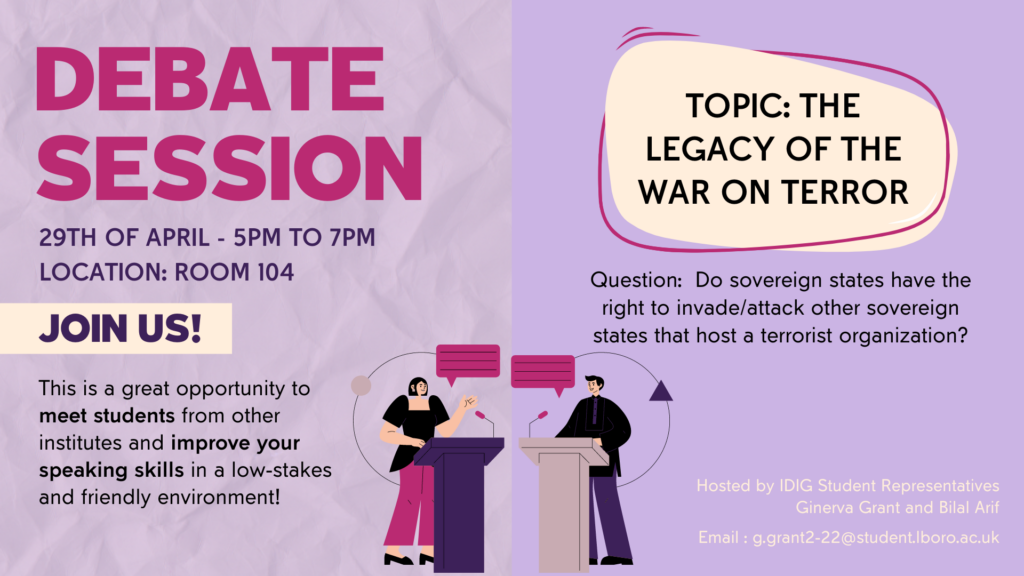
Student Representatives Ginerva Grant and Bilal Arif from the Institute for Diplomacy and International Governance are hosting a debate session this Monday 29 April. The topic of debate will be “The Legacy of War on Terror”, discussing whether or not sovereign states have the right to invade/attack other sovereign states that host a terrorist organization.
The session will take place on our campus in room 104 from 5 pm until 7 pm. This is a great opportunity to meet students from other institutes and improve your speaking skills and communication skills in a low-stakes and friendly environment.
There is no need to sign up for the session, if you wish to be part of this debate you can just show up on the day.
If you have any questions about the event please email Ginerva Grant at g.grant2-22@student.lboro.ac.uk
World Book and Copyright Day 23rd April
On the 23rd of April each year, UNESCO (United Nations Educational, Scientific and Cultural Organization) celebrates World Book and Copyright Day.

The death anniversary of William Shakespeare, Miguel Cervantes and Inca Garciloso de la Vega as well as the birth or death of several prominent authors, was chosen in 1995 by UNESCO to become the World Book and Copyright Day. That date is 23rd April.
The day in itself is a celebration of everything relating to books but also to highlight the importance copyright has in the dissemination of some of our favourite reads.
Thanks to copyright, thousands of authors and publishers around the world can publish works that enrich society, through creativity, diversity and access to knowledge.
Copyright is an Intellectual Property (IP) right which allows the creator of an original work, certain economic rights as well as the right to modify, adapt, and disseminate the work. Copyright is automatic and in the UK it lasts for the lifetime of the author plus 70 years.
Copyright protects different categories of work, from literary, dramatic, artistic and musical works, films and sound recordings as well as broadcasts and typographical arrangement.
Books fall into the literary works spectrum. However, sometimes a book can have multiple types of works included.

Using certain material from a book can sometimes become problematic. Multiple rights holders, means multiple people to request permission from. At times, a publisher might own the copyright and using the material in any way would mean that permission must be requested from publishers which also could mean paying a fee.
While copyright was created to protect creators and their original work, it has become a way for publishers to keep the power over the creations. Alexander Pope described it this way:
What Authors lose, their Booksellers have won,
So Pimps grow rich, while Gallants are undone.
While during Pope’s time, publishers indeed had a lot more power over authors, nowadays, with Open Access for publications, the authors can keep the copyright to their creations and share them widely for the enjoyment and use of the public.
Have a look below at the multiple resources available at Loughborough as well as the multitude of free resources, either because they have been published Open Access or because copyright expired, and they are now part of the public domain.
Loughborough University Catalogue
Authors, copyright, and publishing in the digital era / by Francina Cantatore, 2014
Judiciary-friendly forensics of software copyright infringement / Vinod Polpaya Bhattathiripad, 2014
Piracy the intellectual property wars from Gutenberg to Gates / Adrian Johns, 2010
Publishing law Hugh Jones and Christopher Benson, 2014
Rethinking copyright history, theory, language / Ronan Deazley, 2006
The copyright wars three centuries of trans-Atlantic battle / Peter Baldwin, 2014
The digital rights movement the role of technology in subverting digital copyright / Hector Postigo, 2012
The EU Artificial Intelligence Act regulating subliminal AI systems / Rostam J. Neuwirth, 2022
Wired shut copyright and the shape of digital culture / Tarleton Gillespie, 2007
Directory of Open Access Books
Copyright’s Broken Promise – Willinsky, John (2022)
Copyright and Cartography – Alexander, Isabella (2023)
Copyright, the Freedom of Expression and the Right to Information – Mendis, Sunimal (2011)
The Copyright Pentalogy : How the Supreme Court of Canada Shook the Foundations of Canadian Copyright Law – Michael Geist (2020)
The Digital Public Domain: Foundations for an Open Culture – Dulong de Rosnay, Melanie; De Martin, Juan Carlos (2012)
The Greatest Films Never Seen: The Film Archive and the Copyright Smokescreen – Op den Kamp, Claudy (2017)
What if we could reimagine copyright? – Giblin, Rebecca; Weatherall, Kimberlee (2017)
Whose Book Is it Anyway?: A View from Elsewhere on Publishing, Copyright and Creativity – Jefferies, Janis (Editor); Kember, Sarah (Editor) (2019)
Project Gutenberg
Open Library
UCL Press
For more books on copyright, visit our World Book and Copyright Day stand in the University Library, level 3.
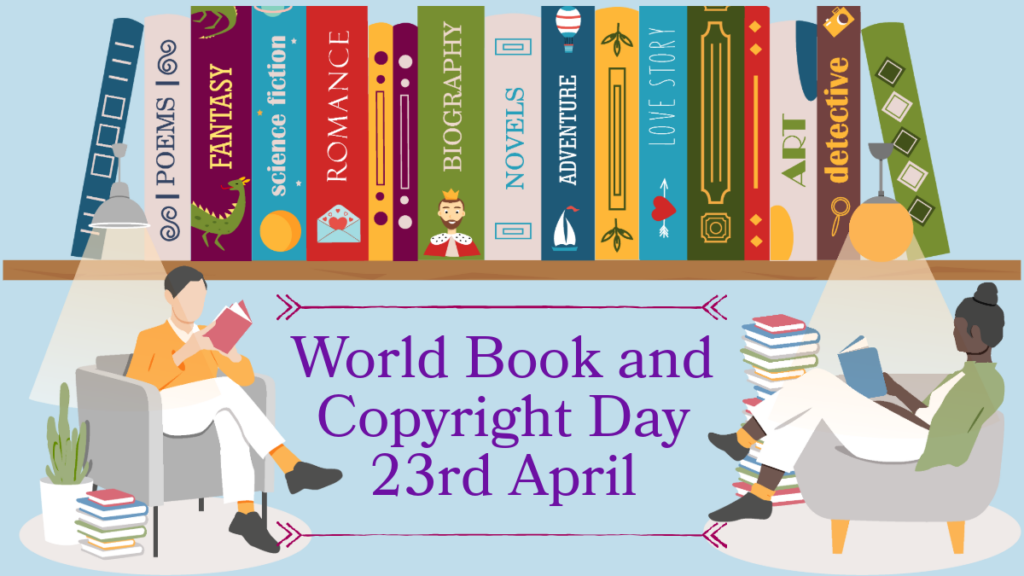

How to get quality sleep

A good night’s sleep is one of the most valuable investments we can make in our overall health and happiness, with almost every major disease in the developed world – Alzheimer’s, cancer, obesity and diabetes – being linked to poor sleep.
Sleep is a vital process that refreshes the body and mind, impacting our physical health, cognitive function, emotional stability, and general quality of life. The Mental Health Foundation states that: “Sleeping helps to repair and restore our brains, not just our bodies. During sleep we can process information, consolidate memories, and undergo a number of maintenance processes that help us to function during the daytime.”
Dr Iuliana Hartescu, of Loughborough University’s Clinical Sleep Research Unit, has studied the benefits of a restful night and the relationship between sleep, exercise, and diet, which, she says, operate as a ‘health trinity’. She noted: “When you’re more rested you’re more likely to be physically active, more likely to eat at the right times of the day, and you’re more likely not to let fatigue interfere with your motivation to stick to your diet.”
Challenge yourself to sleep for at least seven hours per night
Here are some strategies you can use to enhance your sleep quality:
- Maintain a consistent sleep schedule: Establishing a regular sleep cycle helps regulate your body’s internal clock, making it easier to fall asleep and wake up naturally. Aim for consistent bedtimes and wake-up times, even on weekends. A sunrise alarm clock can help with this.
- Create a restful sleep environment: In your bedroom, minimise noise, light, and distractions. Invest in a comfortable mattress and pillows, and ensure your bedroom is cool and well-ventilated. Consider using white noise or earplugs to block out disturbances.
- Practice relaxation techniques: Engage in relaxation before bedtime to signal to your body that it’s time to wind down. Activities such as meditation, deep breathing exercises, gentle stretching, or taking a warm bath, can help alleviate stress and tension.
- Write down your worries: If you lie awake worrying about tomorrow, make a note of what’s on your mind before you try to sleep, this can help to put your mind at rest.
- Limit screen time before bed: The blue light emitted by electronic devices can interfere with the body’s production of melatonin, a hormone that regulates your sleep cycle. Avoid screens at least an hour before bedtime or use blue light filters to minimise the impact on your sleep quality.
- Use a sleep diary: Record information about your sleep habits to help you understand what could be affecting your sleep and help you to explain any problems to a doctor. The Sleep Charity has a sleep diary template which you can download and try.
- Watch your diet and lifestyle: Avoid consuming stimulants like caffeine and nicotine close to bedtime. Additionally, try to limit your alcohol intake, as it can disrupt sleep patterns and lead to poor sleep quality. Regular exercise can promote better sleep but avoid vigorous workouts too close to bedtime.
- If you can’t sleep, don’t worry about it: Don’t lie awake worrying, get up and do something relaxing like listening to a podcast or reading until you feel tired enough to sleep.
Apps to help you sleep more easily and soundly
- Headspace – Includes ‘sleepcasts’ which are like adult bedtime stories that help you visualise calming experiences, such as a slow-moving train or a walk through a garden.
- Noisli – Lets you choose from different sounds such as thunder, wind and white noise to create your ideal sleep soundtrack.
- Calm – Sleep stories for kids and adults, read aloud by people with soothing voices, including celebrities like Harry Styles.
- Sleepful – A sleep-improvement app based on cognitive behavioural therapy for insomnia, created by Loughborough University in collaboration with the National Centre for Sport and Exercise Medicine.
More helpful resources
- Healthy sleep tips for children
- Explore different types of sleep problems and disorders
- British Snoring & Sleep Apnoea Association
If you’re having trouble coping with sleep problems, visit Mind for practical suggestions and information about where to get support, or visit your GP.

Voices of Diversity

The EDI Services team has recently been hosting a Voices of Diversity allyship series. This series focuses on panel-led discussions consisting of students, staff, and alumni that highlight a particular topic area of allyship.
The first event was ‘How to be an ally for people who wear the hijab’. Discussions are focused on what people from a diverse group would like from an ally and how people can be an ally to someone from this group. This series aims to create ways and spaces to build communities of practices where we have opportunities to hear the lived experiences of non-experts regarding a particular topic area.
The series is aimed at all members of our community, as well as external stakeholders and the events have been well attended. We have recognised the potential of these types of events to attract people who traditionally do not view themselves as an ally. Men in particular are underrepresented at these events and we want to let people know the events are open to all; everyone has the potential to learn about another person’s lived experience and how their input and support could impact their environment.
In EDI Services, we feel these events are important because they can affect some key practices in the workplace, such as challenging/questioning bias, raising the profile of marginalised voices, and helping to create physically and psychologically safer workspaces. The outcome of good allyship is a more recognisable inclusive workplace where this sense of belonging we all talk about actually becomes more of a reality.
All this is great, but we do recognise this type of change takes time and as all evidence suggests, change takes place when people have opportunities to meet on common ground, discuss and reflect in a relaxed setting and we are aiming to create and foster a culture where we each contribute to an others sense of belonging, wellbeing and safety.
If you are interested in attending one of the allyship events, please visit our website to see a calendar of dates and contact EDI services at Edi@lboro.ac.uk to register your interest.
Denise Coles
Equity, Diversity, and Inclusion Manager
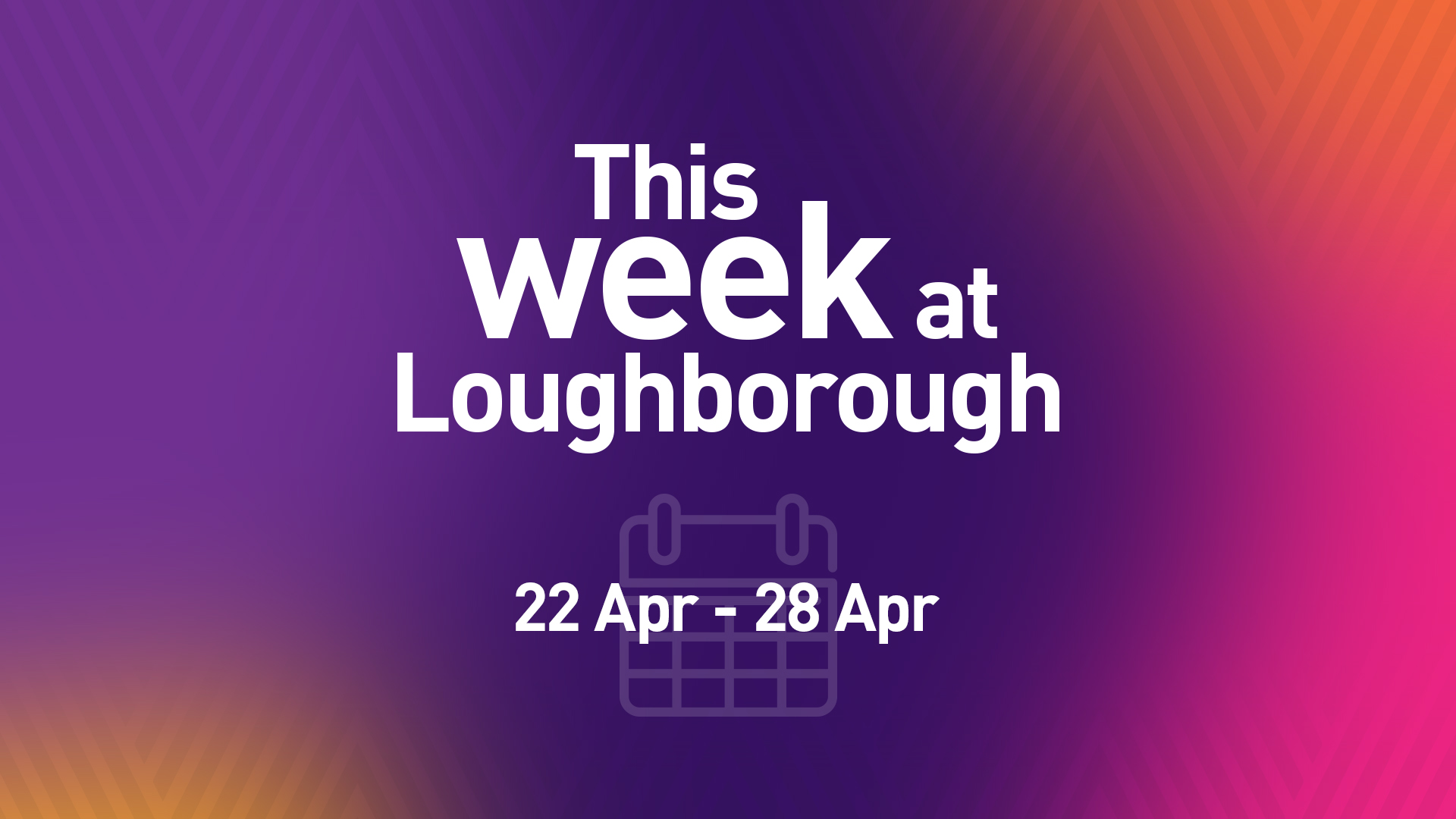
This Week at Loughborough | 22 April
General:
National Theatre Live: Nye
23 April 2024, 7pm-10pm, Cope Auditorium
Michael Sheen plays Nye Bevan in a surreal and spectacular journey through the life and legacy of the man who transformed Britain’s welfare state and created the NHS.
IAS Seminar: Environmental Performance
24 April 2024, 12pm-1pm, International House/Zoom
Institute of Advanced Studies (IAS) Residential Fellow Professor Jane Chin Davidson will deliver a seminar on their research, fully titled ‘Environmental Performance: Art, Science, and Trans Terminology for Ecological Justice in the Global Context’.
Bluebell Walk
25 April 2024, 12pm-1pm, Burleigh Wood
Meeting at the gates to Burleigh Wood (What3Words – faces.rock.edge), following a short introduction, the group will take a gentle stroll around the wood, stopping to learn about the plants and ecology of the wood (including the locally famous bluebell display). The walk will be led by Rich Fenn Griffin, Assistant Gardens Manager.
Project Expectations Focus Group – Reward & Recognition
22-26 April 2024, Loughborough Campus
Come along for a collaborative focus group session on Reward and Recognition as part of Project Expectations on the East Midlands campus
- Monday 22 April, 2.15pm – 3.15pm – SMB002, Stewart Mason Building
- Thursday 25 April, 10.15am – 11.15am – DAV1106, Sir David Davies
- Friday 26 April, 2.15pm – 3.15pm – Online via Microsoft Teams
Health From Cradle to Grave: Birthing Chair to Death Couch
27 March-23 April 2024, 12pm-2pm, Martin Hall Exhibition Space
An exhibition highlighting the work from English at Loughborough University’s Health Humanities Research Network. The exhibition’s themes translate and distil high-quality research on health, society and culture across time and space into material objects, art, poetry, life writing, and literature.
Careers:
Baker Hughes: Women in Solution Selling Externship
23 April 2024, 9.30am-4pm, Online
This externship will allow women currently enrolled in university in Europe to build the curiosity and skills required to thrive in complex sales and commercial roles. The opportunity will provide a variety of perspectives, and subsequent challenges, from energy technology industry leaders.
PhD: Create a CV
24 April 2024, 1.30pm-2.30pm, Graduate House (Training Room)
Whether you’re a seasoned researcher or just embarking on your doctoral adventure, this session is tailored to help you stand out in the competitive world.
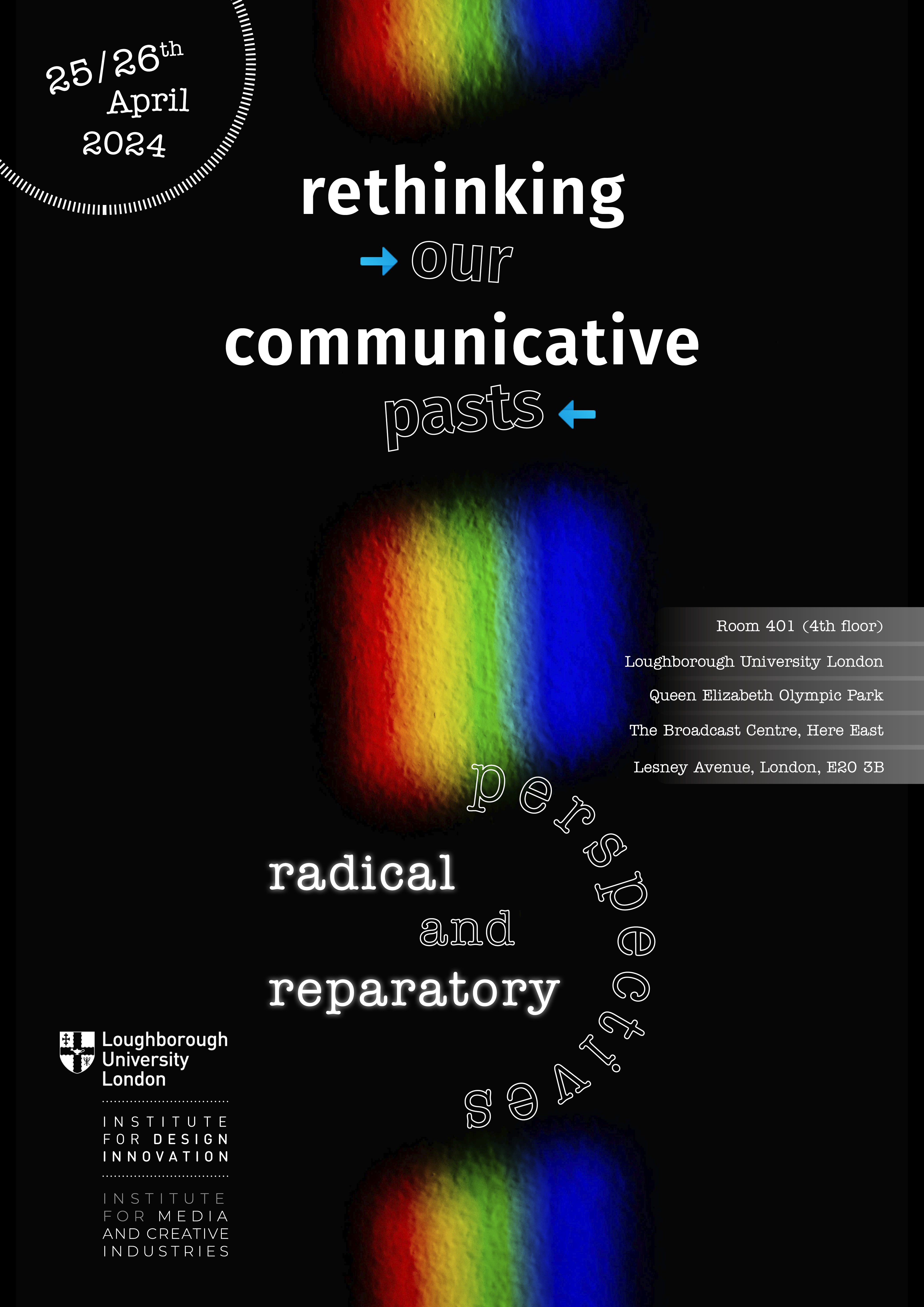
Rethinking Our Communicative Pasts: Radical and Reparatory Perspectives
The CRCC scholar Burçe Çelik, along with Anaïs Carlton-Parada (Loughborough University London) and Nelson Costa Ribeiro (Universidade Catolica Portuguesa) are co-organising a two-day international workshop at the Loughborough University London campus on 25 and 26 April 2024.
Bringing more than 25 leading and emerging scholars together, the workshop aims to foster discussions on how to employ historical and archival research for a radically inclusive study of media, communication and culture that problematises the West-centric (and masculinist) epistemologies.
While discussions on decolonisation of Westcentric knowledge and canon are ongoing in the UK and beyond, the workshop aims to expand and complicate this discussion by mainly asking:
‘How can we approach our shared communicative pasts to produce novel perspectives and conceptualisations towards a radically inclusive study of media, communication, and culture? Moreover, if theory often relies on a (mis)interpretation of the past, how can we rethink the past and the past-presents to challenge dominant theoretical approaches and conceptualisations in our discipline?’
In particular, we aim to complicate these approaches which are ill-fitted with heterogeneous experiences of the Global South, racialised bodies and collectives, and colonised and oppressed populations. If history and archives have been key to the architecture of epistemic and epistemological injustices, how can we think of the transformation of historical and archival research toward the formation of reparatory historical narratives? How can we learn from the experiences of those whose pasts were excluded from dominant narratives?
Throughout these two days, panels and roundtable discussions will focus on issues ranging from questions around media and empires, counter-media and counter-archival movements, radical histories of communication to feminist and more-than-human constructions of memory and time and reframing representations of marginalised historical actors.
There will also be a seminar by Dan Schiller on a critical history of telecommunications and US imperialism, and by Martha Evans on liberation movement communication in South Africa. The workshop will also feature a book talk on Communications in Turkey and the Ottoman Empire: A Critical History with discussions by Nelson Costa Ribeiro, Ana Cristina Suzina and Burçe Çelik.
The event will be also live-streamed and all can join by using the links in the program below.
| Rethinking Our Communicative Pasts: Radical and Reparatory Perspectives 25-26 April 2024 Room 401 (4th floor) (Loughborough University London, Queen Elizabeth Olympic Park The Broadcast Centre Here East, Lesney Avenue, London, E20 3B) Thursday 25 April (Teams LINK; bit.ly/3W182wq) 9:00 –9:30 Registration & Welcome Burçe Çelik (Loughborough University London), Anaïs Carlton-Parada (Loughborough University London), Nelson Costa Ribeiro (Universidade Catolica Portuguesa) 9:30 –11:30 Panel 1: Media and Empire: Pasts and Presents Chair: Nelson Costa Ribeiro Lee Grieveson (University College London): “The Past Keeps Becoming the Future” Simon Potter (University of Bristol): “Building Empires on Air: (Re)writing Histories of British Public and Colonial Broadcasting” Anjali DasSarma (University of Pennsylvania): “Narratives of White Normativity and the Political Economy of Slavery: Revisiting Publick Occurrences, The Boston News-Letter, and the Origin Story of America’s Early Press” Isadora de Ataide Fonseca (Universidade Católica Portuguesa): “Imperial Public Sphere: A Resilient Concept to Rethinking Our Communicative Past?” Dominique Trudel (Audencia Business School): “Exploring New Territories in the History of Media and Communication Research: Robert Estivals and French SIC as Political Avant-Garde” 11:30 –12:00 Coffee Break 12:00 –13:00 Roundtable: Cultural Imperialism and Counter-Movements (NWICO) Lars Diurlin (Stockholm University), ShinJoung Yeo (CUNY, Queens College), Sašo Slaček Brlek (University of Ljubljana) Moderated by Thomas Tufte (Loughborough University London) 13:00 –14:00 Lunch 14:00 –15:00 Roundtable 2: Towards Radical Histories in Media and Communication Omar Al-Ghazzi (London School of Economics), Philipp Seuferling (London School of Economics), Wendy Willems (London School of Economics) Moderated by Burçe Çelik 15:00 –15:30 Coffee break 15:30 –16:30 Seminar by Dan Schiller (University of Illinois at Urbana-Champaign) “Telecommunications and US Empire: A Brief History” Introduction and Moderation by ShinJoung Yeo 17:00 –18:00+ Book Talk with Drinks (@ Future Space, Ground Floor) Communications in Turkey and the Ottoman Empire: A Critical History Burçe Çelik, Nelson Costa Ribeiro Moderated by Ana Cristina Suzina (Loughborough University London) Friday 26 April ( bit.ly/43YU2F6) 9:30 –11:00 Panel 3: Memory and Time Chair: Pandora Syperek (Loughborough University London) Victoria Browne (Loughborough University): “Feminist Historiography and the Pasts and Presents of Abortion Activism” Clara de Massol de Rebetz (Kings College): “Remembering the Anthropocene: Memorials Beyond the Human” Kaya de Wolff (University of Frankfurt ) and Jephta U Nguherimo: “Our Problem is that we don’t write papers”: Co-authoring as an Approach to Decolonise the Scholarship Related to the Memory of the OvaHeroro and Nama Genocide” Claudia Magallanes-Blanco (Universidad Iberoamericana Puebla): “Forget About the Media. Let’s Focus on (Indigenous) Communication” 11:00 –11:30 Coffee Break 11:30 –13:00 Panel 4: Politics of Erasures and Counter-Archives Chair: Anais Carlton-Parada (Loughborough University London) Farangis Ghaderi (University of Exeter): “Erased Kurdish Women’s Histories: In Search of Kurdish Women’s Voices in Archives” Asli Ozgen-Havekotte (University of Amsterdam): “(Un)Seen, (Un)Heard: Diasporic Audiovisual Heritage and Speculative Turn in Archival Studies” Sahika Erkonan (University of Cambridge): “Embodiment and Counter-Memory in the Diaspora: The Case of the Armenian Genocide” Afaf Jabiri (University of East London): “Epistemic Violence of Anti-Palestinianism, Intersectionality and Decoloniality of Feminist Knowledge” 13:00 –14:00 Lunch 14:00-16:00 Panel 5: Rethinking Historical Actors and Representations Chair: Burçe Çelik Kristin Skoog (Bournemouth University): “(Re)searching Women in Broadcasting History” Stephanie Seul (University of Bremen) “Writing Women into the Historical Narrative of War Reporting: Avis Waterman, “The Times” Correspondent on the Italian Front During the First World War” Manuel Carvalho Coutinho (Universidade Catolica Portuguesa): “If (only) Archives Could Speak: Portugal’s Censorship Records and Its Historical Implications” Naomi Smith (Birkbeck College): “An Intersectional Analysis of National Television News Coverage of the 1992 Los Angeles Uprising” Farbod Honarpisheh (Yale University): “Our Disciplinary Past: Zigzagging Our Ways in and out of History and Frame” 16:00 –16:30 Coffee Break 16:30 –17:30 Seminar By Martha Evans (University of Cape Town): ‘Covering Our Tracks’: Archival Research on Liberation Movement Communication in South Africa” Introduction and Moderation by Cuthbeth Tagwieri (Loughborough University London) |
DRN2024 Drawing Repetition: Rhythm & Syncopation Recording

Sustainability Fortnight Success (Part 2)
From the 11th to the 22nd March 2024, Loughborough University’s Sustainability Team, in collaboration with other departments and organisations, held Sustainability Fortnight. This was the first time we have held events over a two-week period, and we were really pleased to see so many staff and students getting out and engaging with all that we had to offer.
Sustainability Fortnight 2024: Week 2 Review
The fun didn’t end after week one, as we had another full week of activities!
On Tuesday 19th, we had a fantastic day in the Edward Herbert Building again:
- Firstly, we had Quorn chefs cooking up some delicious vegan tacos for everyone to taste! Quorn are on a mission to save the planet by reducing the carbon emissions produced through food production, especially livestock grazing. So, their products are a great addition to your diet if you want to save the planet, without compromising the taste! You can read more about Quorn’s carbon emissions and sustainability commitment on their website.
- Outside EHB, we welcomed back Bike Buddies, who helped multiple people over the 3-hour slot, with various bike repairs and advice.
- Then, at 1pm, our Assistant Gardens Manager, Rich Fenn-Griffin delivered a ‘Biodiversity Talk’, in which he highlighted the various species occupying campus, from toads to trees to badgers. Rich spoke about his background and inspiration to work with nature, and why it is so important we take care of everything around us, so we can enjoy the biodiversity of our campus today, but also to preserve species for future generations. Stay tuned to find out more about our upcoming Biodiversity events…


On Wednesday, the amazing Action team at LSU led the Food Drive, in which students from halls across campus donated unwanted food items to be delivered to local food banks. This helps tackle food poverty – one key aspect of societal and environmental sustainability, as our food systems are under increasing pressure and are threatened by the impacts of climate change. The food drive was a success, and we are pleased to be helping the local community and contributing to a more sustainable future in this way.
Next up, we hosted a Green Careers Workshop to inform students of the varying career paths available in sustainability, and how many skills can be acquired and transferred through working in a so called ‘green’ job. Following on from this, we held a panel of experts, including a Loughborough University PhD student, a member of our alumni, and a professional from environmental start-up Carbon Jacked, who are based in Loughborough. Keep your eyes peeled for more on this as we are about to launch an exciting project with them, delving into sustainability in sport!
For some evening entertainment, the ’50 years of Litter on Skye’ film was shown on screen for the very first time, alongside a public lecture from Dr Tom Stanton, who led the research. This was an alarming insight into the amount of litter found over the years on some of Scotland’s most beautiful beaches, and how Loughborough University researchers are becoming part of the solution for this.

To round off the events, we had a special guest visit from TV personality Gregg Wallace, who sat on the ‘Food for Thought: A Fresh Perspective on Food’ panel with other industry experts. The panel included our very own Dr Elliott Wooley and Head Performance Chef in the Elite Athlete Centre (EAC) Varun Shivdasani, as well as Louis Guest from our waste management provider, Enva . All these panellists offered a unique and valuable perspective on topics such as food waste, meal planning, healthy eating, eating locally, and the contributions of the food industry on global warming. The event had a great turnout, and we would welcome the idea of more talks like this in future, as there are so many important sustainability-related topics to discuss! (All attendees were also rewarded with a free lunch from the LSU hummus bar – Humpit – I would highly recommend this! )
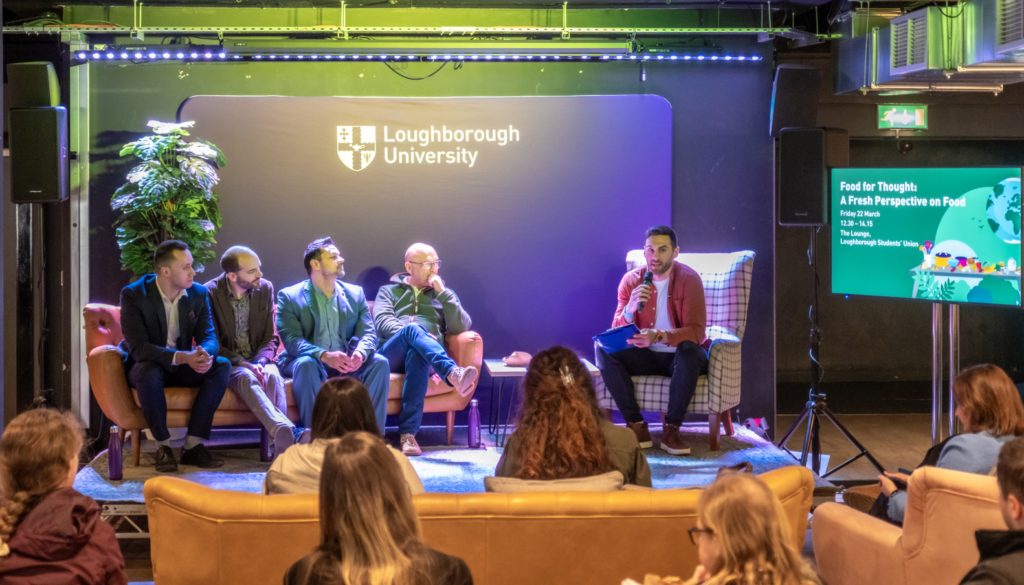
Thank you so much for reading and thank you to those involved in organising and attending all the activities. We are constantly striving to make Loughborough University a more sustainable community, and hope that these events have provided opportunities for you to get involved! Do not hesitate to reach out to Sustainability Assistant, Lottie, on enviroassist@lboro.ac.uk if you have any questions or suggestions for upcoming events; we are always willing to hear from both students and staff!

This article is in support of the United Nations Sustainable Development Goal 13: Climate Action. To read more click here.

Sustainability Fortnight Success
From the 11th to the 22nd March 2024, Loughborough University’s Sustainability Team, in collaboration with other departments and organisations, held Sustainability Fortnight. This was the first time we have held events over a two-week period, and we were really pleased to see so many staff and students getting out and engaging with all that we had to offer.
Sustainability Fortnight 2024: Week 1 Review
The events kicked off with a clothes swap event organised in collaboration with the LGBT+ association, which offered students an opportunity to give their clothes a second life.
On the second day, we unveiled the brand-new Sustainability Mural on the side of the Schofield Building, which was designed by the talented Jasia Pang. Sustainability colleagues came together with LU Arts colleagues, alongside Vice Chancellor Professor Nick Jennings and Visiting Member of the University Dr Jo Jennings, to celebrate this wonderful piece of artwork which will hopefully inspire students and staff to adopt more sustainable practices in years to come.

We also had a local bike repair company pay a visit to campus to offer out advice on taking care of your bike and help with small repairs. Thank you to Bike Buddies for coming along and we look forward to welcoming you back to campus in future.
Following on from this, we held our second ever Repair Café in Martin Hall, where staff and students could bring along any broken items such as textiles, to receive advice on how to keep these items going for longer rather than buying new or throwing them away! We are determined to be a part of the circular economy and encourage habits such as taking care of our items and repairing where we can. Stay tuned for information about future Repair Cafés on our campus and in the local area…
The Tuesday was finished off with the Sustainable Fashion Show, run by colleagues in the Students’ Union. After months of build-up and hard work from staff and students alike, this event was a huge success! The event saw around 170 attendees, with 36 different looks being showcased down the runway, 4 sustainable student business stalls, and 86 students involved in pulling it off. Congratulations to those involved!
Next up, we held our day-long Grime Scene Investigation! You may be wondering what on earth this is… basically, the Sustainability Assistant, along with colleagues from our waste contractor Enva, and student Sustainability Ambassadors, took part in a waste audit. We weighed bags of rubbish from student halls, and then sorted through these to find out how well each hall was segregating their waste into ‘general’ and ‘recycling’. It was interesting to find out about some of the recycling habits within halls, and the key areas we need to address with future messaging and engagement activities. Huge shout out to the Sustainability Ambassadors who got stuck in to helping on the day – we would not have been able to do this without you and I hope that you found the day interesting!

On Thursday 14th, we held our Sustainability x Wellbeing fair, for University Mental Health Day in the Edward Herbert Atrium. This was a lovely day, packed full of fun, advice, inspiration on living more sustainably, and even live music! We invited various companies to take part in our Mini Sustainability Fair:
- Loughborough alumni, who owns Friends with Nature, selling skincare and wellbeing products,
- Local seller Dash Vegan, showcasing a wide range of vegan and eco-friendly products,
- Leicestershire County Council, who played the ‘How Bad Are Bananas?’ carbon footprint game,
- The countryside charity, CPRE, who promoted their campaigns and initiatives to protect our natural environment.
As if this wasn’t enough, the LGBT+ association held their second clothes swap of the fortnight, offering a space for people to experiment with clothing and different styles, and pick up some unique pieces they may not have found otherwise.
Overall, this was a brilliant day, and an excellent collaboration – it is so important to realise the many cross benefits of wellbeing and living sustainably. For example, the Mental Health Foundation has found that nature connectedness is associated with lower levels of poor mental health, including depression and anxiety. And, according to Mind, spending time in nature can help make you feel more relaxed, and improve confidence and self-esteem.

To round up week one of fun, we took a stroll around the orchards on campus, with Fruit Routes artist Mita Solanky, for the ‘Fruit Routes Spring Walk’. Students, staff, and members of the community came together to spend some time in nature and get to know the campus better! We saw lots of beautiful plants, trees, and blossom along the way, and shared stories and experiences over tea and cake back at the LAGS garden.



This article is in support of the United Nations Sustainable Development Goal 13: Climate Action. To read more click here.
Fashion, Identity, and Sustainability
This is a guest blog, written by Jennifer Agu, who is one of Loughborough University’s Sustainability Ambassadors, and is also studying for a Biotechnology MSc in the Department of Chemical Engineering, Loughborough University.
My enthusiasm for personalization, conscious decision-making, and design came to life as I worked alongside the Production Team for the Sustainable Fashion Show organised by the Loughborough Enterprise Network.
However, it is my Nigerian upbringing and experience studying for a biotechnology master’s degree and my role as a Sustainability Ambassador at Loughborough University that have truly shaped my perspective on the interconnectedness of sustainability and identity.
Now, I am thrilled to share my thoughts and insights on the crucial connection between fashion, identity, and sustainability. Through this blog post, we will explore a world where fashion intertwines with identity and sustainability, uncovering the potential for positive change through conscious consumption.
Fashion and Second-Hand Clothing
Growing up in Nigeria, I witnessed firsthand the importance of fashion as a form of self-expression and cultural identity. This form of fashion allowed for self-expression and creativity while being affordable. However, I soon realized that second-hand clothing was often excess clothing donated by Western countries, which raised concerns about the industry’s impact on textile waste and the exploitation of lesser-developed nations.

Figure 1: One of the most popular second-hand clothing markets in Port Harcourt, Nigeria [1]
Personalization and Identity
My journey in understanding the significance of fashion as a communication of identity became evident when I moved to Loughborough. Pink is one of my mother’s favourite colours and she gifted me a pair of pink Crocs right before I relocated. I wore them a lot as they reminded me of home and made me feel close to her. This sparked my interest in incorporating pink into my identity. I explored various avenues such as learning to style my hair in braids, acquiring a pink wig, collecting a pair of bright pink sandals I saw listed on the Olio app and experimenting with accessories to communicate my inner emotions outwardly.

Figure 2: Pink wig I got at the local Salvation Army, 34 Devonshire Square, LE11 3DW.
Industrialization, Environmentalism, and Social Justice
Witnessing the direct impact of industrialization on my hometown, particularly in the textile production sector, fuelled my ever-growing interest in environmentalism, social justice, waste minimization, and sustainability. It became clear to me that embracing green living practices required self-critique, especially when it came to our consumption patterns. These reflections are even more crucial in the face of the prevailing fast fashion culture.
The Pitfalls of Fast Fashion
Fast fashion’s allure lies in its promise of convenience and affordability, catering to our desire for instant gratification. However, these promises come at a cost. As consumers, we are often disconnected from the design process of our clothing, making it difficult to ascertain the intended use and disposal methods. This is where personalization becomes significant [2].

Figure 3: Pink sandals I got off Olio!
Conscious Decision-Making and Responsible Consumption
Conscious decision-making is a simple yet powerful approach to expressing oneself in a manner that aligns with personal values. It involves distinguishing between wants and needs. Previously, I used to buy bodycon dresses from fast fashion brands for every event, only to realize that the low-quality clothing resulted in both waste and wasted money.

Figure 4: Photo from ‘Inside Out’ campaign that started as a response to the factory tragedy that occurred on 24 April 2013 in Dhaka, Bangladesh[3] Photo Credit: Sebastian Damberger and Fritz Straube, Haar und.
The Impact of Fast Fashion on Global Capitalism and Workers’ Conditions
Fashion, politics, and identity are deeply intertwined due to fashion being historically political. By consuming fast fashion, we inadvertently contribute to global capitalism while impoverishing textile workers in countries like Bangladesh, China, and India, as they endure unfavourable conditions to meet the demands of mass consumption. It is crucial to consider the ethos and treatment of workers by fashion companies and designers, especially in mass-production settings.

Figure 5: Children whose garment worker parents died in the 2013 Rana Plaza tragedy hold a placard to demand justice in this 2015 photo. (Photo by Stephan Uttom Rozario / A long road to justice for Rana Plaza victims – UCA News)
Defining Sustainable Fashion
Defining sustainable fashion can be challenging due to the various interpretations of sustainability. However, a rule of thumb is to consider the value of clothing in terms of reusability, longevity, and fabric quality. By prioritizing these factors, we create opportunities for personalization through upcycling and styling, fostering a more meaningful relationship with our clothes and minimizing textile waste.
Promoting Responsible Consumption
To effectively manage clothes we no longer want, it is imperative to adopt responsible end-of-life strategies. Donating to charity shops such as Loros, the British Heart Foundation, and the Salvation Army is an effective way of extending the lifecycle of garments.
These actions not only contribute to waste reduction but also initiate meaningful conversations about responsible consumption.

Figure 6: As seen in British Heart Foundation, Clumber St, Nottingham NG1 3G.
As we embark on the journey towards responsible consumption and production, let us remember that everyone, regardless of social status, deserves a decent material standard of life. While fast fashion may seem appealing in meeting our immediate desires, it perpetuates a linear economy that disregards the environmental impacts of production and disposal [4].
In a traditional linear economy, resources are extracted, transformed into products, and eventually discarded as waste after their use. In contrast, a circular economy seeks to close the loop by creating a continuous cycle where products and materials are reused, repaired, remanufactured, or recycled to create new value.
To shift towards a more sustainable and circular economic system, it is essential to understand that identity and mindful consumption are deeply interconnected, and as such our fashion choices have the potential to shape a more sustainable and meaningful future.
By embracing sustainable fashion practices, we can forge a more equitable and environmentally conscious future. You can make an impact in the collective action by being part of this Fashion Revolution Week 2024 happening between April 15th and 24th.
Wishing you the best in your journey!
The Give ‘n’ Go campaign is a great way to donate your unwanted garments during the end of year move outs!

This article is in support of UN Sustainable Development Goal 12 ‘Responsible consumption and production’. To find out more, click here.
References
- Port Harcourt People [@AskPHPeople]. (2018, October 12). Important Markets in Port-Harcourt. #PHCity [Image attached] [Post]. X formerly known as Twitter. https://twitter.com/AskPHPeople/status/1050773644337664000
- A. Gwilt and T. Rissanen, Shaping Sustainable Fashion: Changing the Way We Make and Use Clothes. Taylor and Francis, 2012.
- K. A. Plonka, “Inside out – the fashion revolution campaigns for consumers’ awareness of working conditions,” FairPlanet https://www.fairplanet.org/story/inside-out-the-fashion-revolution- campaigns-for-consumers-awareness-of-working-conditions
- Thomas, A., Bilge, I.S. and Ballam, T. (n.d.). Greening and Indigenizing the Carpentry Trade. [online] pressbooks.bccampus.ca. Press Books. Available at: https://pressbooks.bccampus.ca/cicancarpentryproject/front-matter/definitions/
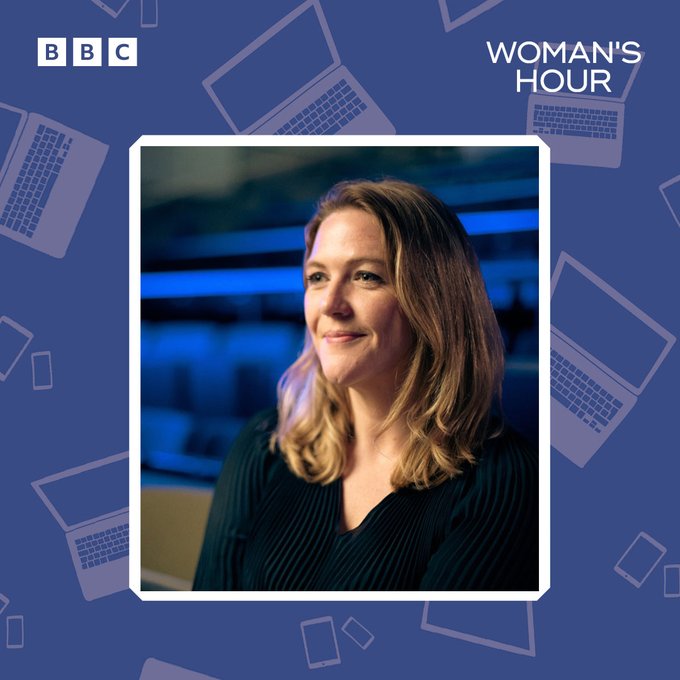
Jilly Kay appears on BBC Radio 4’s Woman’s Hour
Jilly Kay – a CRCC member and Senior Lecturer in Communication and Media at Loughborough University – appeared on BBC Radio 4’s Woman’s Hour to discuss her research on ‘femcels’ – women who identify as involuntary celibate. The discussion with presenter Emma Barnett can be heard at 48 minutes into the programme. She also recently provided consultation for a new Channel 4 documentary on ‘femcels’ – women who identify as involuntary celibate. The documentary, entitled Radicalised? Are Femcels the New Incels? is presented by journalist Ellie Flynn and asks whether femcels can be considered part of a new incel movement, and if so, whether this community may have similarly disturbing implications. The trailer for the documentary can be viewed here.
Jilly has published research on femcels, and has previously provided media commentary on the phenomenon for the Atlantic and Frankfurter Allgemeine Zeitung. She has a forthcoming article in the European Journal of Cultural Studies entitled ‘From femcels to ‘femcelcore’: women’s involuntary celibacy and the rise of heteronihilism’, co-authored with Jacob Johanssen (St Mary’s University). Her interest in femcels forms part of her ongoing research into the ‘femosphere’, a loose ecology of female influencers and communities which, she argues, mirrors and reproduces the fatalistic and reactionary logics of the manosphere.
Jilly Kay is a Senior Lecturer in Communication and Media at Loughborough University. She is a co-investigator on the project ‘Re-CARE TV: Reality Television, Working Practices and Duties of Care’ (2023-26), within which she leads the work package on reality television participation. She is co-lead of the Media, Memory and History research theme at Loughborough University, co-convenor of the Media and Gender research group, and co-editor of the European Journal of Cultural Studies.
The middle of the end
So today the University’s new reading list system (https://lboro.rl.talis.com/index.html) went live and we set redirects from LORLS to point to it. We’ll still be running the LORLS server for a couple more months for the benefit of library staff but then it will be decommissioned.
The data migration exercise seemed to go very well although it was interesting to note that despite the two systems having very similar internal data structures there were issues around our allowance for “lists within lists” and how the two systems treat items at draft status. But luckily these issues were easily resolved.
This Week at Loughborough | 15 April
Spring Staycation:
Free Lunch and Springtime Quiz
16 April 2024, 12pm-1pm, Cayley Dining Hall
Come along to Cayley for a free two course meal and celebrate the last week of the holidays with the International Student Experience team. We have limited spaces so book early to avoid disappointment.
LU Arts Workshop Crochet a Granny Square
17 April 2024, 1pm-3pm, Edward Barnsley Building, Room 63108
During this relaxing session, you’ll take a break and learn how to make basic granny squares while exploring the calming properties of mindful crocheting. Let your creativity flow as you create these cozy squares, perfect for crafting blankets, scarves, and more!
Eid 2024 Celebratory Lunch
18 April 2024, 12pm-2pm, The Treehouse (LSU)
Loughborough University’s Race, Ethnicity, and Cultural Heritage (REACH) Network invites staff, students, and the wider community to join them once again in celebrating the Eid-al-Fitr festival on campus.
Come and be part of this vibrant occasion, discover the significance of Eid-al-Fitr, indulge in diverse cuisines from around the world, capture memories through photo opportunities, and get adorned with beautiful henna designs by a talented artist.
LSU Scavenger Hunt with the International Students’ Network
20 April 2024, 10am-1pm, Hazlerigg Fountain
Embark on a thrilling journey where each ‘riddle’ station holds a hidden hint waiting to be unlocked. There will be a committee member at each station to help out teams. Crack the riddles, follow the clues, and race against time to uncover the ultimate treasure. In the end, the students or team with the most riddle answers cracked wins the prize unless someone manages to find hidden ‘treasure’ first.
General:
Learning and Teaching Conference 2024: Inspire and Engage
16 April 2024, 9am-4.30pm, James France/Online
The 2024 Learning and Teaching conference celebrates the inspiring and engaging teaching practices across the University and provides an opportunity for colleagues to network, share good practice and discuss ideas to enhance the student experience.
Project Expectations Focus Group – Reward & Recognition (Loughborough)
16 April 2024, 11.15am-12.15pm, LDS018 (Design School)
The focus groups will be hosted by Colette Cloete (Reward and Benefits Manager and Reward and Recognition workstream lead) and presents a unique opportunity to collaboratively shape and develop the University’s Reward and Recognition Framework.
RAeS: Sustainability in Aerospace – a Combustion Perspective
16 April 2024, 7.30pm-9pm, U020 (Brockington Building)
In this lecture, the overall strategy and ambition of Rolls Royce with regard to sustainability will be covered followed by an explanation of what that means for the combustion section. The results of a recent hydrogen engine test campaign will be presented and discussed. This lecture is jointly sponsored by Institution of Mechanical Engineers (IMechE).
Project Expectations Focus Group – Reward & Recognition (London)
18 April 2024, 11.15am-12.15pm, LDN205 (London Campus)
Come along for a collaborative focus group session on Reward and Recognition as part of Project Expectations. The focus groups will be hosted by Colette Cloete (Reward and Benefits Manager and Reward and Recognition workstream lead) and presents a unique opportunity to collaboratively shape and develop the University’s Reward and Recognition Framework.
Health From Cradle to Grave: Birthing Chair to Death Couch
27 March-23 April 2024, 12pm-2pm, Martin Hall Exhibition Space
An exhibition highlighting the work from English at Loughborough University’s Health Humanities Research Network. The exhibition’s themes translate and distil high-quality research on health, society and culture across time and space into material objects, art, poetry, life writing, and literature.

Digital activism for political participation: Women’s rights advocacy in Africa and the United Kingdom
Talk by Professor Innocent Chiluwa- Visiting Professor at the CRCC
30th April, at 1-2pm in WAV040 Wavy Top at Loughborough University and on MS Teams https://shorturl.at/uvzS6
The Centre for Research in Communication and Culture (CRCC) is hosting the talk, co-sponsored by the Political Communication and Language and Social Interaction themes.
The talk explores women’s rights advocacy in Africa and the United Kingdom. Women’s rights to political participation and inclusion in leadership have been a prominent topic of conversation in social discourse, human rights campaigns, and academic studies. Digital media campaigns for more political opportunities for women in Africa and the United Kingdom show that women are still quite politically marginalised despite some moderate progress.
Interestingly, social media (SM) affordances have given impetus to local women’s rights groups (WRGs) in the UK and commonwealth countries of Africa to mobilise and campaign for equal opportunities and parity in national governments. Professor Chiluwa’s study will examine online activism by two WRGs each from Africa and the UK to answer the following questions: what is the character of modern WRGs in the light of conflict and new social movement theories? What is the structure of digital campaign approaches in Africa and the UK (e.g., what SM platforms are mostly used)? And lastly, how do we compare the structures of campaign discourses of WRGs in Africa and the UK?
Innocent Chiluwa is a Professor of Applied Linguistics (Discourse Studies), Media and Communication. He was the head of the Department of Languages (and later) Dean of the College of Leadership and Development Studies at Covenant University, Nigeria. He is a visiting Scholar at the Department of Languages and Intercultural Studies, Heriot-Watt University, Edinburgh. He is a Georg Forster Senior Fellow of the Alexander von Humboldt Foundation (AvH) and was a Humboldt scholar and visiting professor at the Department of English, University of Freiburg in Germany. He has published books and edited volumes in media studies, social media and society, discourse and conflict studies and deception studies. He has also published extensively in reputable peer-reviewed journals and contributed several chapters in books and encyclopaedias. He is on the Editorial Boards of Discourse & Society (SAGE), Journal of Multicultural Discourses (Routledge), Journal of International and Intercultural Communication (Taylor & Francis) and Humanities and Social Sciences Communications (Springer Nature).
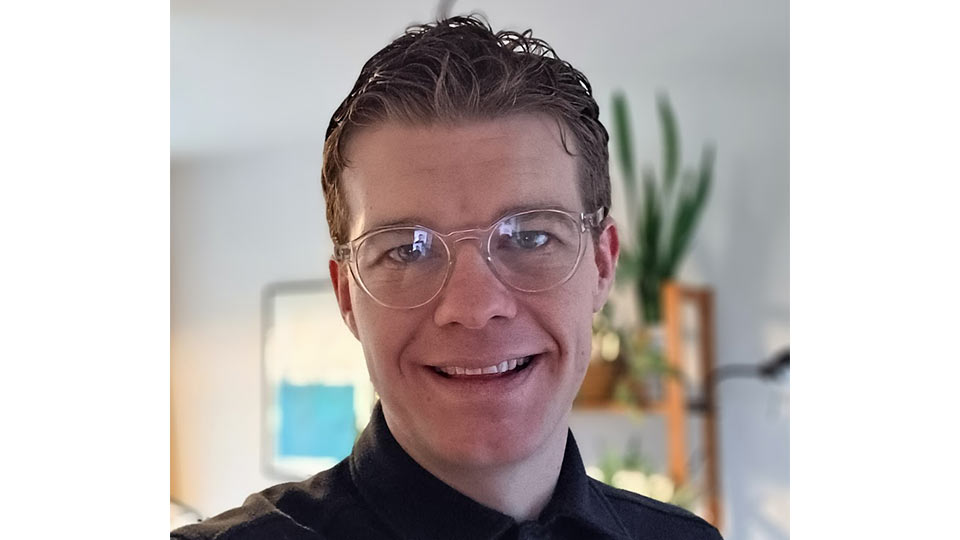
Five minutes with: David Bell
What’s your job title and how long have you been at Loughborough?
I’m the Curator for the Arts Collection and Music Programme. I’ve been here 6.5 years but my role has changed a lot in that time.
Tell us what a typical day in your job looks like?
I’ve read a few of these features and it seems everyone denies having a ‘typical day’. And who I am to buck the trend? A given day could involve researching the best kind of wax to use on one of our bronze sculptures, helping a student music society find a rehearsal space, working with Estates colleagues to hang artworks, and wondering if I’ll ever find time to tidy the art store. The next might involve planning a new round of music tuition for students and staff, updating information about our art collection on artuk.org, helping collate a ‘zine featuring creative writing responses to our sculpture collection, and wondering if I’ll ever find time to tidy the art store.
What’s your favourite project you’ve worked on?
Last year’s Sculpture Week was our first, and was a real highlight for me. I’ve really enjoyed planning this year’s too, which will feature the inauguration of a new work, produced by three Loughborough students! Our collection contains works of international significance, and can be used to tell stories about the changing functions of public art and the institution’s history. I love sharing these, but also programming events to explore the ‘unofficial’ histories of our sculptures: what associations they spark (“a giant tap”, “sheets of falling paper”, “the relic of an ancient civilisation”); how they help people orient themselves on campus; or how one has been adopted as a mascot for a nearby student hall, with an annual party thrown in its honour. Public sculpture is just that – public, and it comes to life when its public is active in determining its meaning.
Find out more about Sculpture Week.
What is your proudest moment at Loughborough?
We wouldn’t be able to hold Sculpture Week if our sculptures weren’t worth experiencing and, to that end, I’m most proud of establishing an ongoing programme of conservation and restoration, which will help ensure this huge asset can be enjoyed by the University and its public for years to come. Keep an eye out as you travel around campus and you might notice a sculpture that looks better than it had previously, or even see a conservator applying that wax I’d so assiduously researched.
Tell us something you do outside of work that we might not know about?
My partner just enrolled me in an improv comedy class for my birthday. I’ve told absolutely nobody about this and intend on keeping it that way, so if anyone asks about it I’ll know they’ve been reading this feature. (I offer no assurances regarding the quality of any future wisecracks.)
What is your favourite quote?
I was on holiday in Lyon when my love of 1* restaurant reviews reached new heights with a coruscating takedown of a very expensive restaurant. ‘The waitress was friendly’, it said, ‘like a prison door.’ Marvellous.
If you would like to feature in ‘5 Minutes With’, or you work with someone who you think would be great to include, please email Soph Dinnie at S.Dinnie@lboro.ac.uk.

Spaced and interleaved practice - what are they and what are their roles in improving mathematics performance?
Written by Bobo Kai Yin Chan, a third-year doctoral researcher at the Department of Mathematics Education, Loughborough University. Bobo has a psychology degree and a master’s degree in applied psychology. Her research interests include cognitive load theory, spaced practice/spacing effect, and educational psychology. Edited by Dr Bethany Woollacott.
This blogpost reviews existing literature on spacing and interleaving research. Bobo is currently supervised by Dr Ouhao Chen and Dr Hugues Lortie-Forgues with this meta-analysis mainly supported by Dr Lortie-Forgues.
Introduction
Researchers are keen to look for ways to improve mathematics performance and achievement. Spaced and interleaved practice are two approaches which aim to improve learning by considering how learning materials are connected and distributed across learning sessions. Both approaches typically work well in mathematics education as well as other areas of learning (such as memorising words and rules, and learning languages3,5).
In this blog post, I discuss existing spacing and interleaving research in mathematics education and general education. I also highlight the importance of collecting together all the evidence from previous studies via a meta-analysis, aiming to understand the general effectiveness of spacing and interleaving practices for mathematics achievement.
What is spaced practice and interleaved practice, and how do they affect mathematics learning?
Spaced practice refers to inserting a time gap between learning sessions, exemplified in the blue diagram below. Reproduced from Weinstein et al.10.

Interleaved practice refers to intermixing similar problems across different learning sessions, exemplified in the green diagram below. Reproduced from Weinstein et al.10.

These effects have been comprehensively researched and found to be effective for learning and retaining knowledge in various subject areas, including paired-associate tasks (e.g., pairing vocabulary with its meaning) and memory tasks3.
Previous research has indicated that both spaced and interleaved practices could yield positive effects for mathematics learning and other domains. In mathematics education research, more research has investigated the effectiveness of interleaved practice compared to spaced practice; I review the existing evidence for each type of practice next.
Existing evidence on spaced and interleaved practices in non-mathematical domains
There are multiple meta-analyses (collections of evidence from previous studies) documenting spaced and interleaved practices in non-mathematical domains.
One meta-analysis conducted on spaced practice focusses on how the use of spacing impacts learning a second language. The results of this meta-analysis revealed that learners who learnt by spacing new vocabulary recalled more words than those who learnt the same new vocabulary simultaneously5 (i.e., massed practice).
Another meta-analysis compared spaced and massed practice in 271 verbal memory tasks (e.g., memorising and recalling vocabulary), specifically investigating the effect of distributed practice and lag effects. Distributed practice refers to separating learning into two or more sessions using temporal gaps between sessions, while lag effects refers to the impact of differing lengths of spacing used between learning sessions (where longer spaces typically results in better learning than shorter ones). The results of this meta-analysis found a significant difference in learning when spacing the verbal memory tasks, suggesting that distributed practice is useful for memorising and recalling vocabulary. In addition, lag effects were found to benefit learning when the intervals between learning sessions were at least a day to three months, rather than intervals spaced within the same day.
For interleaved practice, Brunmair and Richters’ meta-analysis examined the effectiveness of interleaving in various domains, including paintings, mathematical tasks, artificial pictures, expository texts, words, and tastes1. Their findings suggest that interleaved practice might not be beneficial for learning words (unlike spacing) but could be advantageous for classifying paintings. Their results also suggest a small benefit of using interleaved practice during mathematical tasks.
Existing spaced practice research in mathematics education
Based on the aforementioned information, the spacing effect appears effective in tasks that heavily rely on memorizing words, rules, and language learning. However, mathematics demands more than just memorizing terms; it also requires learners to select the correct strategies to solve mathematical problems and to use the correct procedures to calculate the answers 2. Therefore, although the spacing effect could be potentially beneficial for mathematics learning, the complexity of learning mathematics goes beyond memorising words or learning grammatical rules.
“…although the spacing effect could be potentially beneficial for mathematics learning, the complexity of learning mathematics goes beyond memorising words and learning grammatical rules“
Studies investigating spaced practice in mathematics have generated mixed results.
One study with students aged 8 to 10 suggested that students might benefit from spaced practice when learning mathematical words6. Similarly, a recent study involving students aged 12-13, compared spaced and massed practices when calculating basic probability and permutation problems. The study revealed that students who engaged in spaced practice demonstrated superior post-test scores and more accurate predictions about their performance on the post-test than the students who engaged in the massed practice4.
However, spacing practice is not always effective for learning. For instance, another study investigated the effectiveness of spaced practice with undergraduate students, comparing spaced and massed practices by asking students to solve some permutation problems. All students took two post-tests one week and five weeks after the final practice session. The results suggested that students might only benefit from spaced learning when learning conceptual knowledge but not when learning procedural knowledge9.
Existing interleaved practice research in mathematics education
As previously mentioned, there are comparatively more studies investigating interleaved practice in mathematics education compared to spaced practice.
Several studies have investigated interleaved practice in mathematics learning by interleaving similar problems or topics. For example, a study with students aged 12 to 13 involved the students solving the same practice algebraic problems over 3 months except that one group were given the problems via an interleaved approach and the other group via a blocked approach. Students were tested on their algebraic skill at the end of the 3 months and then again 1 month later. Results suggested that students learning via the interleaved approach solved more problems correctly at both time points compared to the blocked group8.
However, another study found that interleaved practice was not beneficial for students of a similar age learning mathematics. Students aged 10 to 12 were required to complete some problems about fractions which were given either by an interleaved approach or a blocked approach. Results revealed no significant differences between students’ learning, irrespective of whether they completed the problems via an interleaved or blocked approach or whether students had low or high prior knowledge7. Therefore, it remains inconclusive whether interleaved practice is beneficial for mathematics achievement.
“…it remains inconclusive whether interleaved practice is beneficial for mathematics achievement.“
Since the results of previous studies were inconclusive, it is essential to gather evidence to find the overall impact of spaced and interleaved practices in mathematics education, including their impact on mathematics achievement and the possible factors influencing both effects. As part of my PhD, we are currently conducting a meta-analysis to systematically determine the effects of spaced and interleaved practices on mathematics achievement.
Conclusion
Previous research has suggested that spaced and interleaved practices might be beneficial to some subject areas, like memory tasks and classifying paintings. However, there seems to be inconclusive evidence that either spaced or interleaved practices benefit mathematics learning. As such, we are currently conducting a meta-analysis to fully understand the current evidence on the effects of spaced and interleaved practice on mathematics achievement.
References
1. Brunmair, M., & Richter, T. (2019). Similarity Matters: A Meta-Analysis of Interleaved Learning and Its Moderators. Psychological Bulletin, 145(11), 1029–1052. https://doi.org/10.1037/bul0000209
2. Munoz-Rubke, F., Vera-Bachmann, D., & Alvarez-Espinoza, A. (2019). Learning math: Two principles to avoid headaches. Frontiers in Psychology, 10(SEP), 1–5. https://doi.org/10.3389/fpsyg.2019.02042
3. Cepeda, N. J., Pashler, H., Vul, E., Wixted, J. T., & Rohrer, D. (2006). Distributed practice in verbal recall tasks: A review and quantitative synthesis. Psychological Bulletin, 132(3), 354–380. https://doi.org/10.1037/0033-2909.132.3.354
4. Emeny, W. G., Hartwig, M. K., & Rohrer, D. (2021). Spaced mathematics practice improves test scores and reduces overconfidence. Applied Cognitive Psychology, 35(4), 1082–1089. https://doi.org/https://doi.org/10.1002/acp.3814
5. Kim, S. K., & Webb, S. (2022). The Effects of Spaced Practice on Second Language Learning: A Meta-Analysis. Language Learning, 72(1), 269–319. https://doi.org/10.1111/lang.12479
6. Petersen-Brown, S., Lundberg, A. R., Ray, J. E., Dela Paz, I. N., Riss, C. L., & Panahon, C. J. (2019). Applying spaced practice in the schools to teach math vocabulary. Psychology in the Schools, 56(6), 977–991. https://doi.org/10.1002/pits.22248
7. Rau, M. A., Aleven, V., & Rummel, N. (2010). Blocked versus interleaved practice with multiple representations in an intelligent tutoring system for fractions. Lecture Notes in Computer Science (Including Subseries Lecture Notes in Artificial Intelligence and Lecture Notes in Bioinformatics), 6094 LNCS(PART 1), 413–422. https://doi.org/10.1007/978-3-642-13388-6_45
8. Rohrer, D., Dedrick, R. F., & Stershic, S. (2015). Interleaved practice improves mathematics learning. Journal of Educational Psychology, 107(3), 900–908. https://doi.org/10.1037/edu0000001
9. Ebersbach, M., & Barzagar Nazari, K. (2020). No robust effect of distributed practice on the short- and long-term retention of mathematical procedures. Frontiers in Psychology, 11(April), 1–9. https://doi.org/10.3389/fpsyg.2020.00811
10. Weinstein, Y., Madan, C. R., & Sumeracki, M. A. (2018). Teaching the science of learning. Cognitive Research: Principles and Implications, 3(1). https://doi.org/10.1186/s41235-017-0087-y
This Week at Loughborough | 8 April
Spring Staycation:
Spring Pizza Party
9 April 2024, 1pm-3pm, Granby Common Room (Student Village)
Come along for our daytime Pizza Party for free Pizza, games, music and more. This event will be very popular so book early to avoid disappointment.
My Lifestyle: Turn up and play – Basketball
9 April 2024, 2pm-3pm, New Victory Hall (Holywell Sports Complex)
The My Lifestyle programme is a FREE and inclusive recreational sport and physical activity offer, that is open to and welcomes everybody of any ability. Come along for a free game of basketball and make new friends. Please note this session is self-guided.
ISE Five-a-side Indoor Football Tournament
11 April 2024, 6pm-8pm, New Victory Hall (Holywell Sports Complex)
Come along and represent your country in our indoor football tournament. This is your chance to win our Easter Cup alongside some chocolatey prizes.
Please book on the Loughborough Sports App (on the MyLifestyle tile). Booking will open one week before the event. If you have a team already, you need to make sure all your team members book individually. Numbers are limited so book as soon as possible to avoid disappointment.
LU Arts Workshop Chinese Painting
12 April 2024, 1pm-3pm, Edward Barnsley Building, Room 63108
During this engaging workshop, you’ll learn the techniques and intricacies of Chinese Painting, capturing the beauty of traditional brushwork and vibrant colours. Let your creativity flow as you create your own masterpiece to cherish or share with loved ones.
General:
Inspiring Minds: Social Sciences and Humanities
9 April 2024, 9am-4pm, James France
Inspiring Minds is Loughborough University’s series of taster days for Year 12 students. It’s an excellent opportunity to learn more about the options available at the University and how to get there.
IAS Friends and Fellows Coffee Morning
10 April 2024, 10.30am-12pm, International House
The Institute of Advanced Studies (IAS) are hosting this informal gathering with coffee and cakes, where we will be joined by the fourth Residential Fellow of this academic year, Professor Jane Chin Davidson.
Inspiring Minds: Sport
10 April 2024, 9am-4pm, James France
Inspiring Minds is Loughborough University’s series of taster days for Year 12 students. It’s an excellent opportunity to learn more about the options available at the University and how to get there.
Inaugural Lecture
10 April 2024, 5pm, EHB110B (Edward Herbert Building)
Loughborough University extends a warm welcome for everyone to attend these engaging public events, delivered by its Professors on campus.
Professor Yu’s lecture will explore how integrated processes – combining biological and electrochemical reactions – can provide a crucial route to achieving a healthy circular economy that supports sustainable development.
Professor Christie will show how the preparation of small molecules can now be achieved rapidly by machines, as well as how chemistry can influence biological systems.
Health From Cradle to Grave: Birthing Chair to Death Couch
27 March – 23 April 2024, 12pm-2pm, Martin Hall Exhibition Space
An exhibition highlighting the work from English at Loughborough University’s Health Humanities Research Network.
The exhibition’s themes translate and distil high-quality research on health, society and culture across time and space into material objects, art, poetry, life writing, and literature. The work on display represents individual research endeavours and narrativises the sickness, health and wellbeing contexts across time and space.
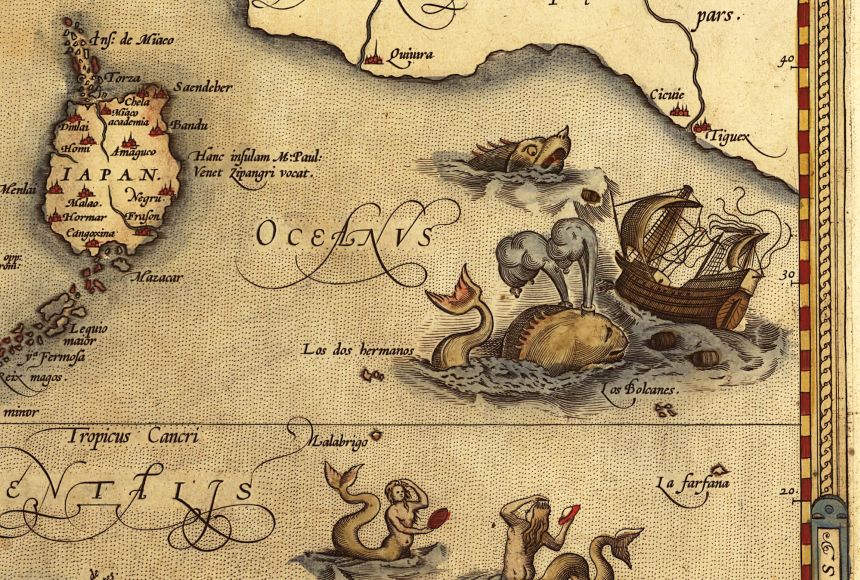
Here Be Dragons - Transgender Visibility and "The Others, Out There"
Who are “The others, out there”? Do they breathe fire?
And what do they have to do with International Transgender Day of Visibility?
Content Warning – this post may contain satire.
It can’t have escaped your attention that trans, non-binary and gender-non-conforming people are everywhere now. You can barely move for them. Go anywhere and you see them. The pub? Can’t get to the bar for all the trans people. Restaurants? Can’t get a table because of all the trans people. Beacon Hill? Can’t see the view for all the trans people. They’ve taken over the BBC, they’ve taken over NASA (probably), and they won’t stop until they’ve turned all the kids trans and filled every bed in every women’s shelter. You’re not safe but, more importantly, neither are your children.
Okay, so maybe you don’t actually see them first hand. But you’ve heard about them. You’ve read about them. They’re not in your street, your town, or your school. But you’ve been assured they’re everywhere else. Trans people have never been more visible. But admittedly, you’ve no idea when you last saw one, or maybe even if you’ve ever actually seen one.
This Trans Day of Visibility, I started out by thinking maybe we’d like to be a bit less visible right now. But actually it’s not us that’s visible. It’s the spectre of us. The threat of us. The ever-present danger of us. Biggest threat to women? Trans people. Biggest threat to kids? Trans people. Biggest threat to your safety and security? Well, okay, refugees in small boats, but trans people aren’t far behind. For such a small part of the population, we really punch above our weight.
Or do we? Maybe the biggest threat to women is the ongoing gender inequality that pervades so many aspects of our society. From the effectiveness of drugs tested exclusively on men, to the safety systems in cars designed around the average man’s height and weight. That and the crumbling NHS which is increasingly leaving them suffering for months on waiting lists rather than providing them the treatments and operations they need, or leaving them extracting their own teeth rather providing them with NHS dentistry.
And maybe the biggest threat to children is growing inequality and a broken food system, leaving children under-nourished but over fed, and as a result shorter but more over-weight than their European counterparts. That and the crumbling NHS which is increasingly unable to treat the illnesses they’re being lumbered with from ages unheard of previously. Not to mention the climate crisis which threatens existential-level dangers in their lifetimes.
But these are big, scary, structural problems. And tackling them requires big, brave, structural solutions, which would upset the old structures still benefitting the few who run them. Better to find a bogeyman, or a bogeytrans, and shout the age-old rallying cry “They’re coming for your children!” to distract people from the real dangers. These tactics have been used for centuries and it doesn’t matter if you’re scapegoating people who are Jewish, Black, Gay, Working Class, Migrants, Trans or any other marginalised group. Pick a relatively small population with less power than you and use this time-honoured visceral message to get the mob to turn on them.
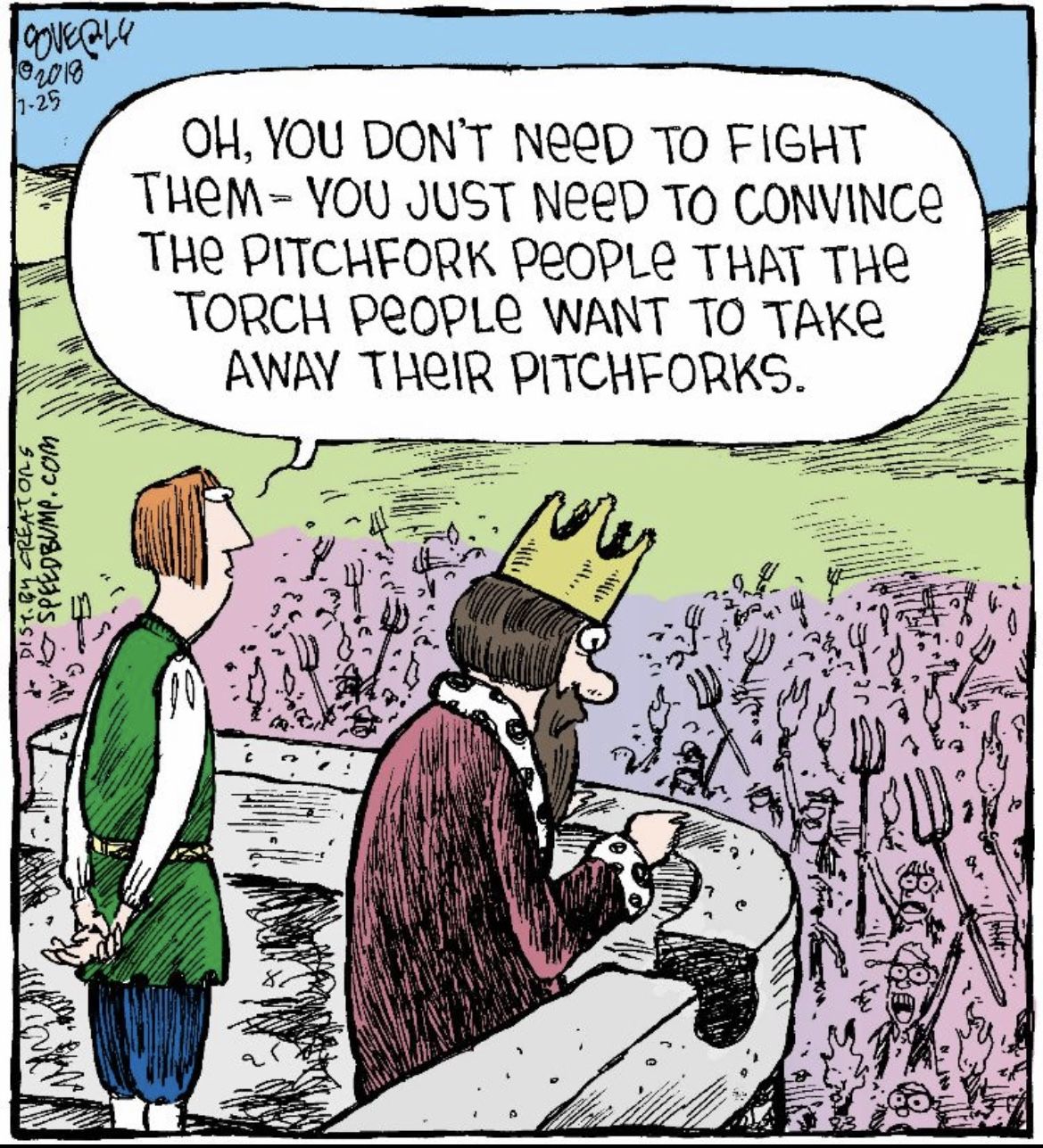
The method has two great advantages. Firstly you can turn marginalised groups against each other, so they spend all of their energy infighting, instead of fighting the people who oppress them. And secondly you can distract everyone else from looking at the real existential issues they face.
When the Irish “Yes” campaign were planning their strategy to get the public to vote for marriage equality, they sought the experience of campaigners in the US who had tried, and failed, to pass similar legislation in multiple states before finally starting to succeed. They explained that people see the world in 3 layers. “Me and mine”, “My community” and “The others, out there”.
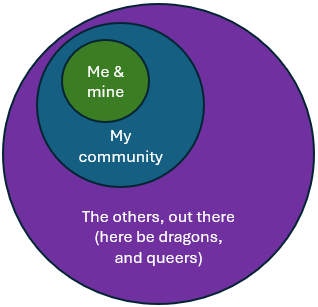
Those with gay people in their lives, in their “Me and mine”, overwhelmingly supported marriage equality. Most others saw it as an issue for “The others, out there” so didn’t have very strong feelings either way though had a vague tendency towards “live and let live”. But when scaremongering campaigns told them marriage equality would somehow pose a threat to their children or their families, their “Me and mine”, it was a powerful way of creating opposition. A big part of the Irish campaign was therefore about demystifying and normalising gay people. In many cases gay couples going door to door not to make rhetorical, political arguments, but simply to show voters who had never knowingly met gay people before that they weren’t so different to them and certainly didn’t resemble the demonic forces they’d read about. Maybe not even so different from their “Me and mine” group.
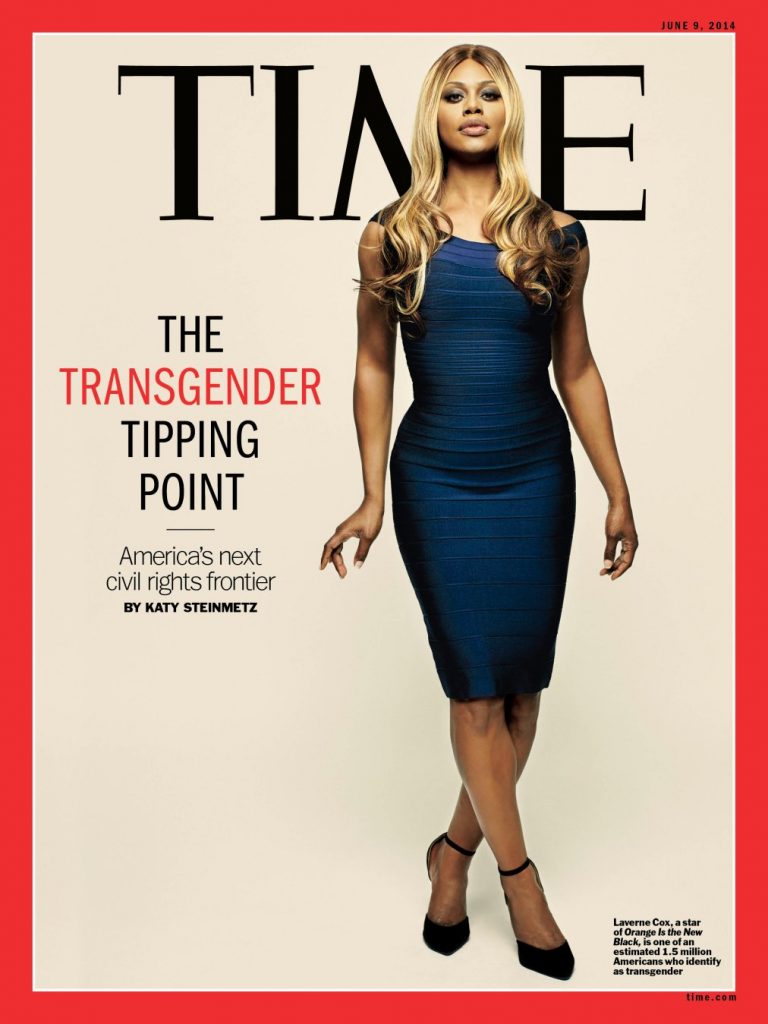
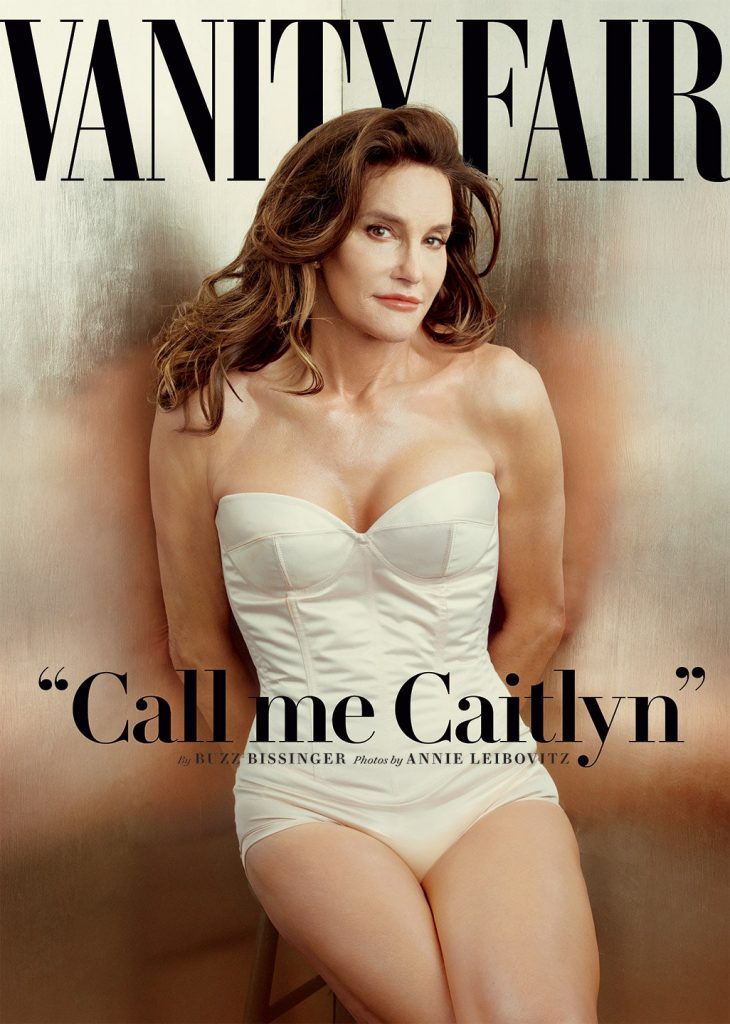
Since the so-called “Transgender tipping point” in 2014-15, when Laverne Cox and Caitlyn Jenner graced the covers of Time and Vanity Fair respectively to worldwide fanfare, we have seen a huge and growing backlash against our community. Fears of the unknown are stoked and we joined asylum seekers and refugees as the demons-de-jour for the right-wing press and politicians. As with talk of the terror of “small boats”, such has been the success of the campaign that the political and media liberal left, who you might expect to oppose these views, has failed to do so. In some cases they even join in the attack in order to appeal to voters.
In the face of so much hostility I’ve never felt more like staying at home and hiding. But it’s never been more important for us to be out there, being visible. Showing the world that whether we “pass” as cisgender, or not, whether we look exactly like everyone else, or not, we’re not the demons some would have you believe. And maybe if you want to make the world better and kinder and safer for women and children and your “Me and mine” there, are things we can all work on together instead.
Look out for me arriving on your doorstep any day now 😉
Footnote
In the early days of global naval exploration, mapmakers would often place monsters and other imagined creatures to marked unexplored areas, like those seen in Ortelius’s 1570 Theatrum Orbis Terrarum map.
International Transgender Day of Visibility is marked every March 31st, dedicated to celebrating transgender people and raising awareness of the discrimination they face worldwide, as well as a celebration of their contributions to society.
Featured map photograph from the United States Library of Congress.
King image by Dave Corley of speedbump.com

The attempted assassination of Saint Pope John Paul II
By Elena Leman-Torresi
As a component of my final-year module, PIC604: State, Violence and Terrorism, I was tasked to write a critical analysis of a terrorist attack. This essay prompted me to research and think more closely about the definition of a terrorist attack, the perceived legitimacy of an attack, and the different responses/approaches taken after the attack. I decided to research the assassination attempt on Saint Pope John Paul II in 1981.
In 1981, while making his regular rounds in St Peter’s Square, Vatican City, the then pontiff, Pope John Paul II was shot by two bullets from within the crowd. The perpetrator was Mehmet Ali Ağca. To this day, Ali Ağca’s true motives remain unclear and dubious. Ağca was a Turkish national and spent much time with the nationalistic group, The Grey Wolves. He claimed once that the attack on the Pope was for revenge for a previous seizure of a mosque (not linked back to the Vatican in any way) and for the glory of the Turkish nation. A second motive he declared was he was trained by the KGB to carry out this attack as Pope John Paul II was a firm anti-communist who regularly funded the independent trade union Solidarnosc in his home country of Poland (see Faunt, 2015, for details). Lastly, it is important to note that Ağca was subsequently diagnosed with severe anti-social disorders and behaviours and narcissist injuries. It can never be confirmed how much his mental illness was a factor in the attack.
While it is easy for Catholics and non-Catholics alike to condemn the violent act committed by Ağca, if this module has taught me anything, it’s that careful analysis of the response to the attack is equally as important as the initial media telling of the attack itself. I took particular interest in the relationship between the representation and response of the media to the shooting and public perceptions of terrorist attacks. Moreover, from Kearns et al (2018) I learnt that Muslim and Middle Eastern perpetrators are far more quickly labelled terrorists by the media and public at large and often discussion of their mental health issues and their grievances/motives are discounted or omitted, unlike their European/white counterparts. So: without condoning the actions of Ağca, the media’s initial lack of discussion of his mental health issues and his grievances may have led the public to form speculative and uninformed conclusions which in turn might have exacerbated public panic.
As a Catholic, I was also very intrigued by the Vatican’s response. While most larger states would likely have employed militaristic responses or adopted suppression tactics, the Vatican used judicial responses. Ağca was sentenced to life imprisonment with a minimum of ten years. However, what was unique about the Vatican’s response was the use of conciliatory tactics, seldom used by states. In line with Catholic social teaching, Pope John Paul II (who survived the attack) visited Ağca in prison in 1983 and forgave him. Following on from this, Ağca was pardoned by the Vatican and extradited to Turkey after 19 years in custody. While an incredible act of forgiveness and charity by the Pope, Ethan Bueno de Mesquita (2015) speculates that the Vatican City also potentially stood to gain collaboration with Ağca in other counterterrorism efforts.
I mentioned earlier that I was motivated to research this topic as I am Catholic. I should also add that I became fascinated by this assassination attempt after watching a documentary entitled Vatican Girl (2022) which focuses on the abduction of a young Vatican City citizen, Emanuela Orlandi. It is speculated that Ağca played an instrumental role in the planning and kidnapping of Emanuela. There is also the suggestion/theory that she became a victim in the broader subsequent considerations of statecraft and diplomacy between the Vatican and the outside world. My thoughts and prayers are with the Orlandi family.
The module prompted me to reevaluate my perceptions and definitions of terrorism, including an appreciation of its many complexities.
About me:
I am currently a final-year undergraduate student, studying History and International Relations. I first knew I wanted to study history academically during my GCSE history course. I have recently been elected chair of the Catholic Society for the upcoming term and my studies and my faith converge in a fascination with Church history.
Recommended further reading:
- Bale, Jeffery M. “The Ultranationalist Right in Turkey and the Attempted Assassination of Pope John Paul II.” Turkish Studies Association Bulletin 15 (March 1991): 1–65.
- Bueno de Mesquita, Ethan. “Conciliation, Counterterrorism, and Patterns of Terrorist Violence,” International Organization 59, no. 01 (2005): https://doi.org/10.1017/s0020818305050022.
- D’Orazio, Vito, and Idean Salehyan. “Who Is a Terrorist? Ethnicity, Group Affiliation, and Understandings of Political Violence.” International Interactions 44, no. 6 (August 2018): 1017–39. https://doi.org/10.1080/03050629.2018.1500911.
- “The Emanuela Orlandi Case: Ali Ağca and the Trail of the Gray Wolves.” District of Canada, September 7, 2020. https://sspx.ca/en/news-events/news/emanuela-orlandi-case-ali-Ağca-and-trail-gray-wolves-49771.
- Faunt, Raymond J. “The Assassination Attempt on Pope John Paul II: Foreign Denial and Deception?” American Intelligence Journal 32 (2015): 87–93. https://www.jstor.org/stable/26202139.
- Kearns, Erin, Allison Betus, and Anthony Lemieux. “Why Do Some Terrorist Attacks Receive More Media Attention than Others?” SSRN Electronic Journal, 2018. https://doi.org/10.2139/ssrn.2928138.
- Apple, R.J. “TRAIL OF MEHMET ALI AĞCA: 6 YEARS OF NEOFASCIST TIES.” NY Times, 1996. https://www.nytimes.com/1981/05/25/world/trail-of-mehmet-ali-Ağca-6-years-of-neofascist-ties.html.
- The Associated Press. “AĞCA ASSERTS K.G.B. AIDED IN POPE PLOT.” NY Times, 1983. https://www.nytimes.com/1983/07/09/world/Ağca-asserts-kgb-aided-in-pope-plot.html
The illustration is Papal Basilica of Saint Peter in the Vatican. Photo by Hoàng Vũ and courtesy of pexels: https://www.pexels.com/photo/papal-basilica-of-saint-peter-in-the-vatican-16594740/
From the Vice-Chancellor – March 2024

In my March newsletter: New Doctoral Training Centres, BUCS Big Wednesday, International Women’s Day, the Leicestershire Innovation Awards, the Vibrant and Inclusive Communities ambassadors, and the new brand campaign.

New Centres for Doctoral Training announced
This month UK Research and Innovation announced more than £1 billion of investment in new Centres for Doctoral Training (CDTs), which train researchers to address science-related problems for the benefit of society. I am delighted that Loughborough will lead the £20 million EPSRC CDT in Engineering Hydrogen Net Zero (EnerHy) and will be a partner in a further two: Offshore Wind Energy Sustainability and Resilience and Digital Transformation of Metals Industry.
Led by Dani Strickland, Professor of Electrical Power Engineering, EnerHy has been developed in partnership with Cranfield and Strathclyde universities and more than 60 industry and civic partners. EnerHy will allow us to expand our existing research and develop the skilled workforce needed to enable rapid growth in green hydrogen-related technology.
The CDT is also part of our ambitions for The Hydrogen Works – a strategic consortium led by Loughborough to drive skills, innovation and productivity to create a hydrogen superpower in the East Midlands.
The consortium is a partnership with the East Midlands Freeport and East Midlands Hydrogen, which will bring together academic experts and industry partners to make a significant contribution to realising the role that hydrogen will play in a sustainable future. It will drive an expansion of Loughborough University Science and Enterprise Park that will co locate a skilled ecosystem alongside incubation and manufacturing, and research and innovation. It will also provide a skills exchange with the East Midlands Institute of Technology Future Energy Skills Hub, which aims to create the advanced workforce in clean energy needed by industry.
Earlier this year, we were also announced as a partner in the Natural Environment Research Council CDT in Flood Risk. These CDTs show how we are collaborating in areas of research that have real impact to society.
The University has also launched a new research cluster in Model Based Systems Engineering which will receive funding direct from industry for PhD studentships, after being identified as the leading university in this emerging area.
This new funding equates to around 100 new Doctoral Researchers over the course of the respective programmes and a £30M investment in these research areas.
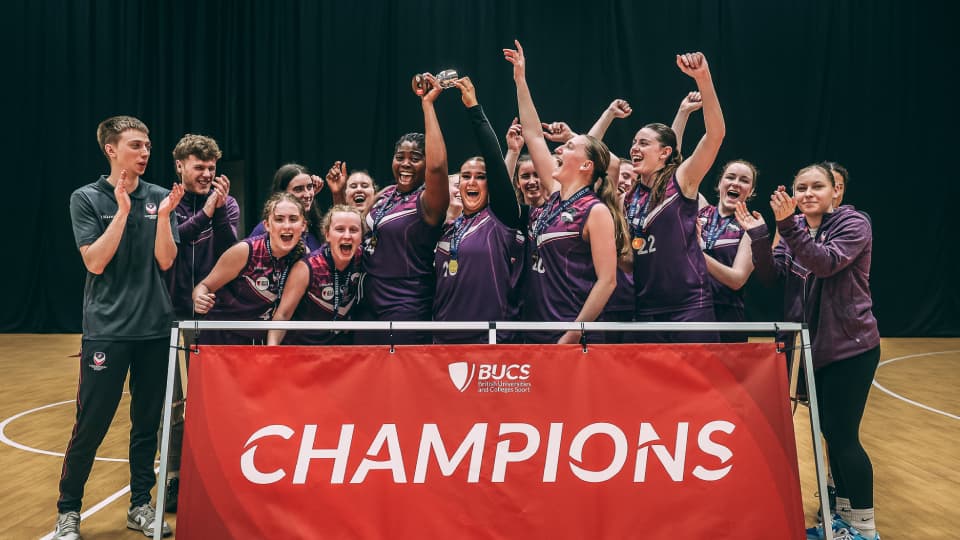
Loughborough hosts BUCS Big Wednesday
Campus was the epicentre of student sport this month when the University hosted BUCS (British Universities and Colleges Sport) Big Wednesday. The event saw more than 2,000 student athletes here, with their coaches and performance support staff, to compete in 57 finals across 16 sports, drawing a crowd of almost 2,500 spectators.
BUCS showcases the highest level of university sport, and Loughborough has been crowned overall champions for the last 42 years. It was fitting, therefore, for us to host the landmark event again this year, as we shall for the next two years.
By the end of the event, Loughborough had secured victories in men’s and women’s badminton, men’s and women’s basketball, men’s tennis, women’s netball and women’s football.
Hosting an event of this magnitude is a significant undertaking and its success is testament to colleagues across the University, the athletes, coaches, officials and support staff who were part of the competition, and more than 100 student volunteers from the University’s Coach and Volunteer Academy (CVA).
This event truly embodied our strategic aim of Sporting Excellence and Opportunity.
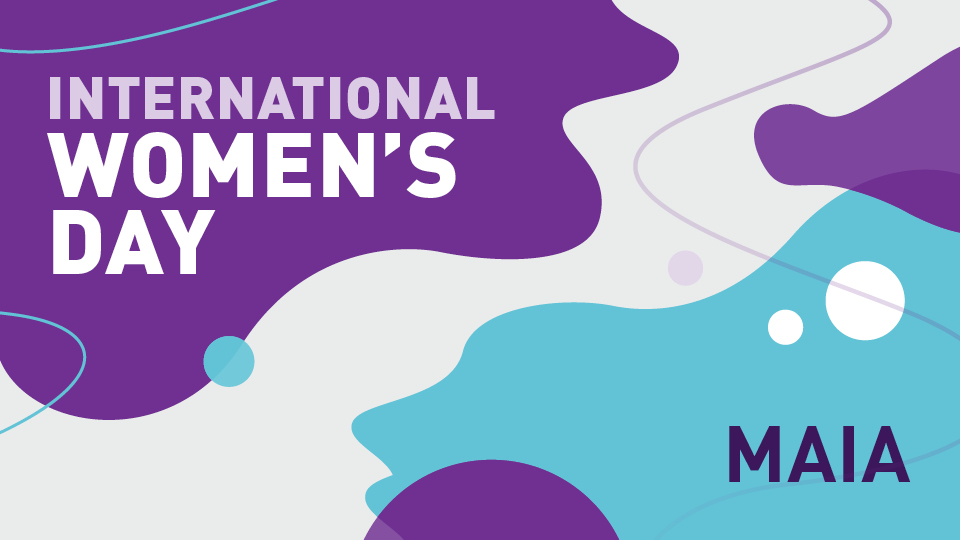
Celebrating International Women’s Day
This month we marked the annual International Women’s Day, with a range of events and stories to celebrate the social, economic, cultural and political achievements of women and to make a call to action for accelerating women’s equality. The event is an opportunity to mark progress made but also to highlight the erosion of women’s rights around the world, as well as the effects of gender violence and abuse.
Our dedicated webpage features all the events run by both the staff and student networks, as well as inspiring stories of women at Loughborough. This year, Loughborough Sport ran a series of events under the EmpowerHer banner, to provide opportunities for women and non-binary students and staff to conquer barriers to physical activity in environments where they can feel comfortable and supported.
The theme of this year’s event was inclusion, which resonates very clearly with our strategic theme of Vibrant and Inclusive Communities. Inclusion is a fundamental principle that should be woven into the fabric of our society. It is about ensuring that every voice is heard, every perspective is valued, and every individual is given the opportunity to thrive.
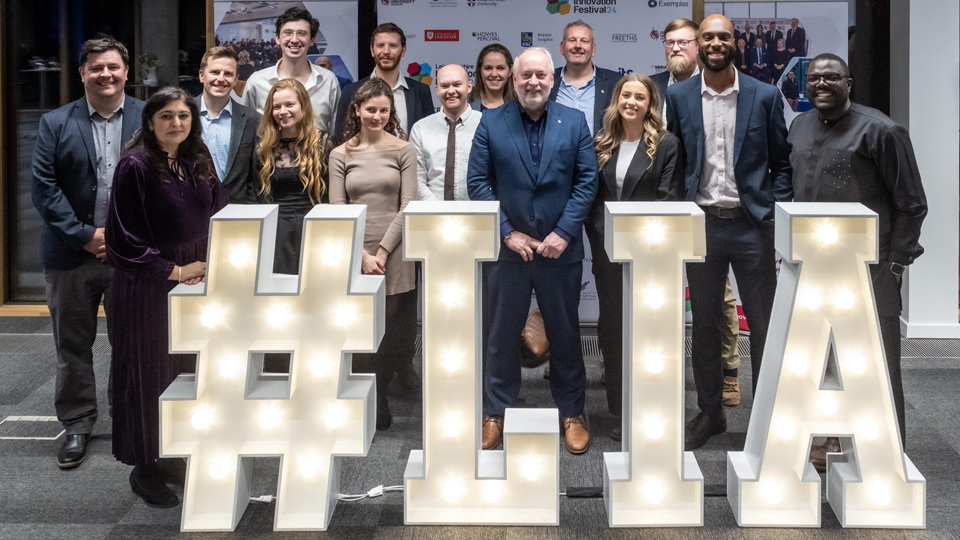
Three awards for Loughborough at innovation event
This month the University hosted the Leicestershire Innovation Awards at SportPark Pavilion 4 – the first building on campus, and one of just a handful in the UK, to have attained Passivhaus Sustainability status.
A record number of entries were made to this year’s event, with almost 100 nominations submitted, and I was delighted to see Loughborough come home with three awards. Two of the University’s winners were Loughborough graduate start-ups – both launched from LUinc., the University’s incubator on Loughborough University Science and Enterprise Park (LUSEP).
Moti Me, a physiotherapy-focused product to help children with disabilities, won the Innovation in Sport, Wellbeing and Accessibility category. The company was founded in 2021 by Katie Michaels, an Industrial Design and Technology graduate.
The Bug Factory, which was set up by Thomas Constant, who graduated from Industrial Design and Technology, received the Innovation in Food and Drink award. Thomas has created scalable, accessible and sustainable insect protein.
The third award, in the Innovation in STEM industries category, recognises the University’s pioneering work in the field of green energy. A team led by Professor Dani Strickland has developed the world’s first lead-acid battery-electrolyser, a low-cost system that makes it viable to use excess renewable energy to produce hydrogen gas. The innovation is being accelerated for use in renewable energy-powered microgrids that support the world’s poorest communities that have no access to electricity or clean cooking.
Our success at the awards is testament to the breadth of innovation among our staff and students. Congratulations to all the commended finalists and winners who showed real ingenuity and determination in addressing some of today’s most pressing challenges.
Vibrant and Inclusive Communities ambassadors appointed
Politics students Ghanim and Ahmad Muhammad Al-Muftah have been appointed as the University’s ambassadors for the Vibrant and Inclusive Communities strategic theme.
The theme ambassadors will help to enhance the University’s reputation and profile by acting as advocates for the University’s activities and achievements through their networks.
Ghanim and Ahmad will work closely with the theme’s Associate Pro Vice-Chancellors, Professor Rebecca Cain and Professor Emily Keightley.
Ghanim Muhammad Al-Muftah is a Qatari brand ambassador, goodwill ambassador and entrepreneur. He was appointed an ambassador for the 2022 FIFA World Cup and appeared alongside the US actor Morgan Freeman at the event’s opening ceremony. More recently he attended the FIFA Beach Soccer World Cup and attended the gala dinner alongside the FIFA President, Gianna Infantino, and Sheikh Rashid Al Nuaimi, President of the United Arab Emirates Football Association. Ghanim, who was born with Caudal Regression Syndrome, a disorder that impairs the development of the lower spine, is supported by his brother Ahmad.
Ghanim and Ahmad join alumnus Steve Varley who was named the ambassador for the Climate Change and Net Zero strategic theme in December 2023.

The World Can’t Wait campaign is launched
Our new brand campaign – to position ourselves as a bold, ambitious university that seeks to make change for a better world – has now been launched. You may have noticed the billboards and banners that have been put up on campus on the end of the Schofield Building and at the two main entrances to campus.
The campaign began in earnest mid-month with an advertisement in the Times Higher Education – an open letter from me asking the sector to collectively take a stand and change the narrative that’s currently so damaging to higher education. In my accompanying thought leadership article, I outline why the UK’s universities need to turn the tide by showcasing the wide-ranging impact we have on individuals, regions and countries worldwide.
The brand campaign has emerged from Project Reputation, one of the six strategic enabling projects. Project Reputation aims to distil and project our distinctive strengths and enhancing our reputation as a leading university.
Universities are operating in a very challenging environment at the moment. If we are to be financially secure and deliver value for our students and academic partners, research collaborators and policy makers, we all need to show the benefits that universities bring.
DRN2024 Drawing Repetition: Tracing Technology
11.00-13.00 (BST) 17 April 2024 [online]
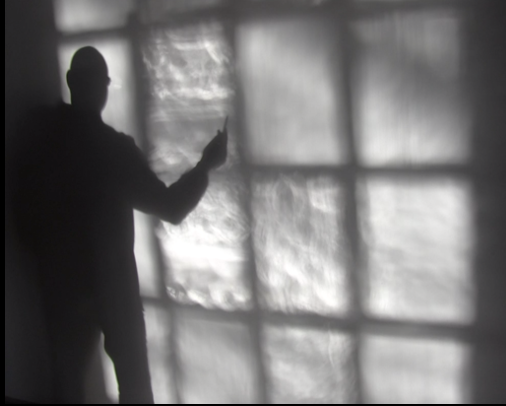
Tickets: https://buytickets.at/drawingresearchgroup/1207696
Tracing Technology is the second in the series of online DRN events exploring drawing repetition, hosted by the Drawing Research Group at Loughborough University. The panel brings together researchers investigating aspects of technology in relation to repetition within contemporary drawing practice.
Claire Anscomb will discuss recent developments in image-making processes that have repetition built into their design. A text-to-image AI generator outputs new images in the likeness of billions of images that already exist. What can further repetition bring forth from these images? The proposed presentation will tackle this question by examining a series of drawings made after AI-generated images.
The series focuses on AI-image generation processes and the lack of transparency around the sources of energy that fuel the data centres that are crucial for their operation. The process of making the images entailed training an AI image generator, Playform, on a series of images of power stations located in the same geographical areas as Microsoft’s data centres, and then reworking the results in DALL-E (owned by OpenAI, who use Microsoft’s data centres). From these outputs, five images were selected that represented key stages in the image generation process, which were copied meticulously through drawing. A sheet of carbon paper was kept beneath the drawing surface.
It will be proposed that the repetition of the AI-generated images through drawing, and the repetition of these marks through the carbon paper makes manifest the approximations that permeate the processes of AI image generation. Further, in addition to translating the formal properties of the generated images, it will be argued that this process, which recorded the labour and energy that went into the production of the drawn images embodies and foregrounds the physical resources that are obfuscated but necessary to produce the outputs of AI image-generation processes.
Dave Hawey’s presentation, will reflect on his use of repetition in his drawing process. Initially, his research-creation takes a technocritical stance to address his ambivalent relationship with technology. That is to say, Hawey is both fascinated and concerned about what technology enables, in terms of image creation and mediated aesthetic experience. In addition, he shares many authors’ point of view that abusive technology (and its hegemonic neoliberal capitalist ideology) is causing serious social, psychological, and environmental consequences. As these ideas inspire the aesthetics and narratives in Hawey’s drawings, he extensively uses repetition as a fundamental principle. In this presentation, Hawey aims to explore “How does repetition within the drawing process provide insight into the relationship with technology?” As a case study, Hawey will analyze the drawing process from his recent work “Tree of Life” by looking at three uses of repetition: as a crafting method, a communication method, and a meditation method. In this sense, he will first show how the repetition of tiles, lines, and patterns suggests perceptual/aesthetic effects (e.g., a sense of structure, rhythm, calm, predictability, illusion, attention). Then, he will show how he uses repetition to communicate meanings (e.g., denotative, connotative, allegoric) such as anxiety regarding the recursive and rationalistic nature of the technological world. Finally, as the repetition of the same gestures helps Hawey enter a meditative and soothing flow, he reflects on its beneficial psychological effects on dealing with his relationship with technology.
Hilary Judd will discuss how using a typewriter as a drawing machine is inherently repetitive. Working with the limitations of a machine designed for writing to create imagery promotes creativity; the restrictions of the carriage, the marks and shapes that can be made by certain keys, blurring, smudging, and overlaying to build up areas of density, light and shade. A laborious yet mediative process.
The project began as a ‘warm up’ to start a studio day. Drawings posted between long term collaborators, received, and returned with new marks from the other’s studio. The collection of drawings we have amassed is the result of habitual behaviour, a weekly practice of drawing and communicating.
Judd will present the latest typewriter drawings that explore notions of caring and the passing of time. The repetition of daily rituals, frustration, incremental goals and feeling like a ‘job’ of work connects very closely to the drawing process. Stuckness – being stuck in a domestic environment can fuel the desire to be creative. The sound of the strike of metal on paper feels productive. Small characters build to create an expressive image. The time-consuming nature of this drawing process inspired a series of eight pairings of drawings around caring that became a large A2 artist book called ‘The Trick’. Being a mother/caring for a mother can feel like a trick, one in which you need the help and support of others, often with starkly unequal gender divides. The book necessitates 2 people to work together in order to reveal the drawings.
The event will be chaired by Lucy Brennan.
Biographies
Claire Anscomb is a philosopher and artist. She was the 2021-22 British Society of Aesthetics Postdoctoral Fellow in the Philosophy Department at the University of Liverpool. Since September 2022, she has been a Lecturer in Fine Art at De Montfort University.
Dave Hawey has been a professor of digital art and design at the School of Digital Arts, Animation and Design (UQAC) for the past 16 years. He did his Master of Arts on the Japanese aesthetics in his digital painting process. He did his doctoral research in design on the practice of artist-developers working in the industry, to highlight their professional skills and reflective design process.
Hilary Judd [Carriage return] began in 2018 as a postal exchange of typewriter drawings with myself and artist Lucy-May-Schofield. Initially, a call and response, we have since created art works, connecting to themes exploring our lives and experiences. The project has unveiled new opportunities to extend the traditional remit of artistic practice.
Lucy Brennan is an artist and doctoral researcher at Loughborough University.

Clear space, clear mind

From overflowing desks to dishes piled in the sink, the clutter around us can weigh heavily on our minds, leading to increased stress, decreased productivity, and a sense of overwhelm.
Verywell Mind noted that: “To the brain, clutter represents unfinished business and this lack of completeness can be highly stressful for some people.” Clutter and mess can create feelings of anxiety but by cleaning and organising, we can create a more relaxing environment that helps us to feel calm and focus on daily tasks.
Having dust and dirt settle in our work and living space can also aggravate our respiratory system, so clearing up our space also clears the air that we breathe.
Benefits of cleaning and decluttering:
- Helps you gain a sense of control over your environment
- Provides a sense of accomplishment and satisfaction which translates into motivation
- Can reduce feelings of stress and anxiety
- Can reduce fatigue and improve concentration
Challenge yourself to declutter your workspace and home
- Start small – Set aside dedicated time each day to tackle a specific area, whether it’s your desk, kitchen, or living area. Break tasks into manageable chunks to prevent overwhelm and celebrate accomplishments along the way.
- Set a timer – Set a timer for 10 or 20 minutes and tidy as much as you can in this time, once the timer stops, you can relax. This can help if you feel overwhelmed and are unable to devote much time to cleaning.
- Ask for help – You might be in a situation where you feel like cleaning is not a task you can tackle alone, in this case, consider asking friends or family to help you.
- Donate things you don’t need – Giving to others can also boost your happiness and create a sense of reward.
- Make it fun – Listen to upbeat music or a podcast, take before and after pictures of your space, and treat yourself for working hard.
- Aim to make decluttering an ongoing practice – Regular maintenance is key to sustaining a clutter-free environment and reaping the mental health benefits it offers.
When working in shared office space, it’s also important to be mindful of other people’s wellbeing too. If you have been working on a hot desk or using a shared space, make sure you leave it clean and tidy for the next person to use.
A great method to follow for decluttering is Marie Kondo’s ‘KonMari Method’ which encourages discarding items that don’t “spark joy” and tidying by category rather than by location. If you want to see the KonMari Method in practice, check out the Netflix series ‘Tidying Up with Marie Kondo’.
Some members of Loughborough University staff discussed their thoughts on decluttering:
Sarah Van-Zoelen, Specialist Occupational Health and Wellbeing Nurse Manager commented: “I love declutter dollies, I find that I cannot be effective, focused or be able to relax if my environment is messy and cluttered. We all live with lots of stuff, but there is definitely a ‘tipping point’ when things get out of hand and the only way to rebalance is to sort the environment that I live and work in.”
Stephanie White, Development Manager (Trusts and Foundations) said: “Selling some of my clothes and things on places like Vinted has also made me more mindful of what I buy going forward, and improved my wellbeing as I can see a clear difference in my living space by removing the clutter.”
Sarolta Batki, People Development Officer at Loughborough Sport, also commented: “I have been involved in an organised office clear up more than once. Getting together and making decisions on where to store what, how to use the storage space, what needs getting rid of, what could we buy/replace in the office to help with work/productivity, even hoovering up and cleaning the desks together is really empowering.
“I mean this in the sense that for a lot of your job, you are told what to do – but having some autonomy on making your workspace comfortable and nice for yourself is at least giving you some control and is hugely beneficial for your wellbeing at work.”
Remember that there may be times when things won’t go as planned and you might not be able to tidy up, so make sure you have other tools that you can use to destress and unwind. You can find self-care tips on our stress awareness blog.
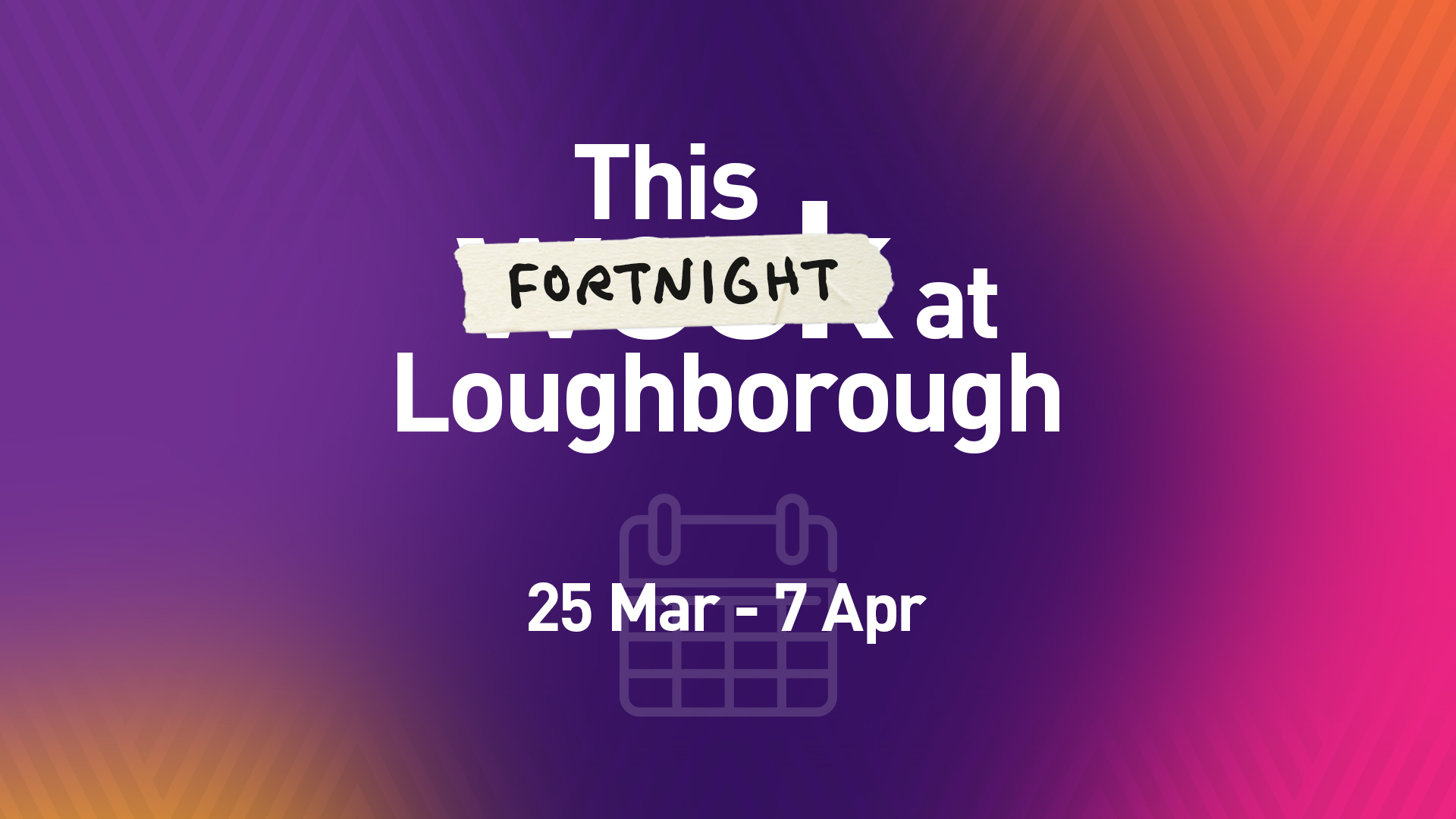
This Week at Loughborough | 25 March
Spring Staycation:
Academic Language Support Service Workshops
25-26 March 2024, 10am-12.30pm & 12.45pm-3pm, EHB205
ALSS will be running two workshops across both days. You can come along to just one or both. Registering for both the morning and the afternoon session is encouraged. Drinks and Easter treats will be served at approximately 12pm. If you are coming for the whole day, don’t forget to bring your lunch!
International Students’ Employability Day 2024
25 March 2024, 12pm-4pm, Stuart Mason Foyer
Join us for an exciting in-person event in the Stewart Mason building on campus. This event is specifically designed for international students, offering a unique opportunity to network, gain insights from international alumni and explore career prospects.
Chaplaincy event: Waiting for Easter- the journey to the cross
26 March 2024, 2pm-4pm, EHB First Floor
Come and reflect on the journey Jesus took from his arrival in Jerusalem, to his crucifixion a few days later. We will use prayer, art, music, silence, and storytelling to explore this important week in the Christian calendar and end with traditional English Easter refreshments, including Hot Cross Buns. All welcome.
Trip to historic Oxford – SOLD OUT
27 March 2024, 9am-6.45pm, Pick up from Wolfson School/Amber Rooms
Oxford, The City of Dreaming Spires, is one of the most famous cities in the UK. Known the world over for its University. For over 800 years, it has been a home to royalty and scholars. Nowadays, the city is a bustling cosmopolitan town. With its mix of ancient and modern, there is lots to do including many historic buildings, colleges or museums as well as a vibrant shopping experience.
Easter Staycation – Origami Jewellery
28 March, 1pm-3pm, Room 63108 (Edward Barnsley Building)
During this engaging workshop, you’ll learn the ancient Japanese art of origami and how to transform delicate paper folds into stunning wearable pieces. From elegant earrings to charming pendants, let your creativity soar as you craft unique accessories to adorn yourself or gift to loved ones.
Easter Bunny Bingo
1 April 2024, 1pm-3pm, Granby Common Room
This is an event that you won’t want to miss. Easter Monday is a public holiday in the UK and is a day that families spend together. Come along for a game of bingo, a free buffet lunch, music and more. The top bingo prize will be a £30 Amazon voucher.
LSU Easter Egg Decorating Competition
4 April 2024, 11am-1pm, LSU Council Chamber
Come along for an Easter Egg decorating competition with a prize awarded to the best decoration!
General:
Neuromorphic technology: A giant leap for AI
26-28 March 2024, Online
- 26 March: 9am-5pm
- 27 March: 9am-5.15pm
- 28 March: 9am-5.40pm
This online event will convene a community of world-leading international researchers and innovators working on cutting-edge neuromorphic hardware and brain-inspired algorithms, pivotal for the future of AI and computing in the UK.
Health From Cradle to Grave: Birthing Chair to Death Couch
27 March-23 April 2024, 12pm-2pm, Martin Hall Exhibition Space
An exhibition highlighting the work from English at Loughborough University’s Health Humanities Research Network. The exhibition’s themes translate and distil high-quality research on health, society and culture across time and space into material objects, art, poetry, life writing, and literature.
Inspiring Minds: Business and Economics
4 April, 9.30am-4pm, James France
Inspiring Minds is Loughborough University’s series of taster days for Year 12 students. It’s an excellent opportunity to learn more about the options available at the University and how to get there.
Inspiring Minds: STEM
5 April 2024, 9am-4pm, Sir David Davies
Inspiring Minds is Loughborough University’s series of taster days for Year 12 students. It’s an excellent opportunity to learn more about the options available at the University and how to get there.
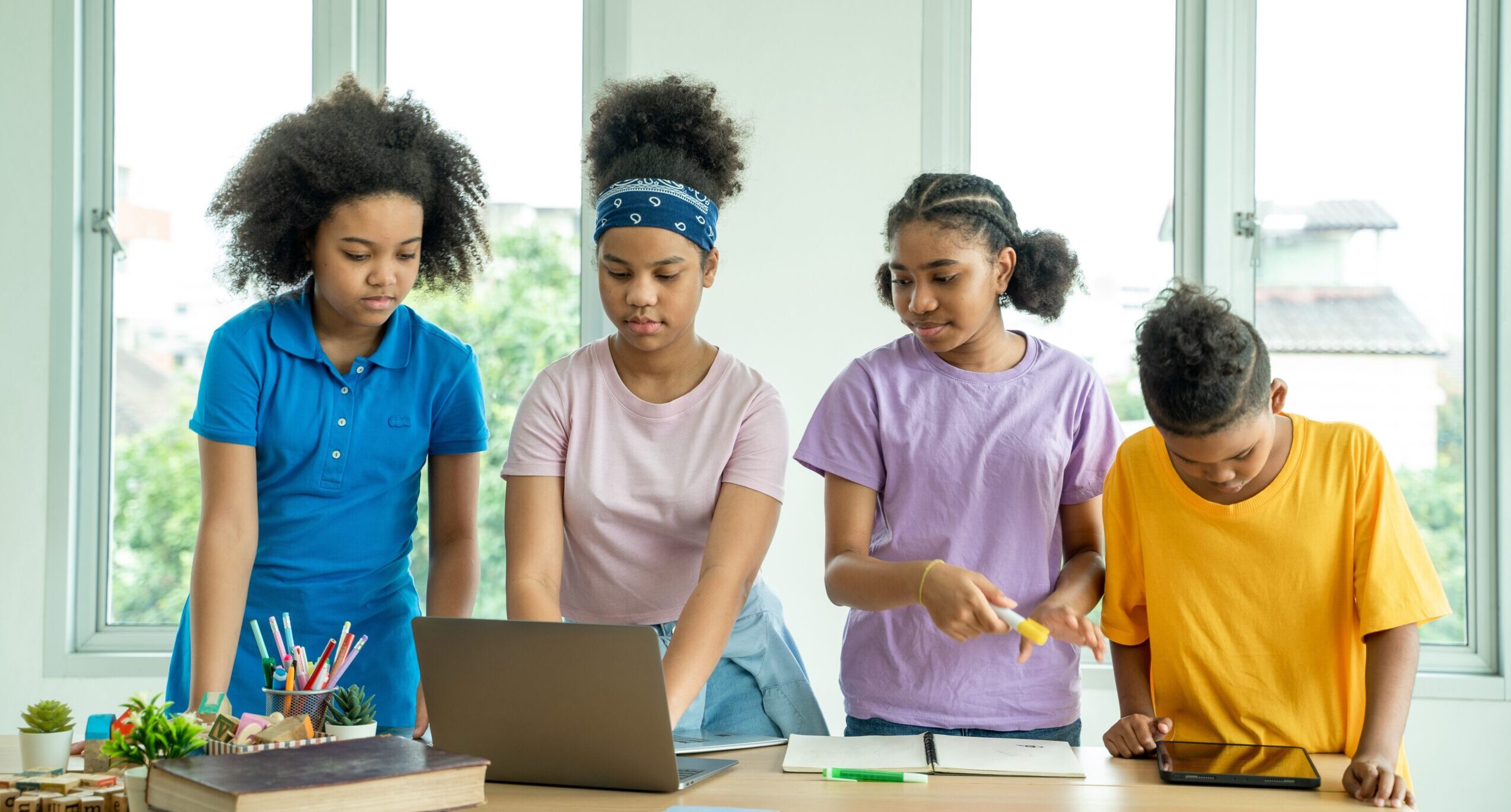
The Launch of the LUMEN Curriculum
Written by Dr Colin Foster. Colin is a Reader in Mathematics Education and interested in educational design in mathematics. He is the Director of the Loughborough University Mathematics Education Network (LUMEN), and Lead Author of the LUMEN Curriculum. There is a link to LUMEN at the end of this blogpost. This article is edited by Dr Bethany Woollacott.
Introduction
Over the last few years, the principal focus of the Loughborough University Mathematics Education Network (LUMEN) has been on designing a complete, fully-resourced, research-informed, free mathematics curriculum for schools. We’re very excited that this is now complete and available on the LUMEN website. In this blogpost, I will outline our thinking behind these resources, as explored in more detail in our paper on the design principles and our more recent paper on the challenges of applying some of these principles (both linked at the end of this blogpost). I will also explain what the LUMEN Curriculum looks like and how we envisage it being used.
Why more mathematics teaching resources?
The world is awash with mathematics teaching resources, so what is our excuse for creating yet more? Indeed, some of the resources out there are of exceptionally high quality and have been very influential in our work. However, the majority of what is freely available online is low-quality. Many busy teachers sit up late at night trying to separate the diamonds from the glass. Even if they manage to find some high-quality resources for tomorrow’s lesson, there is the problem of coherence: “a collection of great tasks does not necessarily add up to a great collection of tasks”. A whole bag of individually great resources does not necessarily provide a great collective experience for students.
“A collection of great tasks does not necessarily add up to a great collection of tasks”
Some schools avoid this endless search for individual resources by purchasing a commercial scheme, such as a set of textbooks. However, these materials are often also perceived to be of poor quality, and they are rarely informed by research or trialled in real classrooms with real teachers. Although they present with a superficial consistency in terms of page design, on closer inspection they may be no more coherent than the individually-sourced materials. Ideas are often poorly connected and organised to support students’ learning across different topics and successive school years1.
Research-informed, free and editable
In the Centre for Mathematical Cognition, we are fortunate to have the largest team of researchers focused on mathematics education than anywhere in the world. This has enabled us to draw on research from across mathematics education, cognitive science and educational design to produce a highly research-informed Curriculum1.
“In the Centre for Mathematical Cognition, we are fortunate to have the largest team of researchers focused on mathematics education than anywhere in the world.“
Funding from Research England has enabled us to make these resources available completely free of charge. School mathematics department budgets are tight, and it can be frustrating when a department’s main expense is a set of textbooks that perhaps they do not even like very much. The LUMEN Curriculum is completely free and easy to access – with no annoying login required.
Another unique feature of the LUMEN Curriculum is that it is completely editable (Creative Commons CC BY NC SA), giving teachers agency to edit the resources to suit their context. This contrasts with commercial resources, which are locked as pdfs or printed pages, leaving teachers powerless even to correct egregious errors. Teachers often say about materials, “I like it, but…”, suggesting that they would use it or like it better if they could change something. It is not just about quality but suitability for the context. Most educational resources are “Take it or leave it“. The LUMEN Curriculum is “Take it or leave it … or adapt it and improve it”, allowing teachers to make changes however they wish.
Editability also raises exciting possibilities for schools to easily trial different versions of the Curriculum with different classes. For example, we use colour purposefully throughout many of the units in the Curriculum. But how effective is this? Schools can easily ‘Select All’ and change everything to black, and trial this version with one class against the colour version with another class, collecting local evidence of ‘what works’ in their context.
What does the Curriculum actually look like?
We have tried to make the materials easy to read and pleasant to look at while applying principles from cognitive science. For example, we have used images where they support learning but have avoided redundant pictures that could be distracting2. We also include lots of ‘Discuss’ boxes, which are intended for the teacher to use with the whole class, with students possibly responding on mini-whiteboards. These are interspersed with ‘Try this’ boxes for students to work on independently.
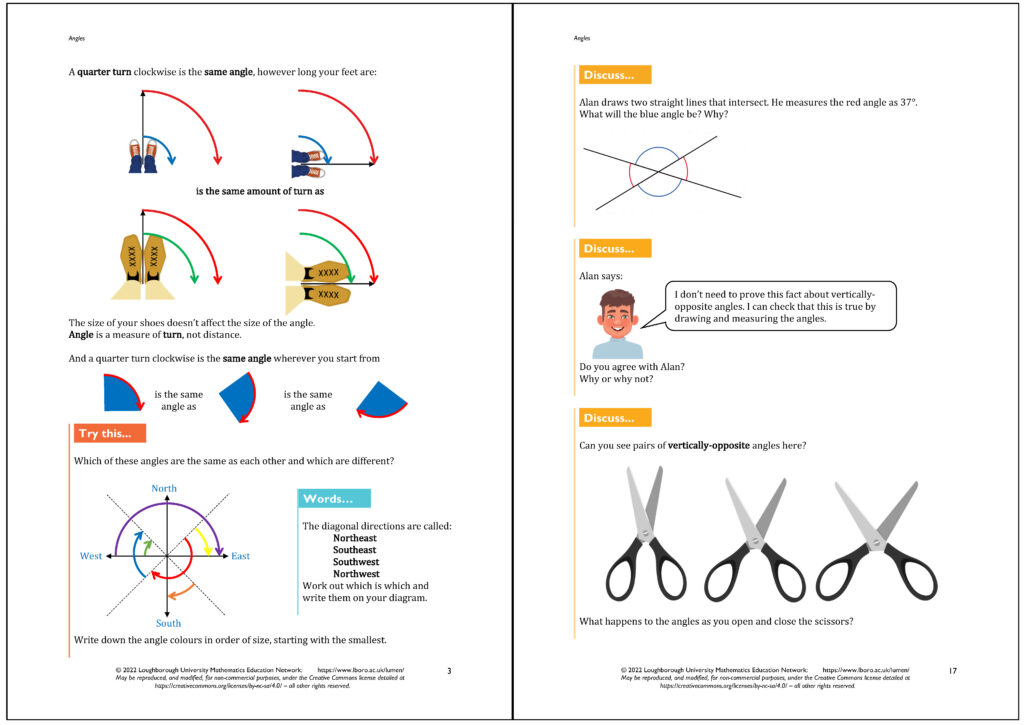
We use a fixed set of diverse, friendly student characters throughout the materials. These characters often model being wrong. We want students to see that making mistakes is OK and that mistakes are something to learn from. Often the fictional students disagree about things and the real students have to sort out what is going on. Or the fictional students do things in different ways, enabling the real students to make sense of what the fictional students have done, and decide which approach they prefer in different situations and explain why.
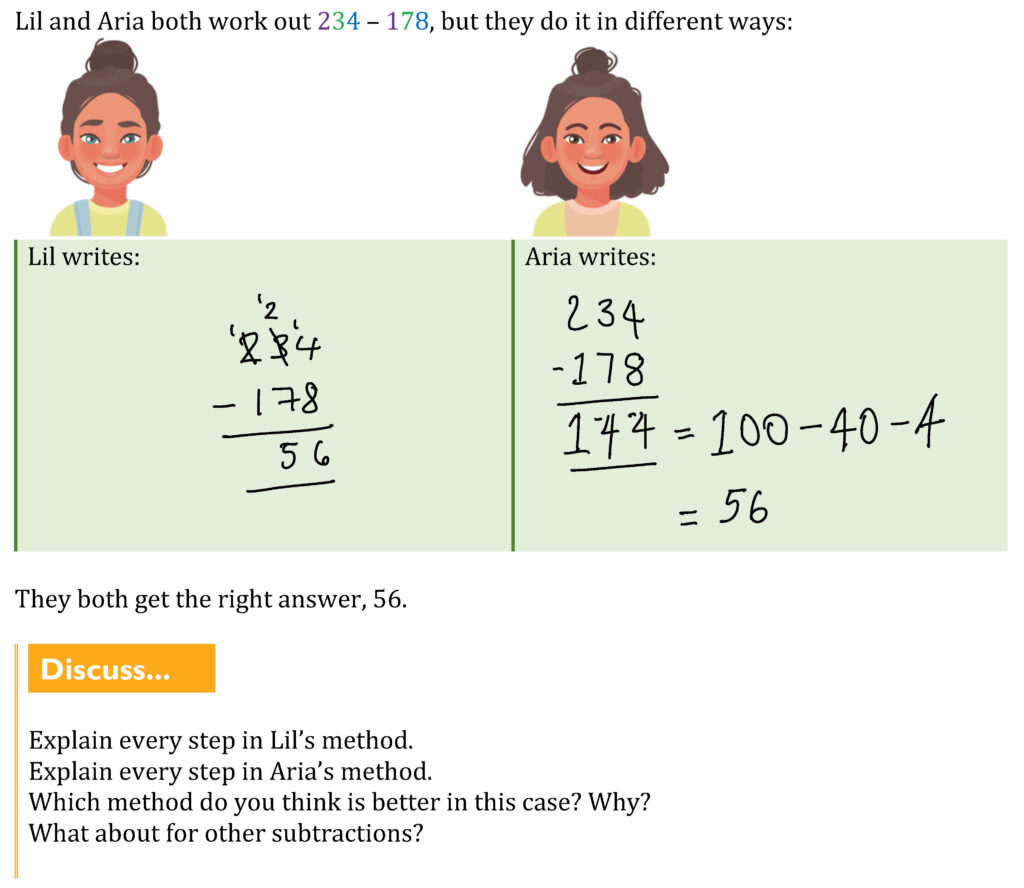
Throughout the Curriculum we use the number line as our primary representation. We have written in detail3 about why we use this in preference to other common representations of number, and we argue for the advantages of a single main representation of number, rather than lots of switching about. We see multiplication as stretching the number line and multipliers as perhaps the biggest single idea across the Key Stage 3 (age 11-14) curriculum.
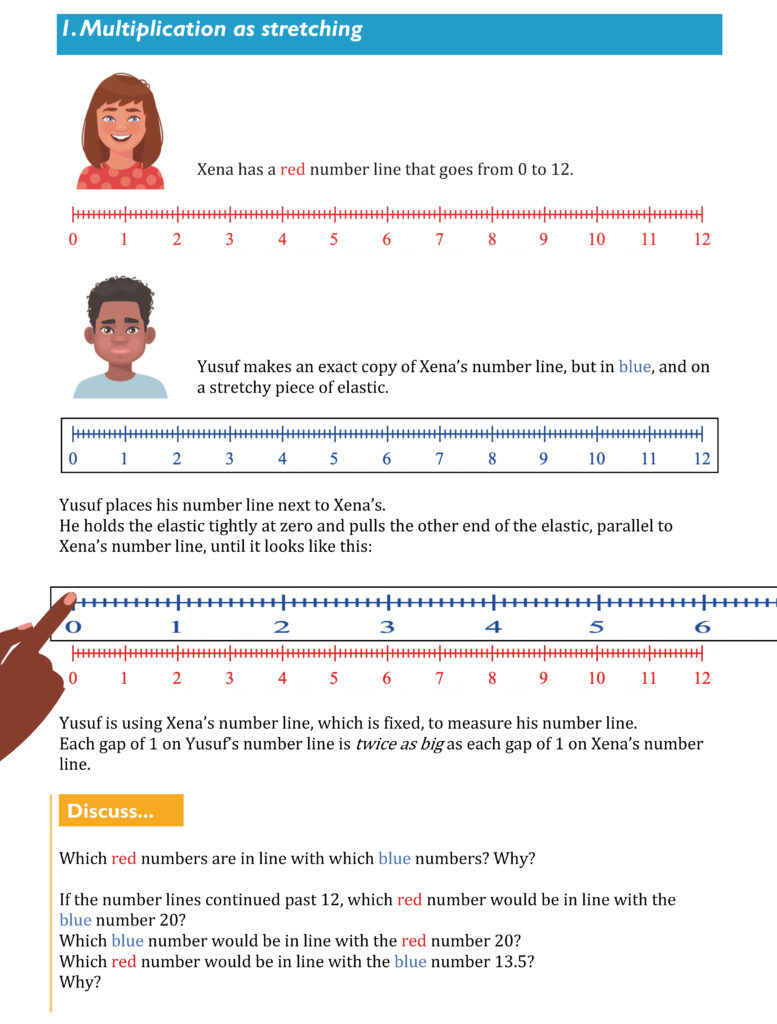
Although we build on the foundations students have laid at primary school, we start a long way back, to cater for students who are not yet secure with important ideas. We anticipate that teachers will make the judgement to omit things that are too basic for their students, but we would rather provide too much than leave teachers searching for supplementary material to fill gaps.
The availability of manipulatives and technology varies dramatically from school to school, and we have approached this by making almost everything do-able without. However, we have often suggested where practical equipment can be used, and we link to free or widely-available software such as GeoGebra or spreadsheets for many of the tasks. In particular, the main Algebra units are highly based on the free Grid Algebra software, which is easily accessible from any browser. (Links to Grid Algebra and the recent CMC blogpost on Grid Algebra are below).
Please spread the word about the LUMEN Curriculum among schools and teachers and let us know what you think using the link below!
The development of the LUMEN Curriculum has been funded by Research England through the Centre for Mathematical Cognition.
References
1. Foster, C., Francome, T., Hewitt, D., & Shore, C. (2021). Principles for the design of a fully-resourced, coherent, research-informed school mathematics curriculum. Journal of Curriculum Studies, 53(5), 621–641. https://doi.org/10.1080/00220272.2021.1902569
2. Foster, C., Woollacott, B., Francome, T., Shore, C., Peters, C., & Morley, H. (2024). Challenges in applying principles from cognitive science to the design of a school mathematics curriculum. The Curriculum Journal. Advance online publication. https://doi.org/10.1002/curj.249
3. Foster, C. (2022). Using coherent representations of number in the school mathematics curriculum. For the Learning of Mathematics, 42(3), 21-27.

This Week at Loughborough | 18 March
Sustainability Fortnight:
Dr.Bike Maintenance Session
19 March 2024, 11am-2pm, Outside EHB
This session is a chance for you to seek advice on taking care of your bike, receive repairs, and pick up any accessories which might be useful.
Biodiversity Talk with the University Gardens Team
19 March 2024, 1pm-2pm, EHB110A
An in-person talk with the Assistant Gardens Manager, Rich Fenn-Griffin about biodiversity, how it affects us on campus, and how we can act to preserve the natural world for future generations.
Action Food Drive
20 March 2024, Across student halls on campus
Students in halls are encouraged to start collecting food items from 4 March to be donated to charity. On 20 March, the food items will be collected and delivered to local food banks for people who may not otherwise have access to food.
Green Careers Workshop and Panel
21 March 2024, 11am-2.30pm, WAV041 (Wavy Top)
The workshop (11am-12.30pm) will include a brief introduction to sustainability and the climate crisis, the future of green jobs, skills for the future, and purpose-driven careers.
It will be followed by a panel (1.30pm-2.30pm) including guest speakers with varying employment backgrounds, who can offer valuable insights into the future of work and offer advice to jobseekers.
Fruit Routes Barefoot Holi
21 March 2024, 12pm-5pm, Barefoot Orchard/Pilkington Library
Come along for a spring bonfire and celebration of colour. There are three different elements to this event. You are welcome to attend any or all of the events on the day.
Film Screening: 50 years of Litter on Skye
21 March 2024, 6pm-8pm, Edward Herbert Building
This event will present the work of the 50 Years of Litter on Skye team. It will highlight the extent of litter on these remote coastlines, and untangle the unseen connections that communities who are geographically isolated from Skye, such as those in Loughborough, have with the litter that has been washing ashore on the island for over half a century.
Food for Thought: A fresh perspective on food with Gregg Wallace
22 March 2024, 12.30pm-2.15pm, The Lounge (LSU)
Join the Sustainability Team, MasterChef judge Gregg Wallace, and other industry experts for a lunchtime panel discussion on the future of food and how going vegan, eating seasonally, meal prepping and considering the impact of food waste, can all help support the future of our planet.
General:
University Chaplaincy Interfaith Iftar Meal
18 March 2024, 6.30pm-8.30pm, EHB Atrium
The University Chaplaincy invites you to an Interfaith Iftar Meal to mark the breaking of fast during the Islamic holy month of Ramadan.
Students and staff of all faiths and none are invited to attend this special meal and to learn more about Ramadan and why Muslims fast.
Student Live Lounge
18 March 2024, 7.30pm, The Lounge (LSU)
If you enjoy live music and discovering new artists then join us for a special, laid back evening as we present the best talent from Loughborough University. If you’re a student and you would like to perform at this event then you need to register your interest in advance as there are limited slots available.
Postgraduate Accommodation in Loughborough Q&A Webinar
19 March 2024, 12pm-1pm, Online
Come along for a webinar and Q&A session on postgraduate accommodation on and around the Loughborough campus. Whether you’re interested in the halls of residence or renting University-approved student houses in Loughborough itself, students and staff will be on hand to answer your queries.
Higher Education Smart Campus Associations’ (HESCA) annual conference
18-19 March 2024, 9.30am-6pm (18th) & 9am-4pm (19th), Holywell Park Conference Centre
Loughborough University is pleased to be hosting the Higher Education Smart Campus Associations’ (HESCA) annual conference for 2024. This is an excellent opportunity to collaborate, share experiences, and learn from the work of other higher education institutions and various suppliers and industry experts for smart campus technologies.
Quorn Food Tasting
19 March 2024, 11.30am, EHB Atrium
Quorn will be showcasing bitesize portions of their alternatives to meat dishes, offering you the opportunity to understand more about food choices and carbon emissions, as well as grabbing a free sample. Dishes include: ‘Meat half way’ chilli, new vegan burger, and a vegan beef curry.
Futurecasting Workshop with Studio Hyte
19 March 2024, 3pm-6pm, Design School
Are you interested in futures thinking, science fiction, creative writing, sustainability, or speculative design? Come along for an introductory session to futurecasting where you will gain skills in defining, describing, and developing plausible future scenarios related to climate justice.
Postgraduate Accommodation in London Q&A Webinar
20 March 2024, 12pm-1pm, Online
Come along for a webinar and Q&A session on postgraduate accommodation at the London campus. Students and staff will be on hand to answer your queries about the options available, what it’s like to live in one of the world’s most diverse and vibrant cities and more.
IAS Seminar: Engaging the Entire Humanitarian Clean Cooking System: Unlocking Institutional Scale
20 March 2024, 12pm-1pm, International House/Zoom Webinar
This seminar will explore the state of the humanitarian energy sector, the role of clean cooking, and how the institutional scale may unlock more efficient and effective pathways to the completion of United Nations Sustainable Development Goal 7 – sustainable energy for all.
Opportunities in China
20 March 2024, 2pm-4pm, U.122 (Brockington Extension)
Are you interested in living and working in China? Ambright Education Group are receiving applications from final-year students at Loughborough for the role of Assistant English Teacher in Chinese schools from September 2024 to June 2025.
Writing funny characters for TV, radio, theatre and stand-up
20 March 2024, 2pm-5pm, SMB103 (Stewart Mason)
Join LU Arts for this writing workshop with experienced guidance from Carolyn Scott-Jeffs and Tom Stevenson. There will be an exploration of character comedy, followed by set exercises on creating new characters, developing existing characters, and how to make them funny in the context of your story. The session will conclude by sharing examples of work and receiving feedback.
SDCA Postgraduate Pathways
20 March 2024, 5pm-7pm, LDS 0.17 (Design School)
Come along to this event to discover more about postgraduate study in the School of Design and Creative Arts (SDCA). Hear from the Dean of the SDCA, speak with current postgraduate students, and meet the postgraduate programme leads to find out about design and creative arts master’s degrees and PhD opportunities.
This event is open to both current SDCA students and those studying within other schools.
Breakfast Study Cafes
21 March 2024, 8am-11am, DAV1109 (Sir David Davies)
Drop in for a morning study session, a free hot drink and some baked goodies. Use a study planner to set goals for the session and use the Pomodoro technique to help you achieve these during the first two sessions (8am-9am and 9am-10am). In the third session (10am-11am) you can work at your own pace.
National Theatre Live: The Motive and the Cue
21 March 2024, 7pm-10pm, Cope Auditorium
Mark Gatiss and Johnny Flynn star as John Gielgud and Richard Burton in their infamous Hamlet rehearsal period in the 1960s. Filmed live on stage at the National Theatre, ‘The Motive and the Cue’ is a new play by Jack Thorne, directed by Sam Mendes.
Exhibition: By some means or Other
28 February-22 March 2024, 12pm-2pm, Martin Hall Exhibition Space
This exhibition brings together five artists selected to take part in the national Artists Access to Art Colleges (AA2A) artist residency scheme in the School of Design and Creative Arts at Loughborough University. The work on display showcases a selection of their diverse projects ongoing since October 2023.
Careers:
International Futures- UK Etiquette and Professional Behaviour
18 March 2024, 6pm-7pm, MS Teams
As an international Student understanding UK Etiquette and Professional behaviour, is essential to be successful in your Career Journey. This session will help you navigate and understand expectations about professional behaviour in the workplace.
Skill-Up: Business Planning
20 March 2024, 6pm-7pm, Start-Up Lab (STEMLab)
This week’s session will help you to examine all aspects and areas of your enterprise and what key considerations should be given for short and long term growth.
Master’s Futures: Postgraduate Career Planning
22 March 2024, 1pm-2pm, EHB002 (Edward Herbert)
This session is designed to support Postgraduate students in creating a career plan, that allows them to determine their skills and interests, set career goals, and put actions in place.
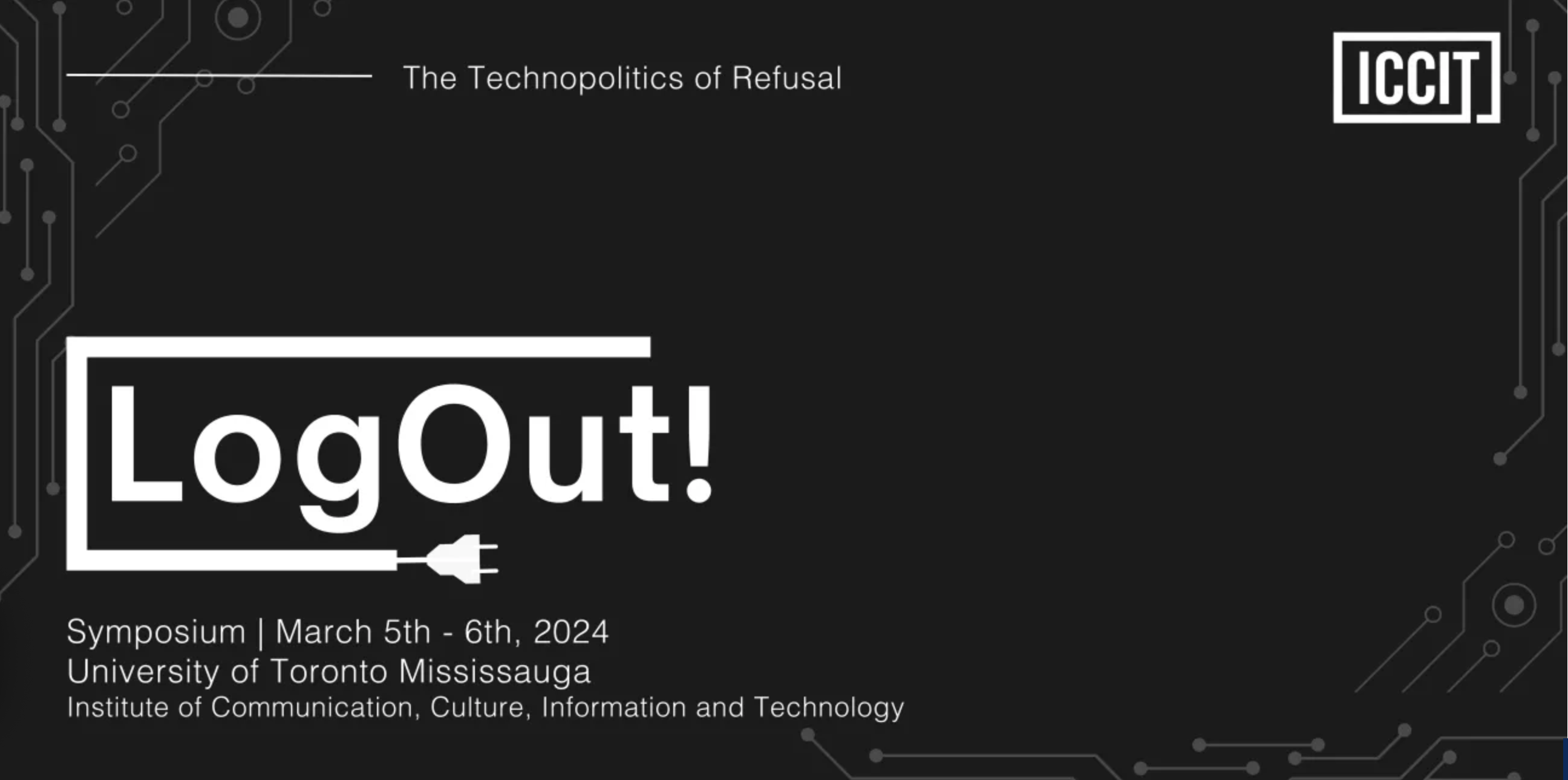
CRCC member Jilly Kay speaks at the international symposium ‘Log Out!’ at the University of Toronto
Jilly Kay – the co-lead of our Media, Memory and History theme and Senior Lecturer in Communication and Media at Loughborough University – was an invited speaker at the University of Toronto on March 6th, 2024.
The symposium, hosted by the Institute of Communication, Culture, Information and Technology (ICCIT), was entitled ‘Log Out! The Technopolitics of Refusal’, and focussed on tactics of refusal within our current era of techno-capitalism. Jilly presented a paper entitled “Andrew Tate for girls”: dark feminine influencers and micro-fascist mirror-worlds. She argued that the technopolitics of the manosphere – and its logics of bio-essentialism, evolutionary theory, political fatalism, and the ‘red pill’ philosophy – are increasingly mirrored by female dating influencers. This research forms part of her larger project on ‘reactionary feminism’ and the rise of the ‘femosphere’ – the loose collection of female-centric online communities and influencers which, she argues, is best understood as a gender-flipped version of the manosphere.
Speakers at the event also included Nicole Charles (University of Toronto), Leopoldina Fortunati (University of Udine), Gavin Mueller (University of Amsterdam), Sarah Sharma (University of Toronto) and Rinaldo Walcott (University of Buffalo), and a number of contributions by the University of Toronto doctoral students.
During the trip to Canada, Jilly also gave a talk at Western University, to staff and students in the Sociology department.
Jilly Kay is a Senior Lecturer in Communication and Media at Loughborough University. She is a co-investigator on the project ‘Re-CARE TV: Reality Television, Working Practices and Duties of Care’ (2023-26), within which she leads the work package on reality television participation. She is co-lead of the Media, Memory and History research theme at Loughborough University, co-convenor of the Media and Gender research group, and co-editor of the European Journal of Cultural Studies.
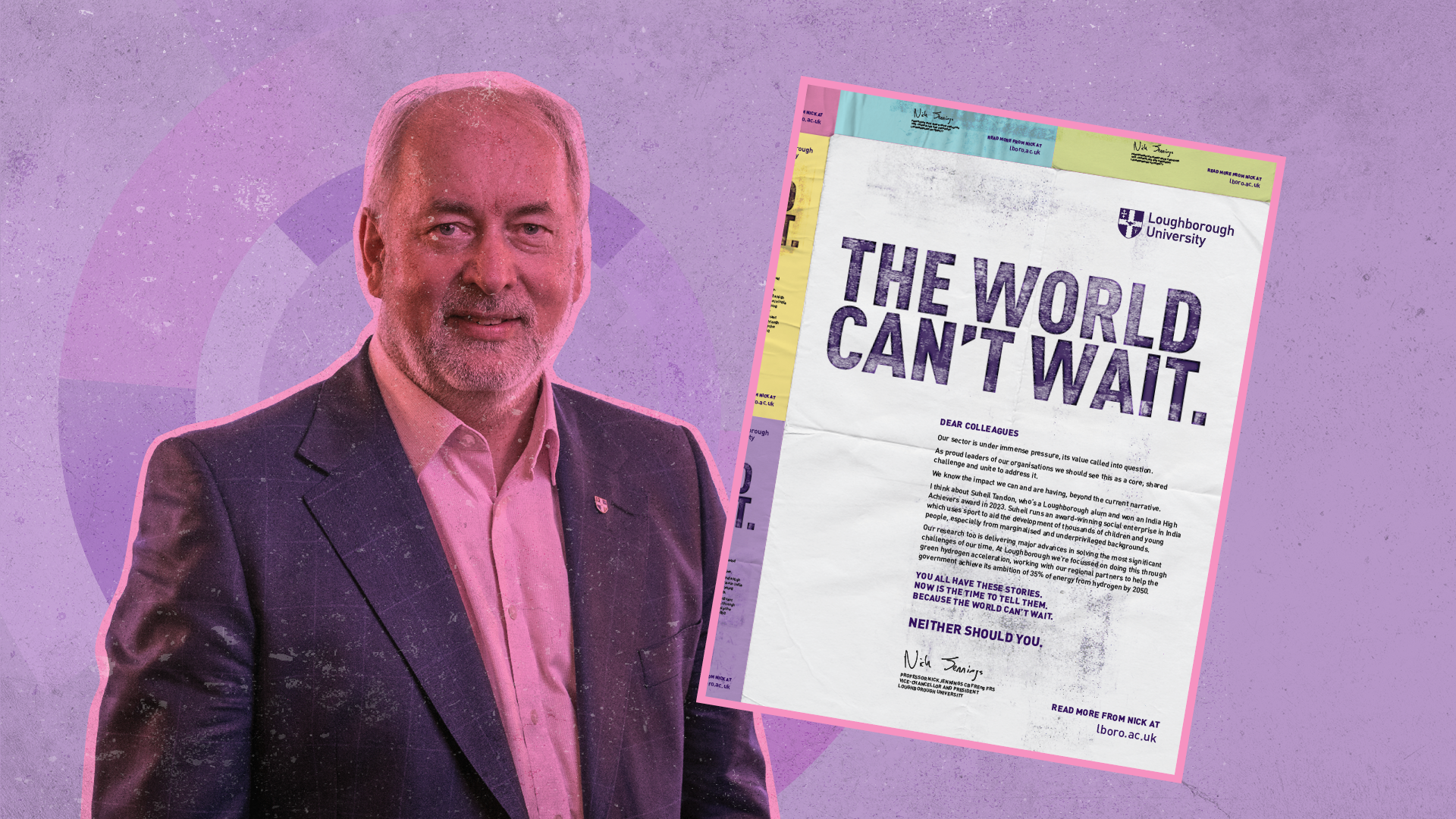
The world can't wait. And neither can we
Professor Nick Jennings has written an open letter to the sector asking that we collectively take a stand and change the narrative that’s currently so damaging to higher education.
He asks the UK’s universities to turn the tide and shape a narrative that’s truly reflective of the wide-ranging impact we have on individuals, regions and countries worldwide.